GORDON MURRAY & One Formula for Life
Joseph Figoni
Just a Panel Beater
Leaning into the Future at LaVine Restorations
Our Racing History: THE DEL MONTE CUP
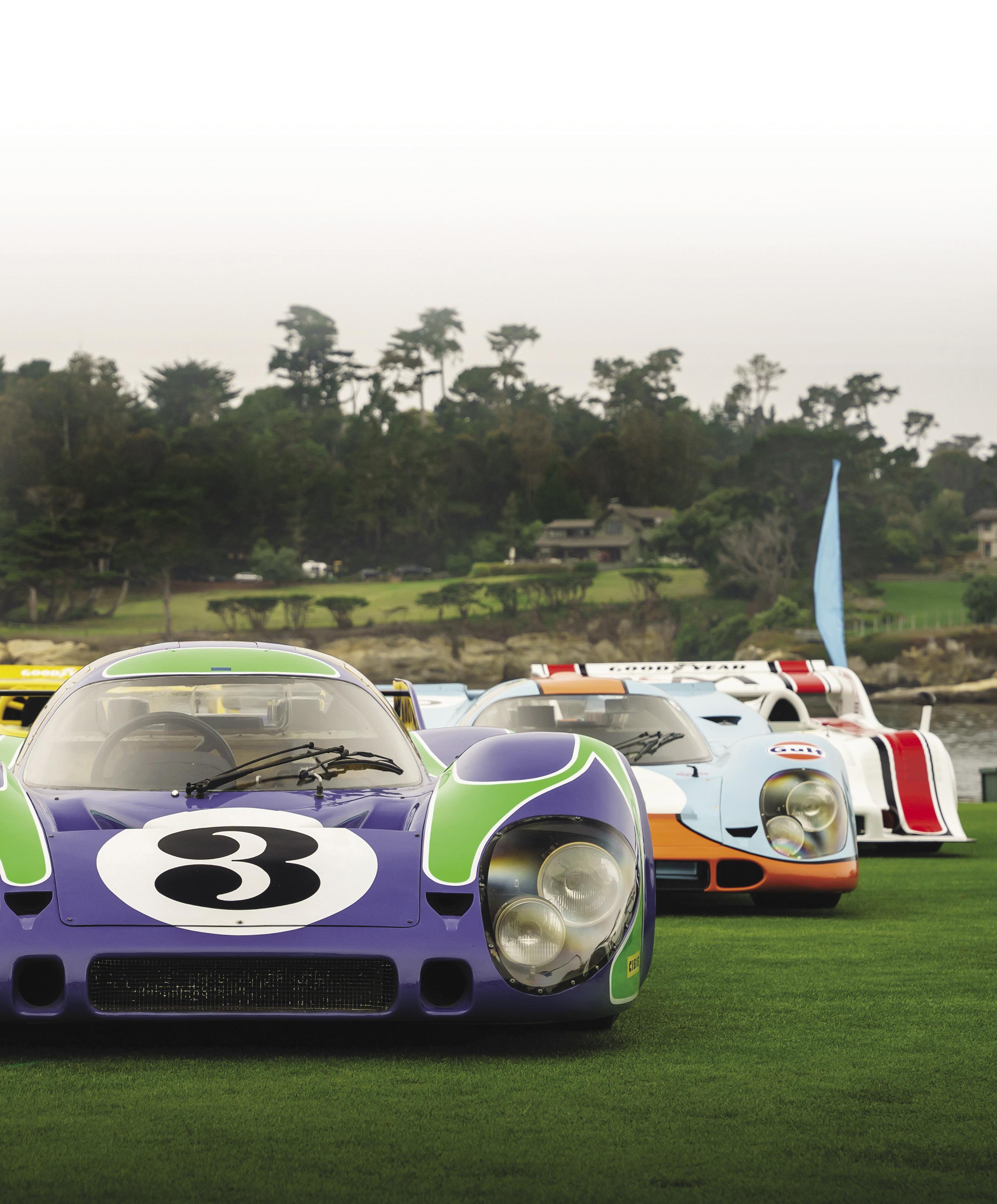
PEBBLE BEACH CONCOURS d ’ELEGANCE ® Celebrating the Life & Legacy of the Automobile
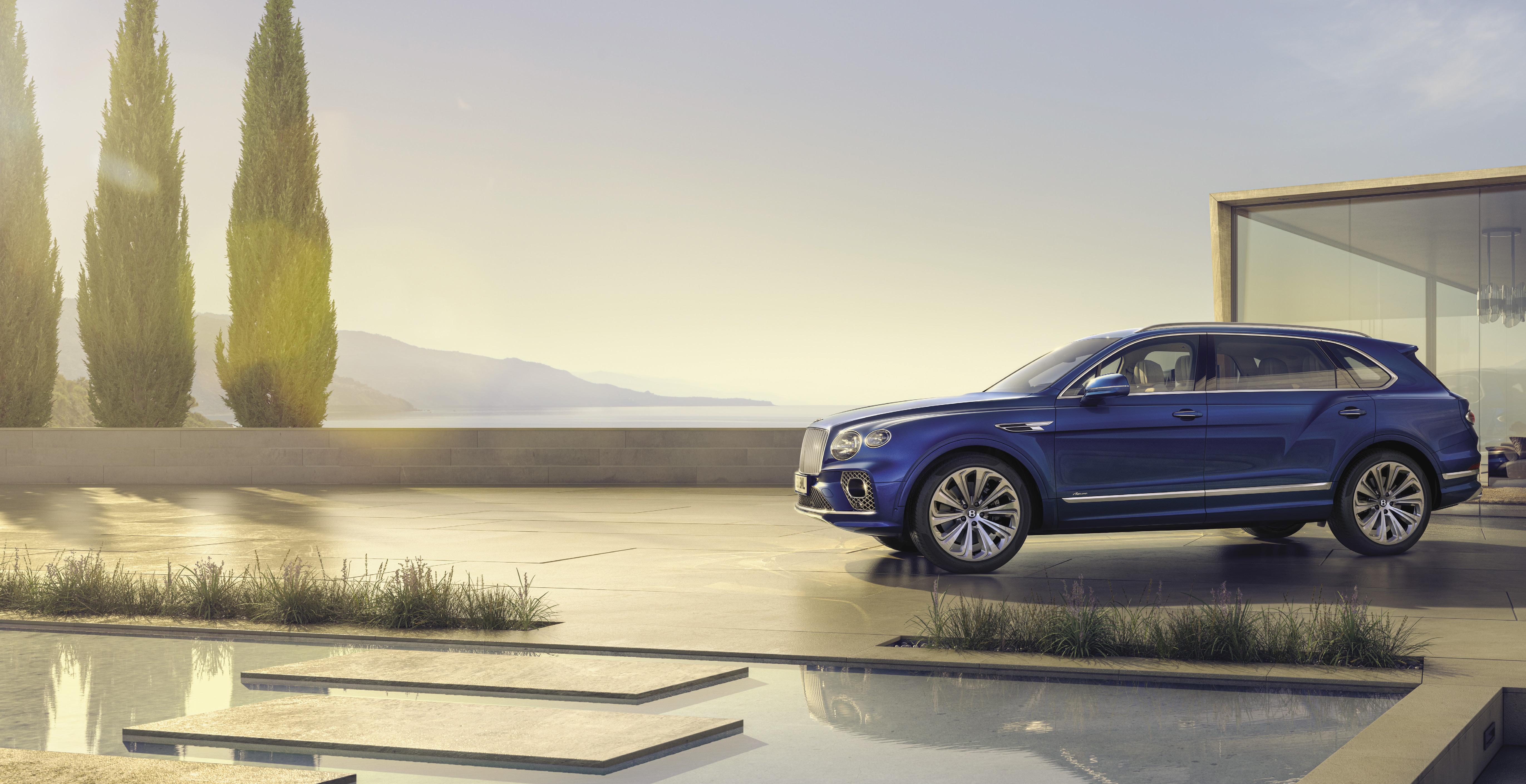

Have higher expectations. And longer ones. New Bentayga Extended Wheelbase. Introducing the world’s most luxurious SUV. Visit BentleyMotors.com/BentaygaEWB The name ‘Bentley’ and the ‘B’ in wings device are registered trademarks. © 2023 Bentley Motors Inc. Model shown: Bentayga Extended Wheelbase.

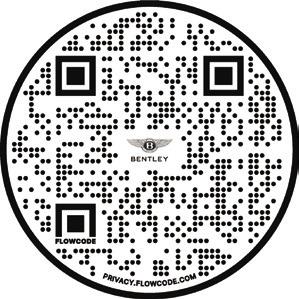
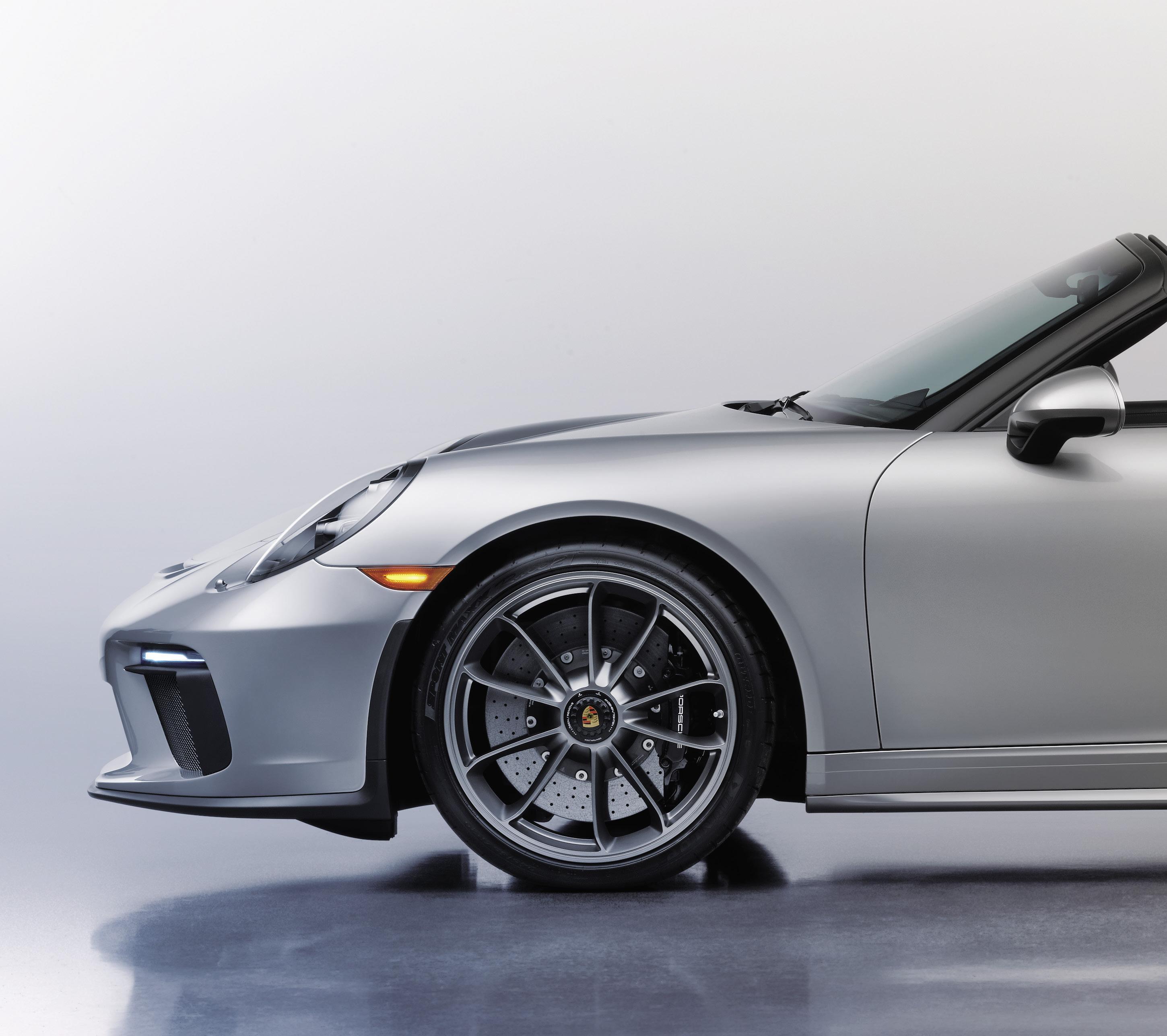


© 2023 MacNeil IP LLC Made in USA 1-800-441-6287 Auto. Home. Pet. Find Your Fit. Like you, WeatherTech’s enthusiasm for cars knows no bounds. At our core lies an unmatched devotion to developing industry-leading protection with American-made craftsmanship. This passion led us to create our bestselling, custom-fit FloorLiner — designed for durable and dependable interior defense. FLOORLINER™ FUELED BY

14 My Life in Cars Gordon Murray: One Formula for Life 26 The Del Monte Cup Racing on the Monterey Peninsula from 1903 to 1907 40 Joseph Figoni Just a Panel Beater 50 All in the Details LaVine Restorations & The Next Generation 60 Behind the Wheel The 1000 Miglia Experience UAE 74 Dream Garage The Read Collection: Where Speed, Art & Engineering Meet 60
CONTENTS Summer 2023 pebblebeachconcours.net Pebble Beach Concours d’Elegance INSIDER 3
The 1000 Miglia UAE winds past Dubai’s iconic Atlantis the Royal resort, located on The Palm.


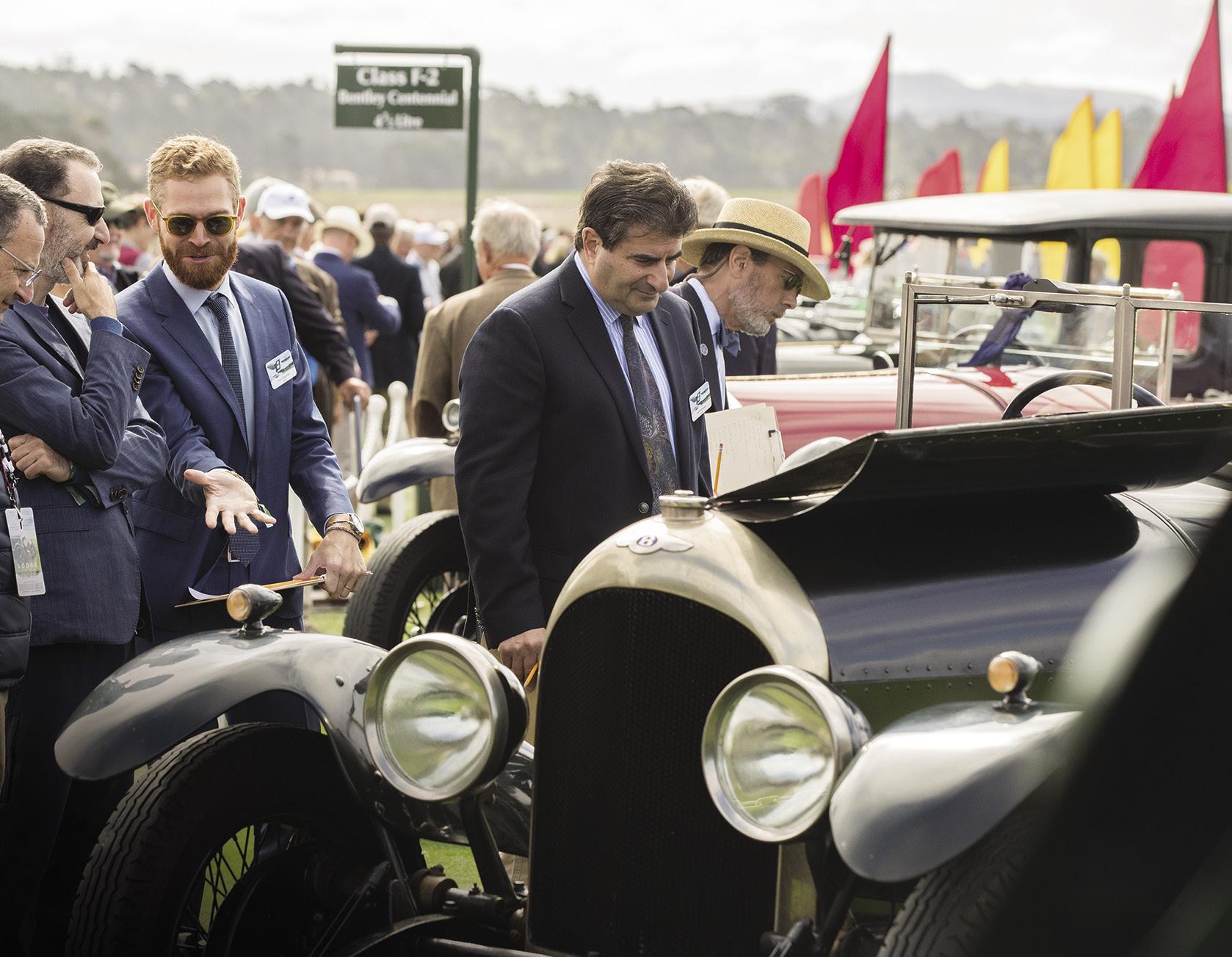
DEPARTMENTS 10 Remembering Don Williams 84 Gooding & Company A Reputation for Record-Setting Results 88 Four for the Road Cars in the Lives of Four Pebble Beach Insiders 92 Social Seen See & Be Seen on the Concours Show Field 100 Time & Place Calendar of Events for 2023 Pebble Beach Automotive Week 102 The Making of a Judge Musings from Our Chief Judge, Chris Bock On the Cover Leading into our 2023 celebration of the 75th anniversary of Porsche, we look back at the 917s that lined the 18th
of Pebble Beach
Links in 2021. 10
fairway
Golf
102
Don Williams drives onto the 1991 show field in a 1939 Mercedes-Benz 540K.
CONTENTS Summer 2023 pebblebeachconcours.net 4 Pebble Beach Concours d’Elegance INSIDER
Our Class Judges at work on the competition field.
Fueling passion for the lifestyle, since 1901.








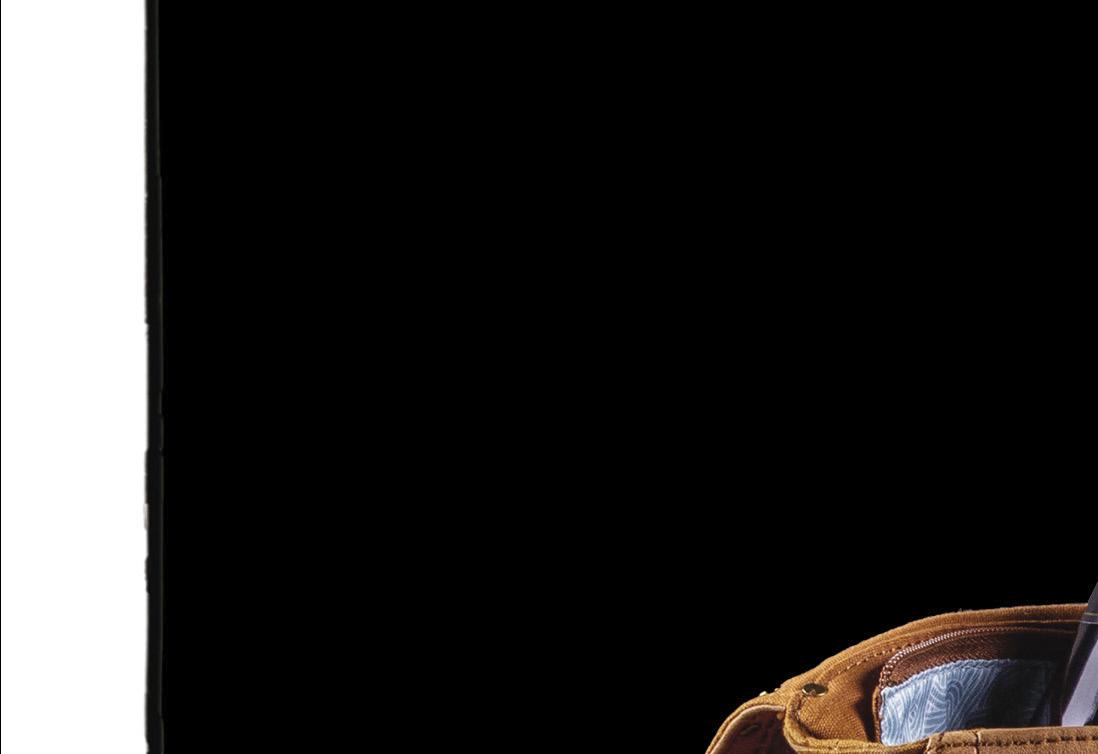
PASSION – This is ultimately the driving force behind who we are. We are more than a brand; we are a team of car enthusiasts with a desire to develop the best car care products possible while creating and fostering authentic connections with others who also share a love for cars.
For free personal car care advice, visit Meguiars.com




Official Car Care of Pebble Beach Concours d’Elegance®








 Pebble Beach,® Pebble Beach Concours d’Elegance,® Pebble Beach Concours d’Elegance® logo are trademarks and service marks of Pebble Beach Company. Used by permission. ©2023 Meguiar’s Inc.
Pebble Beach,® Pebble Beach Concours d’Elegance,® Pebble Beach Concours d’Elegance® logo are trademarks and service marks of Pebble Beach Company. Used by permission. ©2023 Meguiar’s Inc.
On the California Mille this year, Martin and I were happily driving our Mercedes 300 SL roadster up into the mountains—until we weren’t. The temperature outside was surprisingly warm for April, and the temp under the hood was steaming hot. We had to pull over.
Normally we reach for our phones in these situations, and help is quickly on its way, but we were out of cellular range, so there was nothing to do but wait for the trouble truck. Minutes lagged. Time stopped.
I’ve been thinking about time a lot lately. I always seem to have too little of it. Perhaps it is because we are now, once again, building up to the Pebble Beach Concours. (As this magazine went to press we counted fewer than one hundred days to Concours Sunday.) But as a car gal, in general, there is always so much more to read, to learn, to experience. I don’t want to miss a thing! But I know that times change, and some things are gained and some lost along the way.
A quick look at our Concours show field confirms this. There, a notable transition is taking place; prewar cars are gradually making way for more postwar cars.
This year we are celebrating important anniversaries for three primarily postwar marques. Two of them— Lamborghini and McLaren, both of which are celebrating their 60th anniversaries—didn’t even exist when the first Pebble Beach Concours took place in 1950. Professor Ferdinand Porsche was at work long before that, of course,
but the first car to bear his name predated the Concours by just two years. The Porsche marque is now 75.
The first Porsche to be shown at Pebble Beach was a “special” modified by Lou Fageol in 1953. A 356 followed in 1955. A Lamborghini, a 400 GT, first took to our show field in 1966. And a McLaren, the Indy-winning 1972 Sunoco Special, finally made its way to the fairway in 2010. We’re excited to welcome these marques en masse to our show field this year. It will be the first time McLaren is officially celebrated here!

These celebrations push us to reconsider prior limits to the newness of cars on our show field. In the past, for the most part, we’ve limited invitations to cars created prior to the mid-1970s, and we are still likely to focus on those cars moving forward, but we recognize that limit doesn’t make sense for some postwar marques—and as history expands, it should be reconsidered for others, too.
Although I am looking to the future, I want to continue to do all that I can to make sure the past is not forgotten, as I hope you will see in this Insider. I am pleased by the international scope of the articles included here, but I am even more excited by the magazine’s historic range. Articles cover a span of time from the automobile races held at Hotel Del Monte in the early 1900s to the latest creations coming from Gordon Murray Automotive— not to mention the new generations and the tools and techniques being used to bring past into present at LaVine Restorations.
I must admit the article on the Del Monte Cup races, the first of which predated the first Vanderbilt Cup, surprised me more than a bit—and it has astounded a few very knowledgeable experts who have made the antique era their focus. Without strong documentation and ongoing celebration, even important events are too easily forgotten.
I appreciate all the time enthusiasts give to each other in the present, sharing their cars and their collections. I think our hobby is unique in this regard. As you read this, I hope you will take a moment to remember the events, the cars and the people who have gone before us. We’ve lost Don Williams, Susie Moss, and Alex Finigan this spring, and I miss them all. Join me in raising a glass to them.
LETTER FROM THE CHAIRMAN
Sandra Button Chairman
6 Pebble Beach Concours d’Elegance INSIDER
Sandra Button with the Porsche 917s in 2021
FRIDAY AUG 18
SATURDAY AUG 19
LIVE AUCTIONS
NOW INVITING CONSIGNMENTS CONTACT A SPECIALIST TODAY

ONLINE BIDDING AVAILABLE
OFFICIAL AUCTION HOUSE OF THE PEBBLE BEACH CONCOURS D’ELEGANCE®

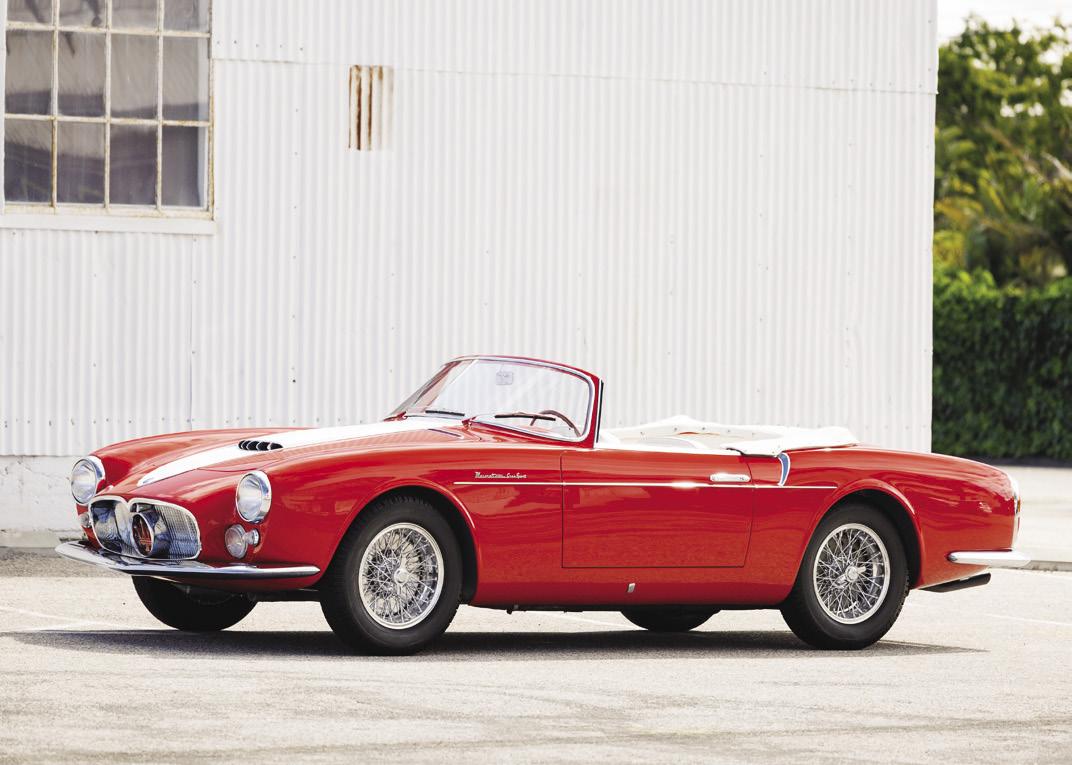
AUCTIONS & PRIVATE BROKERAGE GOODINGCO.COM 310.899.1960 Pebble Beach® and Pebble Beach Concours d’Elegance® are trademarks and service marks of Pebble Beach Company. Used by permission.
1936 HISPANO-SUIZA J12 CABRIOLET I Alec Ulmann Trophy Winner at the 2012 Pebble Beach Concours d’Elegance® Featured in the 1979 James Bond Film Moonraker I Coachwork by Saoutchik I Chassis 14018
1956 MASERATI A6G/54 SPIDER Coachwork by Frua I Chassis 2180
1933 ALFA ROMEO 8C 2300 CABRIOLET First in Class at the 2008 Pebble Beach Concours d’Elegance® Coachwork by Castagna I Chassis 2311214
PUBLISHER
Pebble Beach Company
EDITOR-IN-CHIEF
Sandra Button
MANAGING EDITOR
Kandace Hawkinson
ART DIRECTOR & DESIGN
Nicole Doré
SENIOR EDITOR
Martin E. Button
PROOFREADERS
Tessa Avila
Robert Pruin
PRODUCTION
Chris Benzel Printed
CONTRIBUTING WRITERS
Chris Bock has served as our Chief Judge since 2013 and is also a member of our Car Selection Committee. He attended his first Pebble Beach Concours d’Elegance back in 1963 at the young age of 18, he was first appointed a Class Judge a decade later, and he continued to serve among our Judges over the ensuing decades. He has also served as President and National Head Judge of the Classic Car Club of America and as editor of The Cormorant for The Packard Club.
Kate Constantin has edited Management Week and Business Age and has written for several other publications, including Financial Times and Computer Weekly. She loves and collects classic cars and makes Pebble Beach Concours d’Elegance the hub of her annual calendar.
Winston Goodfellow is an award-winning writer and photographer whose work has appeared in more than 60 magazines in a dozen countries. He has also written eight books and seven monographs, including one about the Read Collection. A former member of our Car Selection Committee, Winston now serves regularly as one of our Chief Class Judges.
Kandace Hawkinson oversees Content and Communications for the Pebble Beach Concours d’Elegance, where she has served in various roles since 1997 while also managing other writing and editing projects. She previously worked for a decade as an editor at HarperCollins Publishers and was a reporter on several newspapers, including the Milwaukee Journal.
Neal Hotelling has written extensively on Monterey history for more than three decades. His first book, Pebble Beach Golf Links: The Official History (1999), was awarded Golf Book of the Year by the International Network of Golf. For the past four years he has written the weekly History Beat column for the Carmel Pine Cone newspaper.
Peter M. Larsen is a historian of the great French marques and coachbuilders, about which he has written several books with Ben Erickson. Joseph Figoni: Volume I, Alfa-Romeo, was recently published. The next volume will focus on Bugattis by Figoni. Peter Larsen serves on the Selection Committee of the Pebble Beach Concours d’Elegance and he also judges at the Concours.
CONTRIBUTING PHOTOGRAPHERS & PHOTO ARCHIVES
Pebble Beach Company Lagorio Archives, with particular thanks for the work of photographers Julian P. Graham and William C. Brooks
Front Cover: Kimball Studios
Frontmatter: René Official Photographer (officialph.com, @ph.rene) courtesy of Octanium Experiences (octanium.ae, @octanium), Kimball Studios, Steve Snyder
Sandra Button: Kimball Studios
Don Williams Tribute: William C. Brooks courtesy of Pebble Beach Company Lagorio Archives, Kimball Studios, Glenn Mounger, Douglass Sandberg
Gordon Murray: Gordon Murray Archive, Gordon Murray Automotive, Alain Benainous/Gamma-Rapho via Getty Images, Bernard Cahier/Getty Images, Horizon International Images/ Alamy Stock Photo, PA Images/Alamy Stock Photo
The Del Monte Cup: Pebble Beach Company Lagorio Archives, with special thanks to Julian P. Graham for the track overview, Collection of Trotter Galleries, Neal Hotelling Archive

Joseph Figoni: Archives Claude Figoni, Peter M. Larsen Archive
LaVine Restorations: Grant Beachy
Photo, LaVine Restorations Archive, Bob Brown, Steve Burton, Robb Hallock
The UAE Mille Miglia: René Official Photographer (officialph.com, @ph.rene) courtesy of Octanium Experiences (octanium.ae, @octanium), Kate Constantin
Read Collection: Read Racing Archive, Winston Goodfellow, Kandace Hawkinson, Kimball Studios, Douglas Sandberg, UltimateCarPage.com
Gooding & Company: Gooding & Company
Four for the Road: Colin Feichtmeir, Gary Goeringer, Kimball Studios, Julie Summerville
Social Seen: Dima Barsky Photography, Sherman Chu, Kimball Studios
Chris Bock: Chris Bock Archive, Bob Brown, Steve Burton, Sherman Chu, Steven A. Gann, Kimball Studios
Pebble
Copyright © 2023
All rights reserved.
Beach
Pebble Beach Resorts
Pebble Beach
Concours d’Elegance
Pebble Beach
Concours™
Pebble Beach
Tour d’Elegance , Pebble Beach RetroAuto , Pebble Beach Classic Car Forum , Pebble Beach® Automotive Week, Pebble Beach Golf Links®, The Hay Golf Course, The Lodge at Pebble Beach™, The Inn at Spanish Bay™, The Links at Spanish Bay™, Spanish Bay®, Casa Palmero®, 17-Mile Drive®, The Lone Cypress™ Stillwater Cove™ and their respective underlying images, are trademarks, service marks and trade dress of Pebble Beach Company.
Pebble Beach Company.
in Canada
by Hemlock Printers
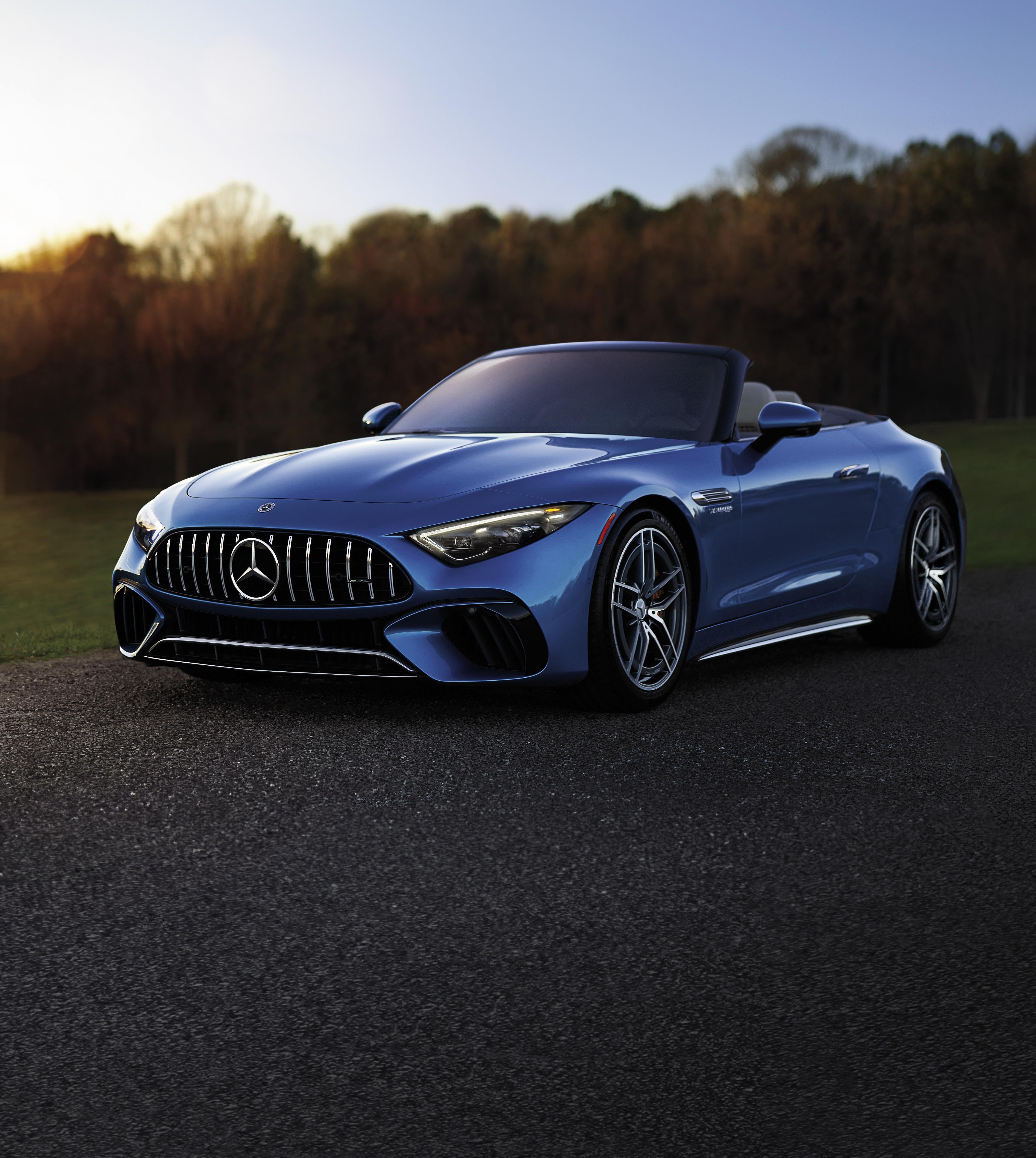
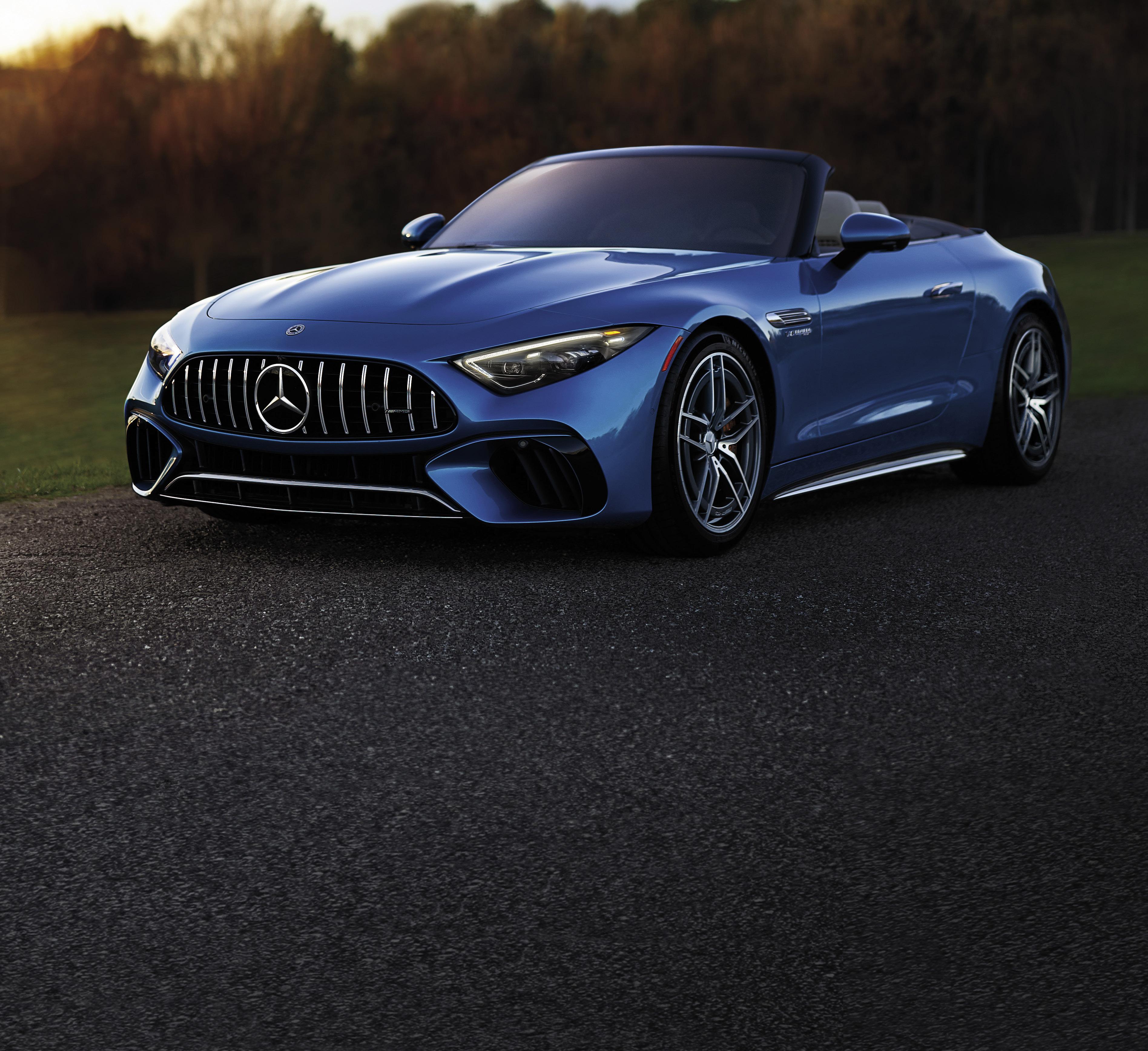
Learn more at MBUSA.com/AMG-SL It roars. 2023 Mercedes-AMG SL55 shown in MANUFAKTUR Hyper Blue metallic paint with optional equipment. Equipment availability may vary. ©2023 Mercedes-Benz USA, LLC For more information, call 1-800-FOR-MERCEDES, or visit MBUSA.com.
Remembering DON WILLIAMS
For decades Don Williams was always a quick call away. He was there whenever we needed a bit of insight or advice— or a car. Don not only lived through but spurred much of the growth in car collecting since the early 1970s, so he knew or could make a well-educated guess as to the “who,” “what,” “where,” and “why” behind many great cars. More importantly, he could see beyond the details to the big picture.
But on this occasion, as we were building toward our 70th celebration in 2021, it was Don who placed a call to us, and he had a request: Could we cull through our archives for any images of him with Lorin & Dolores Tryon, Jules “J.” Heumann, Bob Cole, Bob Atwell, Arturo Keller . . . the list was long.
Don was approaching his own grand milestone—it would be his 50th consecutive year of showing at least one car (and often many more) at the Pebble Beach Concours— and he was in a celebratory mood. He wanted to mark the occasion by acknowledging the many friends he had made here, remembering those who had passed on and thanking those who remained.
“The cars are significant,” he would later write, “but the memories of all the wonderful people we have met and the lasting friendships that have been forged by participating in this great event over the last five decades are priceless.”
Don’s focus on people served him well over his long life in the classic car world.

“When I joined the Pebble Beach Concours team in the mid-1980s, Don was among the first to welcome me,” recalls Concours Chairman Sandra Button. “He offered a ready smile, genuine warmth, and a willingness to share his knowledge and experience. He was a true friend—and he taught me the value of that. Friendship is the glue that connects the car world globally.
“The word ‘friend’ doesn’t seem like a big enough word to describe Don and his influence on the whole of the collector car world. But it describes exactly what Don was: a friend to all.”
Don was not a car guy in his youth. At age 20, he was a self-described “Navy brat” who had rashly quit a job in an aircraft manufacturing plant then talked his way into work at an electronics firm, despite lacking any related knowledge or skill. His new employers, Ilmars Kersels and
10 Pebble Beach Concours d’Elegance INSIDER
Don Williams briefly parks the only 1934 Duesenberg J Weymann Tapertail Speedster in front of The Lodge at Pebble Beach.
Sam Bergman, soon realized that lack, but they admired Don’s brash confidence and they asked him to open a classic car store on La Cienega Boulevard in Los Angeles.
To be in the classic car business, Don knew he had to own at least one such car, so he bought a Packard for $600— then sold it for $1,800.
Don had discovered his talent: a genial, friendly fellow who could engage anyone on any level, he had a knack for closing a deal. He was a born salesman. He also had discovered his passion: The deal was great, but the cars were even more compelling, so he immersed himself in Motor Trend and Automobile Quarterly, paperclipping the pages about cars he wanted to find.
“I decided that I wanted to touch every great car in the world,” said Don. “I knew that I would never be able to afford to keep them, but I lusted to experience them.” New acquisitions and sales followed quickly, and soon the paper clips were of two tones—silver for those he still desired and gold for those that had passed through his hands.
When his mentors tired of the car business, Don stayed in it, starting his own dealership, hosting the first classic car auction in California, helping to found Barrett-Jackson in Arizona, then partnering with Ken Behring to create the
Blackhawk Collection and Blackhawk Museum. Blackhawk would remain his home base from then on, but Don would go on to connect with and encourage (or help create) communities of car enthusiasts in Europe, Japan, China and the Middle East.
Don was the first person to sell a classic car—a 1931 Figoni-bodied Duesenberg—for more than $1 million, and over time, his sales totaled over $1 billion.

Just a few years into his automotive journey, in the early 1970s, Don met Lorin Tryon, who had just accepted a role as Co-Chairman of the Pebble Beach Concours d’Elegance.

It was Lorin who invited Don to show a car at Pebble Beach. Don first competed at the Pebble Beach Concours with a 1932 Alfa Romeo 1750 Zagato Spider that garnered the Gwenn Graham Trophy for Most Elegant Car—then second only to Best of Show. “What a way to get suckered into attending the show forever,” Don used to joke.
As Don sought, found and restored great cars, he committed to debut them at Pebble Beach. Within a decade, particularly once he settled at Blackhawk, a mere two-hour drive away from Pebble Beach, Don was more than a regular at the event. He was a much-relied-upon resource.
“The cars are significant but the memories of all the wonderful people we have met and the lasting friendships that have been forged by participating in this great event over the last five decades are priceless.” – DON WILLIAMS
Above: Dolores Tryon and Jules “J.” Heumann present Don with the first Lorin Tryon Trophy, in 1999.
Pebble Beach Concours d’Elegance INSIDER 11
Left: Don’s first competitive entry at Pebble Beach, a 1932 Alfa Romeo 1750 Zagato Roadster, earned the Gwenn Graham Trophy for Most Elegant Car in 1973.
“When Lorin Tryon and J. Heumann were trying to build the Pebble Beach Concours into a more relevant and international show, Don was the go-to guy who kept coming up with incredible European Classics year after year,” Chief Judge Chris Bock told Ken Gross, writing for Hagerty. “They really counted on Don to fill the field with the ‘right stuff.’ . . . His devotion to Lorin and J. and the Concours was without bounds. He helped the show become what it is today.”
Even in more recent years, when classes were missing one particular element, or individual cars failed at the last minute, organizers turned to Don for help. He usually had a car that was not only suitable but spectacular—and he was always willing to bring it. He often had multiple cars on the field in any given year, and over time, he achieved a record that is likely to go unbroken—that of showing more cars at Pebble Beach than anyone else. (Arturo Keller is second in this regard and the Nethercutt Collection is third.)
Don was involved in bringing to Pebble Beach some historic “firsts,” as with the first-ever gathering of all three Alfa Romeo BATs, which were paired with their creator, Nuccio Bertone, in 1989. “I think the three BATS as a group are the best example I’ve ever seen of artistic exercise over a period of time,” said Don.
Don’s magnetic charm and his graciousness as a host were also instrumental in creating what we once called Don Patrol (now Dawn Patrol presented by Hagerty). Initially, Don sought to drive the first car on our show field each year, but he quickly discovered that Bob Atwell was even more determined to do the same: “Bob went by my room at 3:30 in the morning and raced his engine just to let me know he was out there and I never would beat him. That is what Pebble is about—that type of camaraderie.” Good naturedly, Don pivoted; he pulled a chair to the entry point
to watch the cars roll in . . . and others joined him. Soon Don was serving coffee to family, friends and anyone else who was willing to rise at dawn to watch that early morning parade of elegance.
In 1990, the same year the first Pebble Beach Auction took place, Don brought several cars to Peter Hay Hill for the first on-site Blackhawk Exposition—an event that he repeated for a quarter-century.
He would later note that his collection then had “nothing but prewar cars in it,” but by 2013, it had undergone a complete transition: with but one exception, it was entirely postwar. Don’s finger was forever on the pulse of the hobby.
When pressed, Don often said his favorite car was the “Countess,” a 1933 Rolls-Royce Phantom II designed by Howard “Dutch” Darrin for New York socialite Countess Dorothy di Frasso. It was Darrin who taught Don how to assess the elegance of a car using the “360-degree test,” walking around it slowly and viewing it from every angle. And when Don showed the Countess at the 1982 Pebble Beach Concours, it won the Lucius Beebe Trophy.
Packards were also an ongoing favorite, stemming from his first sale. Don’s participation at Pebble Beach didn’t end with his 50th celebration in 2021; last year, he shared a 1938 Packard Twelve Kellner Torpedo Cabriolet. And this year, his wife, Janet, plans to continue the tradition, sharing another Packard in his name.


Don never quite succeeded in taking home the top trophy at the Pebble Beach Concours: “Winning a prize at Pebble is the crowning achievement of any great car. Best of Show? Only a dream for most of us—but still, a great dream.”
Nonetheless, in our book, Don himself was the absolute best.
Sandra Button presents Don with one of his many ribbons in 2011.
12 Pebble Beach Concours d’Elegance INSIDER
Don’s favorite car, “The Countess,” a 1933 Rolls-Royce Phantom II takes to the show field in 1982.

MasterDynamic.com
 GORDON MURRAY AS DESIGNER, ENGINEER, RACER . . . AND ALMOST ROCK STAR!
Professor Gordon Murray CBE (Commander of the Order of the British Empire) stands amidst some of his creations.
GORDON MURRAY AS DESIGNER, ENGINEER, RACER . . . AND ALMOST ROCK STAR!
Professor Gordon Murray CBE (Commander of the Order of the British Empire) stands amidst some of his creations.
FORMULA ONE
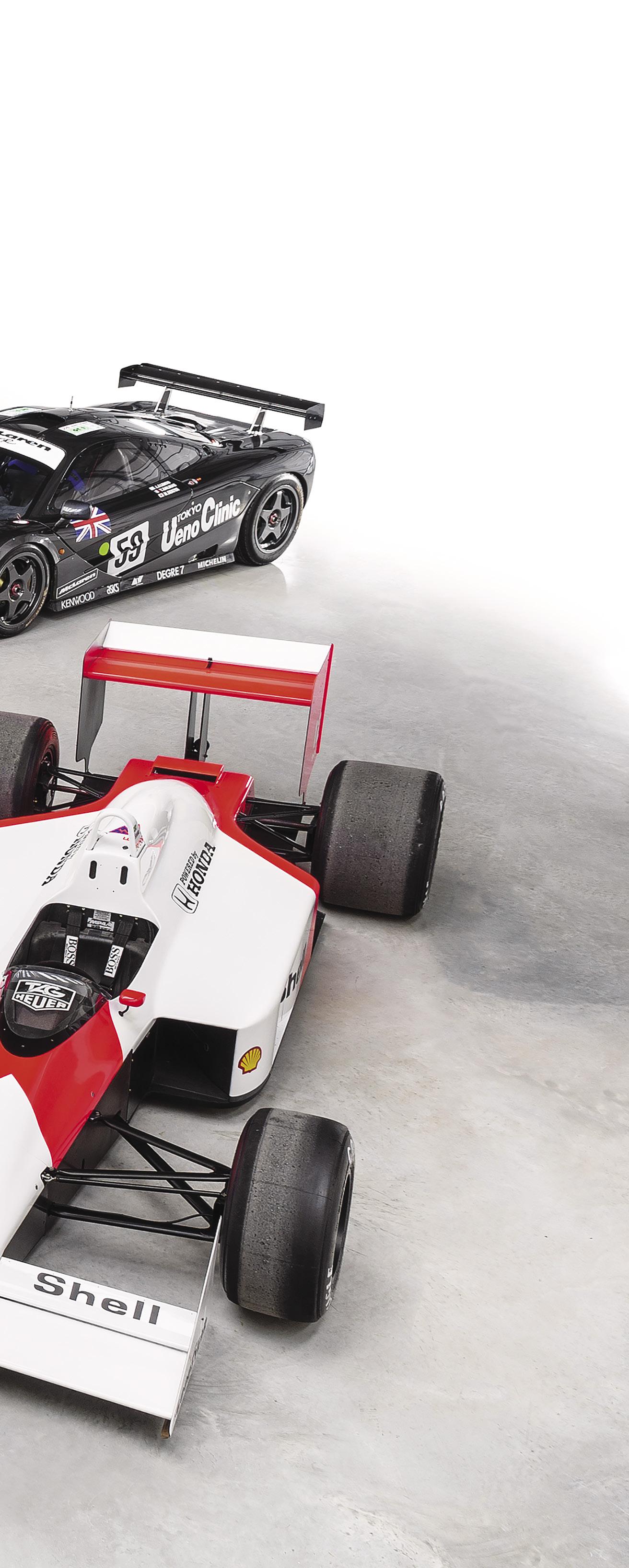 By Kate Constantin
By Kate Constantin
FOR LIFE
INSIDER 15
Pebble Beach Concours d’Elegance
GORDON MURRAY
Gordon Murray has done a lot of complicated things in his life. He raced his own prototype in South Africa, designed F1 cars for Brabham capturing 22 Grand Prix wins and two championships, ran McLaren’s design team where his F1 creations garnered three more championships—and then designed and built the iconic McLaren F1 supercar that won Le Mans in 1995. More recently he launched Gordon Murray Automotive.
As complex as these achievements sound, everything Murray does is ruled by one formula: simplicity plus elegance.
Contrary to the stereotype of an engineer, Gordon is no stuffed shirt; in fact, he’s more of a Hawaiian shirt kind of guy. And he is a regular judge at the Pebble Beach Concours d’Elegance, assessing the technical achievements of collector cars.
This year we are celebrating 60 years of McLaren, and it seemed like the perfect opportunity to catch up with Gordon at his home in Surrey, England, to get the inside track on Gordon’s life in cars.
Kate Constantin: How does a kid from a workingclass family in South Africa, with no university education, become the chief designer at McLaren and design three cars in three years, winning three Championships?
Gordon: It was a long and winding road. I had spent 17 years at Brabham before I went to McLaren, and I had already won 22 Grand Prix races and two World Championships with 20 different iterations of the Brabham race car. I had started to design my own car at age 16, so
Below: Gordon assembled the IGA Ford T1, the first car he both built and raced, in his backyard.
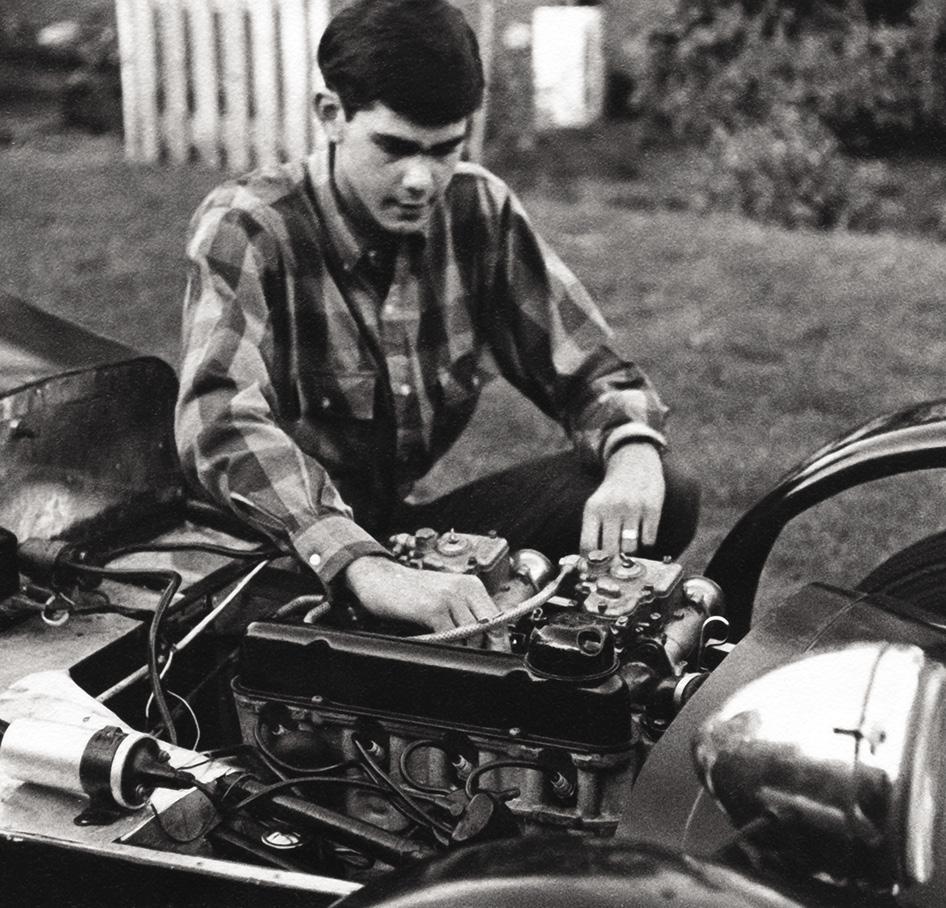
I’d had 24 years’ experience before I was hunted by Ron Dennis [founder, owner, and CEO at McLaren].
Did you know from an early age that you wanted to design race cars?
As a kid I wanted to be either a race car driver or a rock star. When I was about six, my dad—a motor mechanic— began taking me to race events in South Africa, where I grew up. In the 1940s and 50s they had hill climbs, hot rod races, and a poor man’s Monaco where they’d race along the beachfront and through the houses. It was such a thrill. Then back at home I would build race cars, submarines, and rocket ships out of my mum’s furniture and blankets, and kids in the neighborhood would come and pay for a “ride.” I was forever building stuff. I guess it was in the cards.
How did you start designing and engineering motorcars?
I started out working on a 50 cc motorbike when I was 16. My friends and I used to go surfing every day before and after school, but once I could have a motorbike, I dropped surfing. I was very single-minded in those days—still am. My parents couldn’t afford to send me to university as we were very working class—my mum, my dad, my brother, and I all slept in one bedroom in a small apartment in Durban. I had no money, but I wanted to go racing, so to
16 Pebble Beach Concours d’Elegance INSIDER
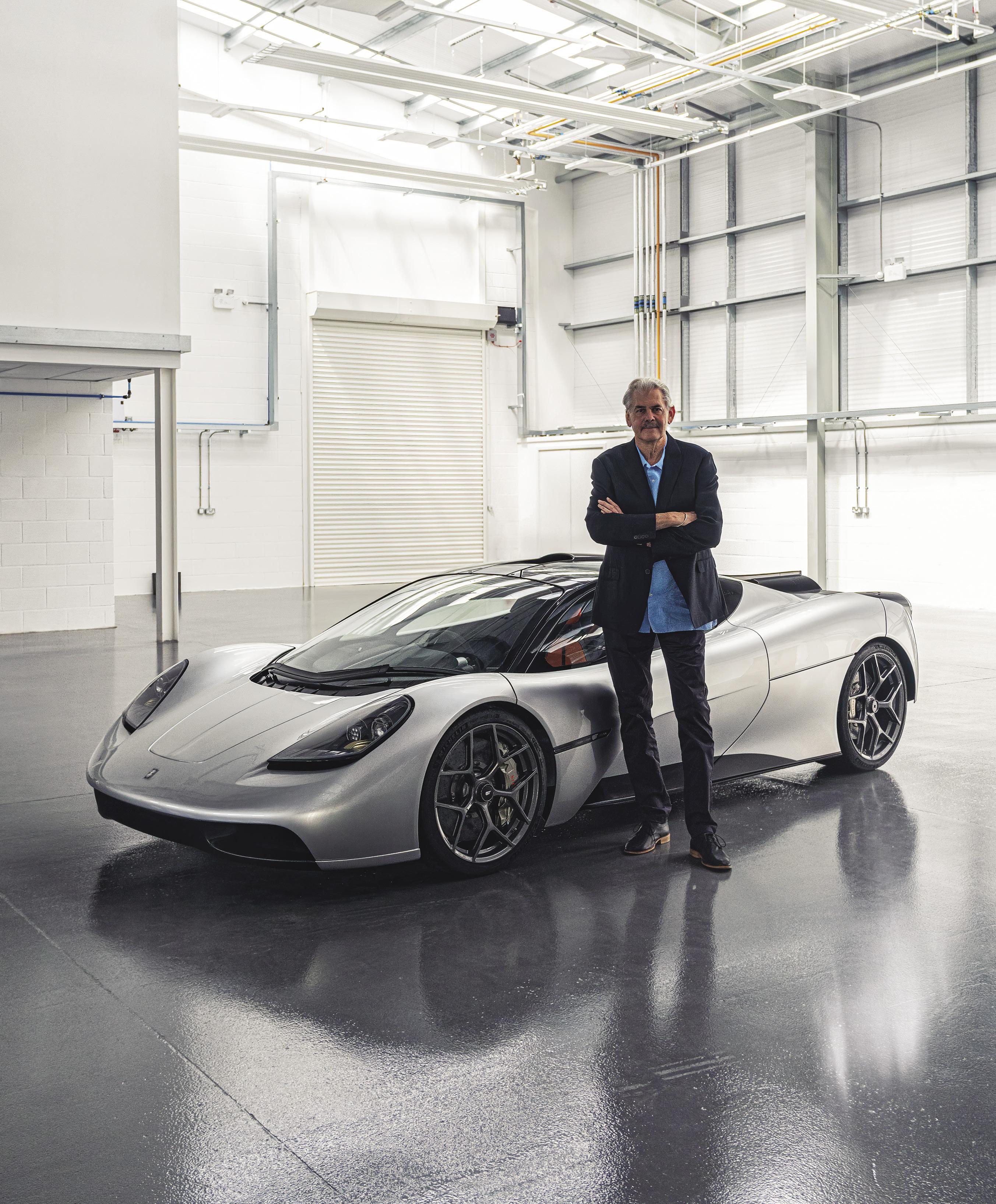 Gordon Murray Automotive introduced the new T.50 in 2021.
Gordon Murray Automotive introduced the new T.50 in 2021.
make some money I took a five-year apprenticeship at a factory that designed machinery to make metal castings, metal drums, and the like. It was a great foundation, as we had to cost our own jobs, then go down to the workshop and commission our own designs. I attended college three nights a week and got my diploma in engineering. Honestly, I think if I’d have gone to university and taken a degree, I wouldn’t be where I am today. That practical experience was priceless. In my spare time, by age 18, I had built my first car. It cost £200.
Did you go racing?
Yes. I designed and built the seats, the steering wheel, and the engine, and I welded everything myself. It was super light and fast, and I had some success in local events. I was hooked. But by that time, I knew I wasn’t going to be a race car driver. I only had to look in the mirror—I was 6'4"! I knew that I would be a designer and engineer.
How did you make the move from South Africa to the UK?
It was the 60s and I had two loves: race car design and music. At the time England was the center of the music universe and the hub of motor racing, so it seemed pretty obvious that I had to go and try my luck in the UK. I was 22 and I sold everything, said a tearful goodbye to my parents, and bought a one-way ticket on a converted cargo ship to London. It was a total rust bucket and broke down
in the Bay of Biscay in a force nine storm. They made an announcement asking if an engineer was on board, so I went down to the engine room, but one of the diesel engines had a split injector and there was nothing we could do. We limped into England on one engine. It took us a month, but it was a hell of an adventure.
Was England a culture shock?
You could say that. I arrived from subtropical South Africa in a short-sleeved shirt and England was under six inches of snow. I interviewed with Lotus (Colin Chapman, their design engineer, was my childhood idol), and was offered a job with Ford—but it sounded boring, so I refused it. Eventually I heard that Brabham’s F1 team was looking for a designer, so I knocked on their door and got an interview with Ron Tauranac, chief engineer. Ron was very practical and not at all interested in my academics. He wanted to know all the details about the car I had built and the races I had won in South Africa. I got the job.
That was the beginning of a great career with
Brabham. How did you go from junior to chief designer in just two years?
To begin with, I was one of five designers working under Ron. Then in 1971, race car driver Alain de Cadenet approached me; he wanted me to leave Brabham and design a car for an all-out attack on Le Mans with a
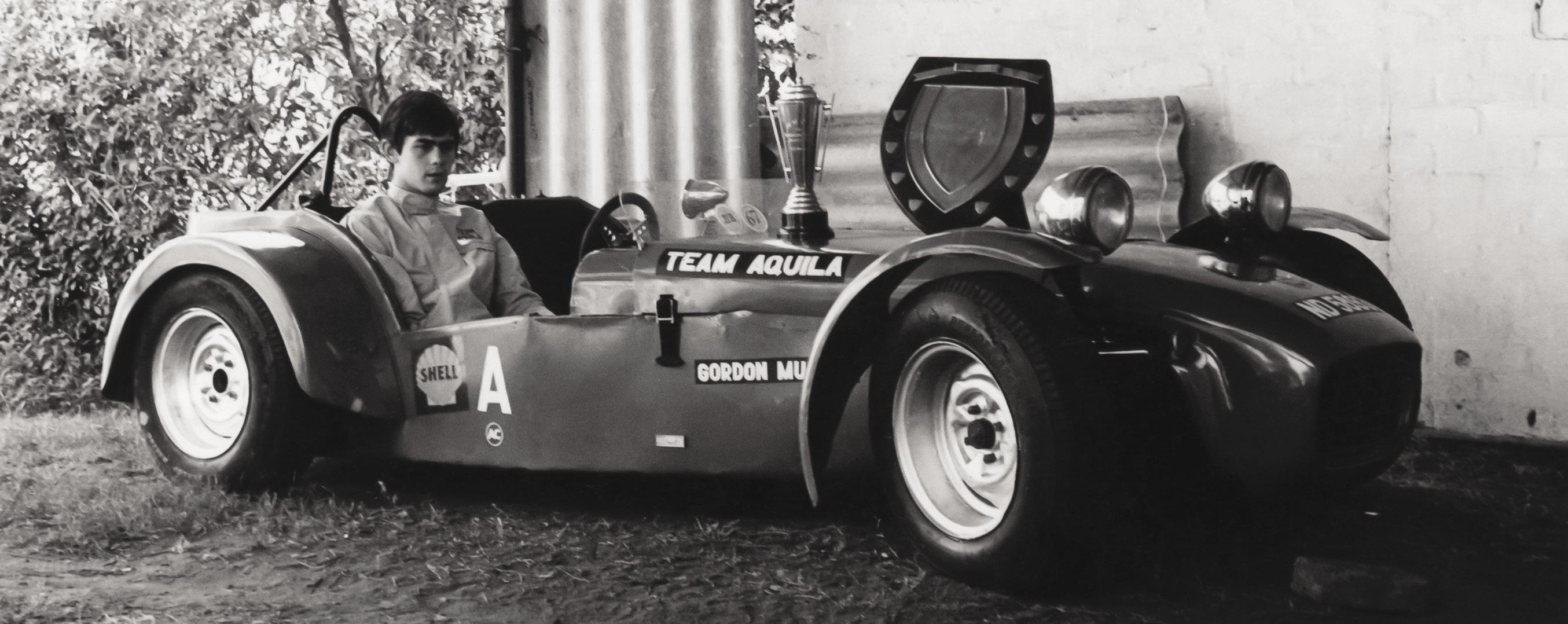
GORDON MURRAY
18 Pebble Beach Concours d’Elegance INSIDER
Gordon’s IGA Ford placed first among sports cars and took home the “floating shield” at the final Burman Drive hill climb in 1967.
British team. Ron was retiring from Brabham by then and Bernie Ecclestone had bought the company—it all looked a bit of a mess—so I agreed to sign on with Alain. Then Bernie turns up and says, “I’m tired of being at the back of the group with no points, so I have fired the other four designers. You are the chief designer, and I want a brandnew Grand Prix car for next year.” I told him I had shaken hands on a deal with Alain and he said, “That’s okay. You can moonlight that job while you do this one!”
That’s what I did.
How on earth did you do both jobs at the same time?
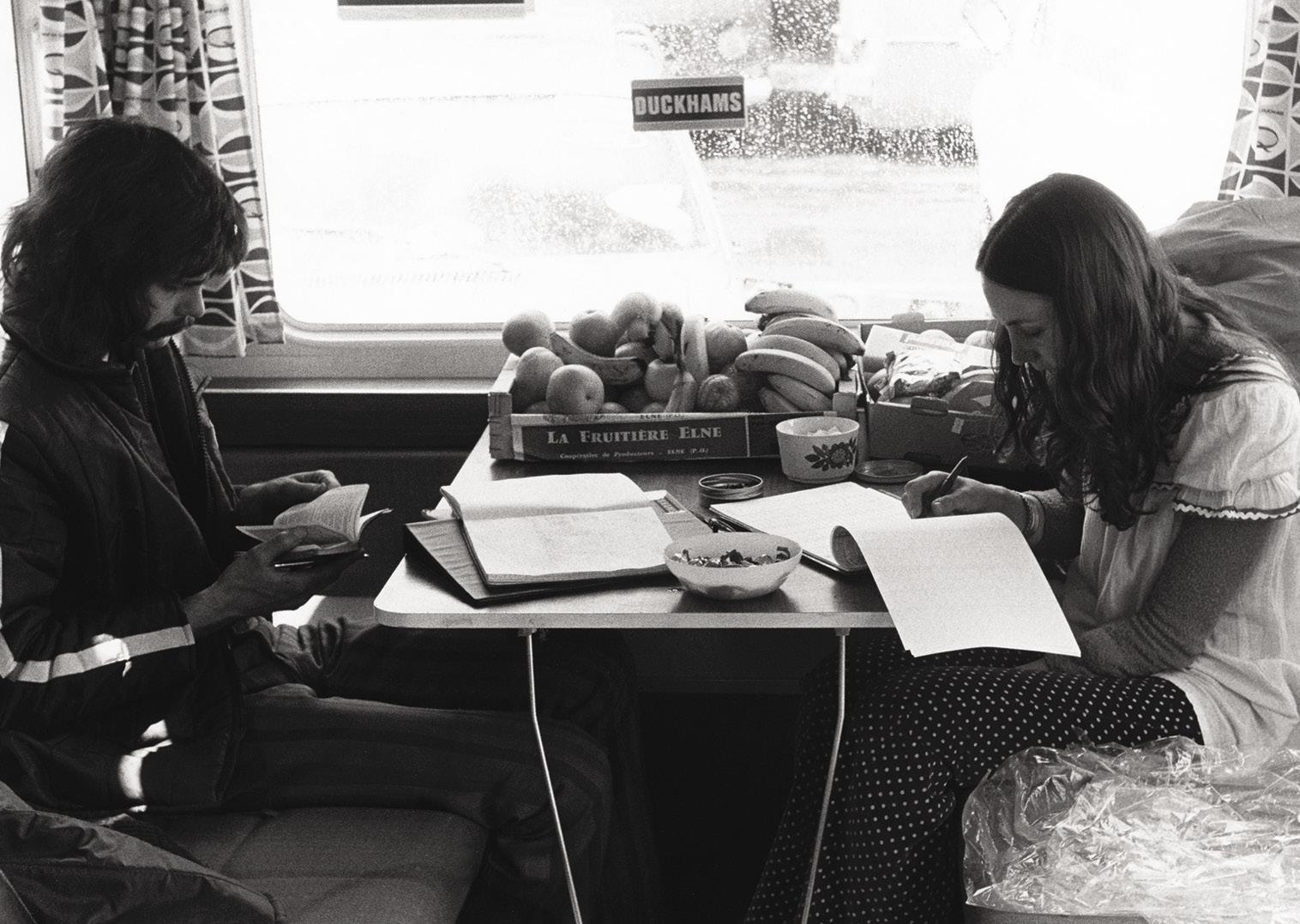
It was crazy! I had just gotten married, and my wife and I rented a tiny apartment without any heating. We had ice on the walls in the morning. I would go to Brabham at 7 a.m., work on the F1 car until 8 at night, go home, eat dinner, and work on the Le Mans car at home until 3 a.m. Some nights I got two hours sleep. I was driven.
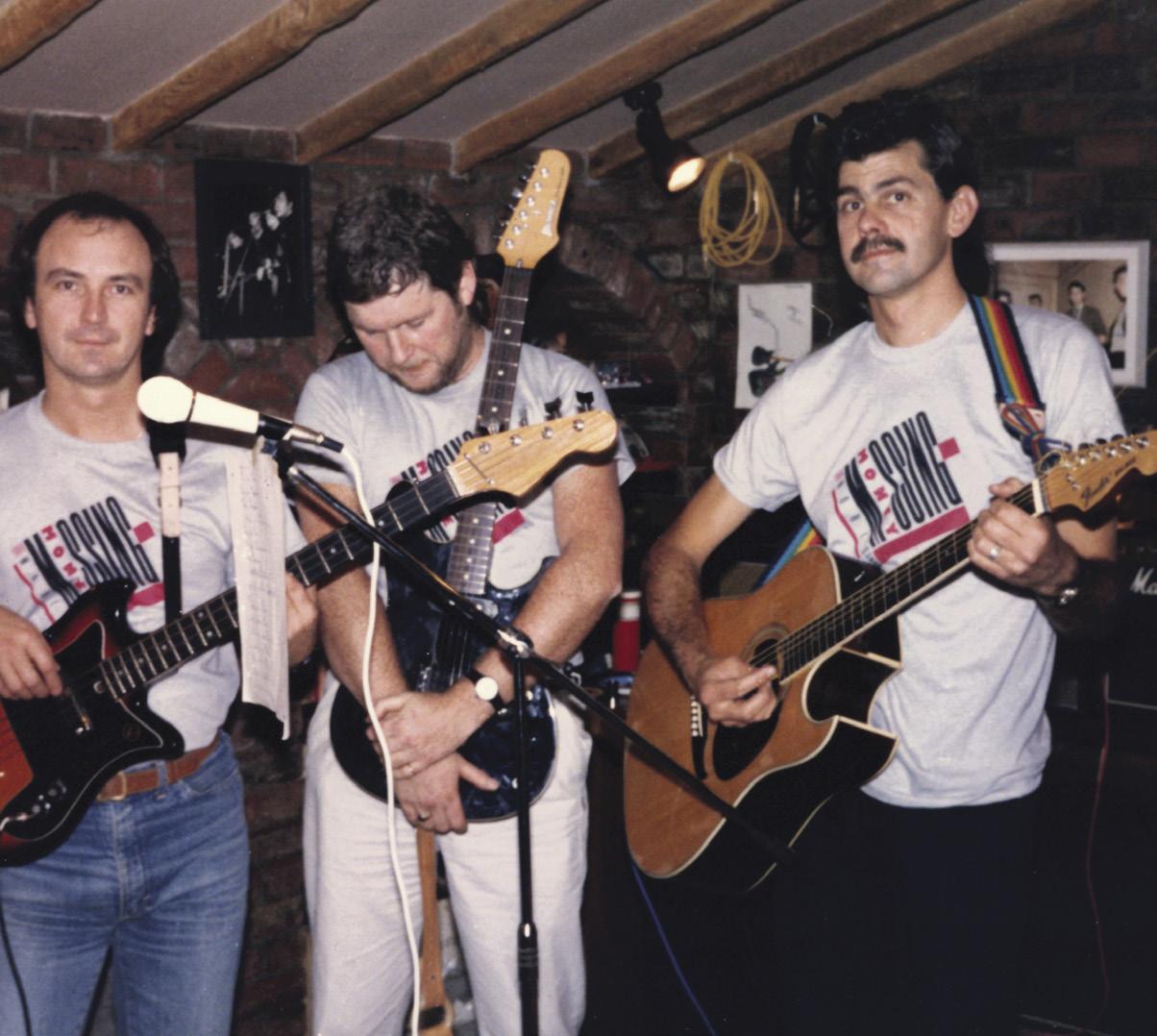
And yet you succeeded in both projects.
Yes. The Le Mans car did well. We used a McLaren V8 [a Ford Cosworth DFV 3.0 L V8] engine with Brabham BT33 components. We entered it under the Duckham’s Oil Motor Racing banner, driven by de Cadenet and Chris Craft. It started 11th on the grid, ran much of the race in 4th place, but due to a crash ended in 12th overall.
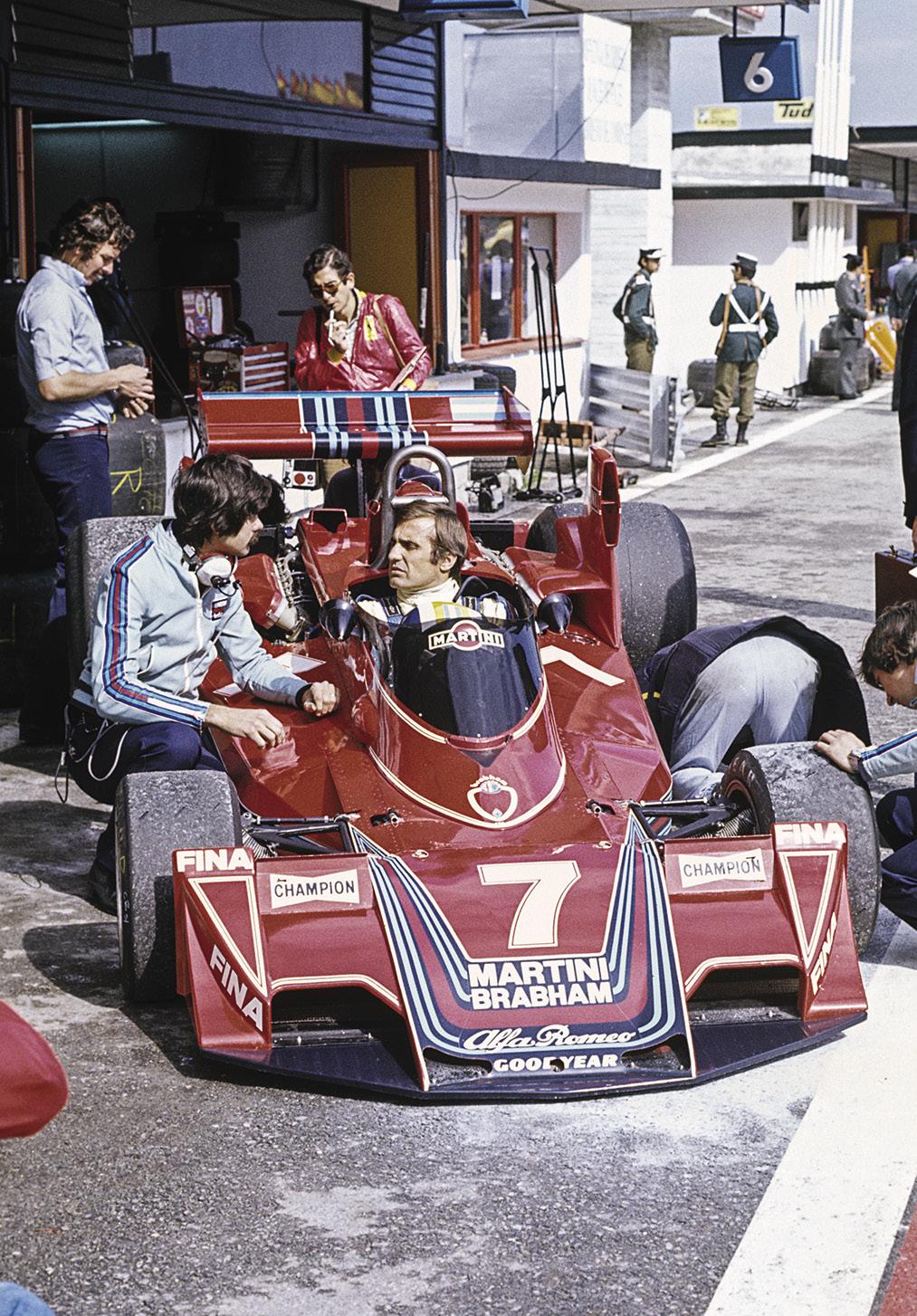 Gordon (right) poses with his 1980s rock band.
Gordon talks with Carlos Reutemann in the Brabham BT45 at the Grand Prix of Spain in 1976.
Gordon (right) poses with his 1980s rock band.
Gordon talks with Carlos Reutemann in the Brabham BT45 at the Grand Prix of Spain in 1976.
Pebble Beach Concours d’Elegance INSIDER 19
Gordon and his wife, Stella, work in the caravan that served as race headquarters for the 1972 Duckhams LM Ford T.3, driven by Alain de Cadenet and Chris Craft at Le Mans.
I LOVE ELEGANT, SIMPLE SOLUTIONS; THAT’S THE ULTIMATE GOAL
— Gordon Murray
Meanwhile, at my day job with Brabham, I designed my first Grand Prix car for the 1973 season, the BT42, which scored two podium finishes with Carlos Reutemann driving and was 7th in the Driver’s Championship. At the same time, I was building four little road cars and a Formula 750 racing car so I could go racing. I sold three of the road cars to fund the Formula 750. At the time I was earning £25 a week.
You must have been exhausted. I was. I woke up one morning in 1973 and keeled over— complete collapse. I think my one big mistake was that I was so autocratic I didn’t get anyone else in to help me. It was stupid in hindsight. Most teams had several designers and engineers, but I wanted to do everything myself—and
I ground myself into the ground. For four years I was the only designer. Every car had 700 to 800 parts to draw, and I drew them all, carried out every test, and went to every race. Like I said, I was single-minded.
What was it like working with the infamous Bernie Ecclestone?

Bernie and I got on great. He is a smart cookie and a racer at heart. He trusted me and let me get on with it. That’s partly why I stayed at Brabham for 17 years.
Why did you leave Brabham?
Honestly, I needed a new challenge. My goal at Brabham was to win F1. We won 22 Grand Prix races and two World Championships. It was time to move on.
 GORDON MURRAY
GORDON MURRAY
20 Pebble Beach Concours d’Elegance INSIDER
The McLaren MP4/5 is driven by Alain Prost on its way to victory at the British Grand Prix at Silverstone in 1989.
What was it like to be at McLaren after Brabham?
Fantastic. Ron Dennis gave me full reign. I arrived in 1986 and signed a three-year contract. They let me reconfigure the factory layout, design, test, and build the cars. I brought everything I had learned at Brabham with me to McLaren, and my first car for the 1988 season was the McLaren MP4/4, with the Honda RA168E 1.5-liter V6 turbo-charged engine, driven by Ayrton Senna. He won the Drivers’ Championship that year, and he and Alain Prost, his teammate, won 15 out of 16 races—a feat unrepeated. And we won the Constructors’ Championship with a record 199 points. It was a pretty good year. After that I worked on the naturally aspirated 1989 MP4/5 and the 1990 MP4/5B. In my three years at McLaren, we won three Championships with three cars. Time to move on.
How do you get motivated to move forward after that kind of success?
It’s always a challenge, because after F1 nothing feels that exciting.
That said, while I was at Brabham I had started to think about creating a race-oriented road car—what we would call a “supercar” today—but I never had the time. One afternoon in 1988, I was delayed at Linate airport in Italy with McLaren directors Mansour Ojjeh, Ron Dennis, and Creighton Brown, and we were wondering why we had to go to Italy to buy a supercar. We decided right then to expand the company and build road cars. In 1989, three of us walked into an empty concrete building. I designed the color scheme, furniture, pictures on the walls, where the

Pebble Beach Concours d’Elegance INSIDER 21
Gordon in 1992 with the McLaren F1, one of his favorites “because of what it achieved at Le Mans. It’s such a focus car.”
palm trees would go, and the workshop layout. That was the beginning of McLaren Automotive.
Enter the McLaren F1 . . .
That’s right. The goal was to build the best-engineered driver’s car in the world. Mansour and Ron gave me a budget and let me get on with it. I went out and drove the four top supercars on the market at the time: the Bugatti EB110, Ferrari F40, Porsche 959, and Jaguar XJ220. Instead of making a list of what I liked about them, I made of list of what I hated. It was an exercise in exorcism. When I designed the McLaren F1, I checked off each item, one by one.
What was on the exorcism list?
For starters, they all made huge compromises in ergonomics and visibility, plus the pedals were set off center due to the intrusion of the front wheel arch. My experience at F1 taught me that the best ergonomics and visibility came with the driver in the center of the car. So, I positioned the driver in the center of the car, with a passenger seated to each side and slightly behind. Now
the driver had his pedals front and center with optimal ergonomics and great visibility. The car was powered by the BMW S70/2 V12, and the prototype XP5 set the world record for the fastest production car, reaching 240 mph.
A version of the McLaren F1 went on to win Le Mans. How did that come about?
When they told me they wanted to take the F1 to Le Mans in 1995, I laughed and said, “No way—it’s a road car.” But they were determined. In 1995 there were four McLaren F1 cars at Le Mans, and in hindsight I wish I had driven one there and back. Trackside we added an aero-kit— basically a wing on the back and a splitter on the front— and we stiffened up the springs, lowered it a bit, added a fire extinguisher and a roll bar as required by regulations, and went racing. It was slightly mad!

And you won!
Yes, we did! The McLaren F1 took first, third, fourth, and fifth place.
GORDON MURRAY
22 Pebble Beach Concours d’Elegance INSIDER
Ayrton Senna pilots the McLaren MP4/4 at the British Grand Prix in 1988.
Do you wish in hindsight you had driven the F1 at Le Mans?
That would have been a great publicity stunt, but no, I wasn’t a race car driver. I did 40,000 miles test-driving the McLaren F1 and that was fun.
And now you have Gordon Murray Design. What is the goal of this venture?
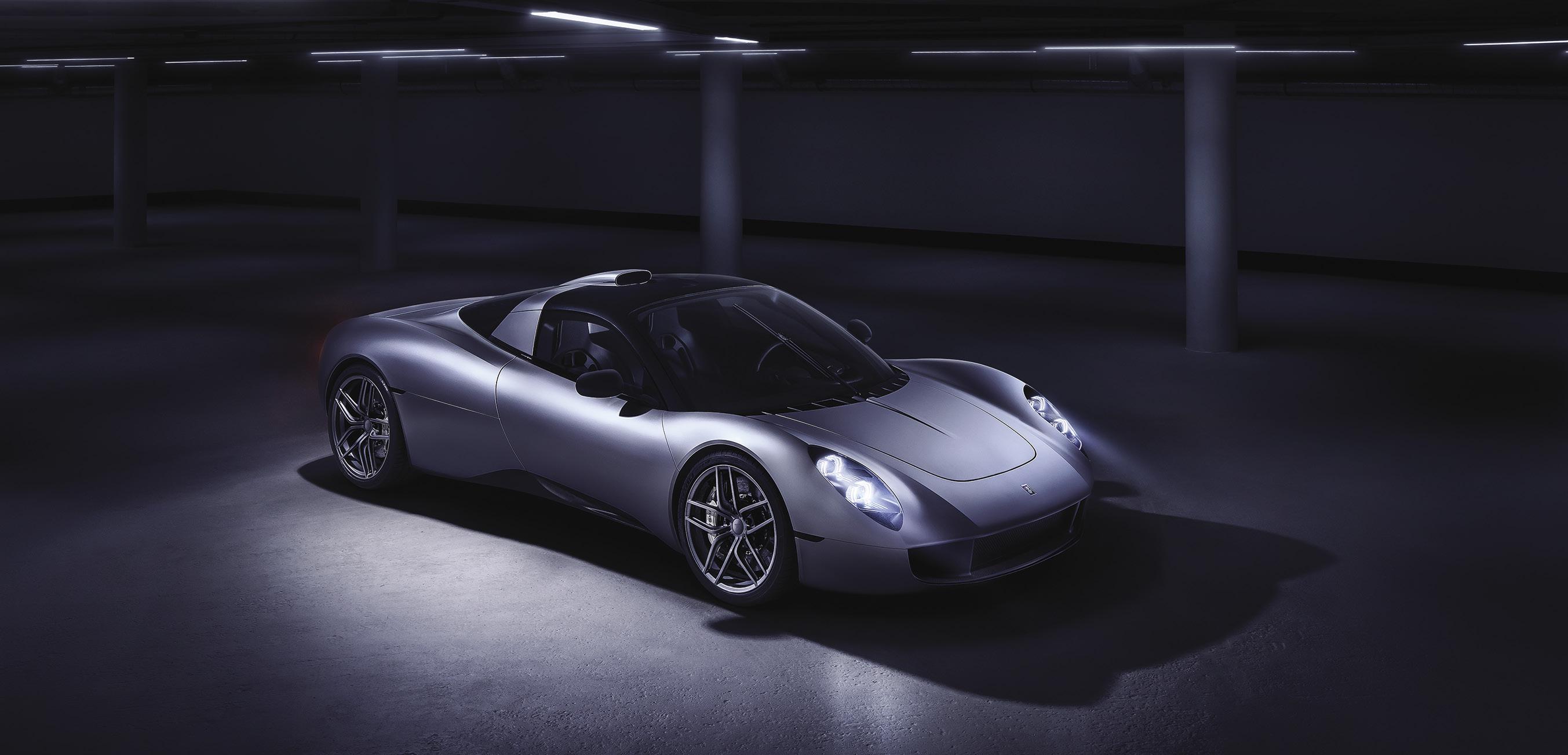
New challenge. . . . I have always been fascinated by structural composites. We were the first team to put a composite wing on a car in 1974 and had carbon brakes in 1976, six years ahead of anyone else. In 1978 we had the first carbon monocoque structure. Carbon fiber is lighter, stronger, stiffer and safer than steel, and I have always thought it a terrible shame that the regular driver, like you and me, cannot benefit from it. But it took four or five hours to form a single panel for a race car and cost hundreds of dollars. So, I developed the iStream design and manufacturing process that can create a composite panel for $15 in 70 seconds, making it possible to manufacture 200,000 cars a year. It uses 60% less energy to build the car and is ideal for the evolving EVs. It is
“disruptive design” and traditional car manufacturers are slow on the uptake—a bit like trying to turn an oil tanker mid-course. It is simple, elegant engineering.
Which brings us back to your “one formula.”
That’s right. I love elegant, simple solutions; that’s the ultimate goal. In 2017, in celebration of my life in cars over 50 years, we launched an exhibition called “One Formula.” We had 42 of my cars exhibited, sent by friends from all over the world. Since then, Gordon Murray Automotive has launched the GMA T50, a sportscar with a 4.0-liter Cosworth GMA V12, taking advantage of all the most recent technologies we have developed. We built 100 cars, and they sold out in 48 hours. The T33, launched last year, sold out in three days—again 100 units—and we continue to work on electric vehicles.
Out of all of your accomplishments, what is the most significant for you?
You are asking me to choose between my children.
I was very honored to receive the CBE (Commander of the Order of the British Empire) from the palace for
Pebble Beach Concours d’Elegance INSIDER 23
The Gordon Murray Automotive’s T.33 is tied to the T.50 but was conceived as a slightly less radical, more approachable car.
my contribution to the automotive industry. That was very special. Certainly, winning Le Mans with a road car is up there, too. And I really love judging the technical achievements of cars at Pebble Beach, because it allows me to further my study of and passion for engineering evolution.
But if I had to choose, I am most proud of the T34 truck I designed for a charity in Africa. It is a 3.5-ton off-road truck made of wood that flat-packs to save on distribution costs. It is named the OX, and three people can assemble it in 11½ hours with just the spanners that come in the box and no lifting equipment. It is light and durable and incredibly low cost and is the most amazing off-road vehicle I have ever driven. The OX has the potential to change the lives of hundreds of people in rural Africa.
You have accomplished so much in the automotive industry. Do you have any regrets that you became a car tzar rather than a rock star?

Well, I tried the rock star thing. In the ’80s we had a band, but it was rubbish, and I can’t sing. My favorite music artist by far is Bob Dylan, and I got to meet him a few times and was invited to his birthday party, so that was fun. One of my best friends for 25 years was George Harrison of the Beatles—we met on the inaugural flight of the Concord from Paris to Rio De Janeiro in 1976 and were best mates until he died. So, I kind of did the rock star thing—vicariously.
I think automotive design was better for me. . . . But who knows what the future may hold?

GORDON MURRAY
Stella and Gordon Murray
24 Pebble Beach Concours d’Elegance INSIDER
Gordon says that the OX, shown here in his early concept sketches, is “probably the most significant vehicle I’ve ever designed.” It is intended to be of help in African and Asian communities that lack transit.
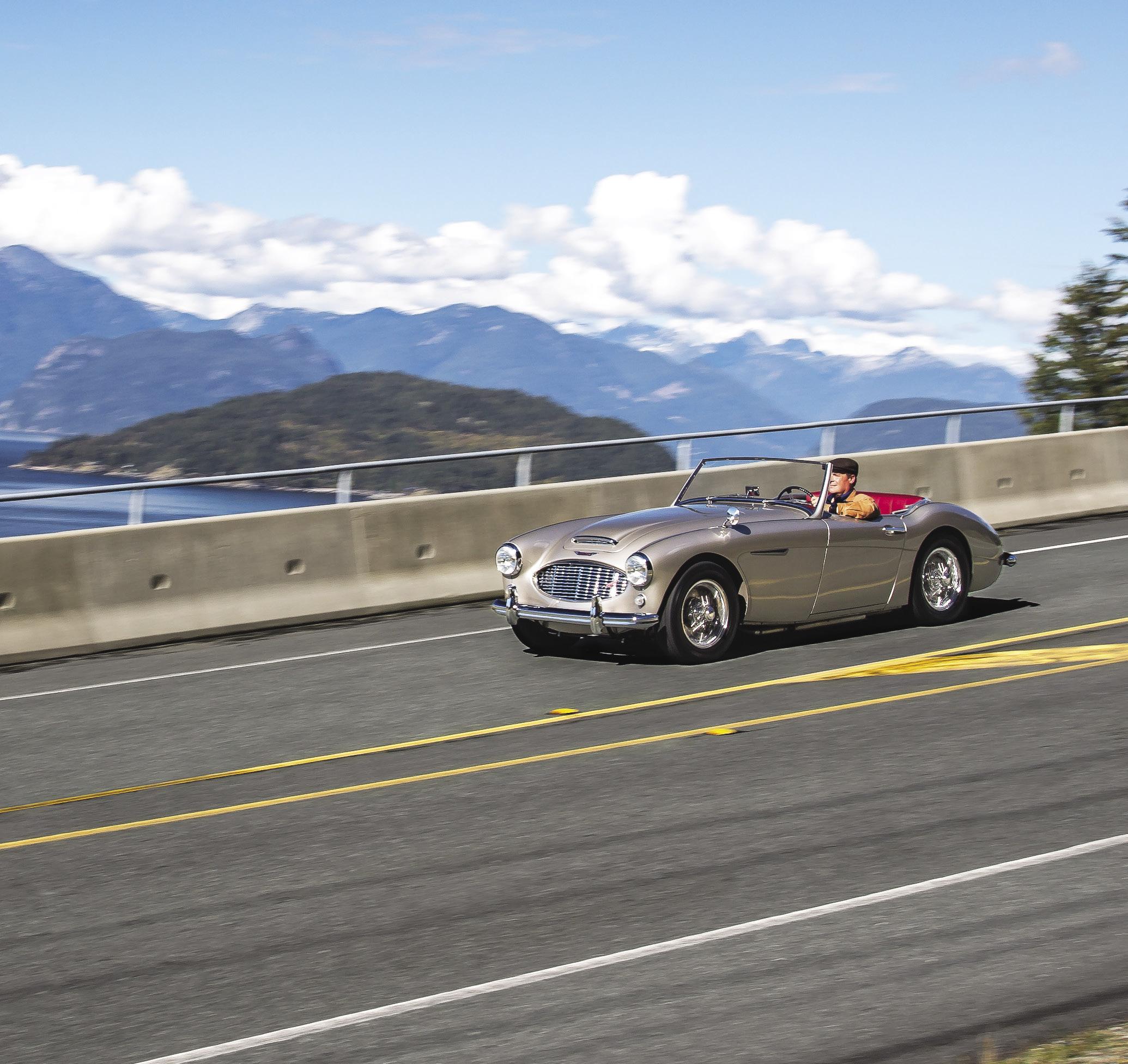
No GPS. No problem. INSURANCE DRIVERS CLUB CAR CULTURE MARKETPLACE +1-877-922-1706 | Local agent | hagerty.com Policies underwritten by Essentia Insurance Company. Membership by Hagerty Drivers Club (HDC), a non-insurance subsidiary of The Hagerty Group, LLC. Only the HDC Program Guide contains a complete description of benefits. Purchase of insurance not required for membership in HDC. All third party makes, models, and vehicle names are property of their respective owners. Their use is meant to reflect the authenticity of the vehicle and do not imply sponsorship nor endorsement of Hagerty nor any of these products or services. Hagerty is a registered trademark of the Hagerty Group LLC, ©2023 The Hagerty Group, LLC. All Rights Reserved.
When we speak of early auto racing on the Monterey Peninsula, most people immediately think of the road races that were held on the roads of Pebble Beach from 1950 to 1956 and led to the creation of Laguna Seca Raceway in 1957. Few know that auto racing began much earlier in Monterey. The Peninsula was in fact part of the turn-ofthe-century automobile craze 120 years ago.
A sprinkling of mechanized “horseless carriages” began appearing on roads in the mid-1800s, but it was only at the end of the century that there was sufficient innovation in these vehicles to test them for speed and endurance—and European manufacturers led the way.
In 1894, they organized an 80-mile race from Paris to Rouen. Steam power won out over electric and petroleum. A year later, forty “horseless carriages” entered a race from Paris to Bordeaux and back, some 723 miles on the roads of the day. The race included cars propelled by electricity, compressed air, petroleum and steam. Reports
don’t say how many cars finished, nor where and how often they refueled, only that “petroleum won easily; its car accomplished the run in twenty-two and a half hours, at the rate of sixteen and a quarter miles an hour.” The winning car was a Daimler driven by James Gordon Bennett, an eccentric playboy and yachtsman whose father founded the New York Herald. Bennett ran its counterpart in Paris and would go on to establish the Gordon Bennett Trophies for auto racing, ballooning and air racing.
The Chicago Times-Herald promoted America’s first “Moto Cycle” race for the summer of 1895. They resisted using the “horseless carriage” term, and for a time seemed to popularize the new term. The 54-mile race from Chicago to Waukegan and back, originally scheduled for early September, was delayed several times, finally being run on Thanksgiving Day, with only six vehicles braving a blizzard to start the race. A Duryea wagon was eliminated after smashing a wheel in a ditch, but was repaired by a blacksmith and returned to finish the race in 10 hours
26 Pebble Beach Concours d’Elegance INSIDER
Hotel Del Monte added auto racing to its list of sporting events in 1903, more than a year prior to the start of the Vanderbilt Cup Races on the East Coast. The Automobile Club of California was involved in organizing that and several subsequent Del Monte Cup races.

Concours d’Elegance INSIDER 27
Pebble Beach
23 minutes, garnering the $2,000 top prize. A Benz (one of three) finished second for $1,500, but its owner, Hieronymus Mueller, objected, claiming hacks and sleds had helped the Duryea “through snowdrifts and bad places.” Both cars were found to have deviated from the race route, and just one other Benz finished—outside of the allotted time.
The first big race in America was a disappointment—as a race—but the testing that accompanied it demonstrated the possibilities of these new machines. The gold medal for the event was awarded to the Morris and Salom Electrobat of Philadelphia. While the batteries in this car could not cope with the cold, so it did not race, it was rewarded for its “safety, ease of control, absence of noise, vibration, heat and odor, cleanliness and general excellence of design and workmanship.”
On December 1, the Saint Paul Globe declared, “The day of the moto cycle is at hand, and now we ought to consider a more accurate and sensible name.” “Automobile,” often abbreviated as “auto,” soon became the preferred generic term. “Car,” adopted from railroad cars and short for carriage, was also popular.
The Automobile Club of America was established on June 8, 1899, at the Waldorf Astoria hotel in New York City. William K. Vanderbilt Jr. was one of the most prominent automobilists in the East, importing the fastest cars he could find in Europe. He was 20 and getting married at the time, so he was not among the original club directors, but soon after was one, and he would go on to play a major role in racing on that coast. But auto enthusiasm was widely spread. The Automobile Club of Chicago followed in December 1899, and the Automobile Club of San Francisco, later called the Automobile Club of California, formed at the Cliff House in March 1900. The Automobile Club of America was really a New York club, and several other local clubs sought to form a national coalition of clubs, so they formed the still very active Automobile Association of America (AAA) in March 1902.
American automobiling took a leap forward with the first race on Florida’s long, flat Daytona Beach that March. Alexander Winton in his 60-hp “Bullet” recorded a flying start mile of 52.2 seconds (69 mph), besting the “Pirate” of R. E. Olds by 14.5 seconds. About the same time the Automobile Club of America was making plans for an August cross-country contest from New York to Chicago.
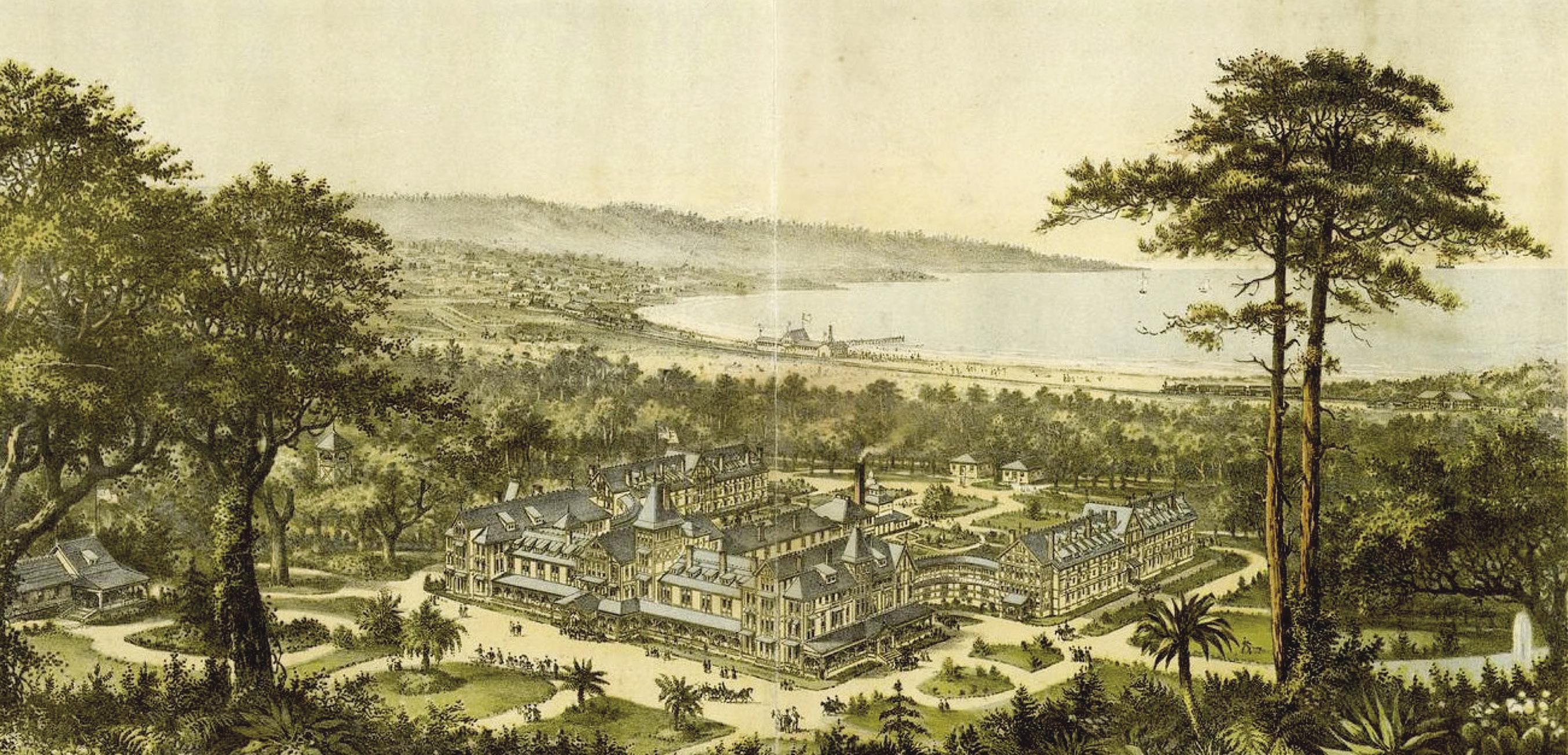 The Del Monte Cup
The Del Monte Cup
28 Pebble Beach Concours d’Elegance INSIDER
A colorized overview of Hotel Del Monte from an early hotel brochure.
And on the West Coast the Automobile Club of California was planning its own August contest.
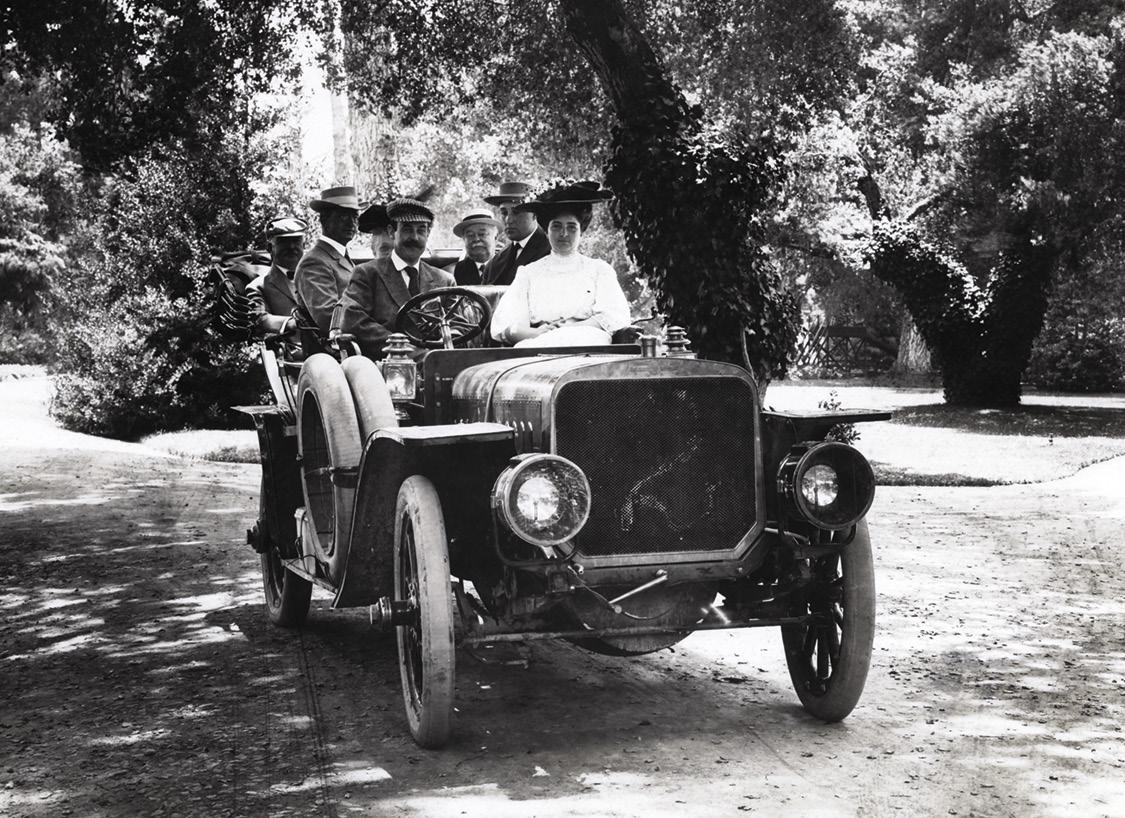
For more than two decades, since opening in June 1880, Monterey’s Hotel Del Monte had attracted wealthy sports enthusiasts with a wide variety of offerings. In 1895, at a cost of $75,000, the hotel had added the finest mile-long, oval racetrack in the state. It included polo fields on the infield and a grandstand that could seat 600 people. With it, Del Monte launched its annual carnival of sports, with polo, horseracing, steeplechase, and trapshooting. In 1898 they added golf to the agenda on the Del Monte Golf Course that had opened in 1897. And then, in 1903, Del Monte added auto racing, organized by the Automobile Club of California as part of a long automotive weekend.

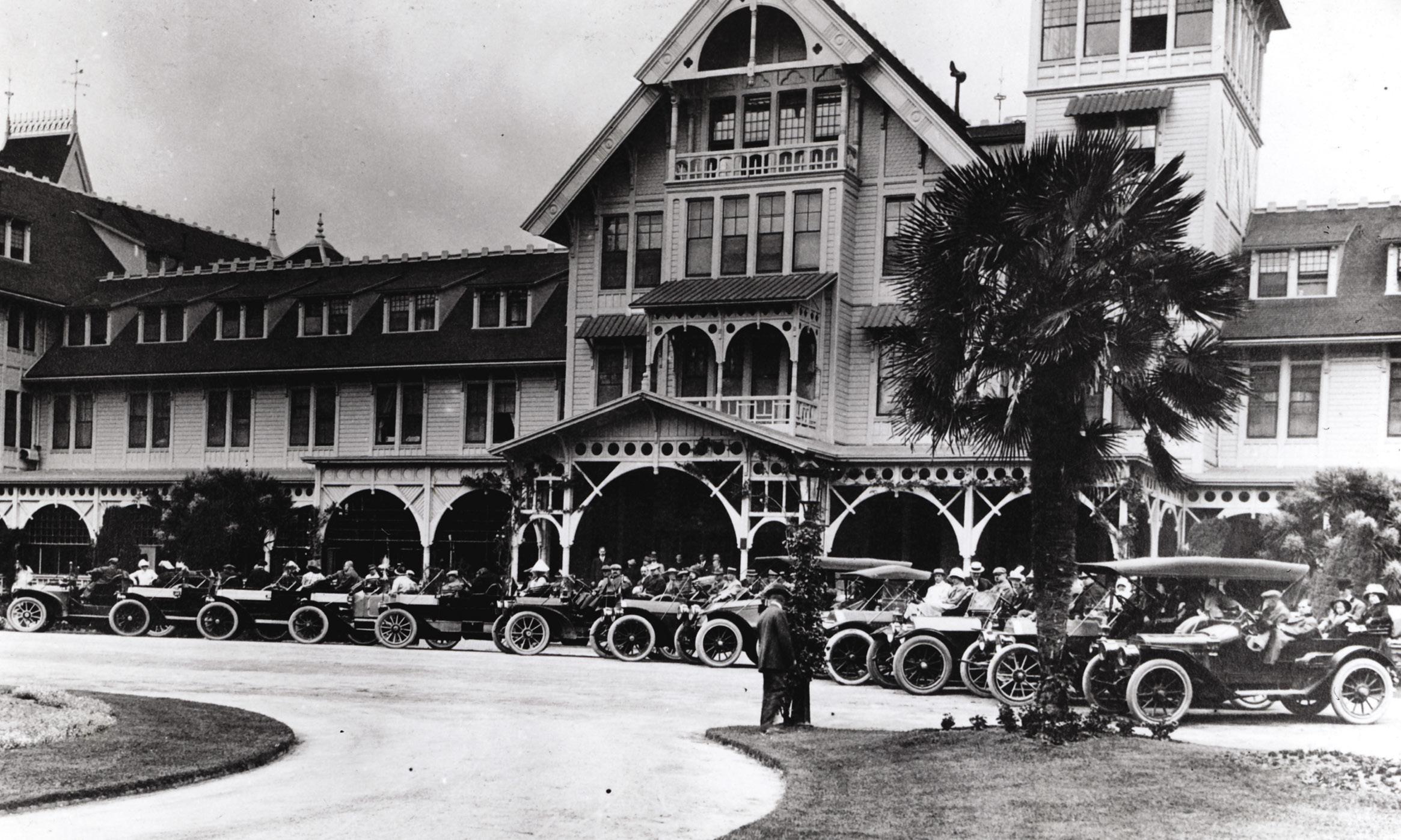 Above Right: An overview of Del Monte’s mile-long oval, said to be the best track in California when built in 1895.
Right: A Stevens Duryea traverses the scenic grounds at Hotel Del Monte, built on 126 acres of forest land—with 5,000 acres in reserve nearby for parks and drives. Note the precaution of carrying multiple spare tires.
Above Right: An overview of Del Monte’s mile-long oval, said to be the best track in California when built in 1895.
Right: A Stevens Duryea traverses the scenic grounds at Hotel Del Monte, built on 126 acres of forest land—with 5,000 acres in reserve nearby for parks and drives. Note the precaution of carrying multiple spare tires.
Pebble Beach Concours d’Elegance INSIDER 29
Hotel Del Monte, with its network of scenic roads and a race track, was a favorite of early automobile enthusiasts.
Auto enthusiasts from around the San Francisco Bay area gathered at San Jose’s Hotel Vendome on the evening of Thursday, August 6. On Friday they headed out on a timed endurance run, passing through Salinas and over to Hotel Del Monte. Saturday, participants took in the horse races. Sunday, the cars casually toured 17-Mile Drive.
Monday featured a series of nine auto races, with 12 different vehicles competing on the Del Monte track. Steam-powered White motor cars made a good showing, winning three of the first four races. The Whites were precluded from the first race, a two-mile contest for gasoline-powered cars under 1,200 pounds. That race was won by a Rambler. A White touring car driven by Walter Grothe won the two-mile second race, beating the Rambler by 35 yards. Frank A. Garbutt won the next two races in Whites, with Grothe finishing second in each.

The fifth race, the first without size restriction, brought in the impressive powerhouse of the meet—a 40-hp Mors imported from France by George P. Whittell Jr. at a cost

of $12,000. Whittell, then just 21, was the sole scion of a family that initially gained its wealth in the Gold Rush and founded the Pacific Gas & Electric Company. Fast cars were his passion, and some of the most beautiful cars of the classic era would be created for or collected by him. At one time, he was perhaps the foremost client of Duesenberg, with six of those cars in his possession. In 1903, the San Francisco Call reported that his Mors had taken “a high place in the Paris to Madrid race” that May. Whittell had a French driver and won the fifth race at Del Monte, a tenmile affair, in 13:21.2 (44.9 mph). Despite the extra power, he only beat Grothe in a 24-hp White by 45 seconds.
The sixth race, five miles for cars under 20 hp, was won by Frederick Hotaling’s Winton, driven by Selby Hewson. Hotaling served as the wing man, hanging outside the frame on the curves to keep the car grounded.
Whittell’s Mors dominated the seventh event, which tracked individual laps for the best time. The Automobile Club offered a cup for any driver that could beat a 1:18
The Del Monte Cup
30 Pebble Beach Concours d’Elegance INSIDER
Touring cars, stripped of tops and some lights to save weight, pull up to the starting line--and one Locomobile seems to have pulled past it.
mile (46.15 mph). Whittell made seven laps, each under 1:17, and took the cup. His lap of 1:15.8 (47.5 mph) established a new Pacific Coast record.
The last two races were handicap affairs. Whittell drove his Mors in the eighth race and had the fastest time, but the White driven by Grothe was given a 2-minute handicap and declared the winner. A little 4-hp Orient Buckboard, that sold new for $375, was given a 3:37-minute handicap and awarded second. Given the handicaps, the Mors finished sixth. The final race was only for owner-drivers. Likely due to dissatisfaction with the handicap system, there were only two entries, and Dr. W. H. Kellogg in his Orient Buckboard defeated George Pope Fuller in a faster Winton.

All in all, the 1903 race meet at Del Monte was a grand success.
The following January, at Daytona Beach, Vanderbilt, in his 90-hp Mercedes, set a land speed record in a preliminary time trial, covering a mile in 39 seconds—92.3 mph. Later
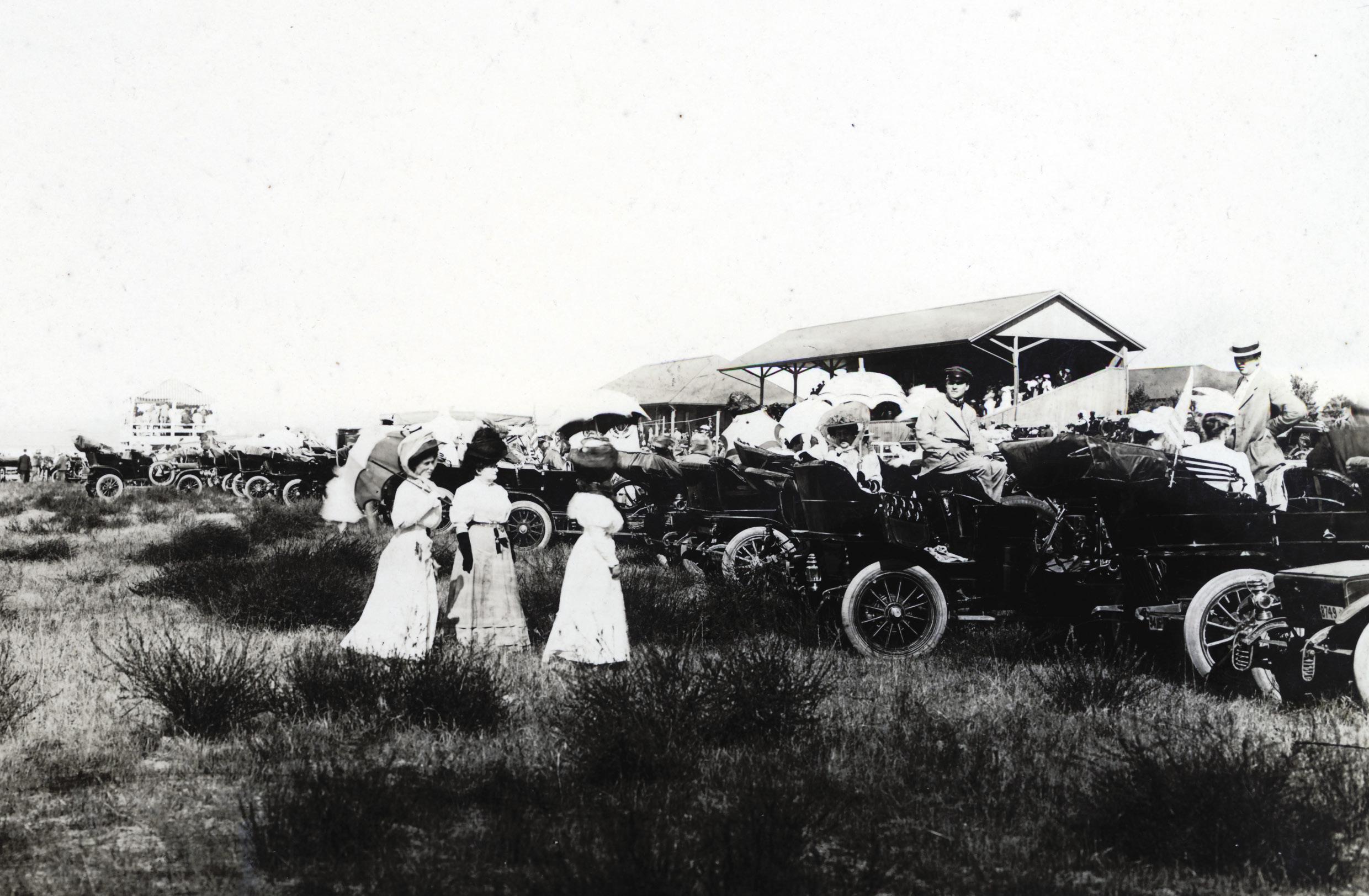 Many spectators parked trackside to watch the early Del Monte Cup races. Grandstands also lined a portion of the track.
Many spectators parked trackside to watch the early Del Monte Cup races. Grandstands also lined a portion of the track.
Pebble Beach Concours d’Elegance INSIDER 31
This Stevens Duryea ”Big Six” was among the cars pressing to win the Del Monte Cup in 1907. It is likely the same car seen previously touring the grounds.
that year, under the auspices of AAA, he would launch an international road race in Nassau County, Long Island, for a trophy named the Vanderbilt Cup, and it would become an annual event.
Two months before the first Vanderbilt Cup race, the Automobile Club of California scheduled a second annual race meet at Del Monte, even bigger than the first. They held two full days of racing with a total of 127 entries in the weekend’s races. This was by far the largest race meet to date on the Pacific Coast. The first day, Friday, August 26, featured two races in the morning and six in the afternoon. The first race, five miles for runabouts and light touring cars costing less than $1,000, was won by the Cadillac of Clarence Letcher, who operated a bicycle and auto garage in Sacramento. His best mile was 1:07.8, nearly 10 seconds faster than the record set by the Mors a year earlier. The automobile was advancing quickly.
A Rambler won the second race, which was for similar cars costing $1,500 or less. In the third race, for cars costing between $1,500 and $2,550, H. D. Ryus in his White steamer defeated Fuller in his new 24-hp Pope-Toledo.
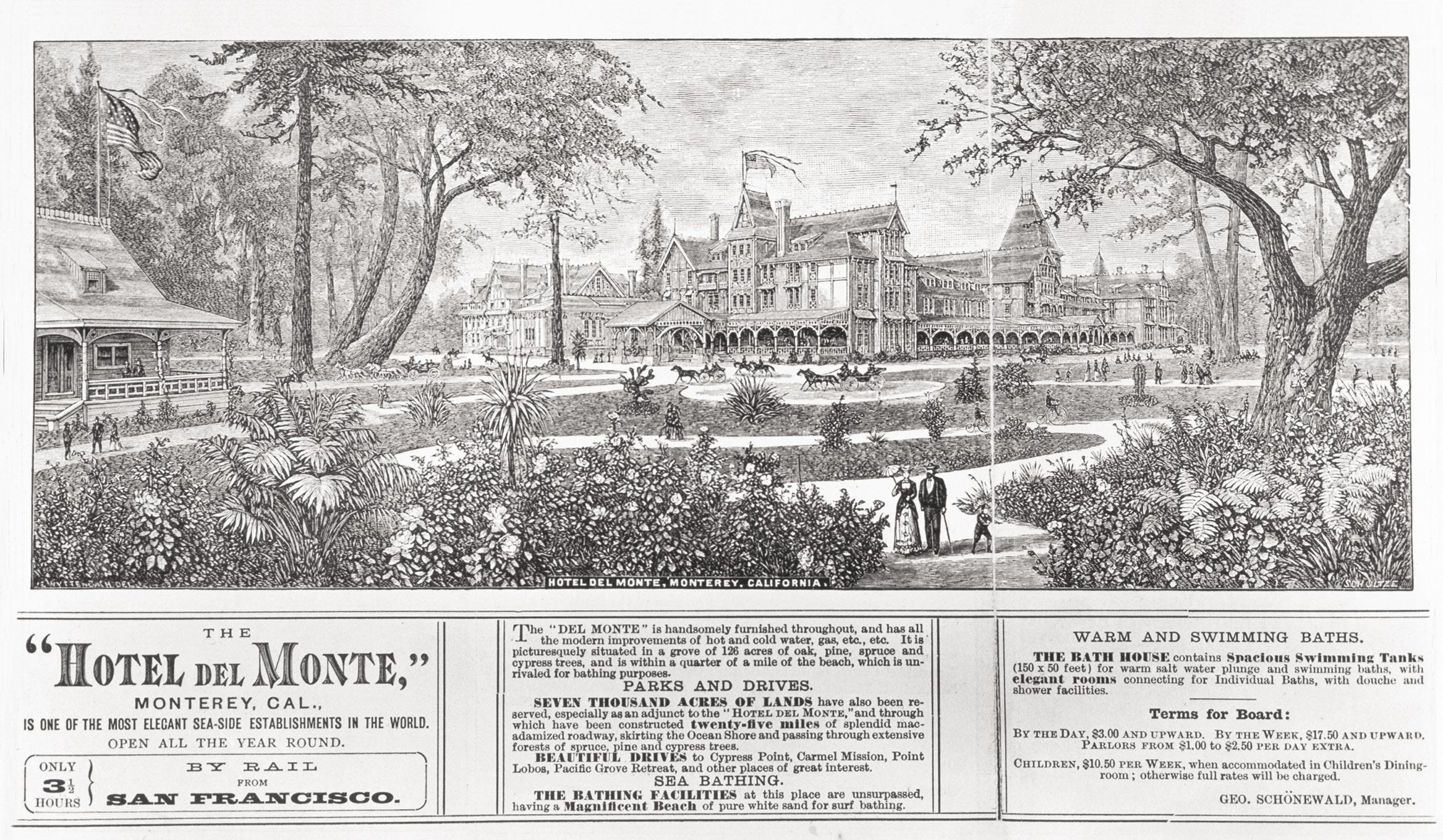
The remaining races of the day did not require the cars to be as built, and most were stripped of excess weight for increased speed and re-geared for acceleration. Letcher’s Cadillac won the fourth race, five miles for cars of 10 to 16 hp, defeating J. Schnerr in a Cadillac owned by auto dealer Cuyler Lee. The fifth race, five miles for cars priced $1,200 to $2,550, was won by W. E.
driving Fred Jacobs’
The sixth and seventh races were pursuits, where passed cars were eliminated. In the sixth race, 10 miles for gas cars costing under $1,000, three Cadillacs started a quarter mile apart. Letcher’s Cadillac started at the back and passed the two Cadillacs owned by Lee. In the seventh
Saunders
Rambler.
The Del Monte Cup
32 Pebble Beach Concours d’Elegance INSIDER
An early ad (c. 1887) for Hotel Del Monte promised such “modern” amenities as hot and cold water and gas; parks and drives with 25 miles of “splendid macadamized roadway, skirting the ocean shore and passing through extensive forests”; and a magnificent beach and bathhouse with spacious tanks for “surf bathing,” swimming, or a saltwater plunge.
race, 16 miles for cars priced $1,200 to $2,550, Grothe in a White led most of the way. Saunders in the Jacobs Rambler eliminated two other Ramblers and a Thomas Flyer but remained about a half-mile behind the White until the last mile, when the White ran out of steam, allowing the Rambler to pass and win the race.
The eighth race consisted of two preliminary heats for the Del Monte Cup. This was an open event of five miles for
any cars, no restrictions. Competitors included a PierceArrow, a White steamer, and a Franklin Comet. Frank Garbutt’s customized Stewart-Garbutt withdrew with mechanical problems. Both preliminary heats were won by Pope-Toledos—in the first F. J. Swentzel in a car owned by George A. Pope was timed at 5:38.5, and in the second Fuller in his own car was timed at 5:24.25. They would face off in Saturday’s sixth race.

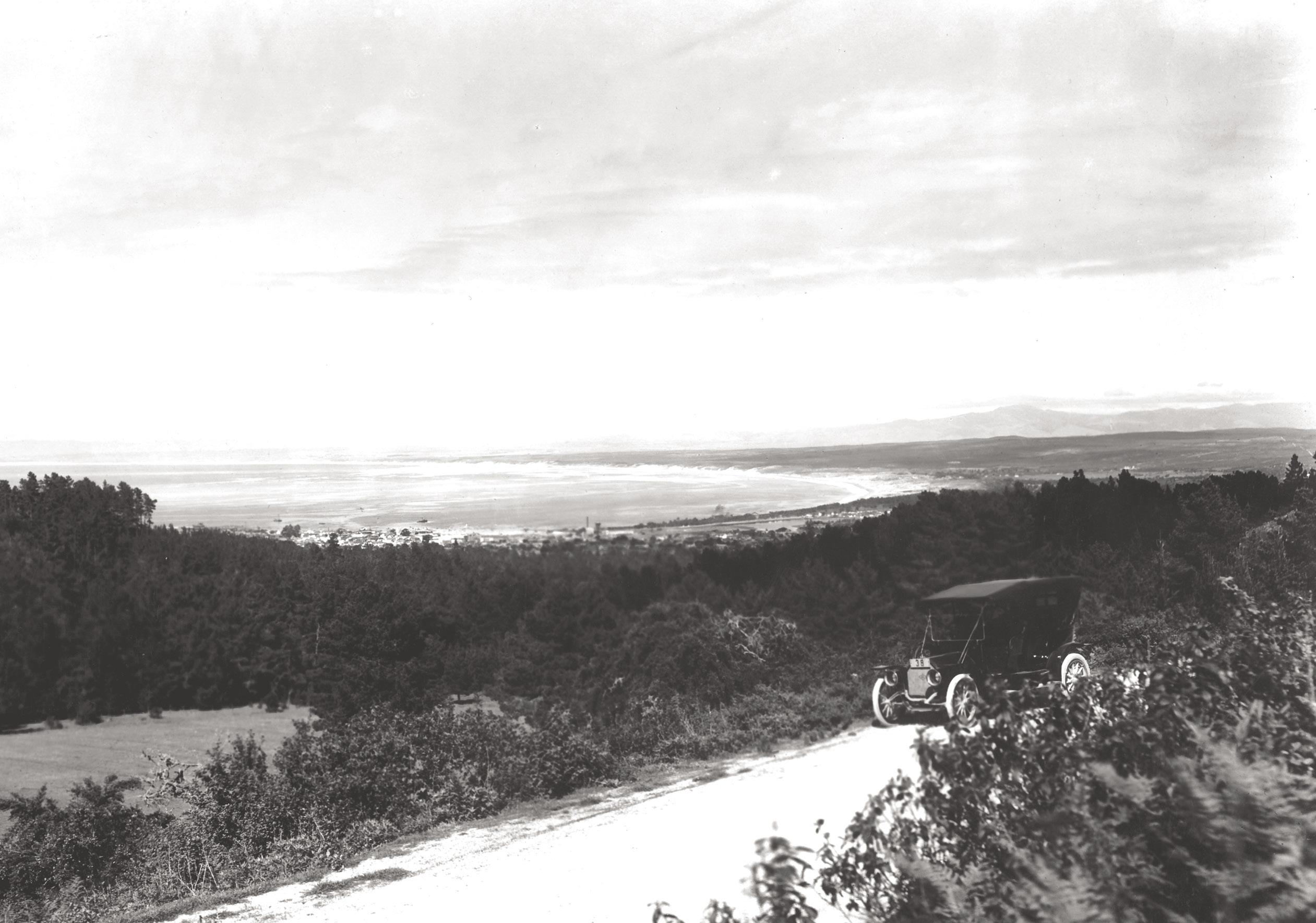 Left: A colorized postcard features three carloads of visitors–in a Rambler, a Buick, and another car–at the Pacific Grove gate of 17-Mile Drive, which became a toll road in 1901.
Below: A Touring car traverses a scenic road overlooking Monterey Bay.
Left: A colorized postcard features three carloads of visitors–in a Rambler, a Buick, and another car–at the Pacific Grove gate of 17-Mile Drive, which became a toll road in 1901.
Below: A Touring car traverses a scenic road overlooking Monterey Bay.
Beach Concours d’Elegance INSIDER 33
Pebble
That Saturday, August 27, 1904, again started with races for the smaller cars. The first race was five miles for cars under $1,000, which could be stripped and re-geared for racing, and Letcher’s Cadillac won again.
The second race was ten miles for touring cars costing between $1,500 and $4,000. They could not be stripped and were required to carry four persons in the race, but they could be re-geared for racing. It was won by E. R. Dimond’s Pope-Toledo driven by R. G. Fowler—and in the second five miles, Fowler set an American record time of 6:33.8 (45.7 mph) for touring cars carrying four passengers.
The third race was five miles for cars of 10 to 16 hp, no restrictions. Saunders, in Jacobs’ Rambler, edged out W. K. Cowan, a southern California Rambler agent, by less than a car’s length. Total time 6:01.
The fourth race was five miles, no restrictions for cars of 10 to 24 hp and foreshadowed the final for the Del Monte Cup. Fuller in his Pope-Toledo bested Swentzel in the first
heat at 5:26, and Saunders in Jacobs’ Rambler won the second heat at 5:54, with Fuller winning the final in 6:03.8.
The fifth race was to be a special inter-club championship. But with the Automobile Club of Southern California’s car, the Stewart-Garbutt, out of commission, the event was postponed to a future date. It was replaced with an exhibition between two White cars. Lowe put his White racer driven by Grothe up against the “White Ghost” owned and driven by Ryus. The latter was modified with an engine and boiler of special racing construction. In an upset, Grothe won the five-mile race in 5:54.
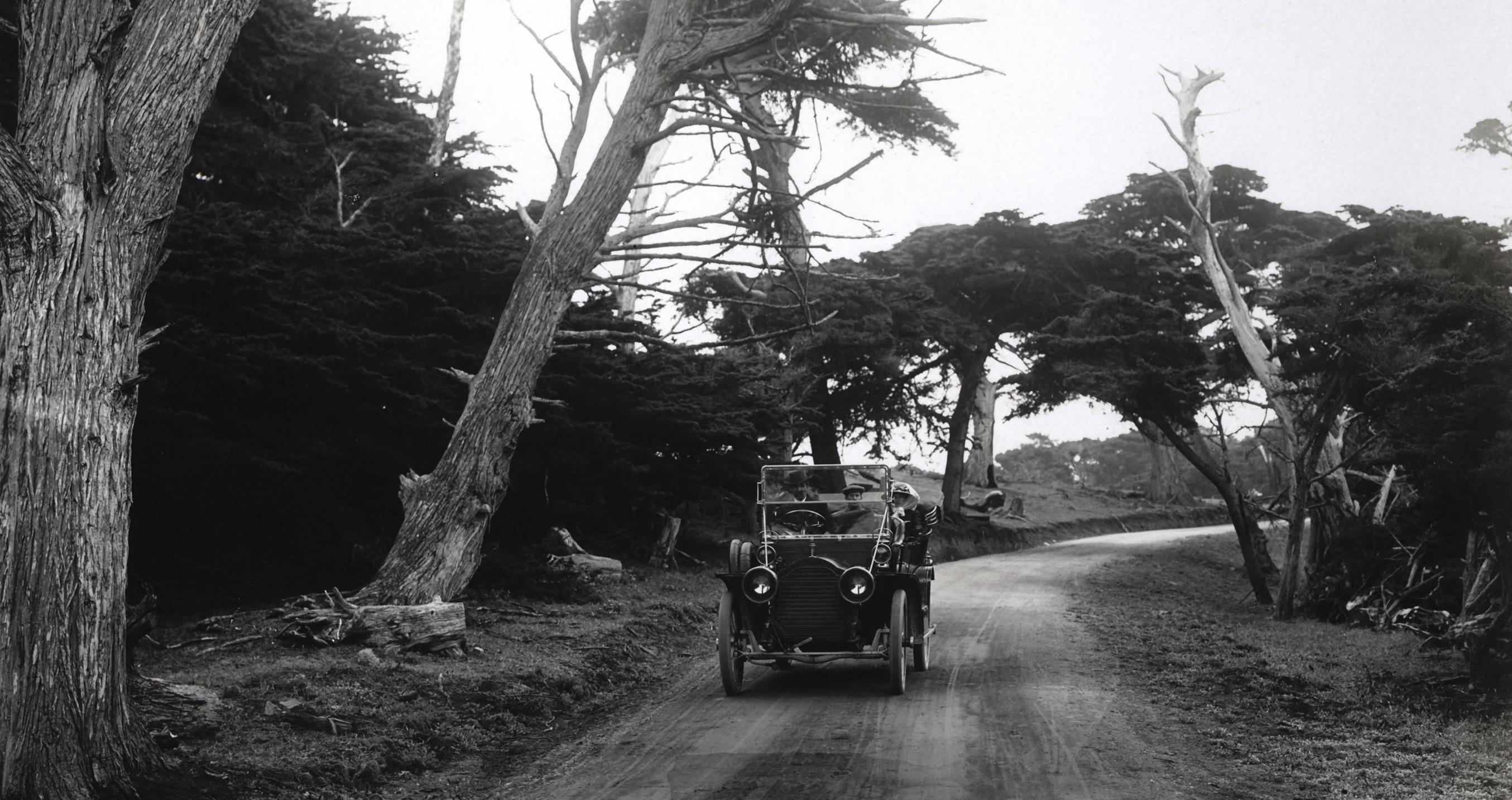
The sixth race was the final heat for the Del Monte Cup. Fuller won, speeding five times around the track in 5:21.4 (56 mph)—the fastest five miles of the meet.
The last three races were geared for excitement. The seventh was a pursuit race for cars priced from $2,501 to $4,000. There were two entries, with H. M. Chambers in a Pierce-Arrow starting a quarter mile ahead of a Pope-Toledo driven by Bert Dingley. Dingley caught and
The Del Monte Cup
34 Pebble Beach Concours d’Elegance INSIDER
A Packard Model 30 7-Passenger Touring passes through cypress forests near what is now the Cypress Point Club. The Model 30 was Packard’s largest offering in the early era, and several were often on site at Hotel Del Monte.
passed Chambers in 2:48.8. The eighth race was a fivemile contest open to all cars, and Ryus redeemed himself, winning in his “White Ghost” at 5:37.8 (53.3 mph). The day’s final race was a pursuit open to all cars. Fuller in his Pope-Toledo quickly passed Selby Hewson in a Franklin Comet and then the “White Ghost.” It took many more laps before Fuller passed Dingley to record his third victory of the day.
To everyone’s surprise, the automobile clubs did not return to Del Monte in August 1905. Then, when the Automobile Club of California returned to Del Monte for a competition on the afternoon of Saturday, August 11, 1906, it was less about speed and more about control in what the San Francisco Call dubbed a “gymkhana.”
The first two contests judged speed, rewarding the car closest to an average of 10 mph over a half mile and then closest to 20 mph over one mile. The third, a 100-yard dash from a standing start, tested acceleration. J. A. Landsberger won that competition in a Franklin at 10.3 seconds. The fourth was an interesting twist on the third, adding a control aspect. After dashing 100 yards forward to cross the finish line, drivers then had to back up to fifty feet. John Fleming won that contest at 23.6 seconds in a Pierce-Arrow. The sixth was another twist on the 100-yard dash—race then brake to stop closest to the line. Landsberger won again, stopping within six inches of the line in 15 seconds.
There were a total of ten contests held that afternoon, but you could not call any of them a race. However, in September the Automobile Club of California hosted another meet at Del Monte. While it featured gymkhanastyle events, it also included a race for the Del Monte Cup that had been created in 1903. This was a five-mile race for unmodified touring cars of a minimum 24 hp that had to be driven by the owner and carry four persons in total. Max Rosenfeld captured the cup in his 30-hp 1906 Peerless. J. A. Landsberger placed second in a Franklin, and Frank Miner insisted he would have won in his Locomobile, but having just arrived from San Francisco before the race, he failed to refuel and ran out of gas at about four miles.
The second 1906 meet also featured a two-mile race for smaller cars, which was won in a very tight contest by Selby Hewson in a 20-hp Locomobile, over Arthur Van Valin’s Studebaker. Excitement over these races resulted in adding another five-mile race for cars other than the Del Monte Cup winner. After two heats, it came down to a three-car
With little to protect them on their scenic drive, this early motorist dons goggles while her passenger wears a visor with netting and holds tightly to the dog.
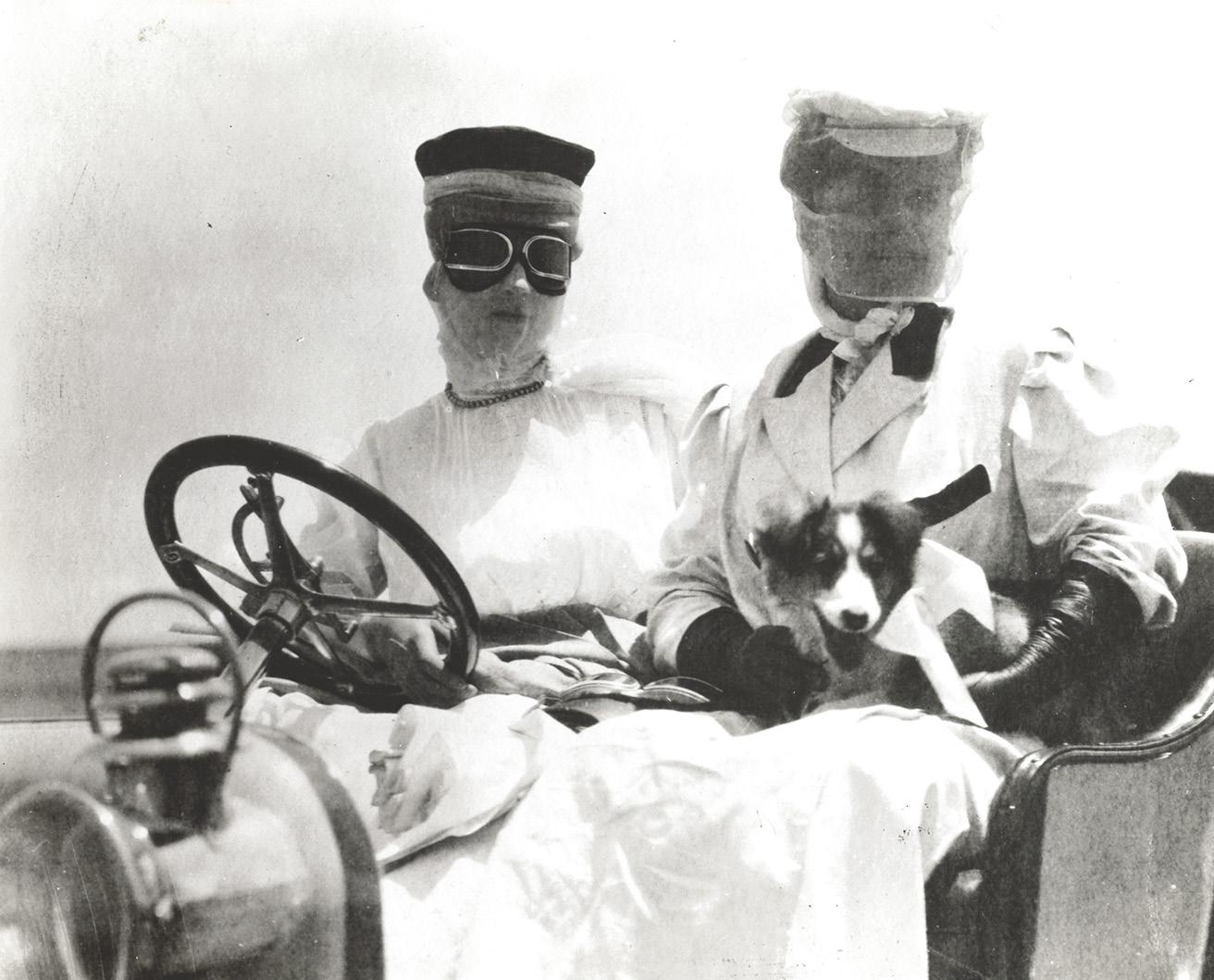
final with Fleming’s Pierce-Arrow taking the prize over Van Valin’s Studebaker and Tony Nichols’ Franklin.
Deciding it was better to hold a race meet away from the hubbub of all of the other August sports at Del Monte, the Automobile Club of California scheduled a return on July 4, 1907. Rosenfeld in his Peerless captured the Del Monte Cup for a second time, again defeating Miner in a Locomobile in the final. This second win gave Rosenfeld permanent possession of the Del Monte Cup. In other races, Nichols’ Franklin won a two-mile race for runabouts, A. B. Costigan won a five-mile free-for-all in a StevensDuryea “Big Six,” and Bert Dingley won a ten-mile race for large touring cars in a Pope-Hartford.
This was another successful meet, and the Club returned in September for an even bigger gathering. In the first two races, for smaller cars, there were only two entries: Al Piepenburg, in a White, won the first in 6:35, and J. A. Nikrent, who lost the first race, defeated Piepenburg in the second in a 2-cylinder Tourist.
There were four entries in the third race, ten miles for cars over 24 hp. Piepenburg, driving a 30-hp White, won the event in 11:58 (50.14 mph), with Van Valin coming in second in a 30-hp Stevens-Duryea owned by A. H. Costigan, Rudolph Habernicht third in a 30-hp PopeToledo, and Roy Rehm fourth in a 60-hp 1906 Matheson. A fourth race of five miles planned for the big cars was canceled.
Pebble Beach Concours d’Elegance INSIDER 35
The afternoon began with a five-mile motorcycle race. George Nelson, with a 25-second handicap for his onecylinder Indian, lost by 10 feet to Frank Carrol on a 2-cylinder Indian that ran the five miles in 7:44.2 (38.8 mph).
A race of 25 miles for runabouts over 25 hp was no contest. Bert Dingley in a 70-hp Thomas Flyer easily defeated J. A. Hansen’s 45-hp Studebaker in 27:50 (53.9 mph).
This left the 50-mile race for the big cars. Van Valin and Rehm used their cars from the third race, Charles J. Haeffner entered with a 60-hp Stearns owned by Emmett Hayden, and Nikrent entered with a 4-cylider Tourist, but quickly realizing he was out-classed, withdrew after a tenth of a mile. The Stearns and the Stevens-Duryea pushed each other for the first several laps,

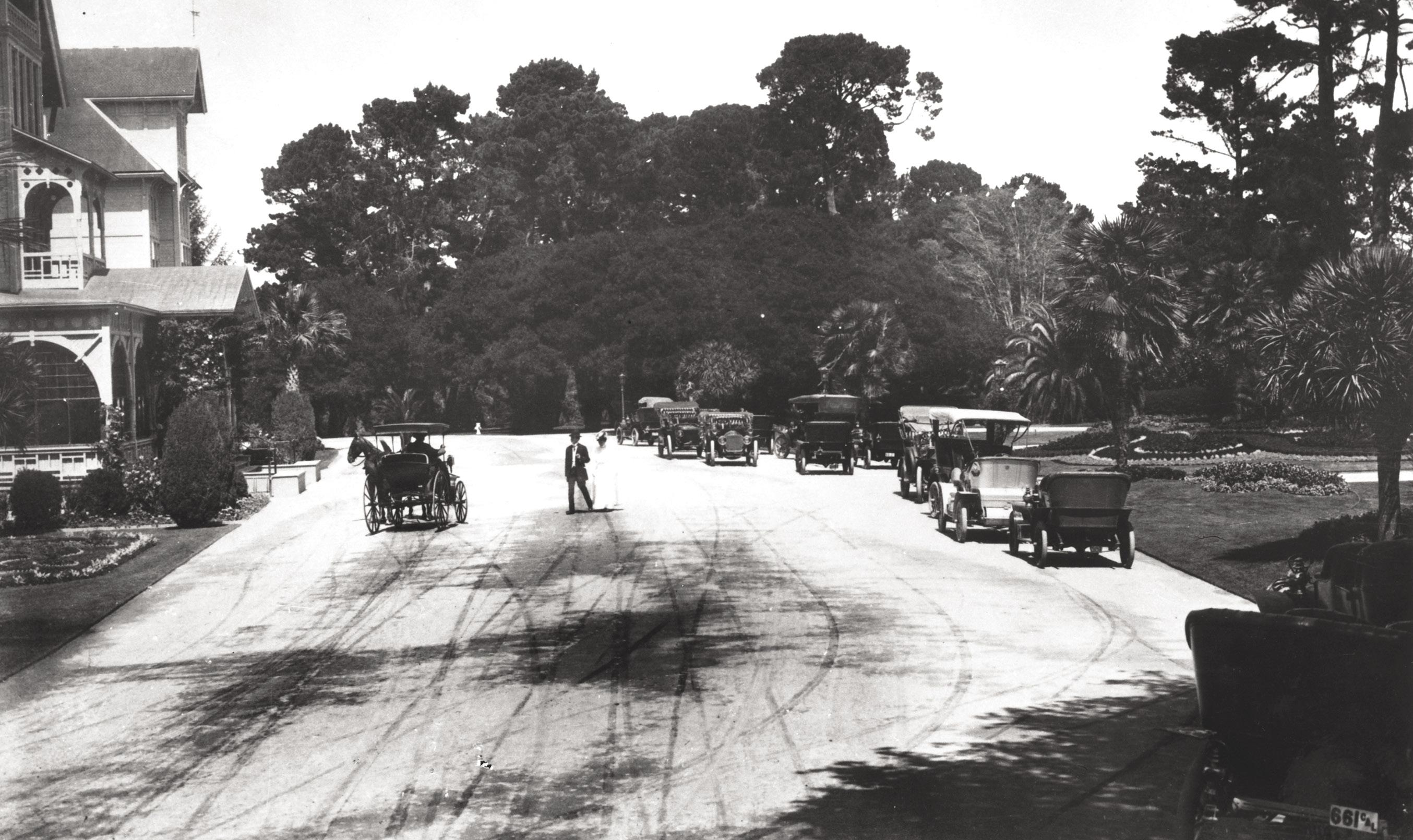
The Del Monte Cup
with the Matheson holding back.
Above: Guests of Hotel Del Monte were conveyed by both horse-drawn and horseless carriages at the turn of the century.
36 Pebble Beach Concours d’Elegance INSIDER
Right: The August 8, 1903, edition of the San Francisco Chronicle published photos and sketches of the first Del Monte Cup races, showcasing two winners: Frederick Hotaling‘s Winton (piloted by Selby Hewson with Hotaling hanging off the side for balance) and Frank A. Garbutt’s White.
In the 19th mile, the Stearns caught fire and pulled off the track, where spectators helped douse the flames with sand. Rehm pushed his Matheson harder, reaching 70 mph on the straightaways, to keep the pressure on Van Valin. With the fire out, the Stearns re-entered the race and worked to make up time. Entering the first curve of the 25th mile, the left rear tire on the Matheson blew out, and Rehm and his mechanic, Charles Martin, were thrown from the vehicle. Rehm was crushed and died instantly. Martin was hospitalized but recovered.

The tragedy ended festivities. The last race was not finished, and a timed race planned for Sunday on 17-Mile Drive was canceled. The Automobile Club of California vowed to quit holding speed contests, and they actually stopped hosting any events at Del Monte. But auto enthusiasts continued to make the trip to enjoy the resort and the scenic, well-maintained roads.
The short-lived era of racing on the Del Monte track consisted of seven meets over five years and ended with a tragic death—a record amazingly similar to the return of racing to the peninsula in 1950 with the Pebble Beach Road Races on the roads of
Del Monte Forest, which ended with a fatal crash in the seventh meet in 1956. The eighth annual Pebble Beach Road Races, held in 1957, was the first meet to take place at Laguna Seca, where the racing tradition continues with several events each year.
Photos and sketches in the August 22, 1907, edition of the San Francisco Examiner detailed the accident that would put an end to racing on the Monterey Peninsula—at least for a time.
Pebble Beach Concours d’Elegance INSIDER 37
Estimate: $2,800,000 – $3,200,000 USD

Estimate: $5,000,000 – $7,000,000 USD
 1967 Ferrari 275 GTB/4 by Scaglietti
Formerly Owned by Steve McQueen
1967 Ferrari 275 GTB/4 by Scaglietti
Formerly Owned by Steve McQueen
CALIFORNIA +1 310 559 4575 HEADQUARTERS +1 519 352 4575 FLORIDA +1 772 219 9215 RM Sotheby’s Lic. No. 84391 Offering the world’s finest MONTEREY | 18–19 AUGUST 2023 MONTEREY CAR WEEK’S PREMIER AUCTION EVENT
1972 Ferrari 365 GTB/4 Daytona Spider by Scaglietti
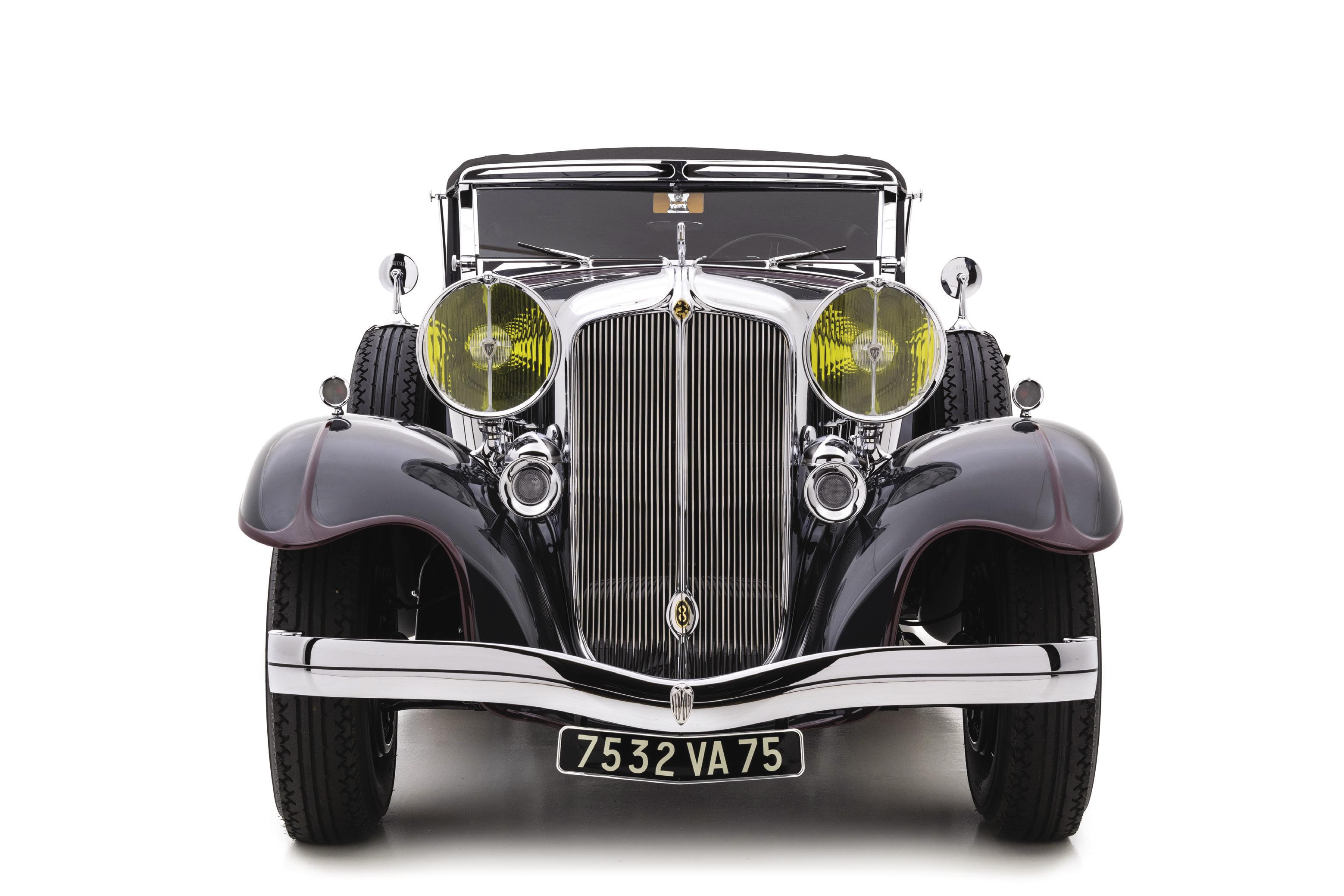
Give us a great car and we’ll get you a great price. The consignment program for important cars. SOLD 1933 CHRYSLER CL DE VILLARS CABRIOLET I BEST IN CLASS PEBBLE BEACH® 2022 Pebble Beach® and Pebble Beach Concours d’Elegance® are trademarks and service marks of Pebble Beach Company. Used by permission.
JUST A PANEL BEATER
BY PETER M. LARSEN
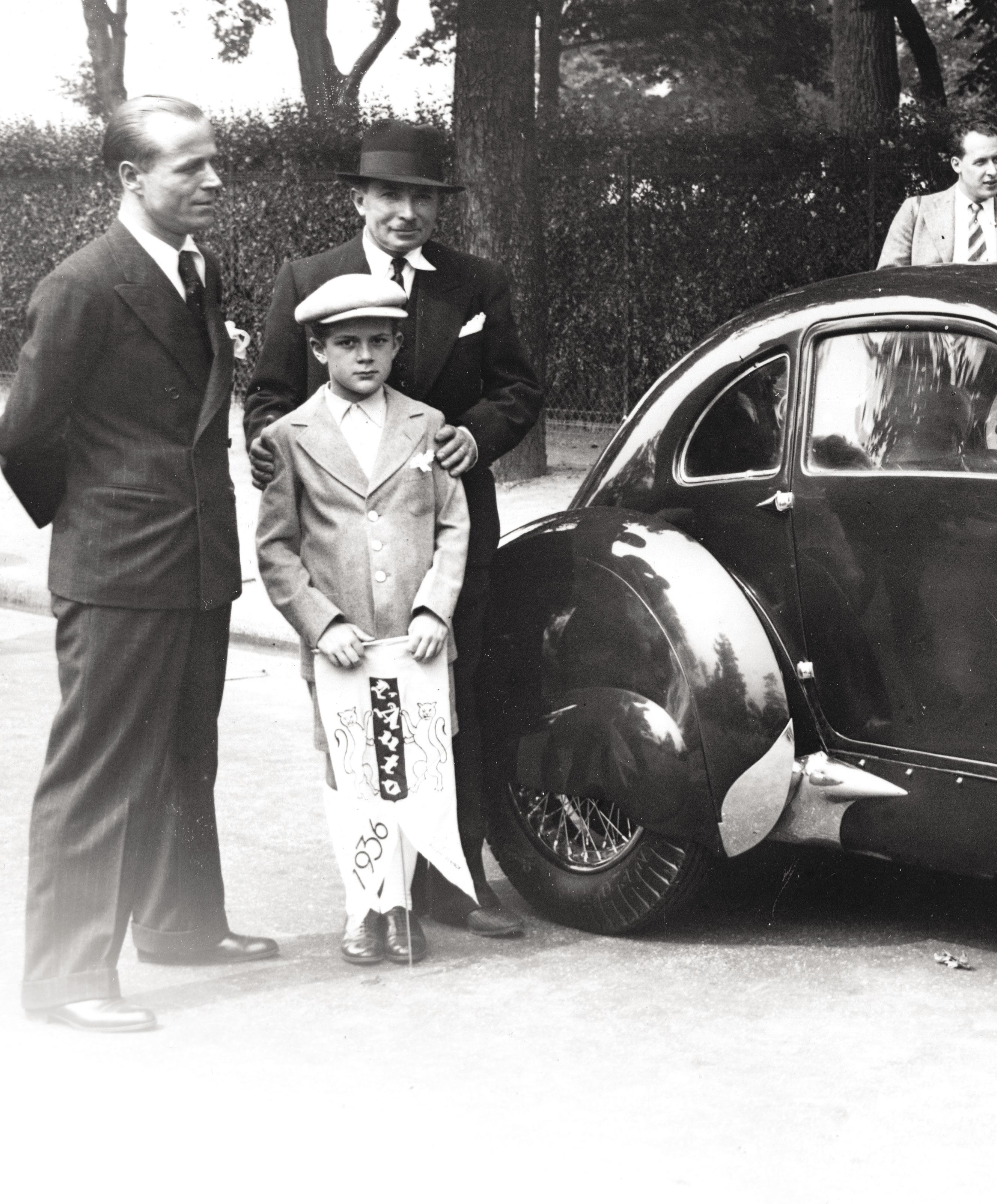
 Ovidio Falaschi and Joseph Figoni with his 8-year-old son Claude holding an event banner at the 1936 Concours d’Elegance de l’Auto in the Bois de Boulogne in Paris. They stand beside the magnificent Delage D6-70 Coupé chassis 50688 that raced at Le Mans the following year. The men behind the car are not identified.
Ovidio Falaschi and Joseph Figoni with his 8-year-old son Claude holding an event banner at the 1936 Concours d’Elegance de l’Auto in the Bois de Boulogne in Paris. They stand beside the magnificent Delage D6-70 Coupé chassis 50688 that raced at Le Mans the following year. The men behind the car are not identified.
“SOMETIMES IT IS THE VERY PEOPLE WHO NO ONE IMAGINES ANYTHING OF, WHO DO THE THINGS NO ONE CAN IMAGINE.”
— Benedict
Cumberbatch as Alan Turing in The Imitation Game
He was just a panel beater. His very first business card from 1921 said precisely that: Joseph Figoni, Tôlier—a shaper of metal. An unassuming man with an unassuming trade who came from very little, born as he was into an impoverished Italian family of peasant workers that emigrated to France in 1906 seeking a better life. A tiny speck in the diaspora of the hungry and weary who left their homelands in the early twentieth century to pursue happiness elsewhere.
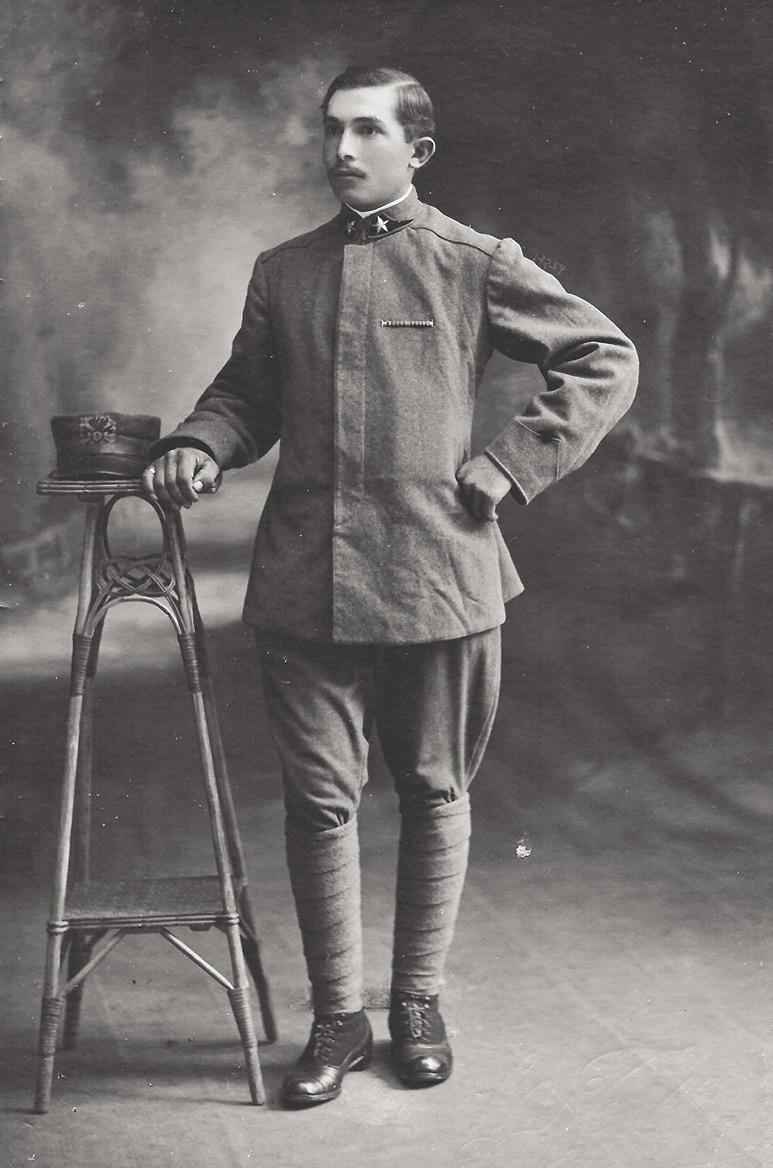
Guiseppe Hérménegilde Louis Figoni was born on December 29, 1892, at a tiny crossroads named Le Moline di Montereggio, about 45 kilometers southwest of Piacenza in the province of Parma in the Emilia-Romagna region of Italy. Life was hard, the soil unforgiving. Joseph was fourteen years old when he, his parents, brother, uncles and cousins arrived in the rue des Menus neighborhood in Boulogne-sur-Seine, known as the “Little Italy” of Paris. Like many of their kin, they settled in what was then a
working-class suburb, far removed from what is now posh and trendy Boulogne-Billancourt. It was a place where the men labored in large factories and the women sweated in industrial laundries, toiled as seamstresses, and worked at home as housewives, bringing up their many children.
Joseph apprenticed as a panel beater sometime around 1910, but because he remained an Italian citizen, he was conscripted for the Italian army in September 1913. So he fought on the side of his native country during the Great War and did not return to France until 1921, the year he married Victorine Huline in Boulogne-sur-Seine. For the next couple of years, Joseph worked for several prominent coachbuilders before founding his own coachbuilding company, the Carrosserie Joseph Figoni at 14 rue Lemoine in Boulogne-sur-Seine on November 16, 1923, two months after the birth of Catherine Figoni on August 12.
In the beginning, work consisted mostly of subcontract jobs for established coachbuilders, but it would not take long before things gathered momentum. In October 1924, the first Figoni body was shown at the Paris Salon de l’Automobile: a cabriolet mounted on a two-liter fourcylinder Ballot chassis, displayed on the Ballot stand. In June 1925, cars with Figoni bodies began to be shown at the Paris concours, including the Concours d’Élégance de l’Auto at the Parc des Princes and the Concours d’Élégance de Fémina et l’Intransigeant held at the Grande Cascade in the Bois de Boulogne. And in October 1927, Carrosserie Joseph Figoni had its first stand at the Paris Salon. Talent will out, and it was clear from the very beginning that here was a young and very gifted coachbuilder and designer at work.
Early models were so-called voitures surbaissées, or lowslung cars that used Weymann-licensed construction methods. These were built in accordance with designs based on the patents of prominent businessman Étienne Bunau-Varilla, who was the Bugatti concessionary for Paris. Indeed, Bugatti became Figoni’s first important client with some 80 bodies built, while Panhard, Ballot, and other chassis were also bodied. In the late 1920s, Delage grew to be another important client with more than 70 D8 chassis bodied, most of which were exported to England where the model was very much in fashion. As chassis with Figoni bodies were increasingly entered in the Parisian concours and seen elsewhere as well, Joseph Figoni became known as a carrossier that specialized in lightweight and sporting bodies. Up to 1930, a sleek if unremarkable design language was developed.
The spring of 1928 witnessed two major milestones in Joseph’s life. On April 28, his only son Claude was born,
JOSEPH FIGONI 42 Pebble Beach Concours d’Elegance INSIDER
Joseph Figoni wears an Italian uniform shortly after being conscripted for military service in September 1913.


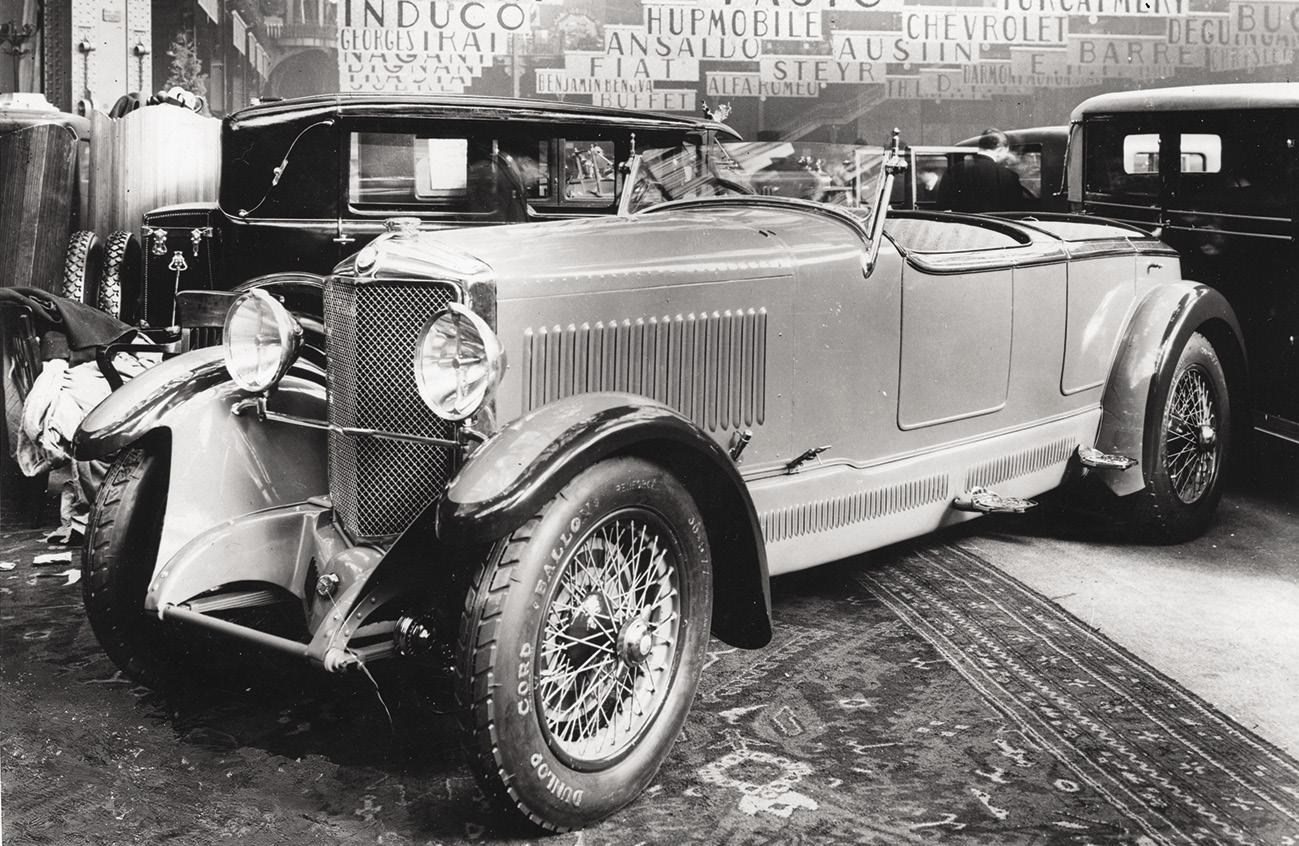 Above: Joseph Figoni (middle) celebrates the 1933 Le Mans win of the Alfa Romeo 8C 2300 (chassis 2211109), which he bodied, with drivers Tazio Nuvolari (left) and Raymond Sommer (right).
Left: This Figoni-bodied 8-cylinder Ballot was displayed at the 1927 Paris Salon de l’Automobile.
Right: Figoni et Falaschi showcased this striking 1936 Delahaye Roadster, built on a Compétition Court chassis (47247), at the 1936 Paris Salon. Its sensuous lines and enclosed fenders were the talk of not only Paris but the world.
Above: Joseph Figoni (middle) celebrates the 1933 Le Mans win of the Alfa Romeo 8C 2300 (chassis 2211109), which he bodied, with drivers Tazio Nuvolari (left) and Raymond Sommer (right).
Left: This Figoni-bodied 8-cylinder Ballot was displayed at the 1927 Paris Salon de l’Automobile.
Right: Figoni et Falaschi showcased this striking 1936 Delahaye Roadster, built on a Compétition Court chassis (47247), at the 1936 Paris Salon. Its sensuous lines and enclosed fenders were the talk of not only Paris but the world.
and on May 1 he was naturalized as a French citizen by the French authorities. This was no easy matter. Numerous letters of recommendation had been written, all testifying to Joseph’s upstanding character, while the number of employees in the Carrosserie as well as turnover and profits were all scrutinized in minute detail.
By the turn of the decade, Joseph had become a personal friend of Luigi Chinetti, who had abandoned his job as mechanic for the Alfa-Romeo racing team and now ran the small and underfunded Alfa-Romeo sales operation in Paris. Chinetti sent famed racing driver Raymond Sommer to Figoni to have his Alfa-Romeo 8C 2300 (chassis 2111018) rebodied to Le Mans specifications, and the car won the 1932 race with Chinetti and Sommer at the wheel. For 1933, the body on that car was transferred to another 8C 2300 (chassis 2211109) that then also won Le Mans, driven by Tazio Nuvolari and Sommer. Suddenly, Figoni was the hottest name in French racing circles. Clients became a who’s who of legendary drivers, and for the next three years, the Figoni works almost turned into an extension of the French Alfa-Romeo enterprise.
A 1934 collaboration with Anthony Lago was another major breakthrough, not only in terms of securing clients that wanted a custom-built Talbot-Lago, but also in making the Figoni name world famous—starting in France.
With all this activity, the small Figoni premises were bursting at the seams. Still, profits were not sufficient to allow necessary expansion, and these financial restrictions made it necessary to find an investor. This investor was Ovidio Falaschi, an accountant by trade as well as a fellow Italian who had married well and had money to spend. He became Figoni’s partner on May 16, 1935. The company was reorganized as a limited company under the name Établissements Figoni et Falaschi, and the surrounding premises were leased so that bodies could be manufactured at a rate that was a good deal faster than before. It should be noted that Ovidio Falaschi’s interest was strictly financial; he was not involved in the designs made by the company.
At the 1936 Paris Salon, Figoni et Falaschi showed a roadster built on a Delahaye 135 Compétition Court chassis (no. 47247) that stood the automotive world on its ear.

JOSEPH FIGONI
44 Pebble Beach Concours d’Elegance INSIDER
This Alfa Romeo 6C 1750 chassis 121215054 was presented by Mme. Steur at the 1934 Concours in Nice.
Not merely in Paris or France, but also internationally, this amazing body drew headlines everywhere. With design input from Geo Ham, the car’s futuristic enclosed fenders and swoopy lines defied all current thinking of how a car could look. In one fell swoop, Figoni et Falaschi had become a world-famous coachbuilder and design house.
From 1936 up to the outbreak of World War II, Joseph designed a series of dazzling coachbuilt Delahaye coupés and cabriolets. A number of even more breathtaking styles were created on Talbot-Lago chassis, such as the famous T150 C-SS Coupé Amerique, commonly known as the Goutte d’Eau, or teardrop—never mind that Joseph Figoni himself referred to this iconic style as simply a faux cabriolet. The slightly off-beat Coupé Amerique moniker came into being because this most famous of French cars made its debut at the 1937 New York Auto Show.
By 1939, Figoni designs were regularly written up by motoring journalists across Europe as well as in England and America and discussed in detail for their design, innovation, and extraordinary beauty. So much so that the
French government decided to send a V-12 Delahaye 165 Figoni cabriolet (chassis 60744) for display at the French Pavilion at the 1939 New York World’s Fair. Then the War broke out, and the car never returned to France.
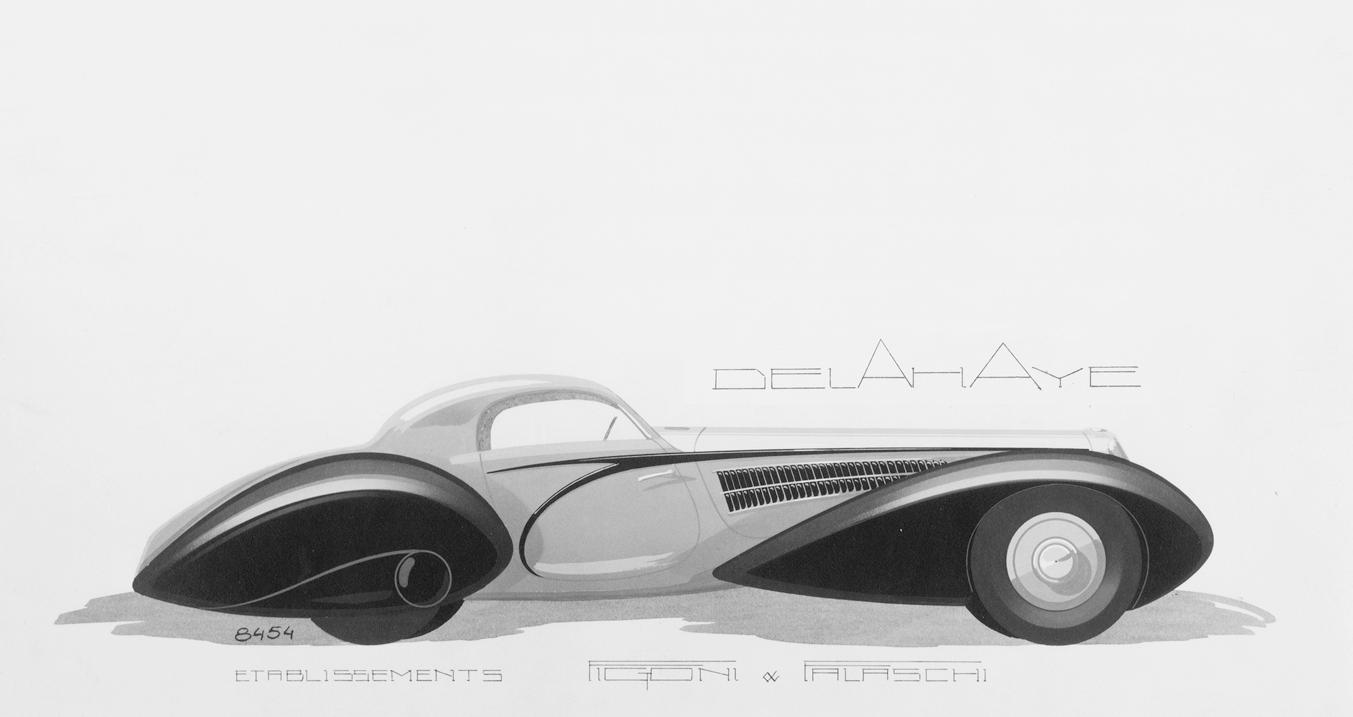
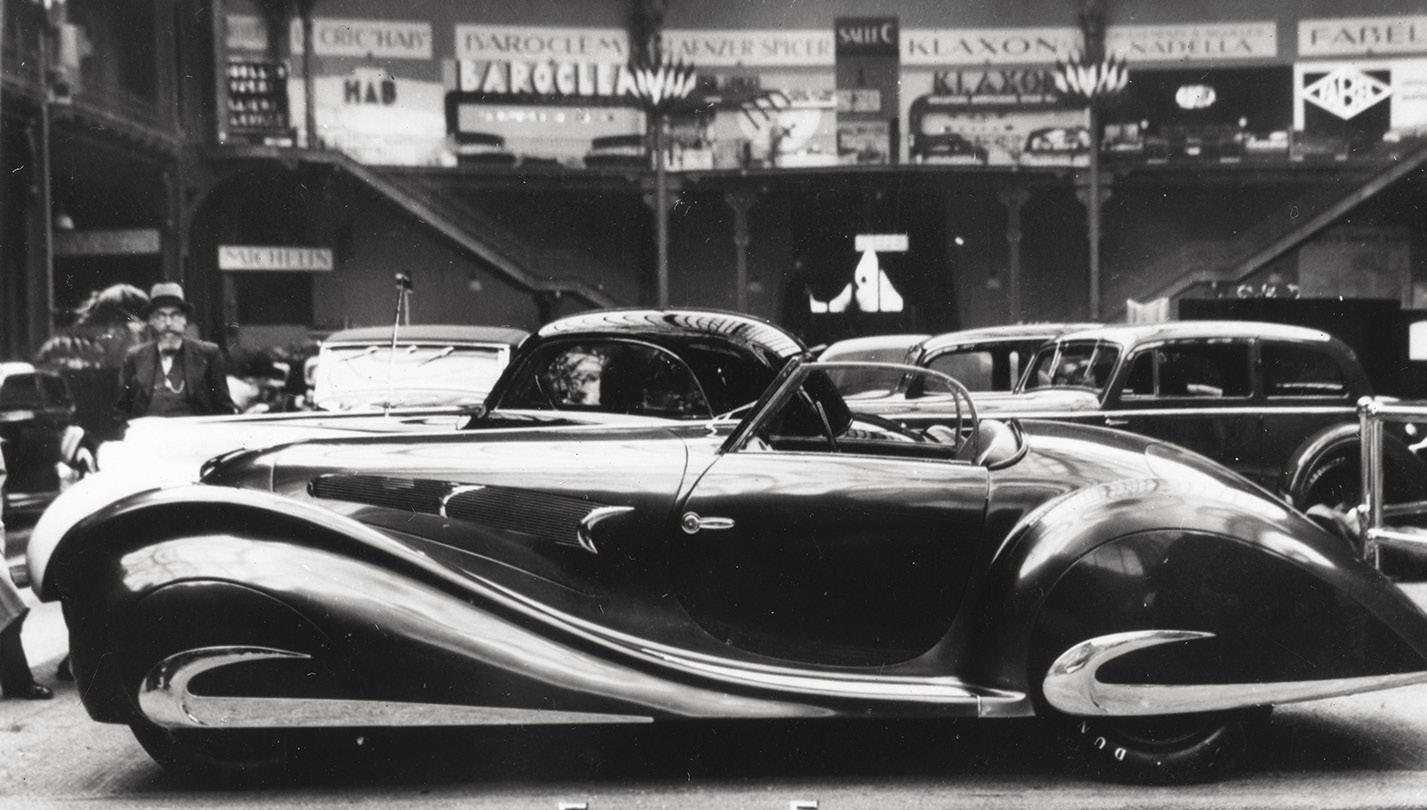
Coachbuilding activities were suspended after the German invasion of France, and the Figoni works became a subcontractor to the nearby Kellner-Béchereau works in Boulogne-Billancourt, which had transitioned from coachbuilding to airplane manufacture in the late 1930s. Ovidio Falaschi headed to Italy and Vichy for the duration, while Joseph was forced to manufacture parts on behalf of Kellner for the early jet-driven fighter planes that were being developed in Germany by Messerschmidt. Due to this, the Figoni company became peripherally involved with the resistance group called Phil that was captured by the Gestapo in October 1941, which lead to the Nazi execution at Mont-Valérien of Jacques Kellner, Georges Paulin, and others in March 1942.
To occupy his hands during the War and generate a small personal profit as everything else had been taken over by
Left: The 1936 Paris Salon also featured this 1936 Delahaye Figoni et Falaschi Roadster (on chassis 48563).
Pebble Beach Concours d’Elegance INSIDER 45
Below: Figoni et Falaschi design number 8454 for a 1937 Delahaye Coupé.
the Germans, Joseph started up a small manufacture of stoves and electric heaters that were marketed under the FiFa brand. To occupy his mind during the long evenings of the Occupation, he would sketch one fantastical design after another, inspired by the narwhal, or narval in French, an extraordinary whale that has a long helical tooth growing from its forehead.
Coachbuilding activities resumed in 1946, and in 1947 the first Delahaye with a so-called Narval body was built and shown at the Paris Salon. It was an extraordinary excursion into style, design, and form over function, with a pronounced proboscis, immense enclosed fenders, and a very long and elegant sloping rear deck. While it was a direct evolution of the 1939 V-12 Delahaye that had been shipped to the 1939 World’s Fair, the Narval design was definitely an acquired taste. Mounted on a six-cylinder 3.5-liter Delahaye 135 MS chassis offering 135 hp at the most, it was also rather more body than the mechanicals were able to propel with authority. About seven Narval cabriolets were built, and they met with critical acclaim in period concours. Today, these cars are highly sought after
by sophisticated collectors due to their flamboyance and decadent beauty.
The T26 Record chassis that Talbot-Lago made available in 1947 offered much more power than the Delahaye 135. It was a lot more expensive too—but with 170 hp available out of 4.5 liters in standard form and 190 hp when fitted with a Grand Sport engine, there was a lot more muscle on tap. In addition, whereas the Delahaye chassis dated back to 1935, the Talbot chassis was new and featured sporting roadholding and handling as well as a Wilson pre-selector gearbox. Joseph modified and toned down the Narval front end, removed the proboscis, and created a new and very elegant open front fender design, while retaining the vast sweep of the long rear end and rear fenders that seems to go on forever. The result was a magnificent and powerfullooking car with engine and handling to match, plus signature Figoni lines that will stop anyone in their tracks.
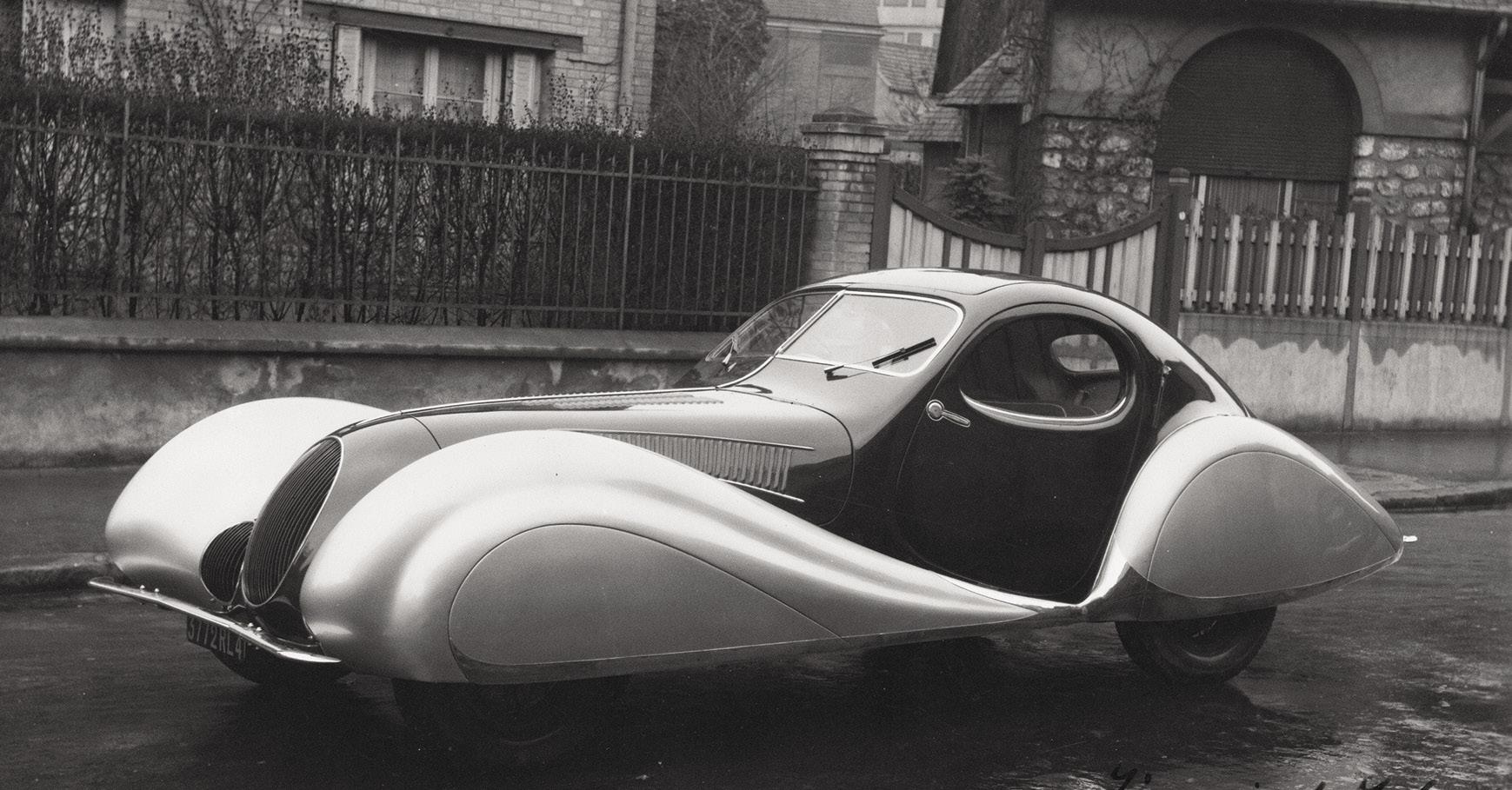
The 1947 to 1950 period can be regarded as Figoni’s last spate of great creativity. Ovidio Falaschi left the partnership on July 19, 1951, under acrimonious
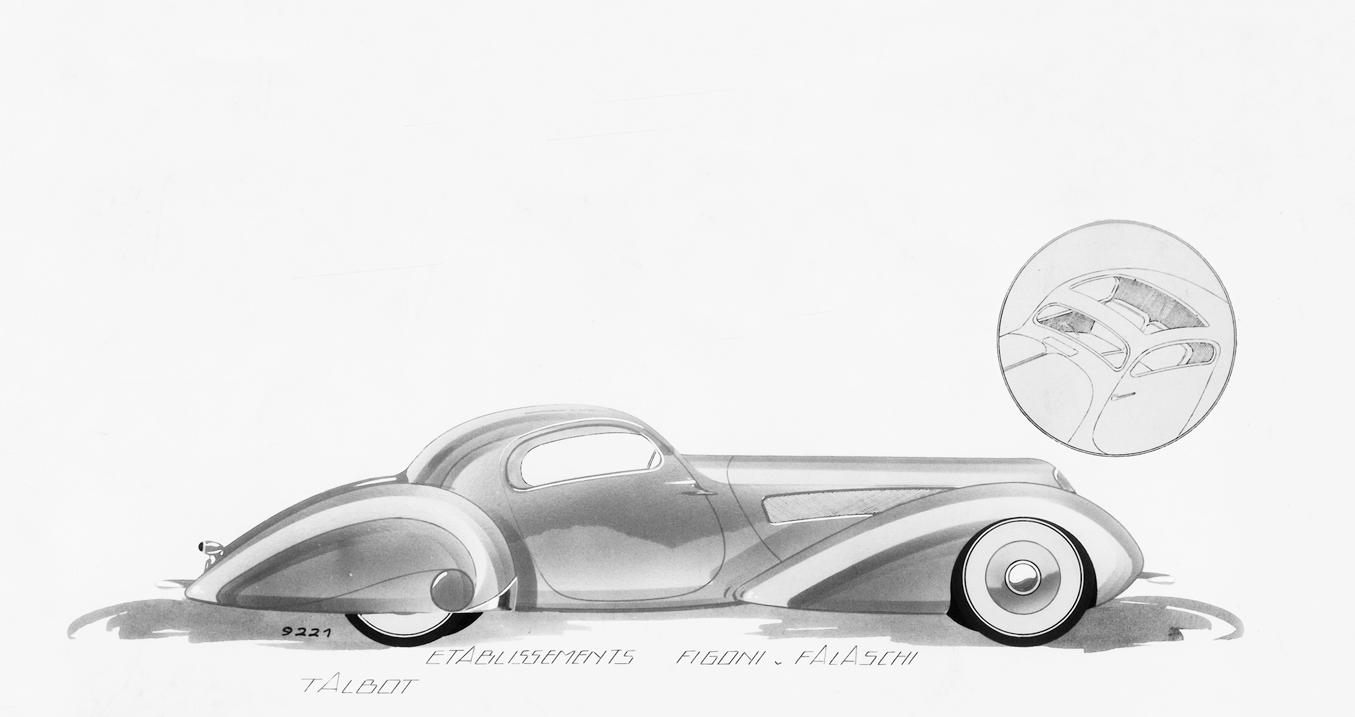
JOSEPH FIGONI 46 Pebble Beach Concours d’Elegance INSIDER
Left: This 1937 Talbot-Lago T150-CSS Teardrop (on chassis 90107), photographed when new at the Figoni premises in the rue Lemoine in Boulogne-Billancourt outside Paris, is the only existing such car with enclosed front fenders. Below: Figoni et Falaschi design number 9221 for a 1937 Talbot-Lago Teardrop Coupé.

 Famed entertainer La Môme Moineau poses on the door of her 1939 Delahaye 135 Cabriolet (chassis 60173), competing at a June 1939 concours in the Bois de Boulogne.
A 1938 Talbot-Lago T150-CSS Roadster (chassis 90111), one of two and the only existing complete car, takes to the road in Nice soon after its initial delivery.
Famed entertainer La Môme Moineau poses on the door of her 1939 Delahaye 135 Cabriolet (chassis 60173), competing at a June 1939 concours in the Bois de Boulogne.
A 1938 Talbot-Lago T150-CSS Roadster (chassis 90111), one of two and the only existing complete car, takes to the road in Nice soon after its initial delivery.
INSIDER 47
Pebble Beach Concours d’Elegance
circumstances and retired to the Hotel Rex, a beach property he had bought in Marina di Massa on the northwestern coast of Italy. There, he passed away on November 27, 1965. Joseph soldiered on in an increasingly inimical climate in postwar France, and the company was reorganized once again, its name now changed to Établissements Figoni et Compagnie. Small displacement Simca platforms provided the bulk of the business.
All went well until Simca decided it would rather work with someone more industrial and less artisanal: Jean Daninos, an up-and-coming business tycoon who controlled F.A.C.E.L. Metallón, which would introduce the Facel Vega marque in 1954. The writing was on the wall: 1954 also marked the last time Figoni had a stand at the Paris Salon, where a Simca Aronde Filante was shown, built on one of the last platforms Simca delivered to Figoni. Joseph handed the daily running of the company over to his son, Claude, who became its director. It was clear to Claude that the old ways could not continue, and he handed his father an ultimatum: either the company would stop building carrosseries and start making money again, or he would leave and seek greener pastures elsewhere. Joseph bit the bullet, and coachbuilding activities closed down


permanently toward the end of the year. Aftermarket trim and dress-up pieces for Simca Aronde models continued to be manufactured, but the firm would never be the same.
Under Claude Figoni’s guidance, the company became a BP Petrol station in 1956 and a Lancia dealership in 1961. Joseph retired officially that year, and on February 17, 1975, he received La Croix de Chevalier de l’Ordre National du Mérite, presented by the honorary president of the Fédération Française de la Carrosserie, M. Marcel Martin. It was a well-deserved knighthood. Marcel Pourtout, his famous colleague and competitor from the old days, was there to congratulate him. Joseph Figoni died just three years later, on March 30, 1978, at 10:30 p.m. at no. 15 rue de l’Église, his private apartment in connection with the shop. Victorine outlived him by ten years, dying on January 25, 1988.
Joseph Figoni has left a monumental legacy. He may have called himself a panel beater, but he became a virtuoso in the art of shaping metal. His death was the passing of one of the greatest maestros of style and design, a creator of unadulterated beauty, that the world had ever seen.
JOSEPH FIGONI 48 Pebble Beach Concours d’Elegance INSIDER
Left: Claude Figoni, son of Joseph Figoni, poses with a Figoni-bodied Simca in front of the Arc de Triomphe. Below: A direct front view of a 1937 Talbot-Lago T150-CSS Teardrop (built on chassis 90106).
A 100% made in Italy
The Outlierman X 24 Hours of Le Mans collection
The Outlierman launches a series of 100% Made in Italy limited-edition accessories in the colours of the legendary 24 Hours of Le Mans. All the fine silk, cashmere and leather creations are inspired by the symbols of the Circuit of the 24 Hours and derive from the craft of Italian elite designers and master artisans from Naples and Como. Each design will be a chapter of a great story to remember and collect, celebrating the myth of the 24 Hours of Le Mans.
exclusive
We are honored to be once again partner of the Pebble Beach Concours d’Elegance®with a new limited edition tie that pays tribute to the 100th anniversary of a luxury vehicle brand that has made history. Our 100% Made in Italy tie summarizes the passion for legendary cars as well as the pursuit of elegance and excellence in every detail: the same values that bind us together, since 2016.
Pebble Beach® and Pebble Beach Concours d’Elegance® are trademarks and service marks.

Discover all the collections at www.theoutlierman.com
A VERY PARTNERSHIP SINCE 2016 WORLDWIDE SHIPPING
LaVine Restorations
& THE NEXT GENERATION
 A 1923 Rolls-Royce Silver Ghost destined for Pebble Beach is initially disassembled and documented before restoration work begins.
A 1923 Rolls-Royce Silver Ghost destined for Pebble Beach is initially disassembled and documented before restoration work begins.
50
Pebble Beach Concours d’Elegance INSIDER
BY KANDACE HAWKINSON
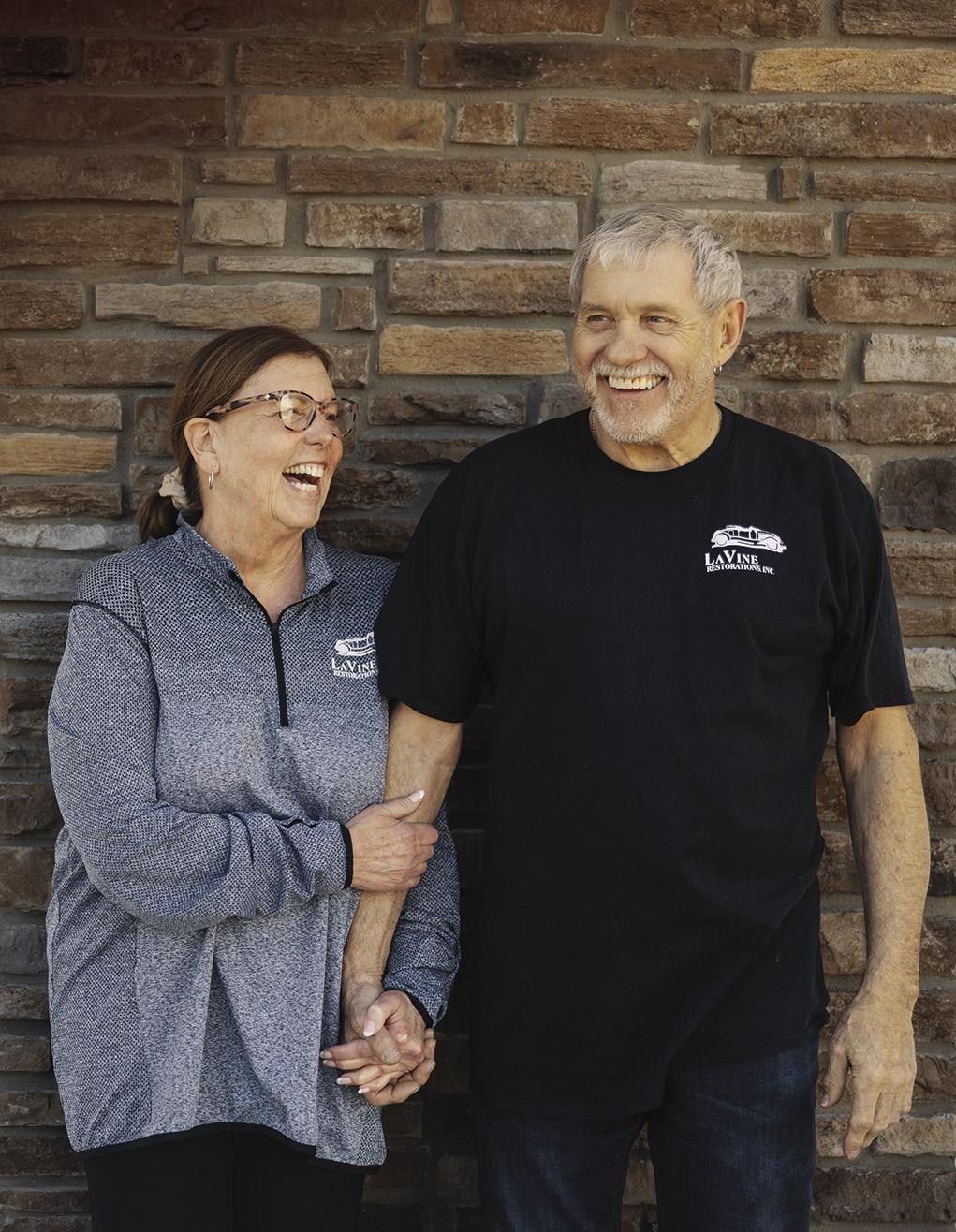

 Travis LaVine and Jason Stoller are leading the path to the future, utilizing computers, CNC machines and 3D printers.
Vivian and Eric LaVine founded their restoration business 48 years ago, after salvaging their own tattered Triumph.
Travis LaVine and Jason Stoller are leading the path to the future, utilizing computers, CNC machines and 3D printers.
Vivian and Eric LaVine founded their restoration business 48 years ago, after salvaging their own tattered Triumph.
51
Pebble Beach Concours d’Elegance INSIDER
At age 10 or 12 Travis LaVine wanted to turn the parts bay of his family’s restoration shop into a roller rink. On more than one occasion, he was found skating around it—and he still gets teased for that. But Travis has a ready defense: the concrete was smooth, and the bay seemed cavernous when new, particularly given what preceded it.
For years after starting their business, Eric and Vivian LaVine worked from home. “Dad worked out of the garage,” says Travis, “Mom had her office in the breezeway, and the house was used for parts storage. We basically lived in the basement!” The LaVines all chuckle at the shared memory. With four kids of their own and foster kids coming and going (some 40 official and non-official, over time), space was tight.
As their work was recognized and their reputation grew, the LaVines started to add the now-15+ employees they count as family, too. Some are family in fact, such as Eric’s twin brother, Marc, who has worked with them as a mechanic, machinist and fabricator for 35 years, and Vivian’s nephew, Brad Lawson, who is the heir apparent to Eric’s paint booth. Some are that because the LaVines define family in a broad way. “Once we take you in, that’s what you are to us,” Vivian says simply.
In 1987, the LaVines were able to purchase a body shop just two doors up the road from their home in Nappanee,
Indiana, and they gradually expanded on that shop, establishing separate rooms for intake and disassembly, paint, parts, metal work and fabrication, body and woodwork, and reassembly—as well as a routine service bay.
“It was a magical place,” Travis remembers. “It was where I most wanted to be, helping my dad, listening to music. Maybe it’s odd, but it’s the music I remember most from that time—specifically Creedence Clearwater Revival, the Chronicle II album. We still play that now. We’re still into ’60s and ’70s rock.”
Travis, now 38, has a clear appreciation for the past, particularly as it relates to the cars that have surrounded him throughout his life. At the same time, he is leading LaVine Restorations into the future.
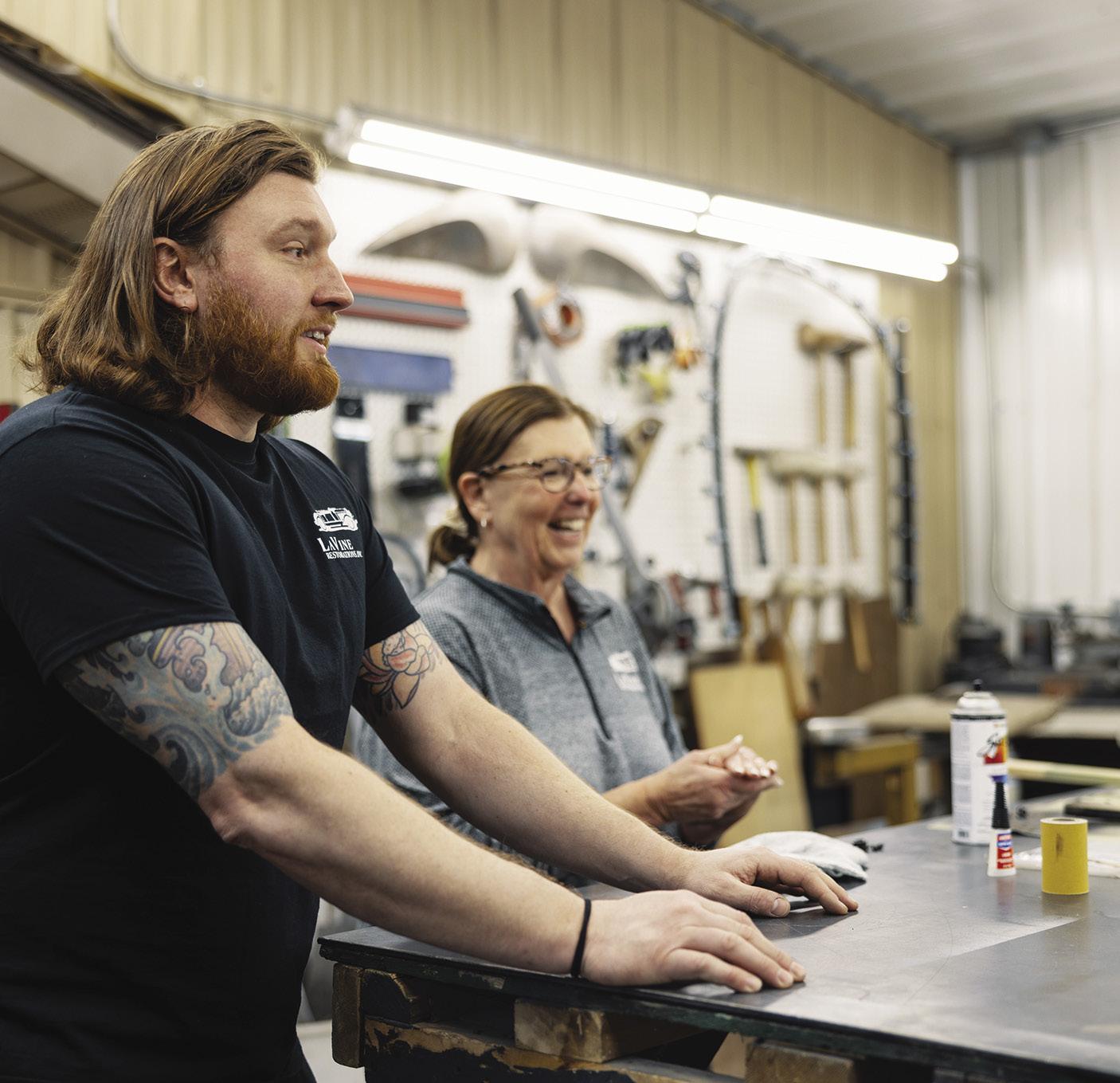
That was not the plan a decade back when Travis was focused on a career in the law.
Eric LaVine has strong memories of working on cars with his own dad, who was employed by Studebaker, in South Bend, for nearly 40 years, and who also put his mechanical skills to good use at home, sparking Eric’s interest. And Vivian reports that she was “always a car girl.” Soon after they married, they bought a tattered Triumph TR 250 sports car and spent the winter fixing it up.
LaVine Restorations
52 Pebble Beach Concours d’Elegance INSIDER
Travis and his mom, Vivian, share some of their latest successes—most of which are team efforts.
Eric sat parked in that Triumph, waiting for Vivian outside the print shop where she worked, when her boss, Harold Fairchild, spotted the car and went to take a look at it. Unbeknownst to the LaVines, he was a car nut and had seen that car before—when it was rough and rusted through. When he realized the LaVines had restored it themselves, he led them up to his “kingdom of cars” a couple floors above the print shop, where he had about 15 antique automobiles tucked away.
“From there, one thing led to another,” says Vivian. They began to do some work for him, and he introduced them to their first large collector, S. Ray Miller, who often shared his cars at various meets and shows whereby “we got to know a lot of people.”

The decision to make restoration their business was a gradual but natural choice: “We both decided that this was a passion for us, and we were going to pursue it,” says Eric. “And we’ve been fortunate to have met the right people and be able to show them what we can do.”
It was through Ray that the LaVines met Tom Lester, who proposed they restore his 1928 Minerva Type AF Hibbard & Darrin Transformable Town Car in a manner befitting Pebble Beach. “That was the goal for the Minerva all along,” says Eric. “Tom wanted to show a car at Pebble Beach, and he didn’t want to be embarrassed. Neither we nor Tom, none of us, had been to Pebble Beach before, so we knew nothing about it.”
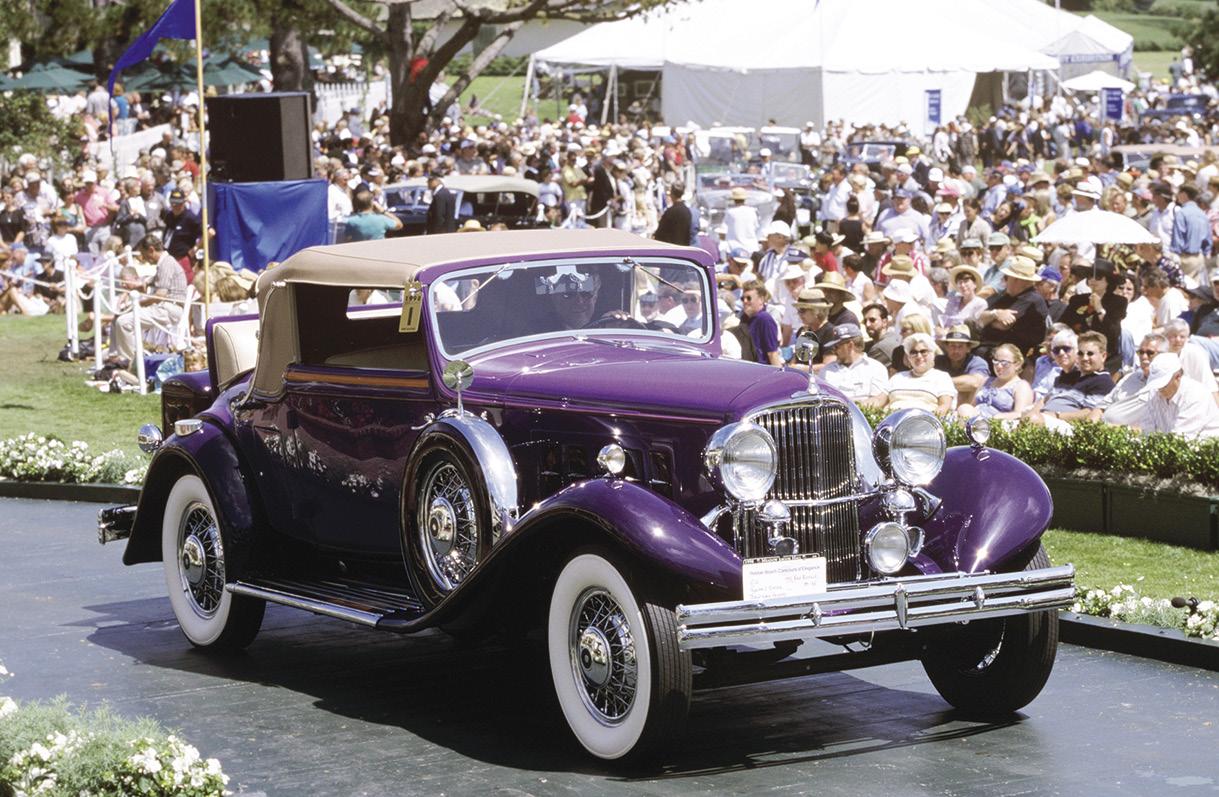
“Well, we knew it was a big deal,” says Vivian. “But we were naïve about what it turned out to be and what winning there meant.”
Win they did, taking home not only First in Class, but Best of Show in 1987.
The LaVines have returned to Pebble Beach with a restoration, or two or three, nearly every year since then. And many of their restorations continue to be shown even decades after the work was done; recently they counted a total of seven of their restorations on the Pebble Beach show field in the same year—some fresh, some decades old.
Below: This 1932 Reo Royale Murray Convertible Coupe, restored by the LaVines for Ralph J. Boyer, won its class in 1998.
I recognized what my mom and dad had built, and I just couldn’t let it end.
—Travis LaVine
Pebble Beach Concours d’Elegance INSIDER 53
Eric LaVine refreshes a 1930 Cord L-29 after its appearance at Hampton Court.
They did re-restore the Best of Show–winning Minerva after it was purchased by collector Jack Boyd Smith Jr., who took home another First in Class ribbon with it in 2018.
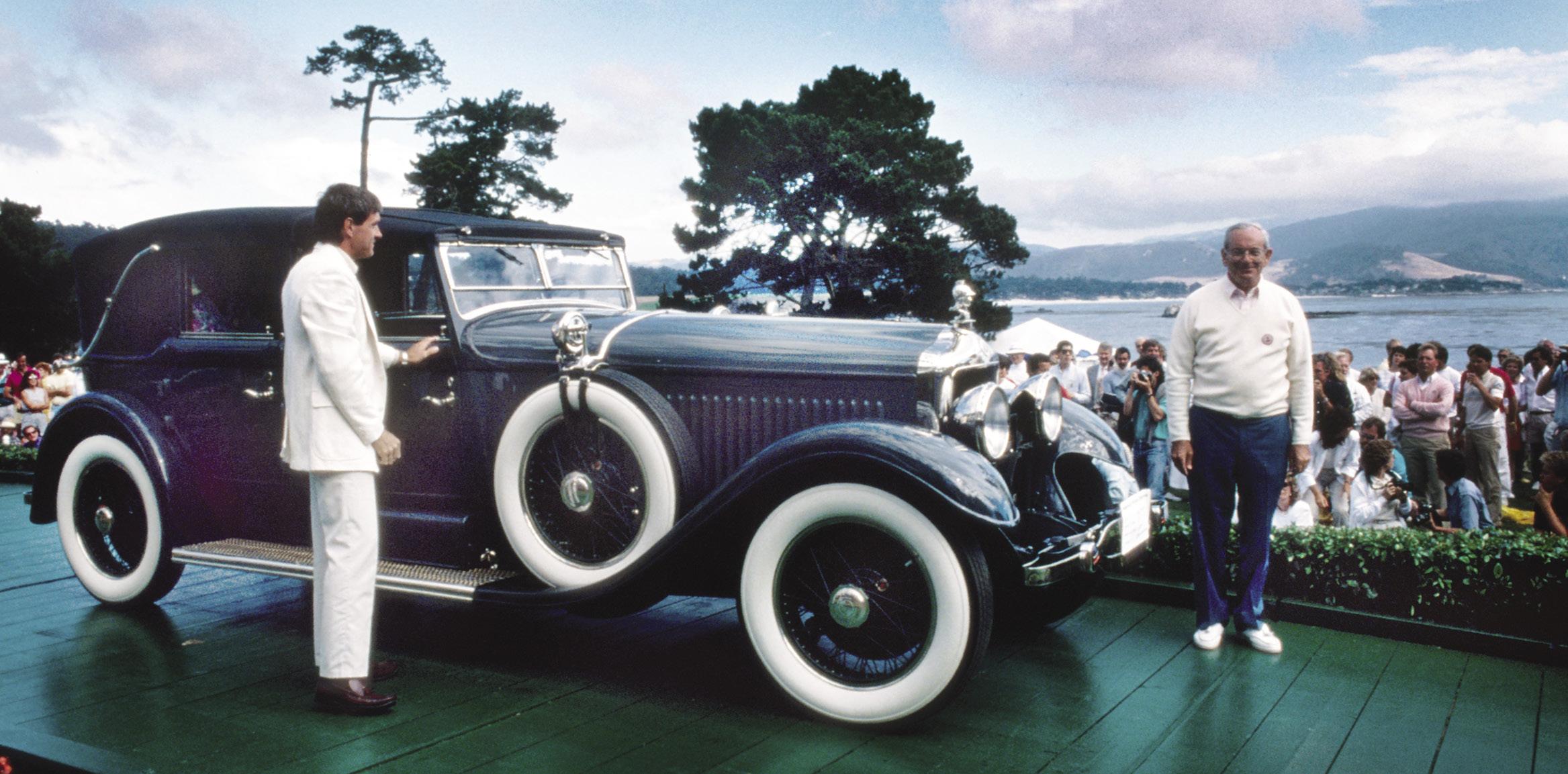
“Working on the Minerva again was a bit bittersweet,” says Vivian. “You realize how much you’ve learned, how much has changed since you did what was then your best work. Authenticity is more important, and expected, now. So we adjusted colors and made several small changes. We also went through the whole chassis again, the Knight sleeve valve engine, the radiator—and I still have scars on the backs of my hands from redoing the running boards, which have German silver scrapers on them. They’re all serrated, and there’s just no way to handle them without getting cut. The rods have to be taken apart, polished, and put back together, and I did that both times.”
The range of their expertise is now both deep and wide. The LaVines have handled everything from the complete restoration of a 1903 Curved Dash Oldsmobile to the paintwork on a modern McLaren. American and European classics and postwar sports cars are their “bread and butter,” but, as Eric notes, they take on other cars “when someone does some arm-pulling.” In their shop on one given day this spring, a 1923 Rolls-Royce Silver Ghost was in pieces in the assembly area, a 1930 Cord L-29 was being refreshed after a recent appearance at Hampton
Court, a 1961 Oldsmobile Starfire was undergoing some finishing touches, and a Graham-Paige resto-mod was being customized. In addition to Pebble Beach, LaVine restorations frequently compete—and win—at The Amelia, Villa d’Este, Hampton Court, and a host of other Concours and car shows throughout the US and Europe. The LaVines also accompany their clients on distant rallies (Travis has just returned from South Africa’s Cape 1000). And their reach extends far beyond such events: they are currently consulting with the Vatican on the restoration of the first Popemobile; they recently worked with members of the Bahá’í faith on a car for Israel; and a 1936 Cord 810 owned by Amelia Earhart that they restored and showed at Pebble Beach in 2021 is being inducted into the National Historic Register this year.
More than a decade back, to ensure the continued success of their business, the LaVines put a succession plan in place. Their four children were off pursuing their own passions—Alycia, their eldest, owned a salon; Travis had his law career; and the two youngest, Madysen and Kerygan, were still in school but focused on becoming nurses—so Eric and Vivian began to groom a longtime employee to take over. It came as a shock to learn, a few years later, that that employee was leaving: “He just realized he could never take the place of the two of us,” says Vivian.
LaVine Restorations
54 Pebble Beach Concours d’Elegance INSIDER
This 1928 Minerva Type AF Hibbard & Darrin Transformable Town Car, the LaVines’ first effort to bring a car to Pebble Beach, earned a Best of Show ribbon for owner Tom Lester in 1987.
Travis heard the news from Alycia. After graduating Summa Cum Laude from Michigan State University’s College of Law, Travis had focused for a time on environmental law, but with undergrad majors in math, economics, and finance, he transitioned to tax law. He was securely settled at a noted Chicago firm, with ongoing expressions of interest from others, when his sister’s call upended his world: “I loved what I was doing—and I was great at it—but I loved my family more.”
He began to think about returning home, and when the thought persisted, he took a summer off to mull it over. Sitting around a fireplace at Pebble Beach that August, collector Jack Boyd Smith Jr. offered his unvarnished advice: “He told me to take back the shop,” says Travis. “In fact, he said I’d be an idiot not to.” And despite more lucrative job offers, that’s what Travis chose to do: “I recognized what my mom and dad had built, and I just couldn’t let it end.”
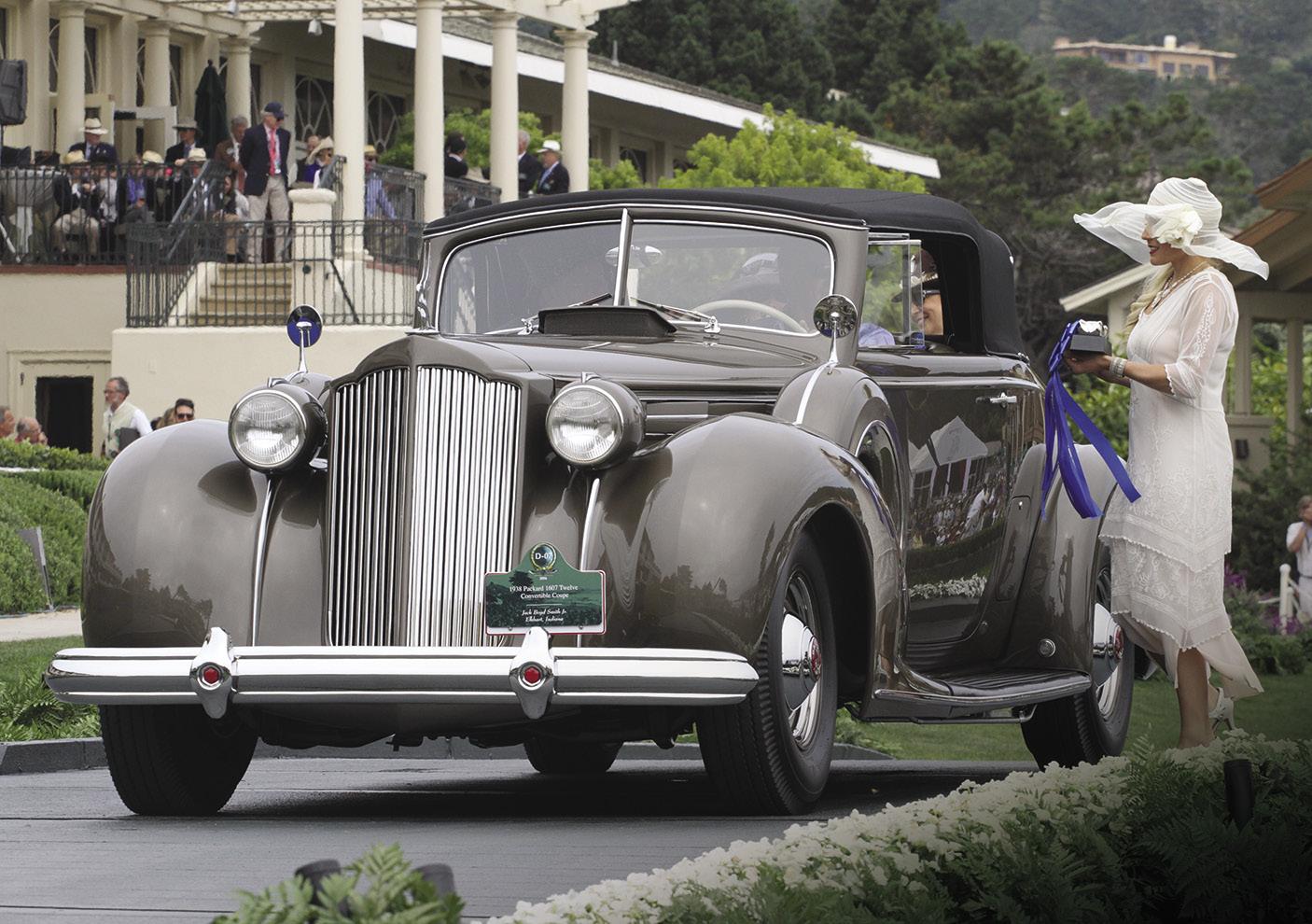
Having made that decision, Travis knew he needed a partner. So, he turned to his best friend, Jason Stoller, who
had been his listening ear as Travis sought to make his decision. (Travis met his wife, Liz, more recently, and she is supportive but works as a hospital administrator.)
Jason had studied to be an electrical engineer and initially used that knowledge to help integrate emergent sensor tech into hip and knee implants. When some of his ideas were patented, he was encouraged to become a US patent attorney—and he was in Munich, Germany, practicing intellectual property law when Travis floated the possibility of a partnership. He said yes.
“We call Jason our adopted son,” says Vivian. Adds Eric, “A lot of people think they’re actual brothers.”
LaVine Restorations is now celebrating its 48th year in business, and it is undergoing a slow transition: Travis and Jason have moved into managerial roles, and new staffers have joined the effort.
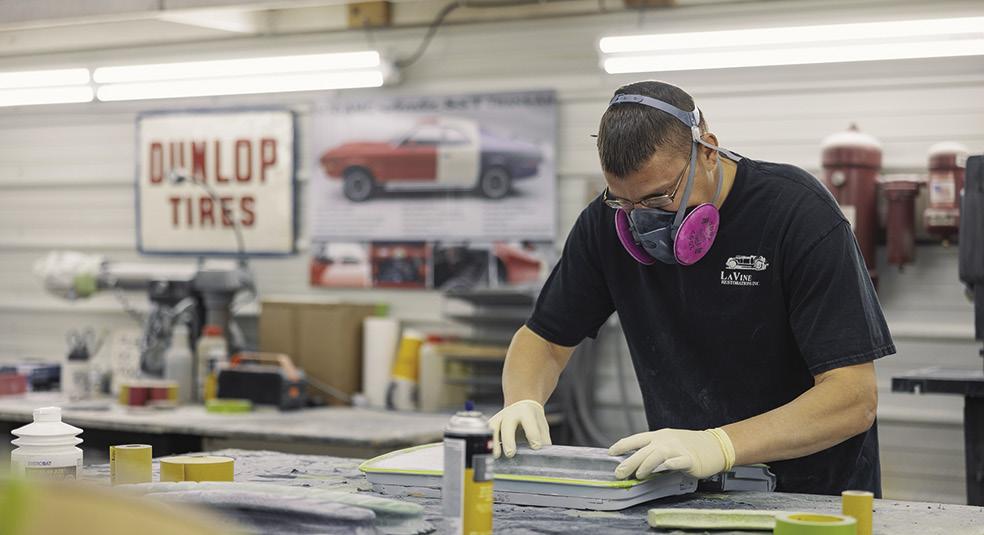
“We’re an interesting combination of old school and new school—and I’m the old school,” says Eric, now 73. At 21, body man William Baldwin is the youngest full-
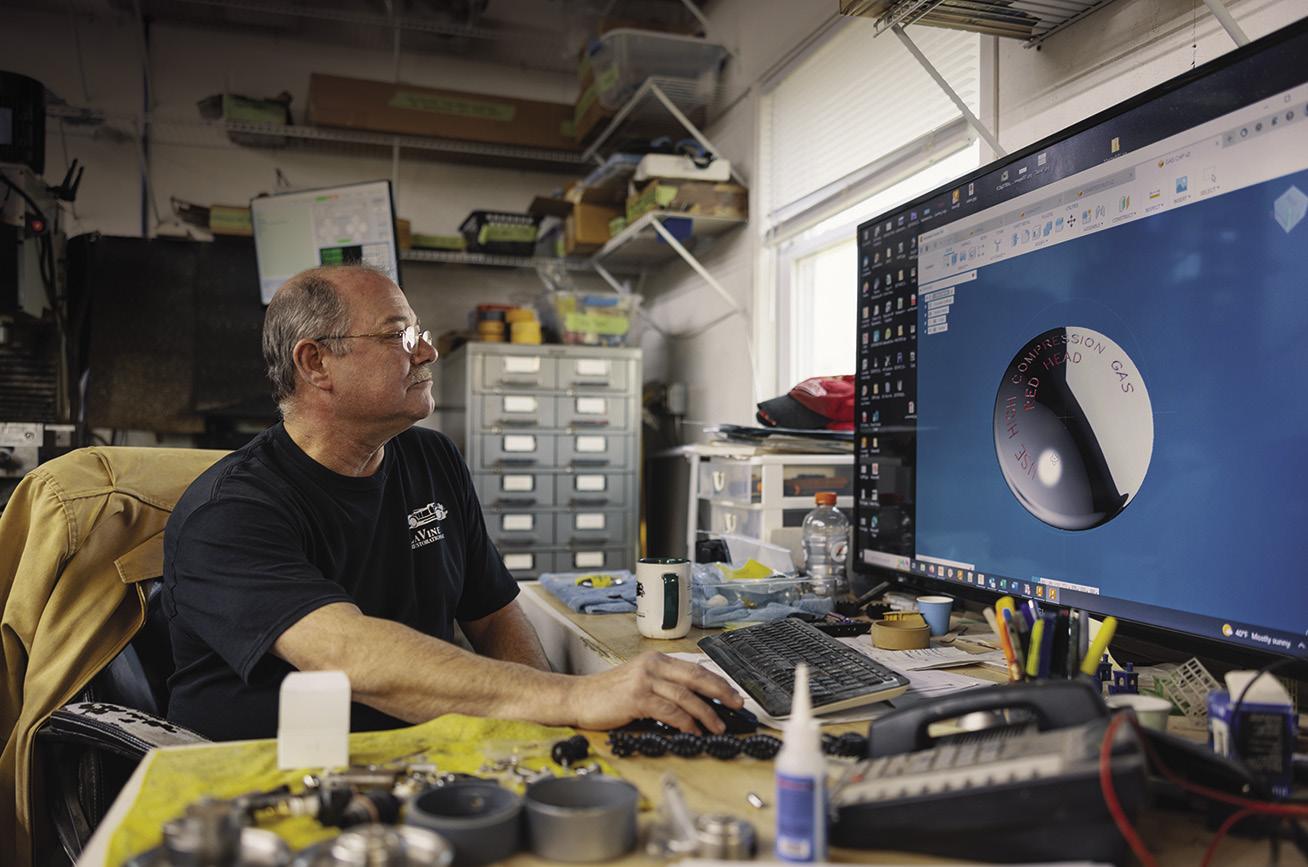
We’re an interesting combination of old school and new school— and I’m the old school.
—Eric LaVine
In 2016 Jack Boyd Smith‘s 1938 Packard Twelve placed First in Class–another of many wins by LaVine Restorations. Troy Craig, manufacturing engineer, does much of his work on a computer.
Pebble Beach Concours d’Elegance INSIDER 55
Brandon Williamson, the senior body man, sands a door.
time employee. And Kayleigh Andrews, the daughter of machinist Troy Craig, is involved in managing what everyone calls “The Knob Shop,” the newest addition to the restoration operation, where plastics are in play and computers, CNC (computer-driven numeric control) machines and 3D printers hold sway.

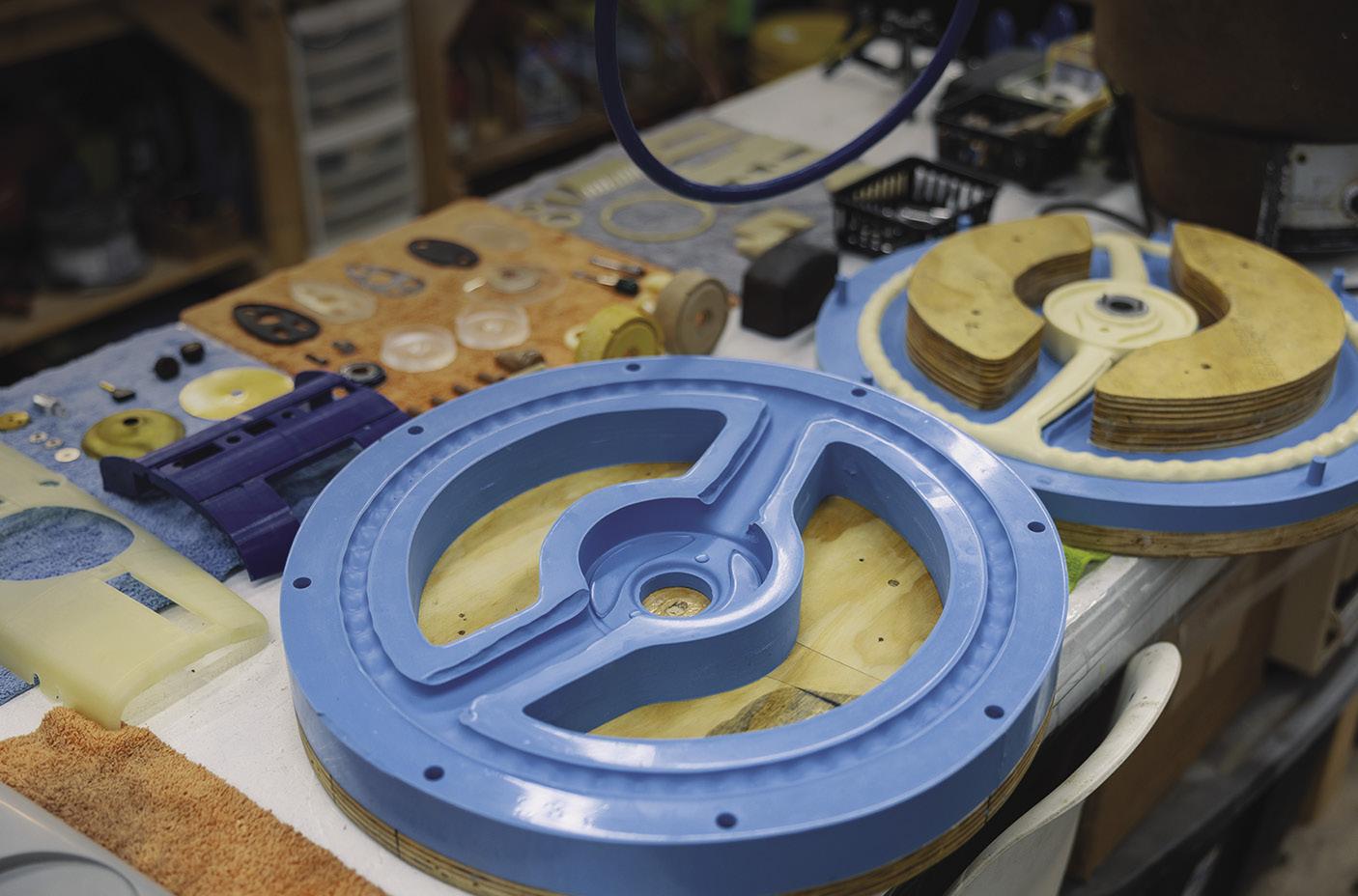
LaVine Restorations is about both tradition and change. “We call this ‘combining new technologies with old methodologies,’” says Travis.
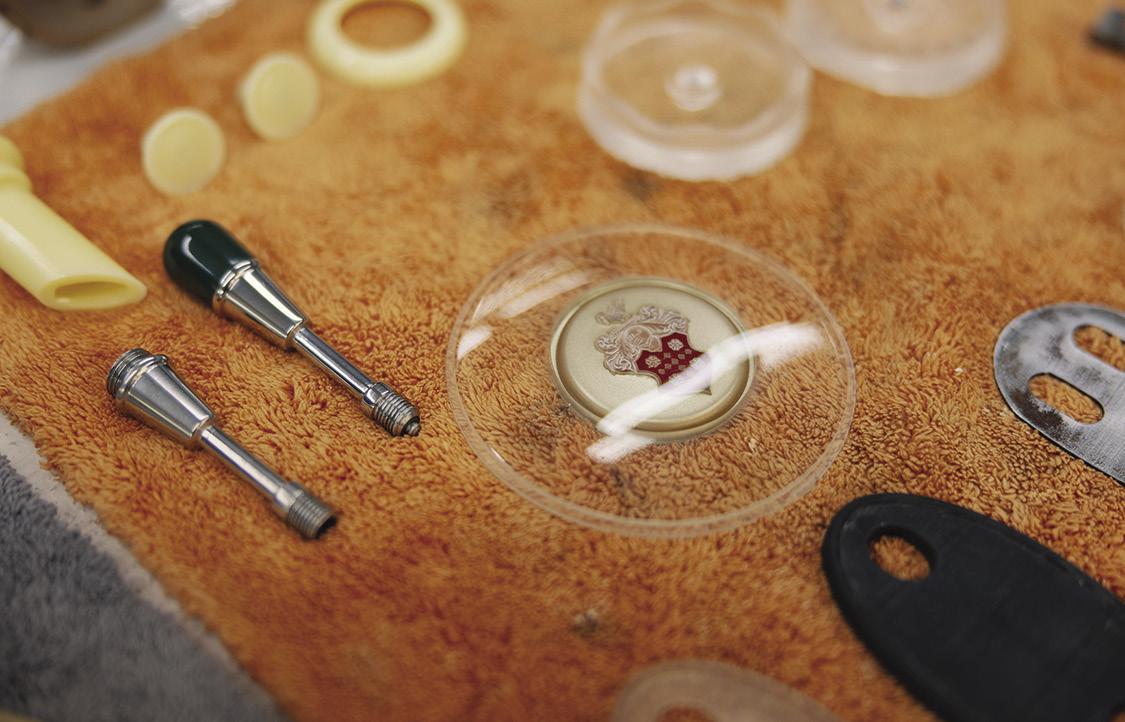
“It’s interesting to think about how technology impacts the way we restore cars. We were one of the first restoration shops to take photos of cars and car parts as we worked on them. We now take thousands of images, and everything is up on a cloud-based shared drive, with monitors mounted throughout the shop and iPads where those images can be referenced. And we’re now creating original designs with new technology. We’re not making things perfect; we want to make things right. New tech helps you make things that no longer exist and make them more authentic. I think the next evolution of this industry is going to focus on provenance and authentication down to the nuts and bolts level.”
While focused on their own restorations, the LaVines took one major step toward helping the classic car hobby as a whole in 2008, when they agreed to continue the work of Pulfer & Williams, a small company that provided a large service: researching, matching and providing period-correct data tags for a wide variety of collector cars and motorcycles.
That led, in turn, to their purchase of Yesterday’s Radio in 2014: “The owner [of Yesterday’s Radio] saw what we were doing with the data tags, supporting authenticity,” says Vivian, “and called and asked if we might be interested in his business too.” It wasn’t focused solely on radio knobs; it collected and sought to re-create the plastic parts that are important elements in many classic cars, providing them to restorers worldwide.
Cellulose-based plastics were high end back in the early 1900s, when they were new. By way of example, Travis cites the fact that the Titanic featured then-new linoleum tiles on its grand staircase. In the same period, a host of items, such as billiard balls, shifted from being carved of wood or cast in metal to being created with resins and celluloids. Unfortunately, such products fluoresce in sunlight and degrade in heat, changing and often cracking over time.
LaVine Restorations
A steering wheel emerges from a mold.
56 Pebble Beach Concours d’Elegance INSIDER
At the center of many newly crafted parts rests the horn button for Senior Packards from 1941 to 1947. The LaVines now create nearly all of the celluloid products used by Packards, and they are expanding to other marques as needed.
Again, the LaVines agreed to step in and supply the industry with the much-needed parts. So began The Knob Shop. As a start, they now supply nearly every plastic part that Packard utilized, and they are increasing their inventory marque by marque as needs rise and requests come in.

New tech allows for an object to be even more authentically itself. With new tech, you can peek below the surface of an object and measure things like the thickness of a layer of paint. You can perfectly match a color. You can determine how to replicate the exact level of reflection in a gloss. At the same time, new tech paves the way for subtle improvements.
“Things are exactly as they were, but slightly better,” says Travis. He holds up an original small Nash Healey turnsignal indicator with multiple parts, many of which are fragile, subject to failure, impossible to find and almost impossible for restorers to fix; with each fix, failure is more likely. The LaVine team now offers the turn signal in one piece that looks and acts exactly as the original but is much less likely to fail. Similarly, many of their plastic parts now look and function exactly as they did, but their formulation includes an additive that protects them from the effects of light and heat, so they will hold up better. (New products include markings to indicate they are reproductions, of course, so they are not confused as originals in the future.) The goal is to lessen both the cost of restoration and the need for it over time, keeping collector cars on the road.
With new technologies come new challenges, of course. Computers need to be programmed, and chemistry and physics come into play time and again. It took weeks of thought to determine how best to create a steering wheel with multiple planes via a method that relies on gravity pouring a solution into molds while allowing air bubbles to escape. It took almost as long to find the perfect way to recreate the texture of the battery key of an early Indian motorcycle by using a mix of sand blasting and polishing to create a “pitted” but slightly glossy, even surface.
“We want to truly honor the past, to push the level of detail and authenticity forward,” says Travis, “but it sometimes takes several swear words [‘some creative language,’ Vivian interjects] to get to that point.”
They know the industry is struggling: “There’s not a shop in the country that isn’t running on fumes right now,” says Travis. “We’re constantly trying to figure out how to create what no longer exists, replacing old suppliers with new sources, bringing in new equipment and seeking to be creative with it.” Time and again, amidst their conversations, the LaVines reference other restorers and restoration shops, present or past, that they admire, have learned from—and enjoy competing against: “We hope our own efforts inspire them,” says Travis. “We hope they know we are thinking about them, and we want them to succeed.”
Despite the many challenges, the magic remains.
“This is an incredible profession, a noble one,” says Travis. “We’re playing chess with the past—and that’s awesome.”
Pebble Beach Concours d’Elegance INSIDER 57
The LaVine team: Kayleigh Andrews, William Baldwin, Marc LaVine, Travis LaVine, Vivian LaVine, Brandon Williamson, Eric LaVine, Brad Lawson, Jason Stoller, Nick Blume, Troy Craig, Ty Cloud and Beth Slos. Missing from the photo are Dave Slos, Grant Johnson, Noah Yutzy, and Alycia Miller.
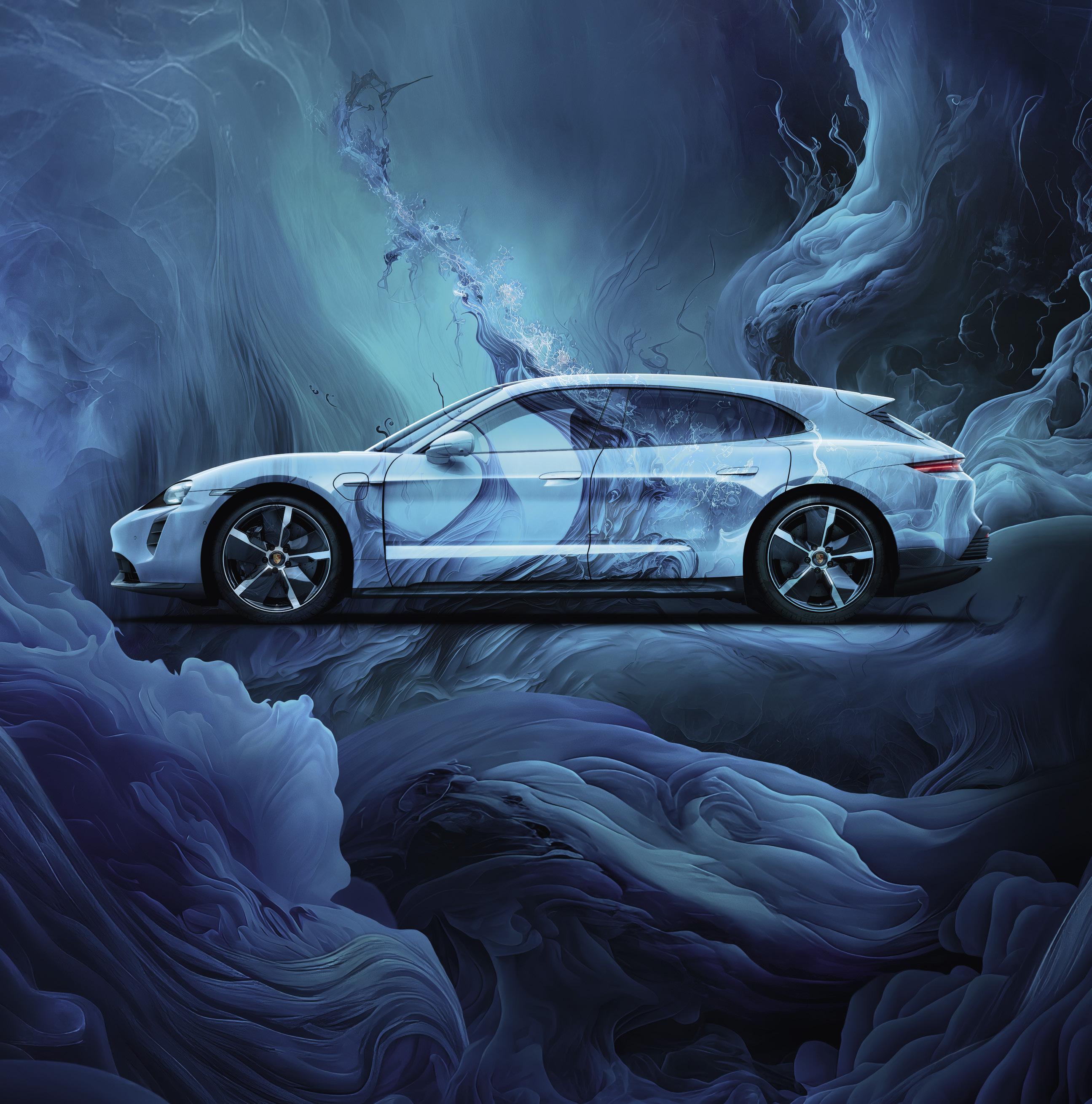
Driven by Dreams. Bravely celebrating 75 years of Porsche. © 2023 Porsche Cars North America, Inc. Porsche recommends seat belt usage and observance of traffic laws at all times.
THE SOURCE FOR SUPERCARS SINCE 1985
For over 38 years, we’ve curated the world’s largest audience of engaged automotive collectors and enthusiasts who rely on us to buy or sell their exotic, luxury or classic car. Let us do the same for you.

SCAN TO SHOP OR SELL
BY SANDRA BUTTON
THE 1000 MIGLIA EXPERIENCE UAE
Four Days, Seven Emirates, One Hundred Cars & Over One Thousand Kilometers
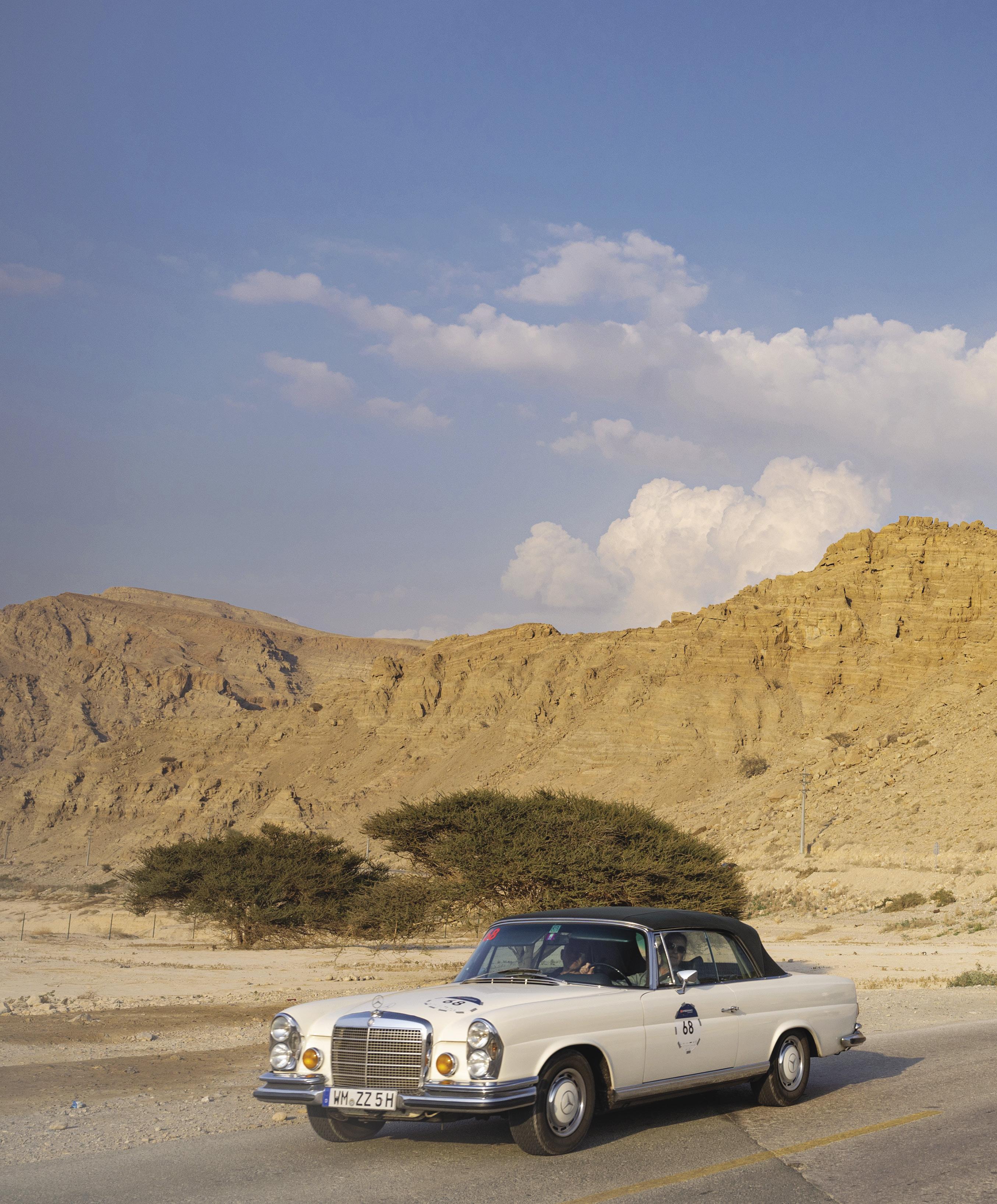 Sandra and Martin Button enjoyed the luxury of driving an air-conditioned Mercedes-Benz 280 SE 3.5 convertible as they navigated the route of the 1000 Miglia Experience UAE.
Sandra and Martin Button enjoyed the luxury of driving an air-conditioned Mercedes-Benz 280 SE 3.5 convertible as they navigated the route of the 1000 Miglia Experience UAE.
JAIS
MOUNTAIN �AS AL KHAIMAH BEACH

�AS AL KHAIMAH
UMM AL QUWAIN
AJMAN
SHA�JAH
HOUSE OF WISDOM
STA�T
DUBAI DOWNTOWN
YAS MA�INA CI�CUIT
EMI�ATES PALACE
FINISH
ABU DHABI
DUBAI
LEG 1
Dubai ➔ Fujairah
LEG 2
Fujairah ➔ Ras Al Khaimah
LEG 3
Ras Al Khaimah ➔ Dubai
LEG 4
Dubai ➔ Abu Dhabi
FUJAI�AH BEACH
FUJAI�AH
While much of the rally route passed through desert and mountains, it also traced the edge of the Gulf of Oman, the Persian Gulf, and several historic wadis as well as man-made dams and water features.

When my husband, Martin, and I decided to go on the 1000 Miglia Experience in the United Arab Emirates, we expected to see many things we had never before seen. Nevertheless, we did a double-take at the sight that greeted us on Day One as we entered the Off Road History Museum in the Emirate of Sharjah.
Sporting pants coordinated with the orange paint of his 1968 Porsche 911 L, Jacky Ickx (six-time Le Mans winner with 25 F1 podium finishes) was swinging by his hands from the front axle of a gargantuan Hummer. “I’m just hanging out!” he chuckled. Catching up with old friends is always a pleasure—but seeing Jacky being Jacky in the middle of the desert was quite the unexpected family reunion.
No matter where we go in the world, no matter how spectacular the scenery or extravagant the event, it always feels like home when we are surrounded by the
incredible community of classic car enthusiasts—and so many good friends.
It was thanks to another friend and classic car devotee, Chris Clarke, that we first heard about the 1000 Miglia Experience in the UAE. He called one cold and misty afternoon in the Spring of 2022 and explained that the
“
I WANTED TO BRING ‘THE MOST BEAUTIFUL RACE IN THE WORLD’ TO THE EMIRATES ”
THE
Martin Halder, CEO Octanium
1000 MIGLIA EXPERIENCE UAE
62 Pebble Beach Concours d’Elegance INSIDER
event would be invitation only—100 cars, 1000+ kilometers, touring the seven Emirates over four days in December, when the ambient temperature is between 77 and 82 Fahrenheit. “What do you think?” Chris asked. I cast a quick look out my Carmel office window at the fogenshrouded landscape. “We’re in!”
This UAE rally was the brainchild of Martin Halder, CEO of organizing body Octanium, in partnership with the government of the UAE and the Mille Miglia of Italy. “I wanted to bring ‘The Most Beautiful Race in the World’ to the Emirates,” explained Halder at the opening dinner.
An iconic endurance race, the first Mille Miglia covered just over one thousand miles from Brescia to Rome and back in 1927—and was repeated almost annually through 1957, following several different routes and serving in its last five years as a round of the World Sports Car
Above: Jacky Ickx was “just hanging out” beneath a gigantic Hummer when the Buttons arrived at the Off Road History Museum in the Emirate of Sharjah.


Top Left: The Hummer dwarfed Sandra and Martin Button, alongside Jacky Ickx.
Left: Susan Kendall and Merle Mullin, piloting a 1958 300 SL Roadster, join other participants at the 1000 rally’s starting point—the Dubai Creek Resort.

Championship. It was reintroduced at the Mille Miglia Storica in 1977 for automobiles that raced the original event.
The Mille Miglia has been a source of inspiration in the motoring world, spawning similar events such as the 1000 Millas Sport of Argentina and the California Mille, with their characteristic time and speed trails and passage controls. Having driven many of these races over the years, I was excited to participate in the UAE iteration. Although my husband and I had been to Dubai and Abu Dhabi for various car events, we had never visited the other five Emirates: Sharjah, Ajman, Umm Al Quwain, Ras Al Khaimah, and Fujairah. So it promised to be a great adventure.
We considered taking our 1957 Mercedes 300 SL Roadster, but when Martin Halder offered us a 1971 Mercedes-Benz 280 SE 3.5 convertible already in situ,
Pebble Beach Concours d’Elegance INSIDER 63
THE 1000 MIGLIA EXPERIENCE UAE
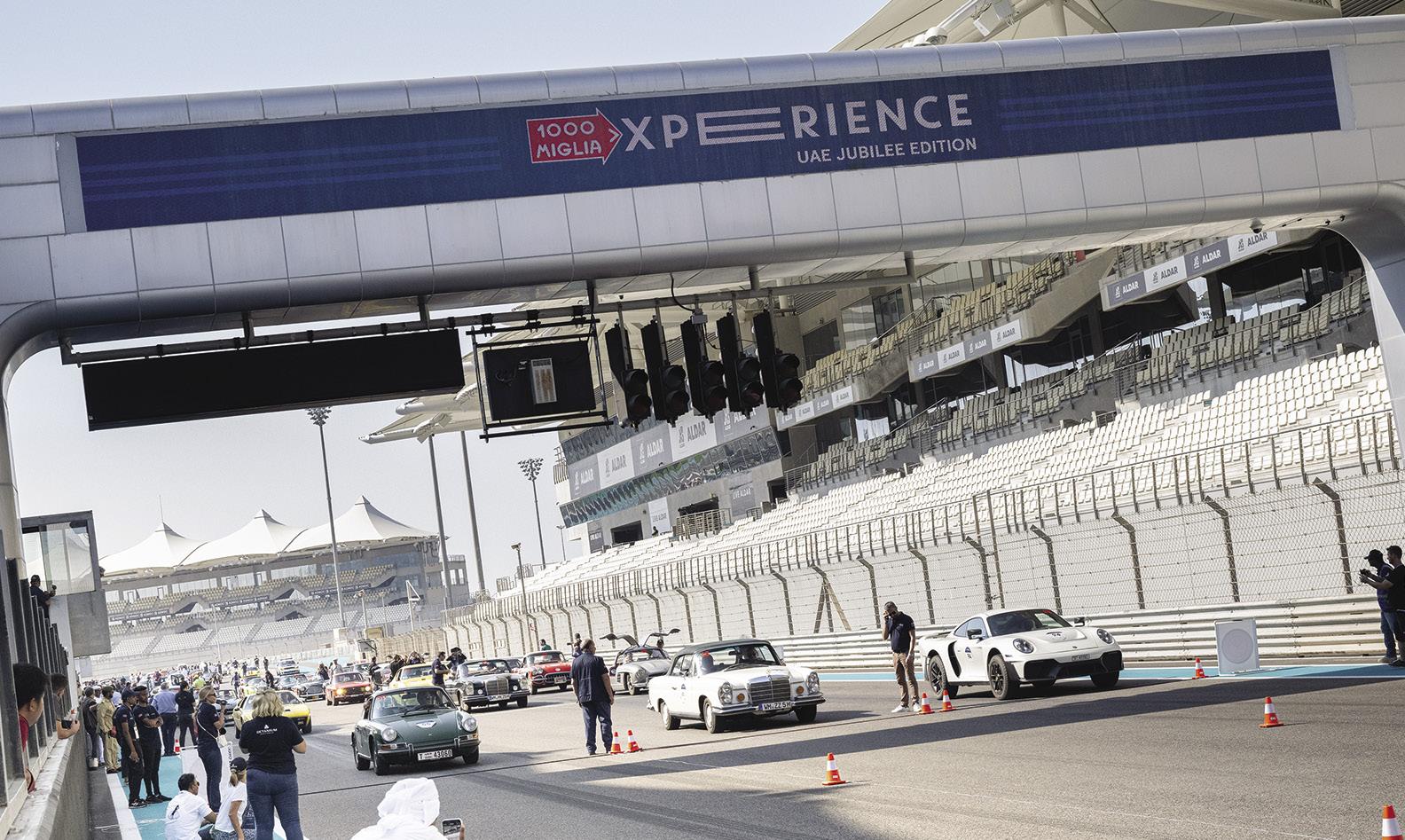
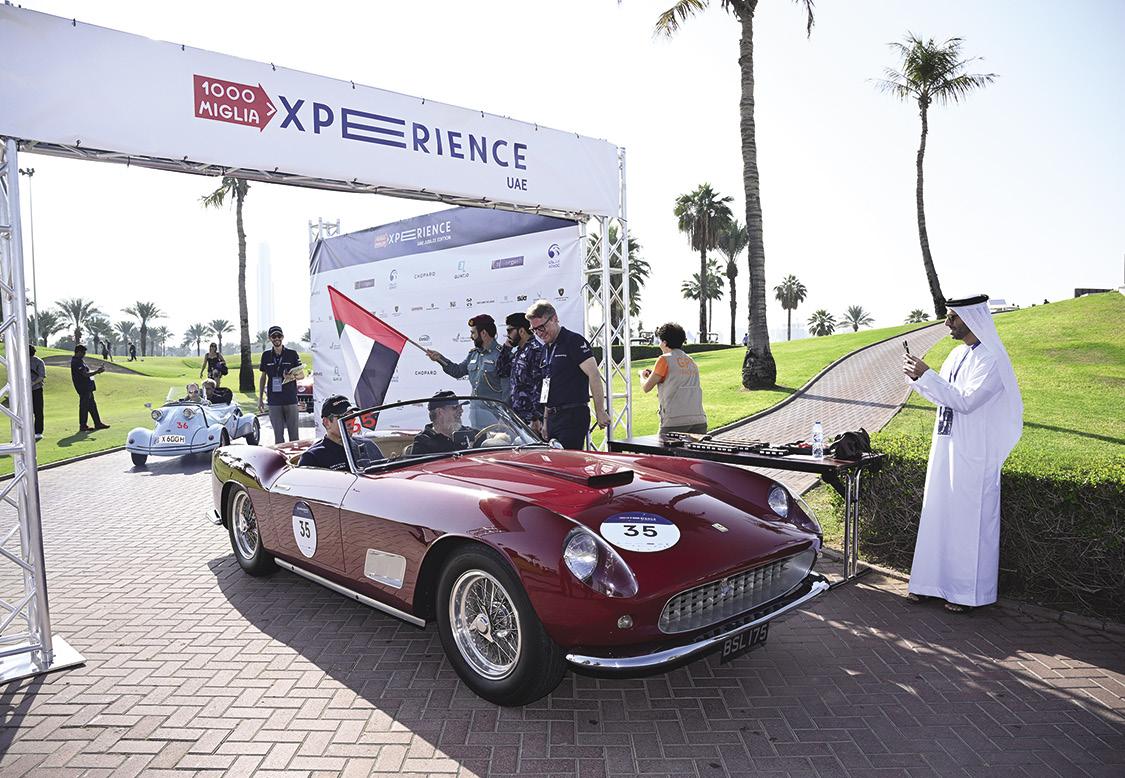
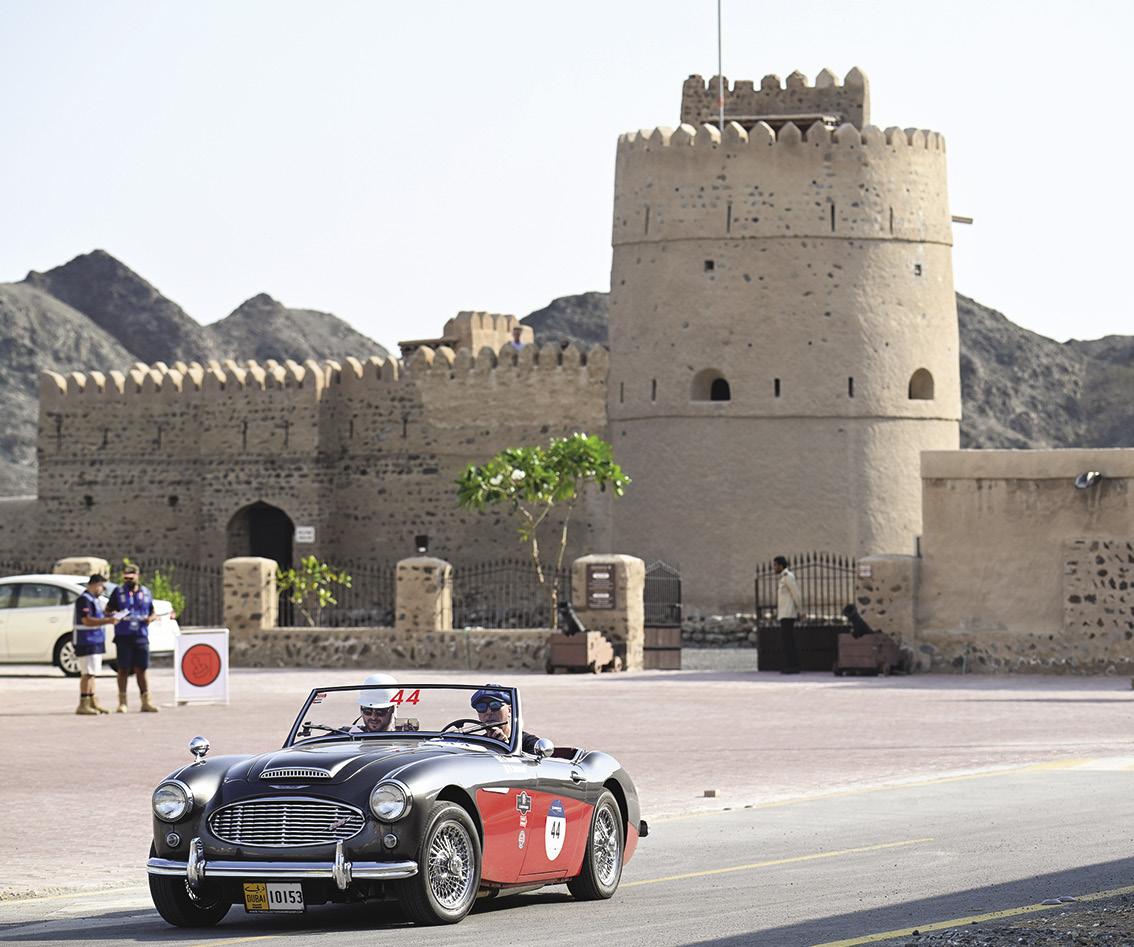
we jumped at the opportunity. Dressed in cream over green and one of a fleet of ten cars brought to the UAE rally by HK-Engineering of Germany, the 280 SE is perfect for touring; reliable, powerful, comfortable—and above all else, it has excellent AC!
Soon after our arrival in Dubai, and following registration and a brief drivers’ meeting with route coordinator John Spiller (aka “Indiana Jones” for his signature hat and safari garb), we walked to the Dubai Creek Golf Course, where the rally cars were displayed. The stellar line-up, set against the stunning backdrop of sunset over the cityscape, included a 1927 OM 665; a 1939 Bugatti Type 57 Stelvio; a 1955 Lancia Aurelia B24S; seven Ferraris, including a 1958 250 California Spyder and a 1962 250 Testa Rossa; plus ten Mercedes 300 SLs—three roadsters and seven Gullwings, one of which once belonged to Sophia Loren
and another brought to the rally for good friend and Grand Prix winner Jochen Mass. Also displayed was a 1974 Lamborghini Countach LP400 Periscopio owned by our friends Simon and Rosie Kidston of Switzerland.
Following cocktails and canapés, hosted by Chopard at the Dubai Creek Golf Club, my husband, Martin, and I opted for an early night to quash our jetlag and prepare for a prompt start on Monday morning.
DAY ONE (323 km)
Dubai ➔ Hatta Fort ➔ Fujairah
One hundred rally cars lined up along the edge of the golf course. Then the Italian Ambassador to the UAE, His Excellency Lorenzo Fanara, waved the checkered flag to mark our official departure amidst crowds of cheering spectators. As we left the hotel, we encountered the first of many treacherous speed bumps, apparently crafted at will by locals, which required some of the more contemporary icons (the 2017 Jannarelly Design-1, the 2015 W Motors Lykan HyperSport, and the 2007 Mercedes-Benz SLR McLaren 722 Edition) to side-wind across the bumps at a crawl.
Top Left: Rally participants received a time stamp at the ancient Awhala Fort, on the banks of the Wadi Al Hilo.
Above: The rally route traced the Yas Marina F1 circuit, home to the Abu Dhabi Grand Prix.
64 Pebble Beach Concours d’Elegance INSIDER
Left: William Heinecke heads out from the starting line in his Ferrari 250 GT LWB California.
Leaving Dubai, we entered the first time trial on the rally. While several drivers navigated these precision trials with stopwatches calibrated to the millisecond, Martin and I breezed through with the general aim of conceding the road to more serious challengers and preserving the harmony of our marriage. Shortly thereafter, the landscape unfolded into rolling sand dunes and open desert as we made our way to the pit-stop at the Off Road History Museum where we found Jacky Ickx “hanging out.”

Back on the road, we crossed vast lunar landscapes dotted with palm oases and striated by chains of towering electric pylons. Camels, donkeys and goats wandered roadside, seemingly unfazed by the parade of classic automobiles in their midst. Following lunch at the magnificent Hatta Fort, our route took us east through breathtaking canyons, brushing the border of the Sultanate of Oman and toggling between the Emirates of Dubai, Sharjah, Ras Al Khaimah and Fujairah.
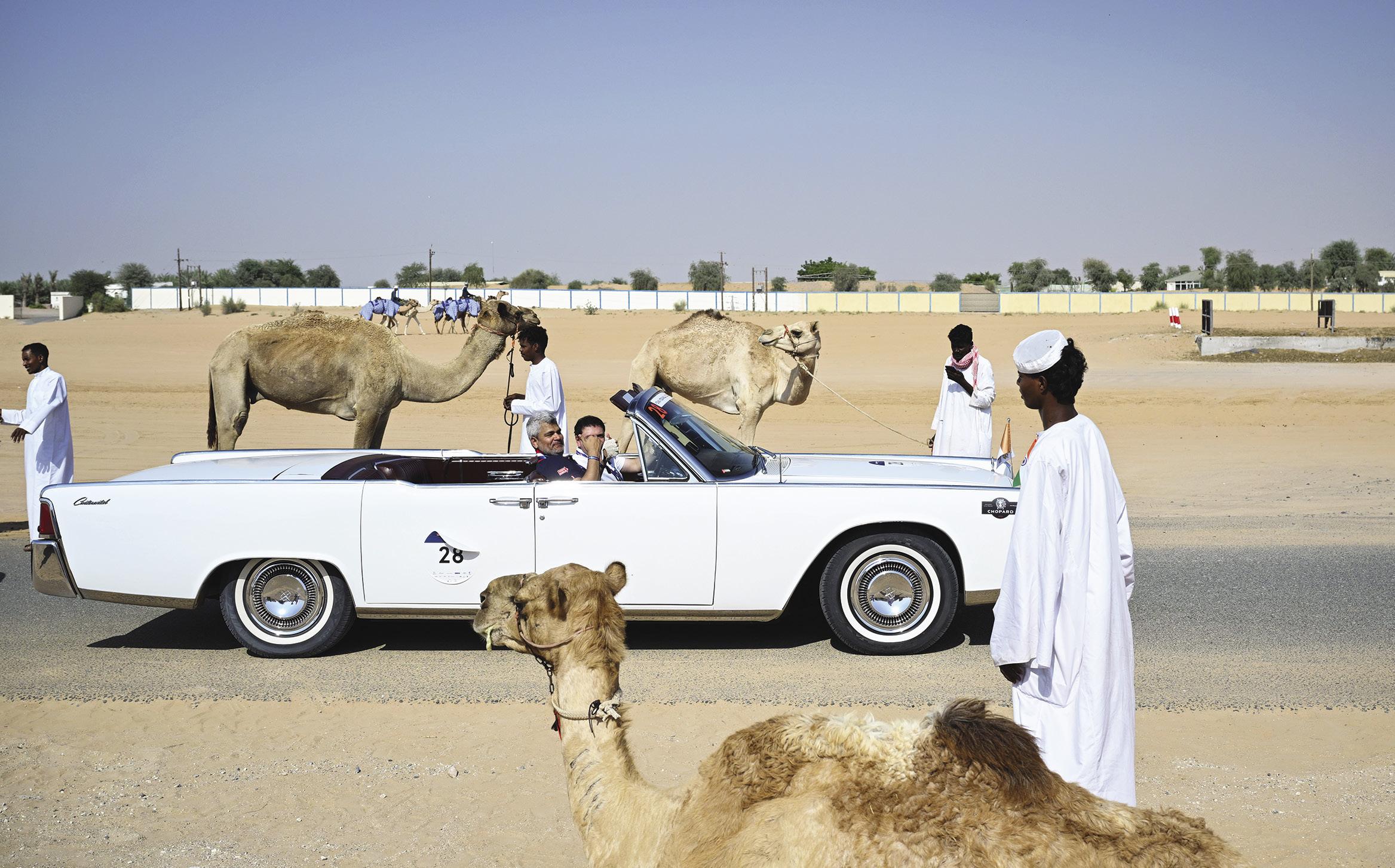 Right: Sandra and Martin take in the sights.
Right: Sandra and Martin take in the sights.
Pebble Beach Concours d’Elegance INSIDER 65
A continental beset by camels! These and other animals were a common sight, as some of the roads through the Emirates have been built on or alongside historic camel routes.
Next stop—the Awhala Fort for a time-card stamp. This ancient fort, located on the banks of the Wadi al Hilo, was an important observation point to monitor incoming traffic via the sea and mountain roads. Constructed of mudbrick and stone walls, the fort boasts an archetypal turret complete with arrow slits that would delight any small child. Shards of ceramic dating back to 1500 BCE suggest that the site has been occupied since the Iron Age. Our presence drew a crowd of local kids who high-fived us, overjoyed to see an incongruous stream of exotic cars (in particular, the brilliant yellow 1969 Pontiac GTO) pass through their village.
Upon entering Fujairah, we got our first view of the Gulf of Oman—proof that in a single day we had crossed the entire Arabian Peninsula. We made our way to the Intercontinental Hotel, left the cars safely cooling on the forecourt, and descended to the beach for dinner with friends and fellow adventurers under a waxing moon.
DAY TWO (375 km)
Fujairah ➔ Jebel Jais ➔ Marjan Island
I was really excited about Day Two’s route to the top of the highest mountain in the Emirates—the famed Jebel Jais. As we left the hotel, we were passed by the green 1970 Ferrari 365 2+2 and the red 1962 Ferrari 250 Testa Rossa, which we saw moments later “chatting” on the roadside with local police! Following a brief time trial, we ascended into the mountains and paused for a cappuccino at a café overlooking the filmic scenery surrounding Khor Fakkan.
Back in the valley, the air became thick with dust as we entered a dystopian landscape dominated by huge cement plants and roads choked with enormous dump trucks. (The United Arab Emirates produce over 25 million metric tons of cement a year, both for export and the domestic market—not surprising when one considers the rate of construction in the Emirates, with 25 percent of the world’s cranes located in Dubai alone.) Martin, my co-pilot and
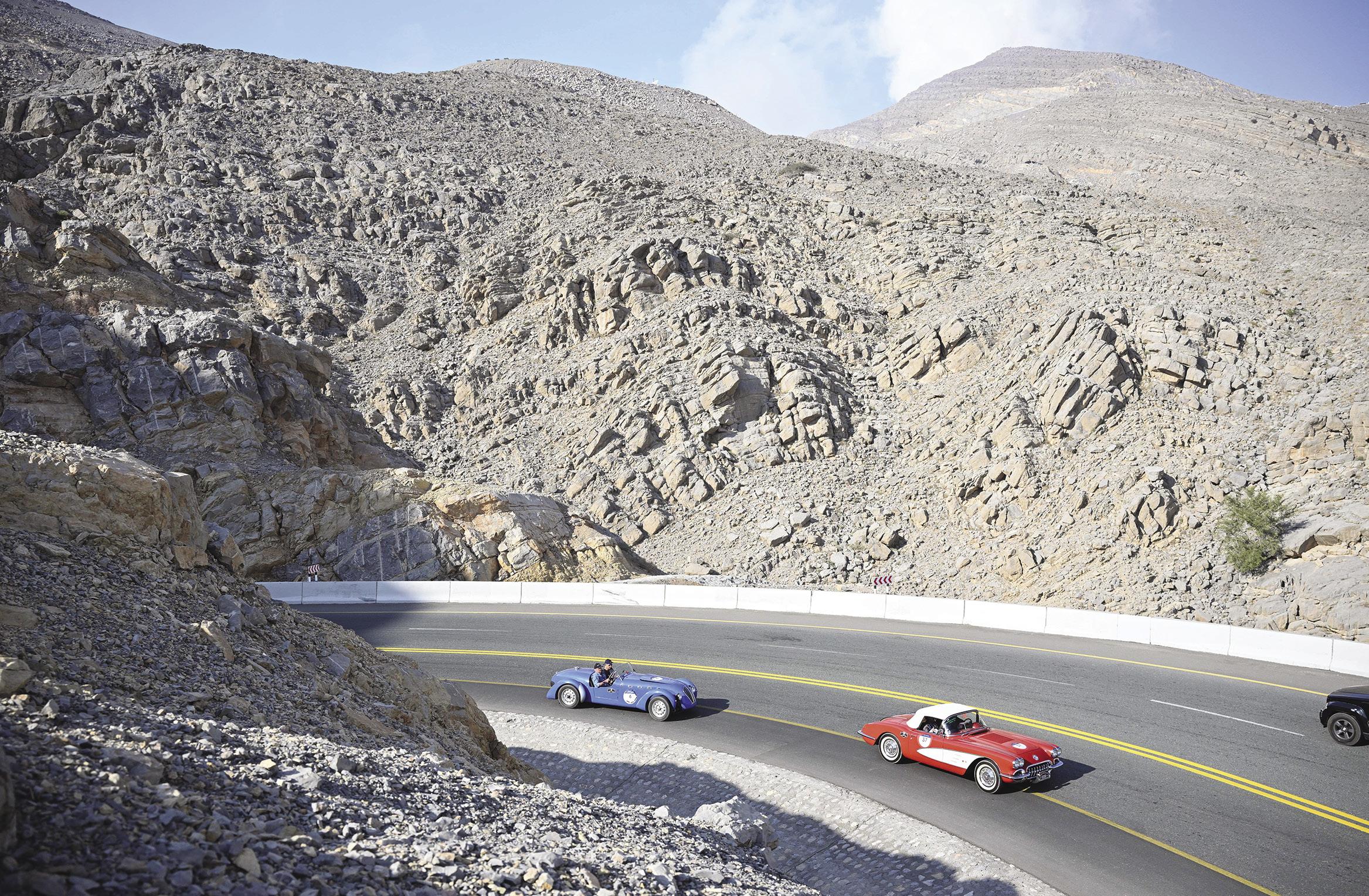
THE 1000 MIGLIA EXPERIENCE UAE
66 Pebble Beach Concours d’Elegance INSIDER
The road to the peak of Jebel Jais, the highest point in the UAE at 6,345 feet, carves its way though the Hajar range.
Right:
Below Right: The Khor Fakkan waterfalls in the Emirate of Sharjah have become a tourist attraction. They are even illuminated at night.
Below: Racing great Jochen Mass drove a Gargash Collection Mercedes 300 SL Gullwing on the rally.


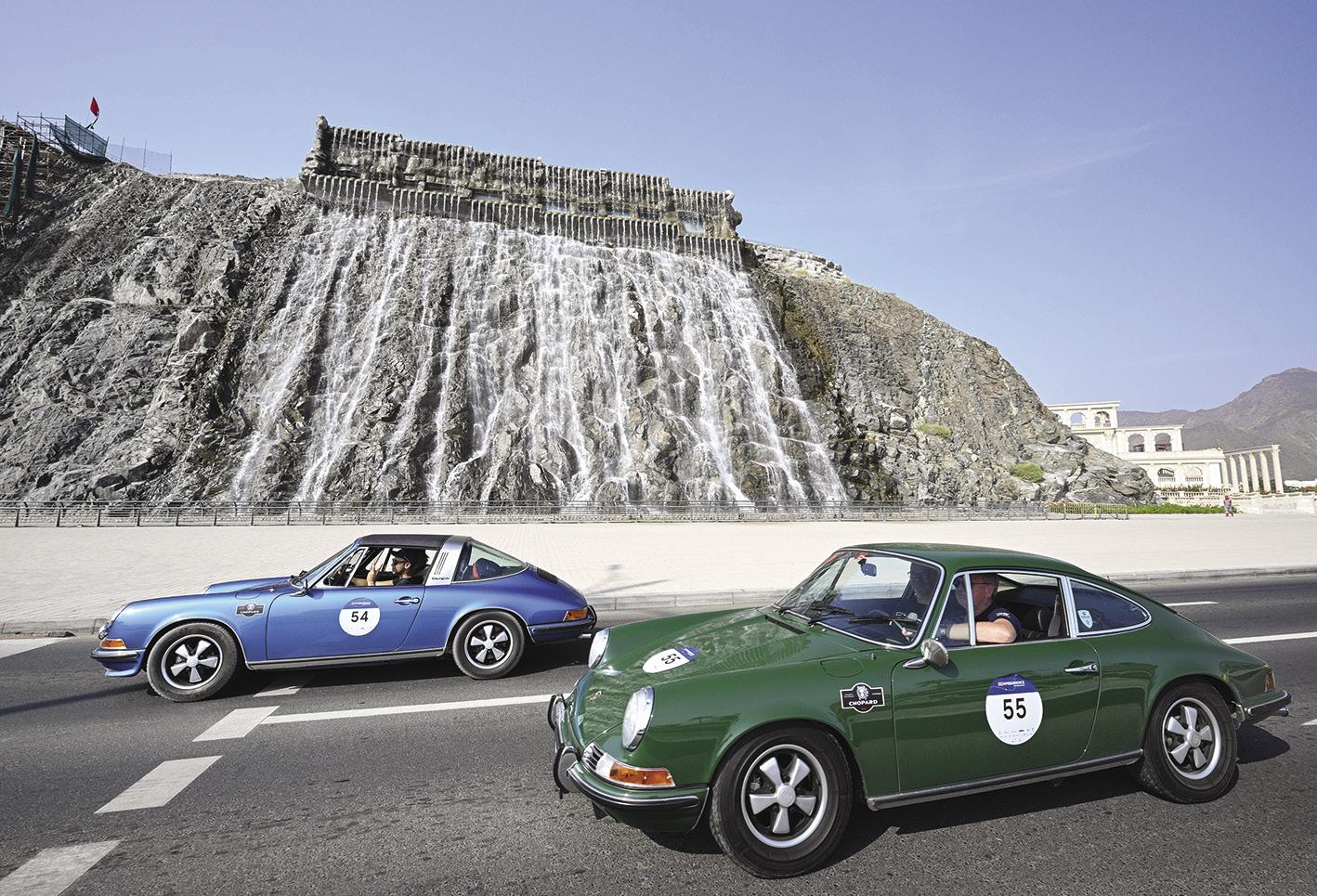
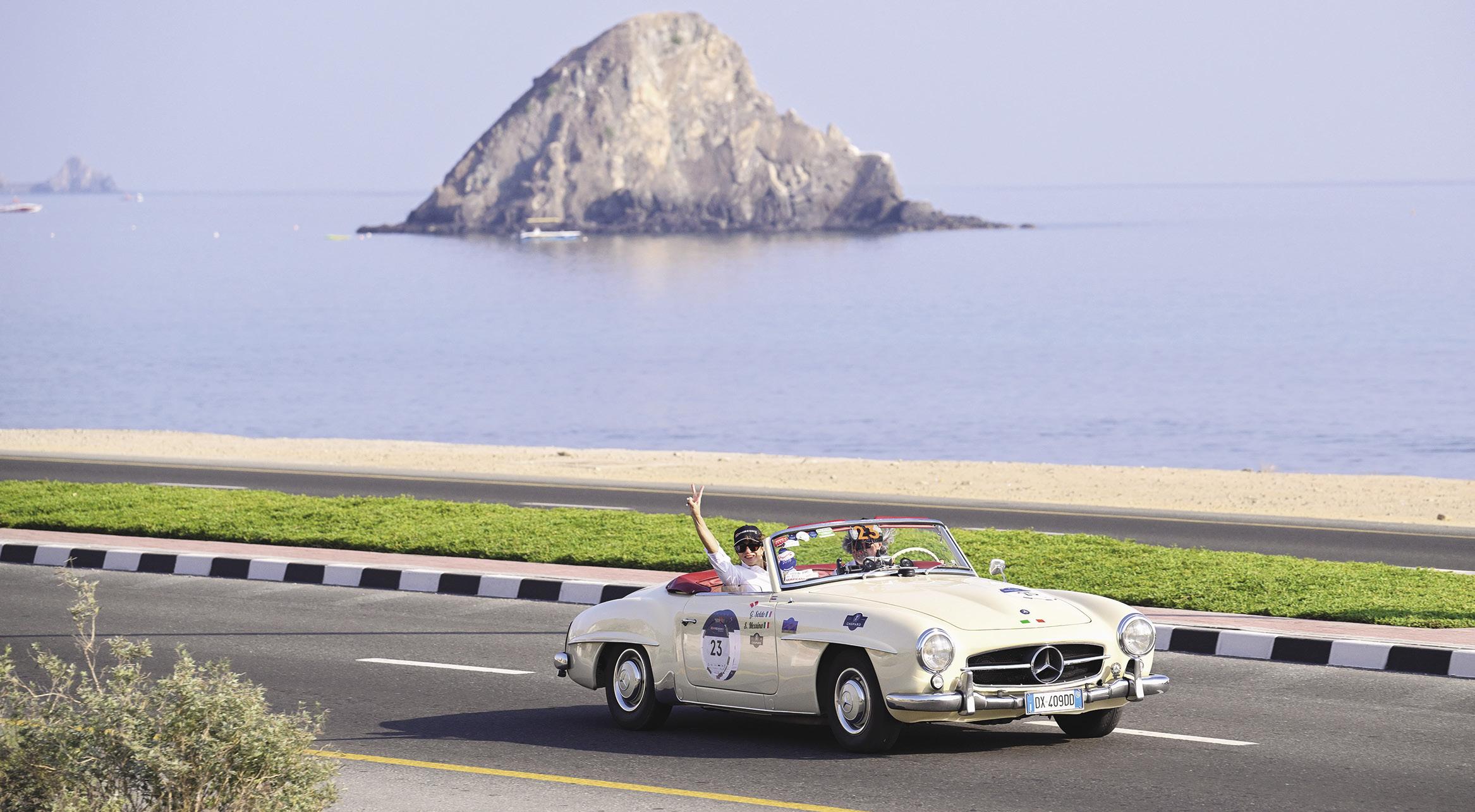 Much of the Emirates is a desert, but it is far from flat!
The Emirate of Fujairah borders the Gulf of Oman, which is rich in coral and rock formations.
Much of the Emirates is a desert, but it is far from flat!
The Emirate of Fujairah borders the Gulf of Oman, which is rich in coral and rock formations.
Concours d’Elegance INSIDER 67
Pebble Beach
navigator extraordinaire, head buried in the road book, said, “This doesn’t feel right.” Bang on cue, we noticed the diminutive 1956 Fiat 1100 Millecento sandwiched between two colossal trucks doubling back toward us. Then came a Porsche, followed by a 300 SL—all gesticulating wildly to indicate we were traveling in the wrong direction. Several of us pulled over to compare notes, and eventually, after some U-turns, detours, and choice expletives, Martin entered coordinates into his phone and guided us out of the eerie dust-haze and back to civilization.
Next stop—Jebel Jais, the highest point of the Al Hajar mountain range at 6,345 feet. The road to the peak is an impressive feat of engineering: a wide, perfectly paved divided highway complete with streetlights every 50 feet, guardrails and harrowing switchbacks. It was an
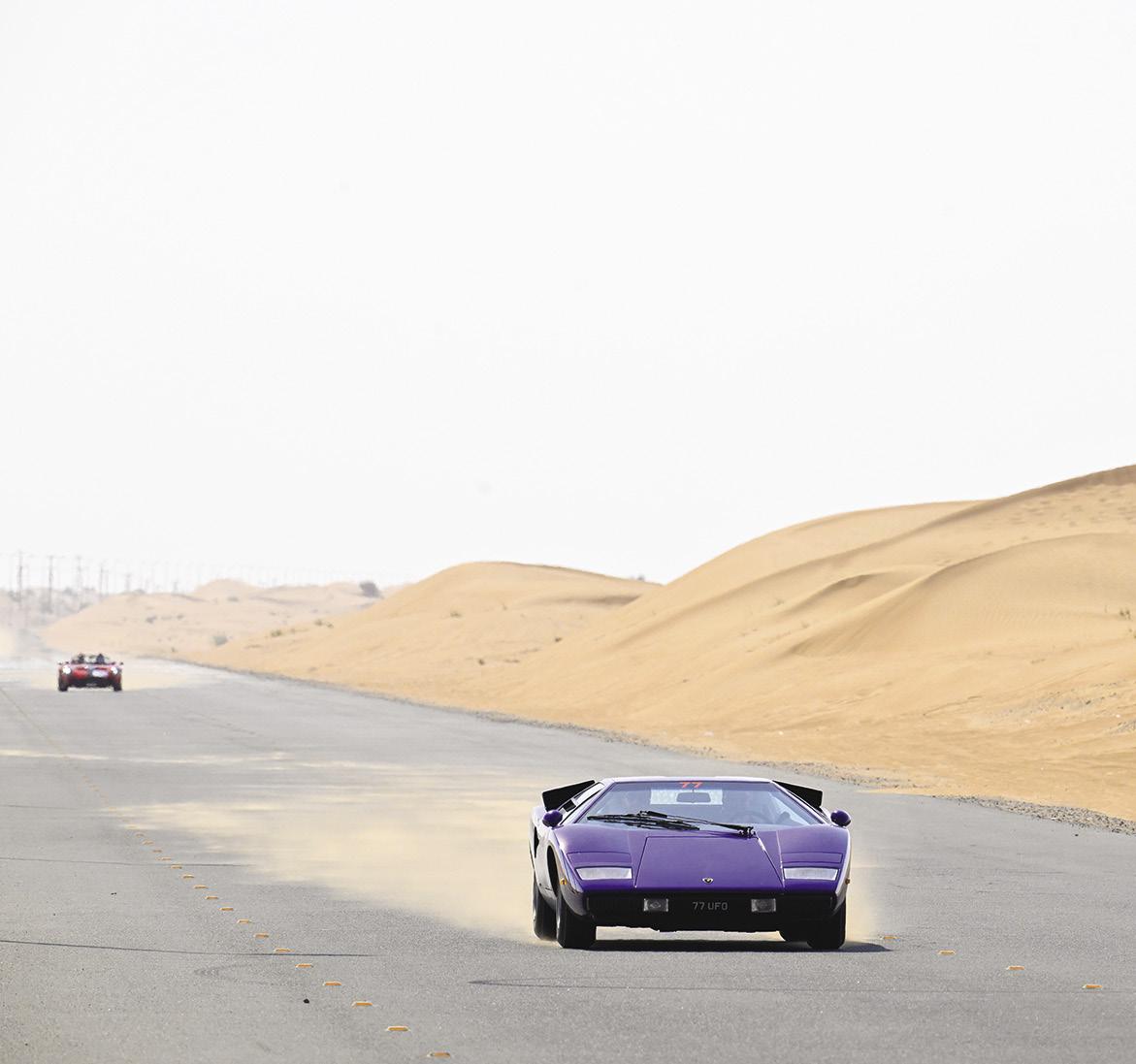
exciting climb to the summit, which hosts the world’s longest zipline, at speeds of nearly 100 mph, and the Jais Sledder—a hair-raising toboggan ride down the mountain on a single rail. Needless to say, we passed on both activities; just driving the cliff-hugging road blasted into the mountain side was a sufficient adrenaline rush. From the top of Jebel Jais, the view was awe-inspiring. Far away to the north the jagged skyline faded into the horizon, while ochre mountains stretched out into the middle-distance with ominous black peaks rising above a shroud of haze. Vertigo-inducing cliffs plunged beneath us, seemingly void of any life, and yet all around us birds soared on the upcurrents and wheeled through the endless expanse of sky. We felt like we were perched on the top of the world.
After an excellent lunch we meandered down the mountain toward Al Marjan Island and a Hilton DoubleTree, where, after a hot shower and well-earned cocktails, the whole group dined on the terrace.
One of the great pleasures of events like this is reconnecting with old friends on a personal level. While we call this a “hobby,” cars are my life’s work, and the line between work and leisure is often blurred. But to sit beside good friends and fellow car enthusiasts such as Merle Mullin (piloting a 1958 Mercedes-Benz 300 SL Roadster), Bill Heinecke (a 1958 Ferrari 250 GT LWB California), Jacky Ickx and Jochen Mass over a glass of wine and dinner is sheer joy.
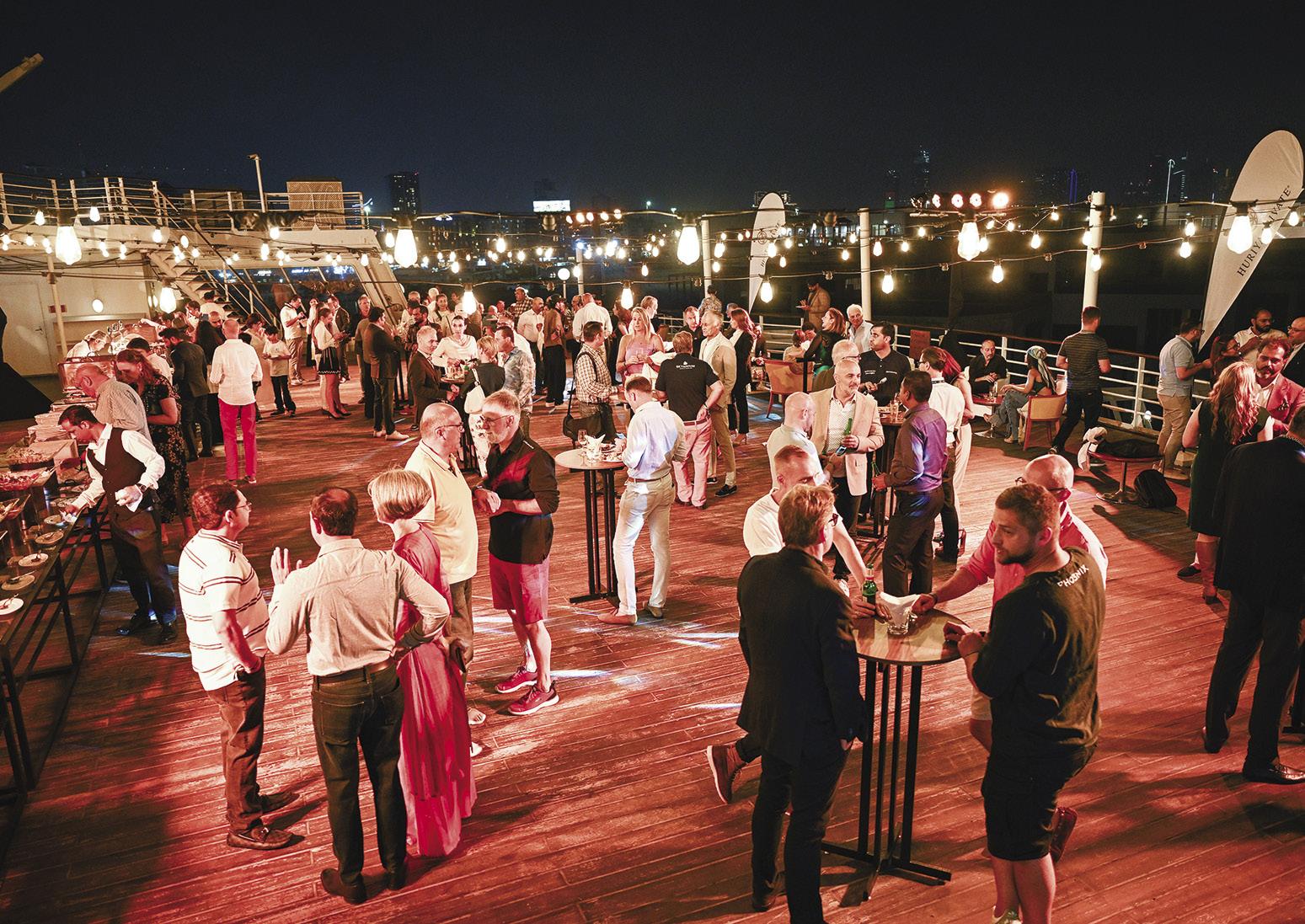
THE 1000 MIGLIA EXPERIENCE UAE
“
ONE OF THE GREAT PLEASURES OF EVENTS LIKE THIS IS RECONNECTING WITH OLD FRIENDS ON A PERSONAL LEVEL. ”
Sandra
Button, Chairman, Pebble Beach Concours
Simon Kidston kicks up some dust with his impossible-to-miss 1977 Lamborghini Countach LP400 “Periscopica” Bertone Berlinetta.
68 Pebble Beach Concours d’Elegance INSIDER
Driving aside, there were opportunities aplenty to enjoy the camaraderie of great car enthusiasts.
DAY THREE (348 km)
Marjan Island ➔ Badayah Retreat ➔ Dubai & the QE2


Heading south from Al Marjan Island, we crossed miles of sand dunes, dotted with tufts of desert grass and inhabited by camels. Apparently free to wander where they will, a caravan of camels padded down the middle of the road, causing us along with a 1968 Corvette, 2022 Corvette Stingray, 1961 Porsche 356 B Cabriolet BT5 to pull to the shoulder and let them pass. Used extensively for transport as well as food and milk products, camels have been an integral part of daily life on the Arabian Peninsula for thousands of years. Although the “ship of the desert” is less popular as a mode of transport today, camel racing remains a favorite sport—but the ones we saw didn’t look set to break any speed records.
Once in Sharjah we entered University City, a conglomeration of ten universities established in 1997 by the Sheikh of Sharjah, Dr. Sultan bin Muhammed Al Qasimi. Each faculty is housed in a palatial structure, with its own security and parking lot, skirted by vast lush green lawns, with white stone and wrought iron balustrades punctuated by palm trees. Aside from the rally cars parading down the four-kilometer-long boulevard, the most common vehicles on campus were, perhaps predictably, food-delivery scooters.
After a fabulous lunch at Badayah Retreat and a couple of time trials, we dropped down into Dubai at the height of rush hour and took a “crash course” in navigating city streets with locals, who nonchalantly passed within a hair’s breadth of our car. Not to worry. . . . Thanks to my husband’s expert navigation skills, plus the aid of a Hop-On-Hop-Off bus with the QE2 (the iconic British cruise liner and our next destination) on its route list, we managed to find our way to Port Rashid and the ship that would host us for the night. The QE2 is possibly the most famous cruise ship in the world, having sailed from 1969 to 2008 as a global ambassador of the United Kingdom and its late monarch and namesake, Queen Elizabeth II. In 1982 the ship was briefly requisitioned to carry troops in the Falkland Islands War, but today she remains in dock in Dubai as a floating hotel with rich royal heritage. While staterooms are miniscule aboard the QE2, the gravitas of the establishment is magnificent, and dining on the forward deck of the great British ambassador under strings of light was an honor not lost on my British-born husband. Before bed, we meandered the starboard deck and took in the bird’s-eye view of 100 classic automobiles lined up alongside the QE2—a rare and splendid sight.
Porsches line up at
Pebble Beach Concours d’Elegance INSIDER 69
A Jaguar passes Atlantis the Royal on the Palm in Dubai.
Al Badayer Retreat in Sharjah.
DAY FOUR (126 km)
The Palm & Ghantoot Polo Fields ➔ YAS Marina
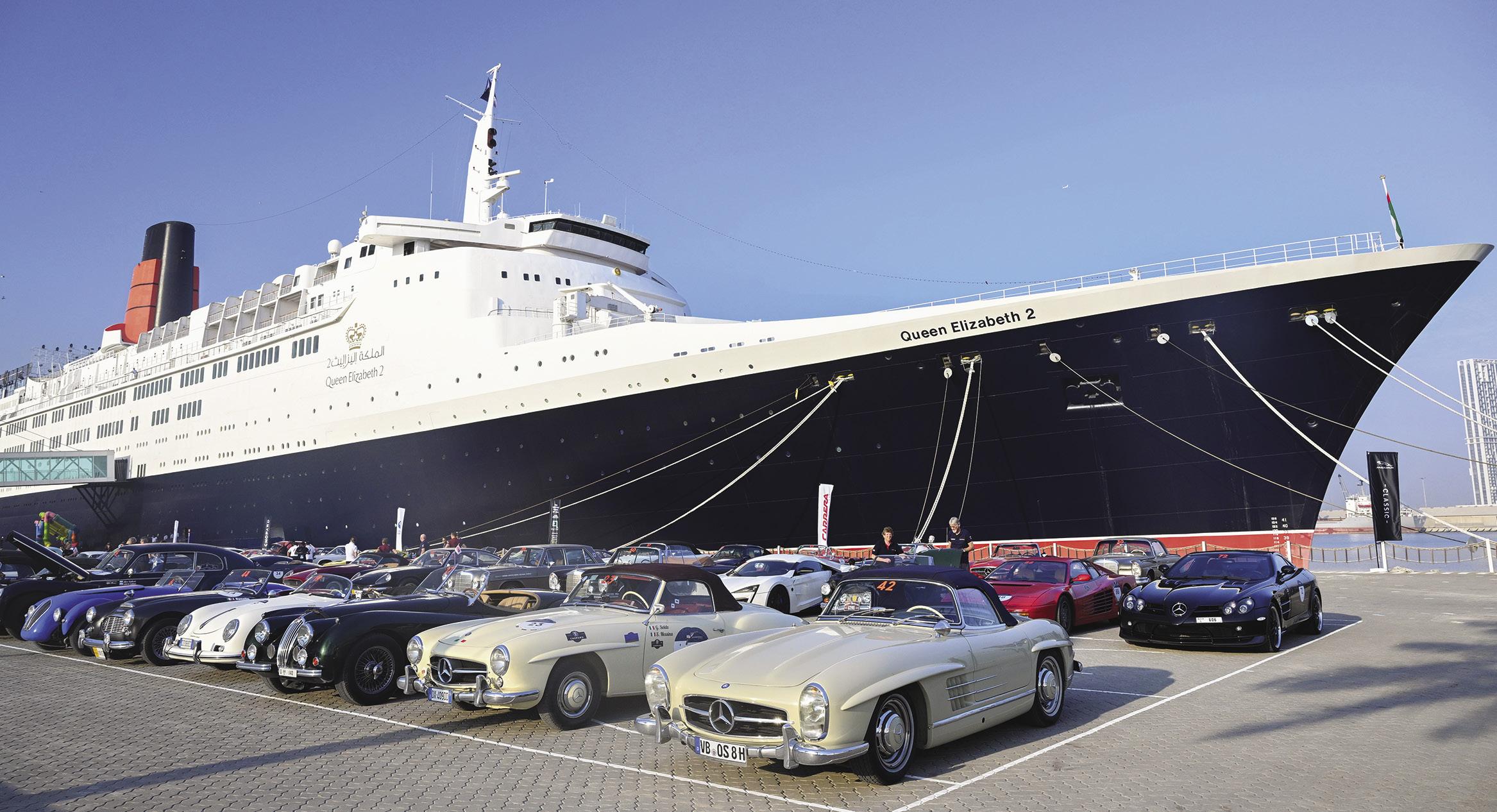
F1 Abu Dhabi Circuit & the Emirates Palace
A scenic drive down the Corniche of Dubai took us onto The Palm—a gigantic man-made, palm-tree-shaped island, complete with hotels, villas, restaurants and a waterslide park. Time sheet stamped, we made our way to the Ghantoot Polo Fields for refreshments, where all the cars lined up for a classic photo shoot—complete with Gullwings parked nose to tail, doors up, offering a superb opportunity to peer right down a tunnel of iconic Mercedes design.
Next stop—a much-anticipated lap of the Yas Marina Race Circuit, home of the Abu Dhabi Formula 1 Grand Prix. Admittedly, negotiating the infamous hairpin bend beneath the W Abu Dhabi Hotel in a stately Mercedes 280 SE wasn’t quite the Formula 1 experience one might hope for. That said, there is an undeniable thrill sitting on the starting grid looking down the straightaway toward the first bend, knowing that the likes of Lewis Hamilton and Max Verstappen sat in that very same spot just months before. And watching the Ferraris and Porsches tear up the asphalt was exhilarating. Following lunch trackside,
overlooking the marina, it was a short 40-km drive to the Emirates Palace and the finish line, with the futuristic Abu Dhabi skyline as a backdrop. Crowds cheered as the cars paraded past the checkered flag, and we felt a clear sense of satisfaction, pride, and . . . relief. It takes over a year to plan and prepare for each Pebble Beach Concours celebration, so to accomplish a task over a space of just four days is a rare and treasured luxury. We’d done it!
Dinner for the final evening was hosted at the Emirates Palace, an opulent and appropriately “royal” hotel located on the shore of the Arabian Gulf, with its own private natural bay and mile-long beach. The approach to the palace via the royal mall led us through superbly landscaped terraces and up-lit fountains. We traversed cavernous and lavishly decorated halls of state, adorned with mosaics in silver, gold and glass, evocative of Arabia’s historic splendor and penchant for hospitality, to reach our al fresco dining destination in the private gardens behind the palace façade.
During a stupendous dinner, I learned that of the 100 cars that entered the event, only seven failed to complete the rally—quite an accomplishment since the vast majority of automobiles were more than 50 years old. At the awards ceremony, Salim Al Rifai and Giordano Mozzi
THE 1000 MIGLIA EXPERIENCE UAE
70 Pebble Beach Concours d’Elegance INSIDER
The Queen Elizabeth 2, now docked at Port Rashid in Dubai, served as the route’s royal hotel at the end of Day 3.
(2019 Ferrari 488 Pista) placed first overall and won the Contemporary Icon class. Giovanni Soldo and Sabrina Messina (1956 Mercedes-Benz 190SL) took first in the 1000 Miglia Class and Amirali and Wendy Jetha (1956 Fiat 1100 Millecento) won the Jubilee Class. I was particularly pleased to see the “Hero of the Rally” go to Germany’s Christian Malorny and Oliver Herbolzheimer, who completed the event in their 1958 Messerschmitt FMR TG 500 Roadster, sitting one between the other’s legs bobsled style, helmet to helmet, in a space the size of a small cardboard box. Heroes indeed.


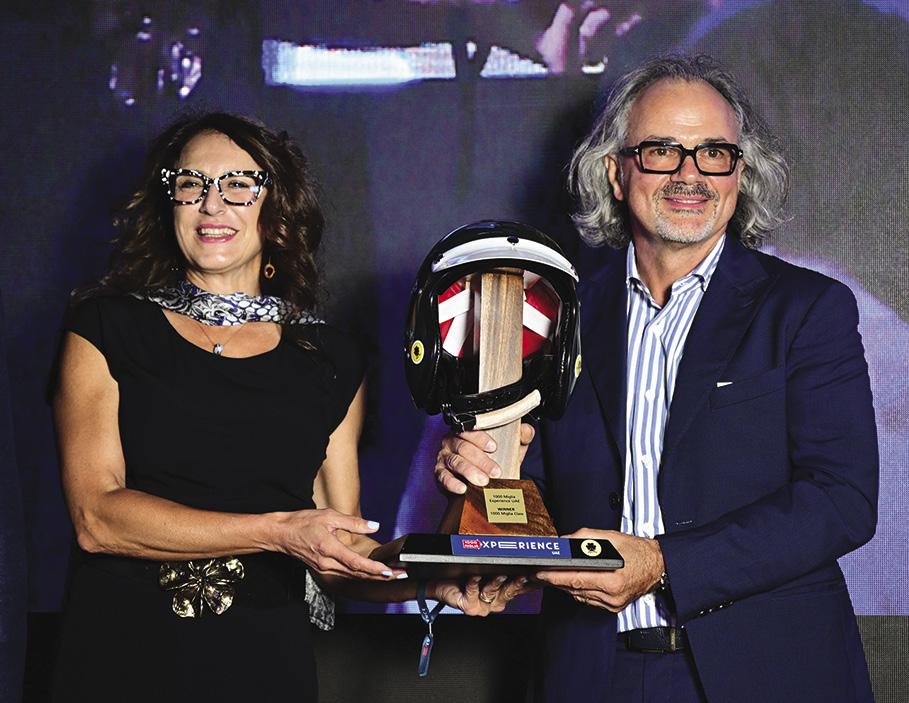
The 1000 Miglia Experience UAE lived up to expectations—and beyond. It is such a joy to see new events evolve and gather momentum, attracting people from all over the world: father/son teams, mothers with daughters, couples, old friends, new friends, young and old alike—people with a sense of adventure and a passion for classic and exotic cars.
 Christian Malorny and Oliver Herbolzheimer received accolades as heroes for completing the whole of the rally sitting bobsled-style in their 1958 Messerschmitt.
Christian Malorny and Oliver Herbolzheimer received accolades as heroes for completing the whole of the rally sitting bobsled-style in their 1958 Messerschmitt.
Pebble Beach Concours d’Elegance INSIDER 71
Clockwise from left: Amirali and Wendy Jetha won the Jubilee class; Salim Al Rifai and Giordano Mozzi won the Contemporary Icon class and placed first overall; and Sabrina Messina and Giovanni Soldo won the 1000 Miglia class.
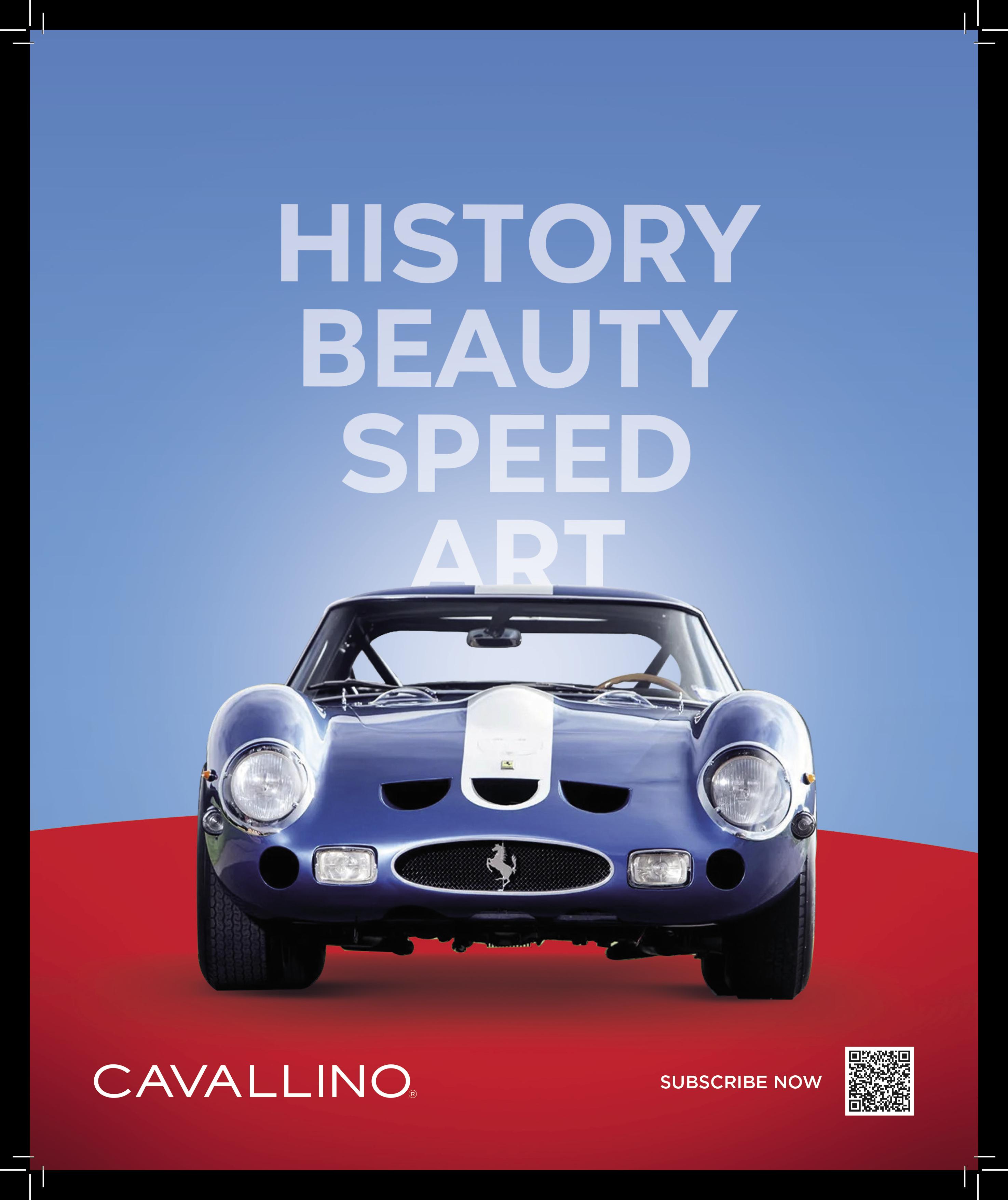
 BY KANDACE HAWKINSON WITH WINSTON GOODFELLOW
BY KANDACE HAWKINSON WITH WINSTON GOODFELLOW
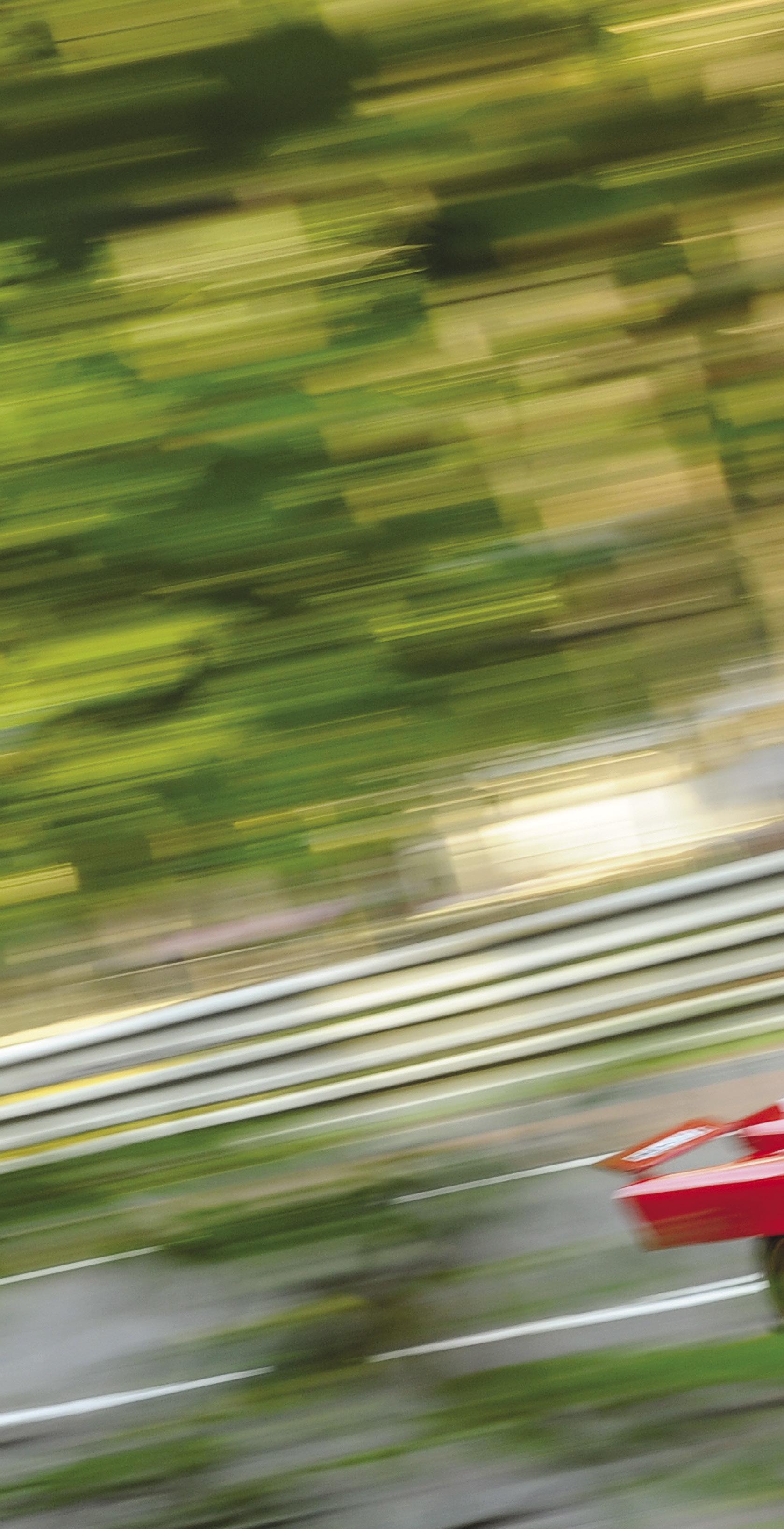
“AS A COLLECTOR OF ART, I LOVE DESIGN INTEGRITY. BY THIS I MEAN A PLACE WHERE POWER AND CLEAN LINES COME TOGETHER”
— STEVEN READ
74 Pebble Beach Concours d’Elegance INSIDER
C O LLECTI O N THE READ
 Steven Read’s 1964 Ferrari 512 M takes to the road.
Steven Read’s 1964 Ferrari 512 M takes to the road.
The exterior is nondescript—that of a small family office located in the San Francisco Bay Area. Yet on any given day, tucked into an interior stable made just for them, are more than a dozen of Steven Read’s 18 trusted steeds.
“We built this as a mews, so the barn doors are intentional,” says Read as we enter the collection, moving from a world dominated by freeways and the attendant noise of the city to one of peace.
There is quiet anticipation, too. Vast amounts of energy rest before us, waiting to be harnessed.
The view at a glance is dominated by Ferraris, ranging from a historic Le Mans-tested 1964 250 LM that has been driven by John Surtees, Lorenzo Bandini and Bob Grossman, to a more current Patron-liveried 2010 458 GT2 that is a veteran of the American Le Mans Series.
“Cars are like horses,” says Read. “They each have a personality, and that’s why I’ve stayed with Ferrari. The tech has changed, but they act the same way, and I’ve bonded with them.”
But there are other marques, too, including a 1985 Lancia LC2 and a 1985 Lancia Delta S4 that once served Martini
Racing and a rare dual-purpose 1997 McLaren F1 GTR Longtail that was the first to win a major race, placing first at Silverstone in 1998.
All of these cars were built for speed. And all have been raced—and continue to be.

Read has raced all of these cars but one—an open-wheel 2000 Ferrari F1 driven by Michael Schumacher and Rubens Barrichello, who notably scored his first Formula 1 victory in the car, at the German Grand Prix at Reims. That is also the only car purchased at auction; the rest have come through private sales. “It’s all about relationships,” says Steven.
The Read Collection is not the largest or the most valuable collection of cars, but it is often said to be one of the most thoughtfully and carefully curated. It is cohesive, yet every car is an individual and serves a purpose.

It was in the early 1990s that Steven, a longtime auto enthusiast, decided that he wanted to participate in Italy’s Mille Miglia—and he knew to get in, he needed the right type of car. So began the search that became the collection.
His Mille Miglia ticket, found with the help of good friend Gianluca Rattazzi, turned out to be a Maserati

THE READ COLLECTION
Steven and Mary Read shared their Ferrari 312 PB at Pebble Beach in 2008, placing Third in Class.
76 Pebble Beach Concours d’Elegance INSIDER
This portion of the collection is devoted to the steeds of early privateers as well as factory teams.
300S, which Read later shared at the 2000 Pebble Beach Concours d’Elegance, placing First in Class. “It’s a true piece of rolling sculpture,” says Steven. “As a collector of art, I love design integrity. By this I mean a place where power and clean lines come together. In 1957, the Maserati was a great expression of this—a long aerodynamic body wrapped around the engine. It became a template for many of the other cars I bought.”
This design integrity theme is seen in a number of the collection’s early purchases, and it highlights how knowledge, taste, and a thirst for more performance caused the collection to morph into what it is today.
Simply collecting cars wasn’t enough for Steven. An avid competition skier, he already had a love of speed and dancing on the edge of adhesion—and that morphed into a desire to race cars.
“Skiing is how I came to car racing,” he says. “I started skiing at 4 and competing at 12—mostly downhill but also slalom and giant slalom.”
Read headed to Sears Point Raceway (now Sonoma Raceway) with a number of friends, including his brother Peter.

“CARS ARE LIKE HORSES, THEY EACH HAVE A PERSONALITY, AND THAT’S WHY I’VE STAYED WITH FERRARI. THE TECH HAS CHANGED, BUT THEY ACT THE SAME WAY, AND I’VE BONDED WITH THEM.”
— STEVEN READ
Pebble Beach Concours d’Elegance INSIDER 77
Steven skillfully pilots his 1972 Ferrari 312 PB on track.
Above Left: Steven (in red cap) and his brother Pete (in blue) walk the circuit at Le Mans before the 2012 Classic. To the left are close friends Gianluca and Chiara Rattazzi.

Above: Steven’s 1964 Ferrari 250 LM crosses Bixby Bridge on the 2013 Pebble Beach Tour d’Elegance. It went on to place Second in Class.
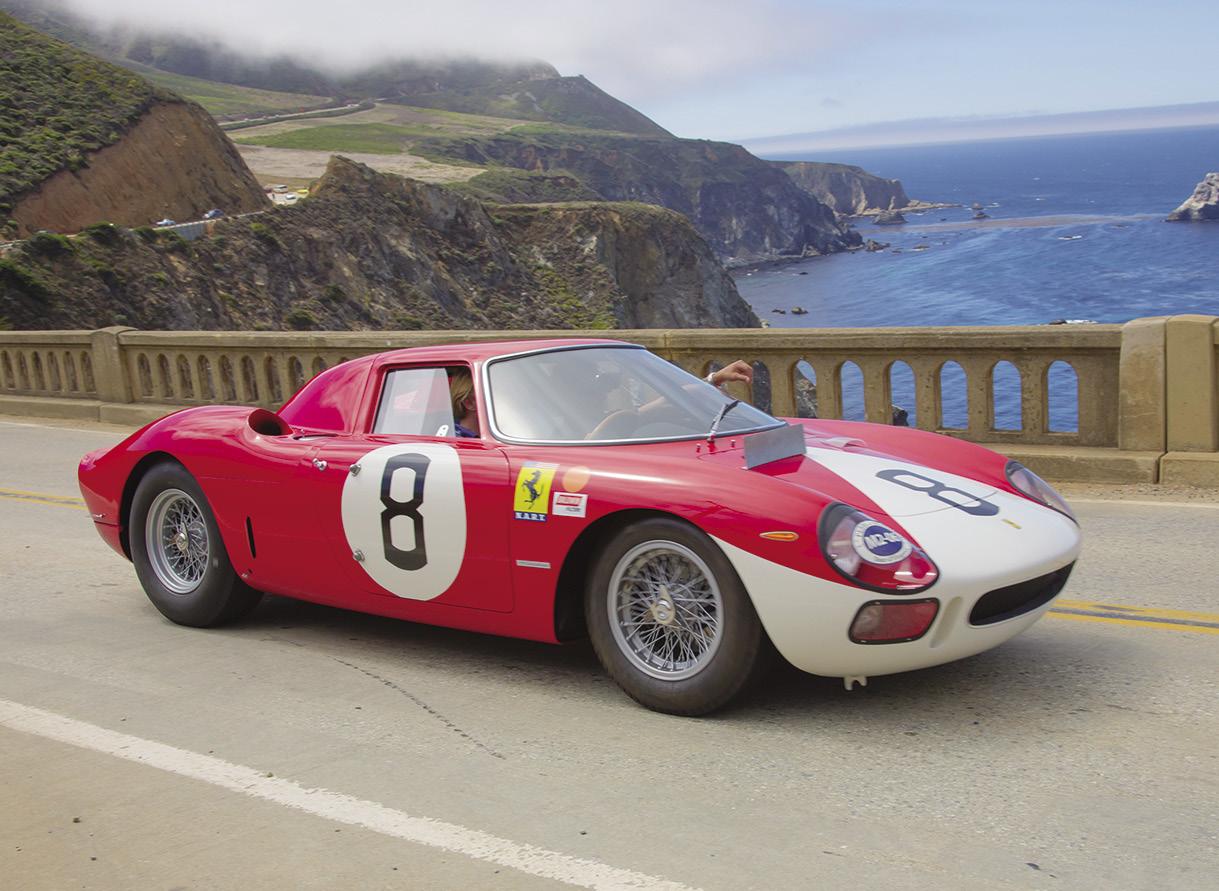
Left: The tartan pattern on Steven’s helmet is proudly on display as he races his Maserati.
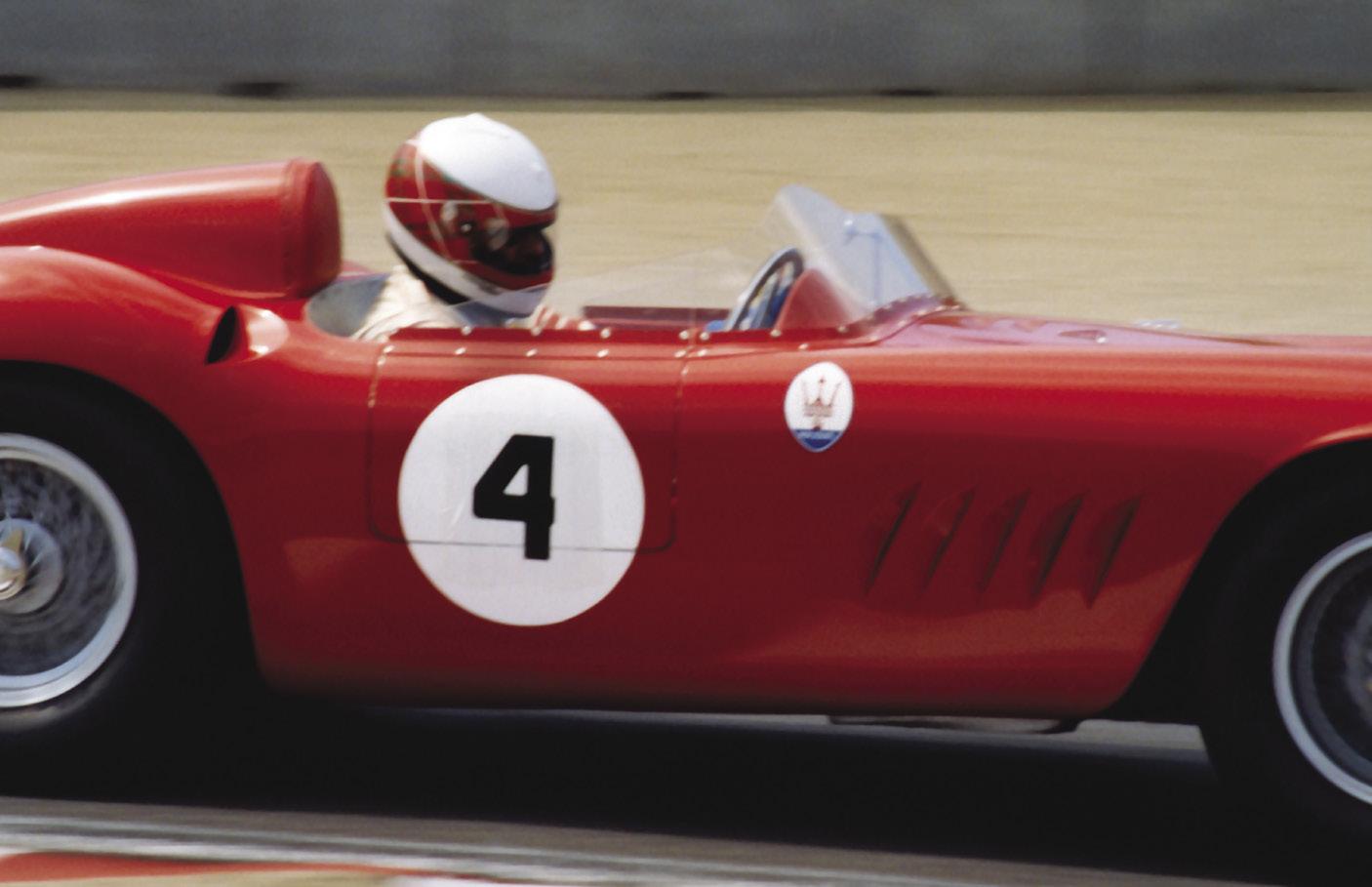
Below Left: Steven and Peter share a moment together.
Below Right: Steven Read, Pete Racely, and race driver Giovanni Lavaggi.
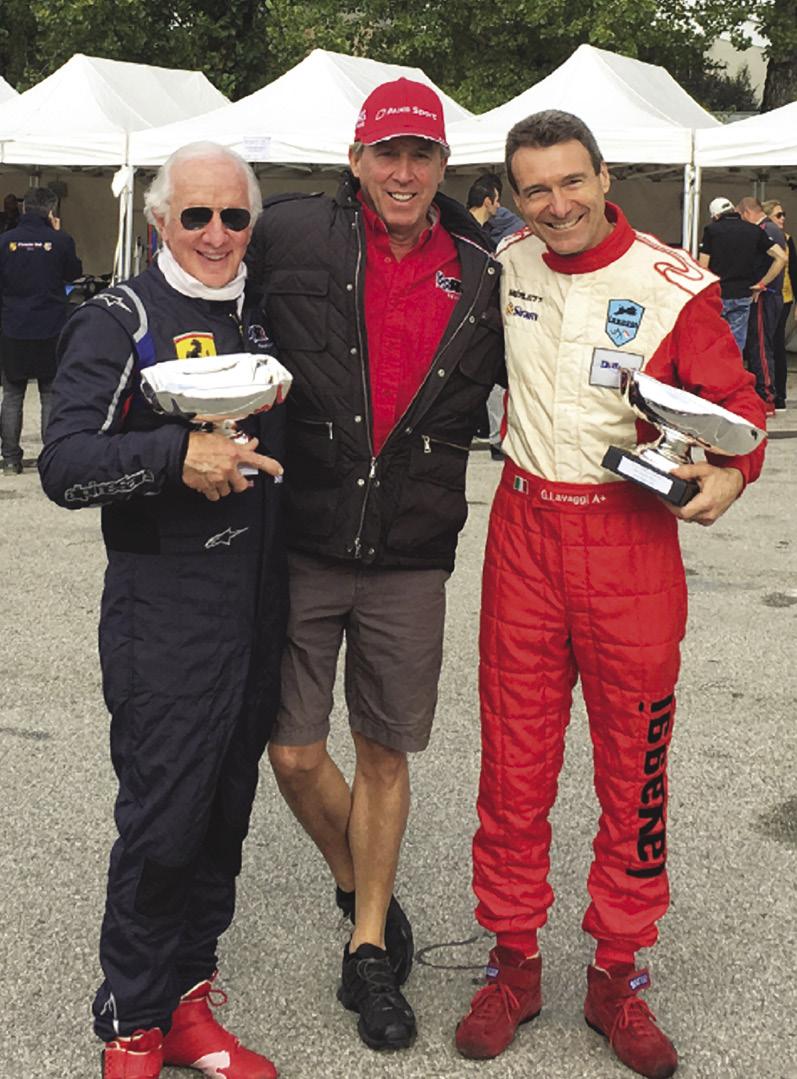
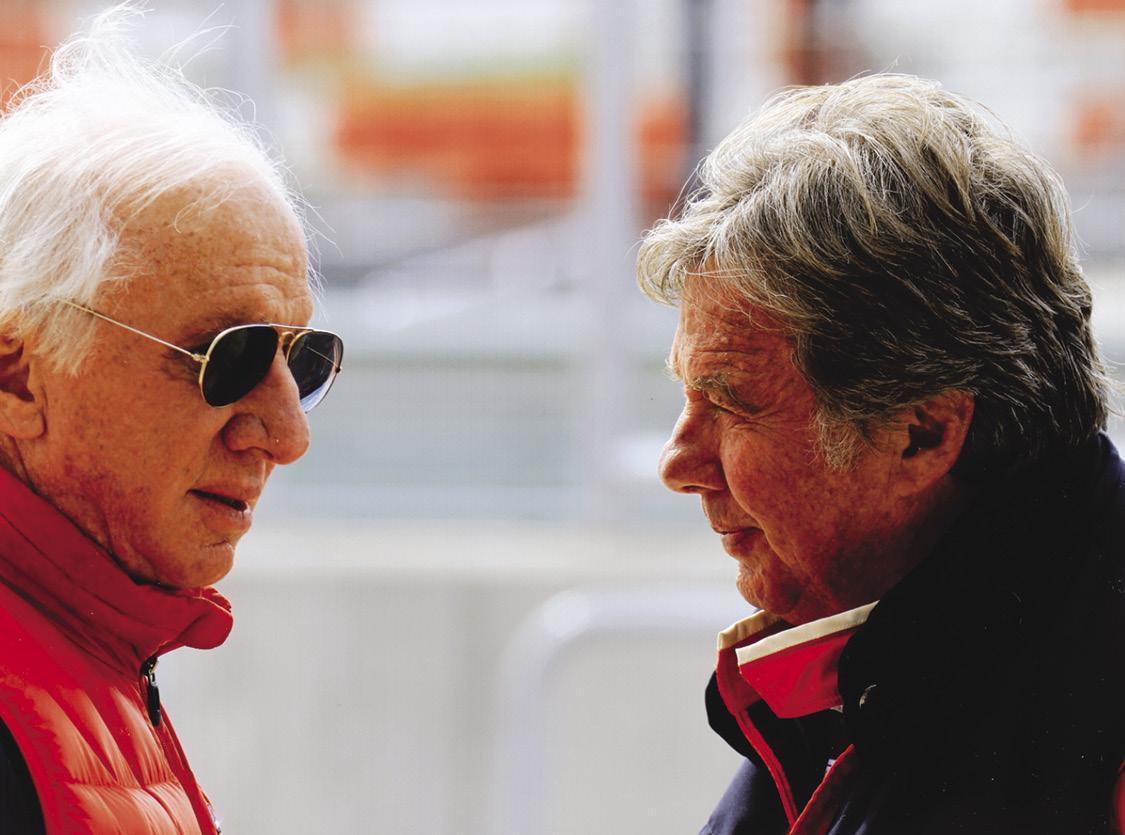
THE READ COLLECTION
78 Pebble Beach Concours d’Elegance INSIDER
“We all started in Lotus 23s, or 23Bs—essentially skateboards on steroids. Then someone breaks rank and gets a 23C with wider tires, which gives them a little more speed, and we all trade up. Then someone else gets a 2, then 3, then 5-liter—and suddenly you’re off to the races. It’s pure competitive spirit.
“Once we exhausted Sears Point, and Portland, we decided to go East. And once we decided to go East, we said, ‘Well, if we’re going East, we might as well go to Europe.
“We did a lot of Europe. We covered most of the famous tracks there, including Paul Ricard, and did Le Mans, the Classic, four times.
“It’s not so much about the sport itself, it’s the likemindedness. Whether at a track, a rally or a concours, there’s plenty of time and you talk.”
Along the way, Steven formed Read Racing with his brother and hired Pete Racely to help manage the collection. Racely helped to hone it further, spotting emerging market trends and pushing the collection to expand the performance focus beyond endurance racing and include more modern machines.

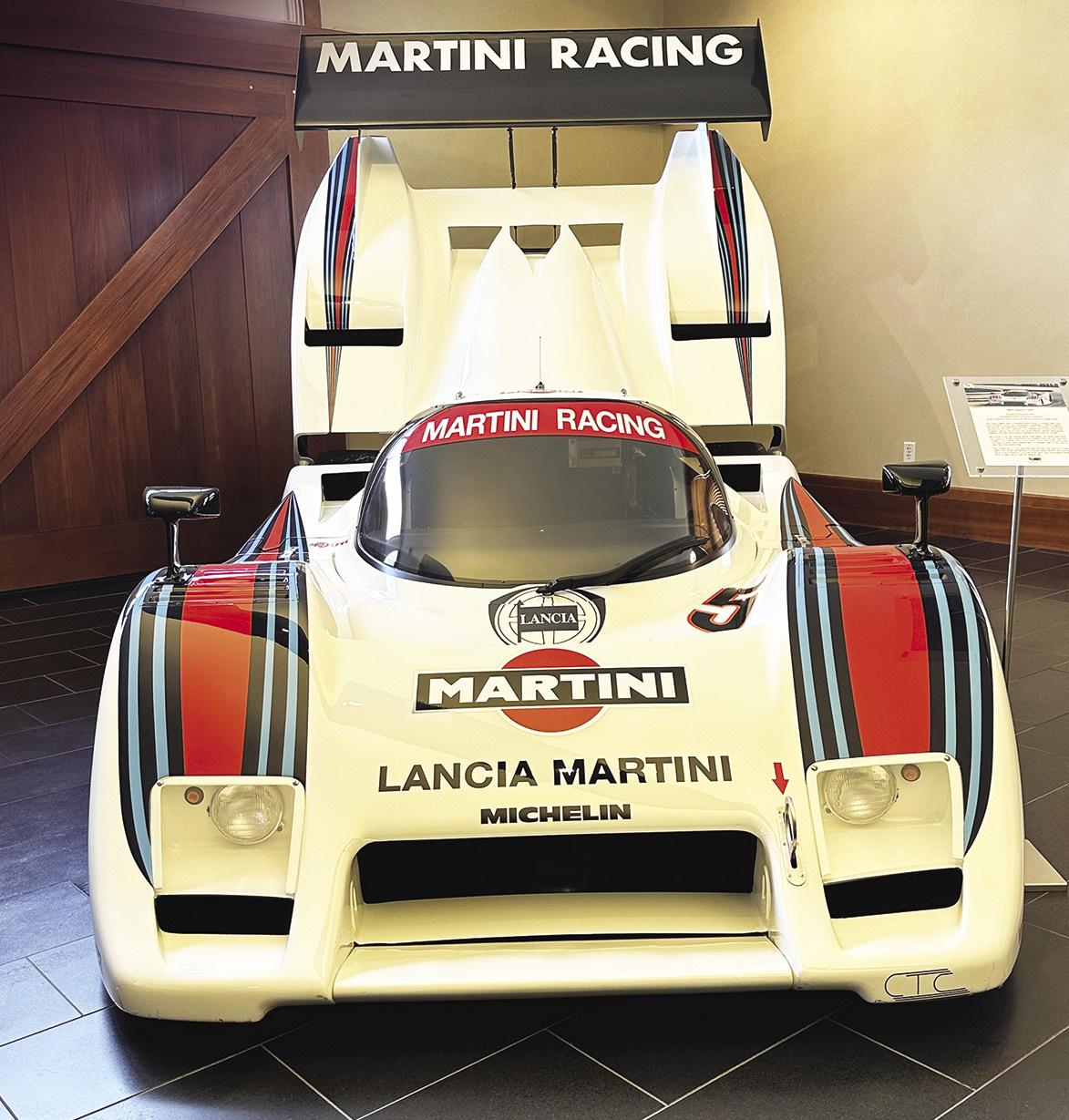
Then, a few years back brother Peter bowed out. “He sold his Ferraris, bought a ranch, and has real horses now. I say, ‘Peter, I have many more horses than you do.’ And we both laugh.”
The collection now is divided in roughly three equal sections, as detailed in a recent monograph: Privateers & Hand-Built Cars (from the mid-1950s to mid-1970s), Factory Team Cars & Technology (from the late 1970s to 2000), and Return of the Privateers (from the late-1980s to 2011).
In a middle hallway packed with racing photos and magazine images of his cover cars, Steven pauses to point out the Lotus 23 with which he started racing, an image of he and Peter walking the track at Le Mans, and the full crew of Read Racing. Then, as we wander from car to car in the mews, he offers tidbits of their history but focuses primarily on the feeling of racing each of them.
We stop first before the 250 LM.
“When I did the Le Mans Classic for the first time, I raced this car,” says Steven, “and throughout the first two laps I struggled. I tried to do too much. The third time around, the car said, ‘Do you know my name? Do you know what LM means? I was built for this! Just cool it. Let me do this.’
“You have to settle in. Cars perform best at speed. If you keep moving them around, braking and accelerating, they’re going to rebel.
“It’s a lovely thing to let a car do what a car is meant to do. And the car is appreciative.”
This 1997 McLaren F1 GTR Longtail finished first at Silverstone in 1998.
Pebble Beach Concours d’Elegance INSIDER 79
The collection’s Lancia LC2 is likely the most developed of the eight cars made. It competed three times, earning two podiums.
We move next to the 1972 Ferrari 312 PB, a Group 6 prototype sports car driven in period by Brian Redman among others. If Steven had to name a favorite car in the collection, he says the 312 would be it. “It was Ferrari’s most winning car. It’s basically an F1 car. If you look at how the front and back tires are set up, you see it has an F1 setup. All Ferrari did was put a GT shell over it.
“And talk about precision! It functions like a giant slalom ski. It’s quick, it’s fast, and it’s elegant.”
The 250 LM and the 312 PB garnered two more class awards for Steven at the Pebble Beach Concours.
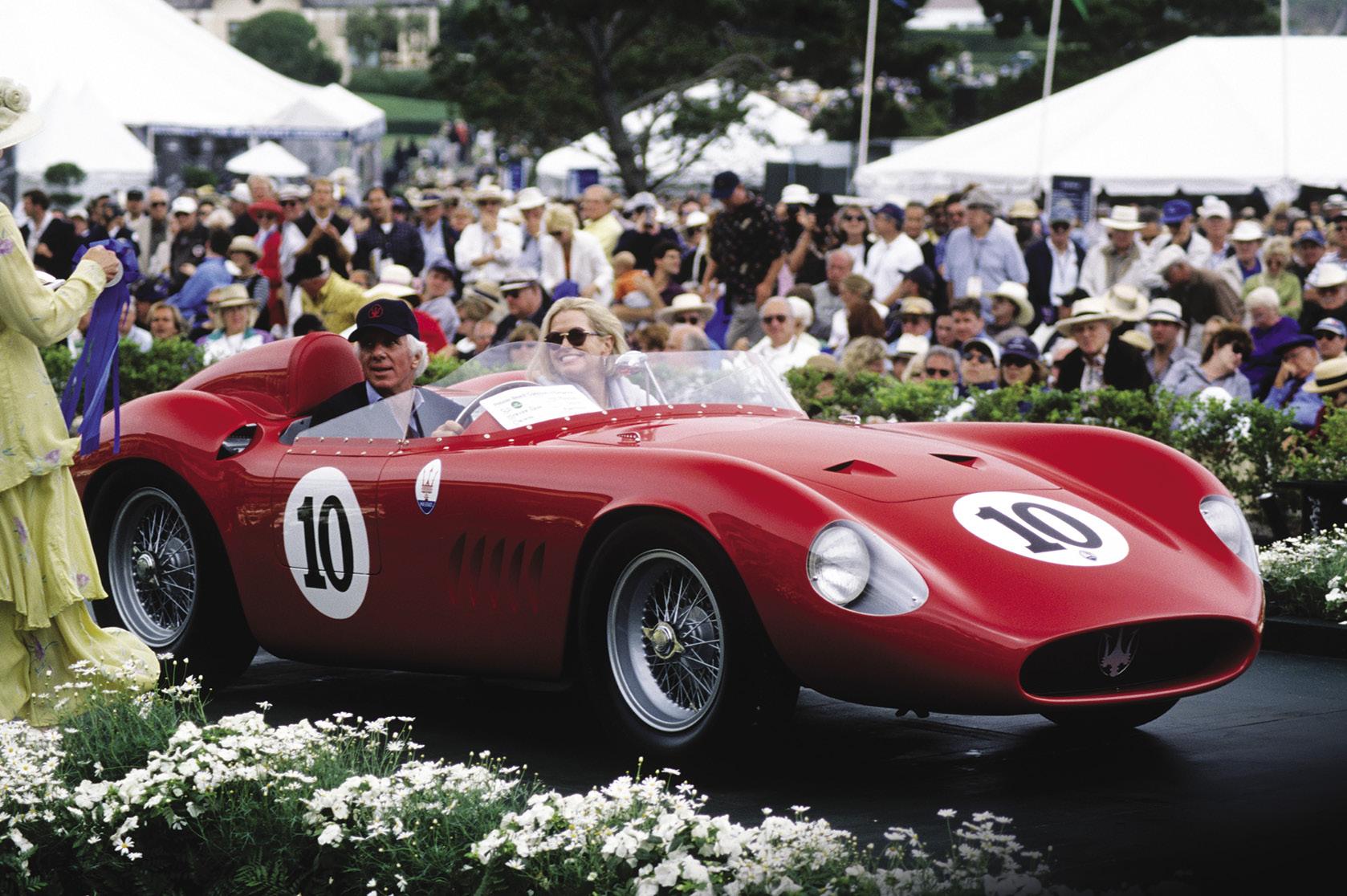
We pause next at the front of the rare McLaren Longtail, one of just ten made: “It’s a thing of beauty. You sit in the center, and the nose just drops off. The track is all you see. It’s like driving a jet. It’s unbelievable.” This Longtail brought Steven his most recent win, at the Silverstone Circuit just a few years back.
The Collection’s 2003 Ferrari 550 GTO by Prodrive is also one of just 10 made—and likely the most successful, competing for five seasons, earning numerous pole positions and achieving nearly 40 top ten finishes, 20 class wins, four overall victories and a class championship. Steven bought his 550 from Freddie Dor and proudly continued to race it.
He points out the interior, which has a bank of switches and a full harness for the driver: “You’re cocooned inside. And you’re facing a multitude of buttons; you have to run it with a computer.” Then, for contrast, Steven walks back to the 250 LM and opens the door, noting the simplicity of the steering wheel, the gearshift and the minimal dials. “Can you imagine driving this thing 180 miles an hour? It wears just 1/20th inch of aluminum—that’s nothing! And there are barely any roll bars. Nothing protects the driver. Oil goes down one side of the cockpit, water down the other, and the gas originally went overhead—that was something we felt we had to change.
“A huge number of pilots were being killed at the time— prior to Jackie Stewart coming along and saying, ‘We just can’t do this anymore.’”
In a few short decades, everything changed.
In the next room, we come upon a 1976 Ferrari 308 GTB that Steven says is “probably the best rally car” he’s driven: “I’ve taken the 275 rallying, and at the end of a trek, its tongue would be hanging out—but the 308 just wants more.
We also admire the Ferrari F1; a 1989 Ferrari F40 GT/LM that won the Italian Supercar GT Championship in 1993 and 1994; a 1994 Ferrari 333 SP that did well at Sebring, Daytona and elsewhere; the Lancias; and Steven’s current track car, the 458 GT2.
“IT’S A TRUE PIECE OF ROLLING SCULPTURE”
THE READ COLLECTION
— STEVEN READ
80 Pebble Beach Concours d’Elegance INSIDER
Steven and Mary Read took home a blue ribbon from Pebble Beach with their 1957 Maserati 300S Fantuzzi, in 2000.
A small side room that doubles as Pete Racely’s office holds the trophies and awards won by the cars. Many of these items are displayed on the Scottish tartan signifying Read’s heritage, the same tartan Steven wears on his helmet while racing. The Reads belong to Clan MacGregor; they are direct descendants of Rob Roy MacGregor, no less—a fact Steven couldn’t keep from sharing when he first met racing great Sir Jackie Stewart, who dons the Royal Stewart tartan. “Rob Roy MacGregor?” exclaimed Stewart. “He was a cattle thief and he should’ve been hung and then you wouldn’t be here!” Read, who is now a fifth generation Californian, delights in the retelling.
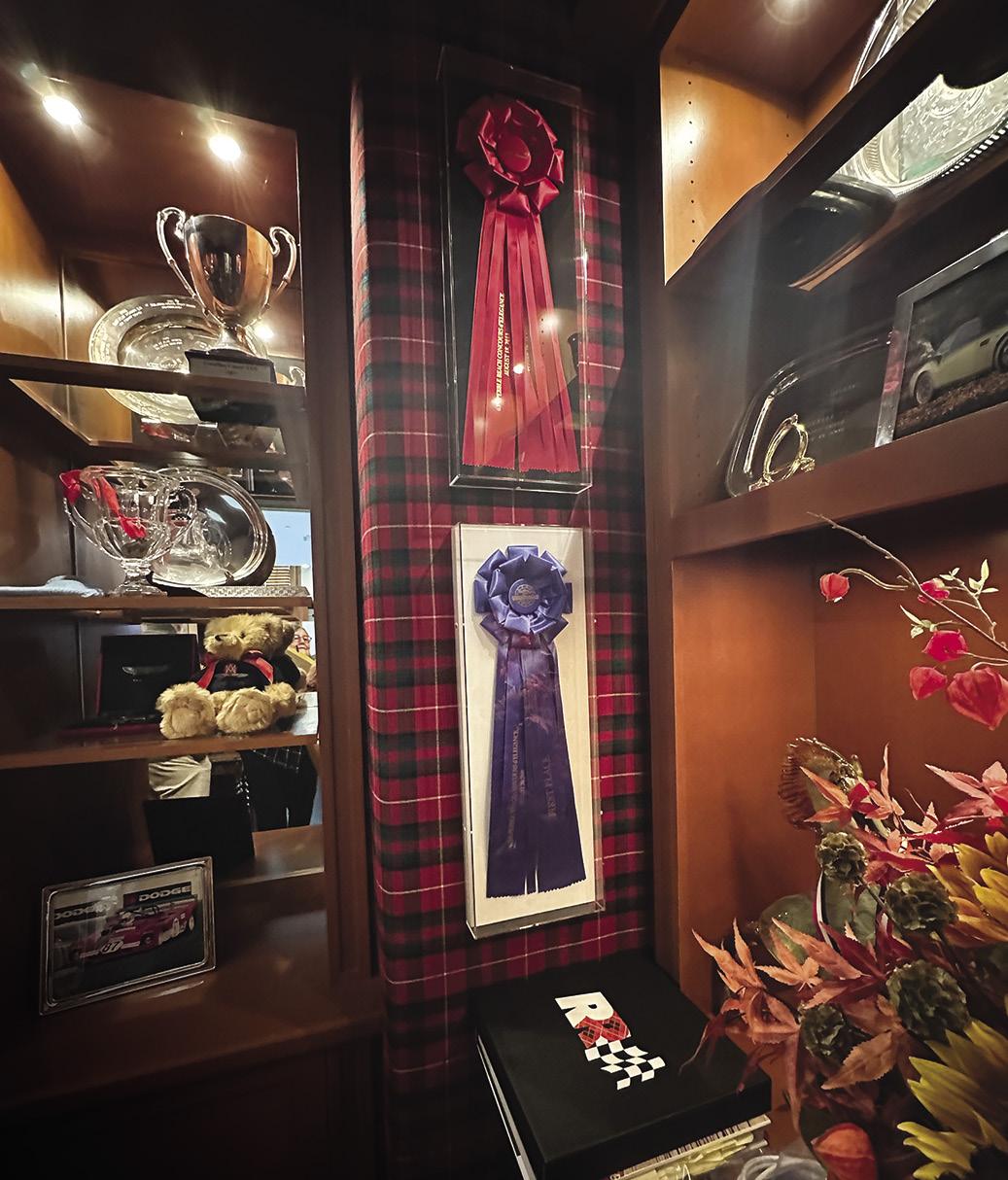


Amidst the trophies, Steven points out the items from Pebble Beach, including a tiny first place cup won by the 250 LM back in 1975 when it was owned by Fred “Frosty” Knoop. Knoop gave it to Steven after watching him race the car, and Steven often chuckles at its size.
Awards aside, it is clear that Read loves competition. He loves the preparation for and the acting of racing: “I love going up to Sears Point to test a car, getting in it, and setting it up.”
He also simply loves to drive—at speed: “You can head out to the track, race for two hours, lose a pound or two— and absolutely lose yourself in what you are doing. You concentrate on the corners, the apexes, knowing every inch of track counts. Everything else falls away.”
A powerful lineup: a Lancia Delta S4, a Ferrari F40 GT/LM and a Ferrari 458 GT2.
Pebble Beach ribbons and trophies find their place among other awards at Read Racing.
A peek inside the tartan-lined trophy room of Read Racing, which doubles as Pete Racely’s office.
d’Elegance INSIDER 81
Pebble Beach Concours


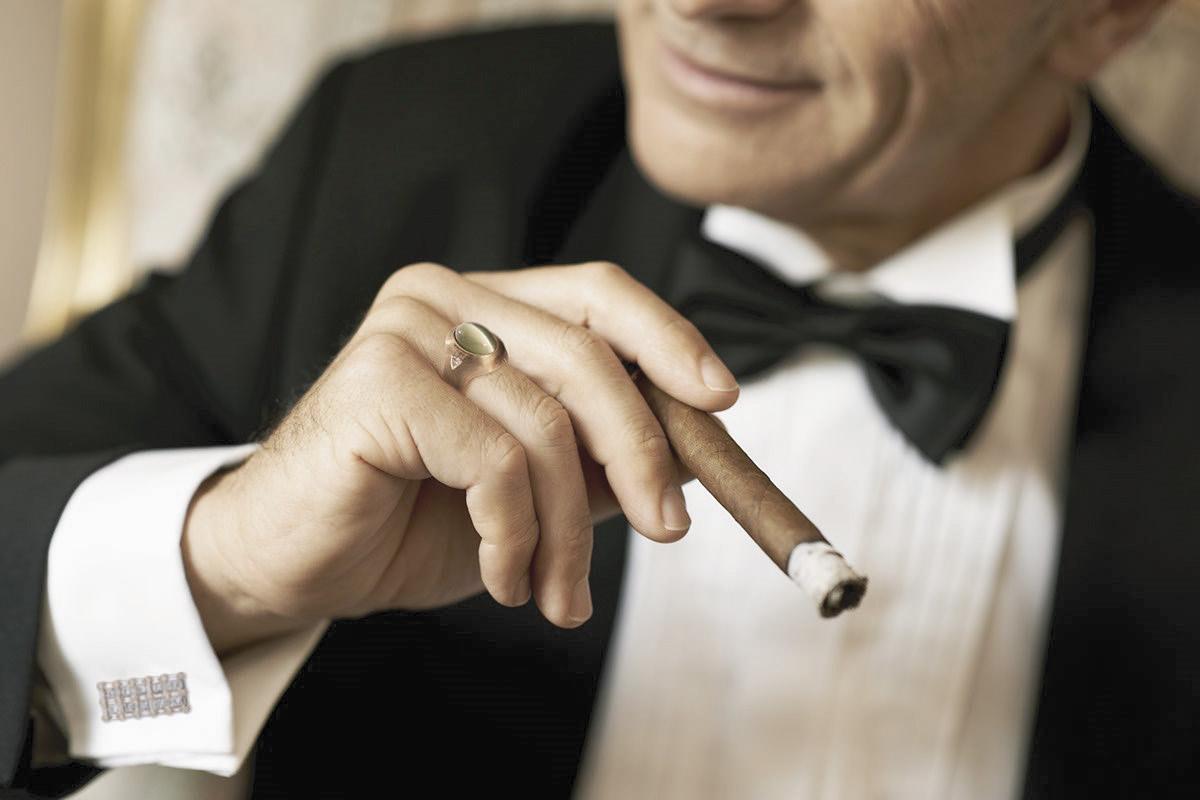

62 YEARS OF PROVEN, QUALITY SERVICE. WE ARE RELIABLE CARRIERS. VEHICLES TAKEN SERIOUSLY.


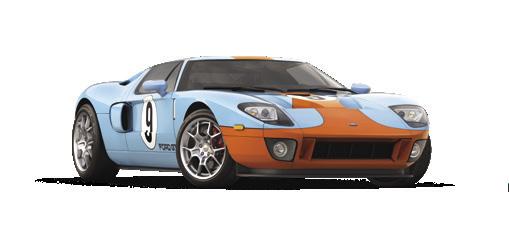
For more than 60 years, Reliable Carriers have transported everything from dream cars to daily drivers across the U.S. and Canada. With a variety of specialty haulers in our fleet, including 400+ fully-enclosed, air-ride-equipped transporters, we have both the capacity and the specialized equipment to move your unique automobile. We are proud to offer service that stands apart, capability that stands above and peace of mind that comes through 5 million dollars of insurance and GPS tracking on every load. That’s capability. That’s flexibility. That’s Reliability.


PROUD
d’Elegance
® is a trademark and service mark of
by permission.
SPONSOR OF THE PEBBLE BEACH CONCOURS d ’ELEGANCE® The Pebble Beach Concours
Logo
Pebble Beach Company. Used
800.521.6393 reliablecarriers.com
GOODING & COMPANY
Since its inaugural Pebble Beach Auction in 2004, Gooding & Company has built a reputation for expertly conducting one of the most important events in the collector car world. For the past 18 years, the auction house, led by President and Co-Founder David Gooding and celebrated veteran auctioneer Charlie Ross, has presented some of the world’s most important vehicles at its signature live auction event, making Pebble Beach Auctions the stage where recordsetting prices are realized time and again for automobiles and collectibles.
Year after year, Gooding & Company consistently eclipses its own records and milestones with its presentation and procurement of the finest automobiles from Duesenberg, Ferrari, Porsche, and Mercedes-Benz, among others. As we anticipate the California-based firm’s upcoming sale on August 18 and 19, we want to revisit its most memorable and record-setting sales at the Pebble Beach Auctions throughout the years. If the past is any indication, this year ought to continue the auction house’s pattern of top-ofthe-line excellence.
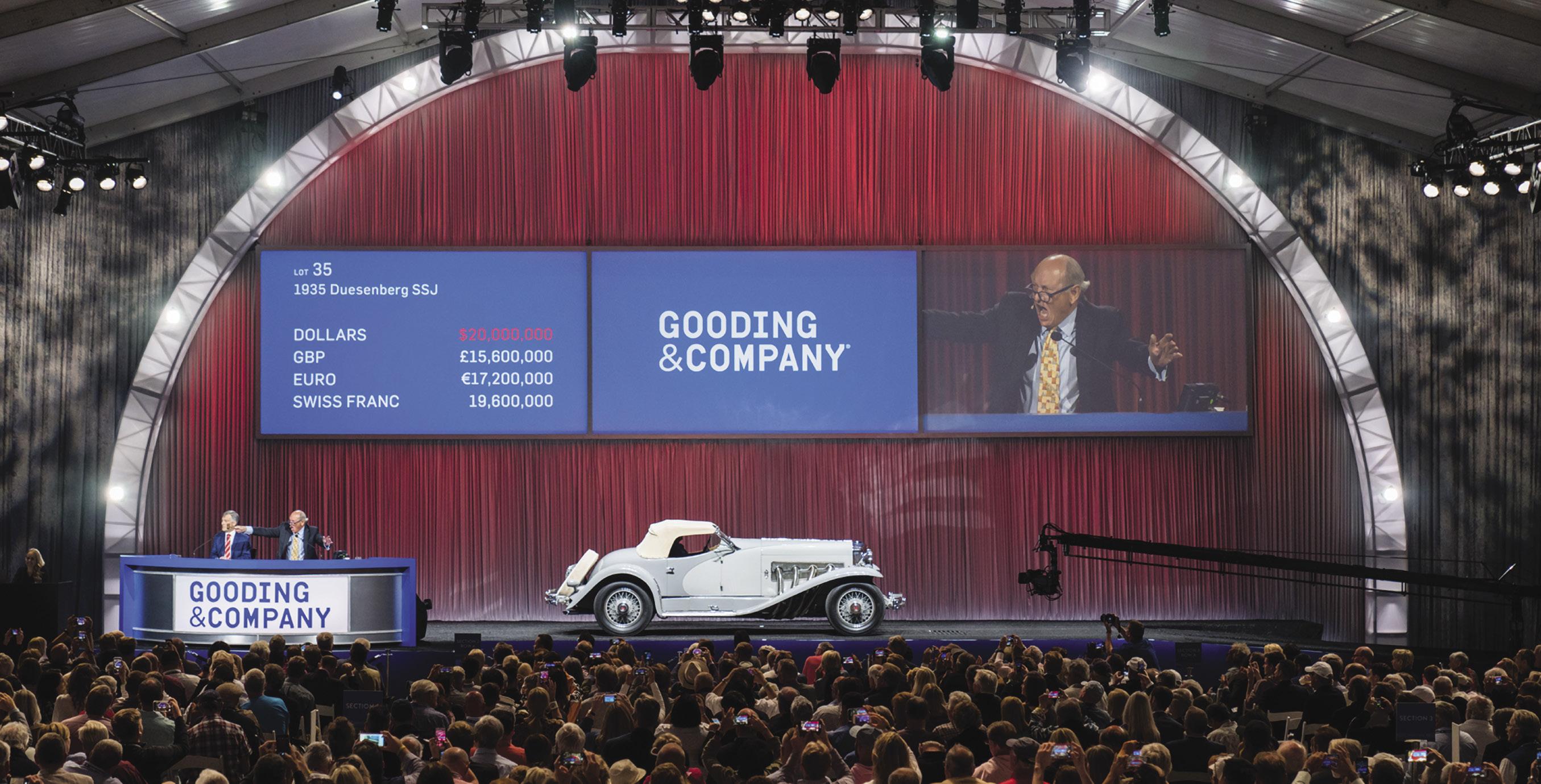
Back in 2004, a then-upstart Gooding & Company hit the ground running with its first-ever sale, both as a firm and as the official auction house of the Pebble Beach Concours d’Elegance, when it sold the most valuable lot of not only car week, but the entire year! In his time as the head of Christie’s car department, David Gooding helmed the firstever auction in conjunction with the Concours in 1990, and with his own company in 2004 he made waves with the sale of the 1935 Duesenberg SJ Speedster “Mormon Meteor.” The remarkable Mormon Meteor set what was then a new world record for the Duesenberg marque when it sold for $4,252,500, and it would later go on to win Best of Show at Pebble Beach in 2007.
This same keen eye and attention to quality soon lent itself to Gooding & Company’s longevity and status as an auction powerhouse. In 2007, the firm held an incredibly strong sale that featured the Richard Solove Collection of 15 Rolls-Royce motor cars, culminating in a 100% sellthrough rate and generating $14,300,000 for donation to the Arthur G. James Cancer Hospital and the Richard J. Solove Research Institute at Ohio State University. The
PEBBLE BEACH AUCTIONS
The 1935 Duesenberg SSJ sold for $22,000,000 in 2018, becoming the most valuable American and prewar car to ever sell at auction.
A Reputation for Record-Setting Results 84 Pebble Beach Concours d’Elegance INSIDER
following year, Gooding’s Pebble Beach Auctions featured the finest Bugattis to ever cross the block with the Dr. Peter and Susan Williamson Collection, once again selling 100% of lots. That sale resulted in a $15,500,000 donation to the Dartmouth-Hitchcock Medical Center and Dartmouth Medical School.
Building on this momentum, the company reached new heights in 2011 with the sale of what was then the most valuable car of all time at auction, a 1957 Ferrari 250 Testa Rossa, which achieved $16,390,000. That very same year, Gooding topped its previously held Duesenberg marque record with the bespoke 1931 Duesenberg Model J LongWheelbase “Whittell” Coupe, which sold for $10,340,000. Ultimately, the Pebble Beach sale amassed a whopping $78 million over the course of the two-day event, a statistic that set a new world record for the highest grossing automotive auction at the time.
Year by year and marque by marque, Gooding & Company became the focal point for setting unprecedented records at Pebble Beach. In 2012, the sale of the ex-Baroness
von Krieger 1936 Mercedes-Benz 540 K Special Roadster achieved $11,770,000, and in 2013, the 1966 AAR Gurney-Weslake Eagle Mk 1 sold for $3,740,000. However, it was 2016 that heralded the highest grossing Pebble Beach Auctions to date by Gooding & Company, when the sales totaled over $129 million and four cars went for over $10 million each—led by the alloy-bodied, covered-headlight 1959 Ferrari 250 GT LWB California Spider Competizione that achieved $18,150,000.
The sale at Pebble Beach remained a hub for Gooding & Company’s spectacular success over the next few years, as the auction house orchestrated several marketshattering sales that stunned the entire industry. In 2017, the company set a marque record for Porsche, which it still retains to this day, when it sold an incredible racing 1970 Porsche 917K for $14,080,000. Subsequently in 2018, Gooding reached a new all-time high, setting four world records simultaneously with the ex-Gary Cooper 1935 Duesenberg SSJ that sold for an unprecedented $22,000,000. Not only did this impeccable motoring icon

Concours d’Elegance INSIDER 85
Gooding & Company’s inaugural Pebble Beach Auction hit the ground running with the sale of the 1935 Duesenberg SJ Speedster “Mormon Meteor.” Pebble
Beach
become the most valuable car ever sold by Gooding & Company at auction, but it set new records for all prewar cars, all American cars, and all Duesenbergs at auction.
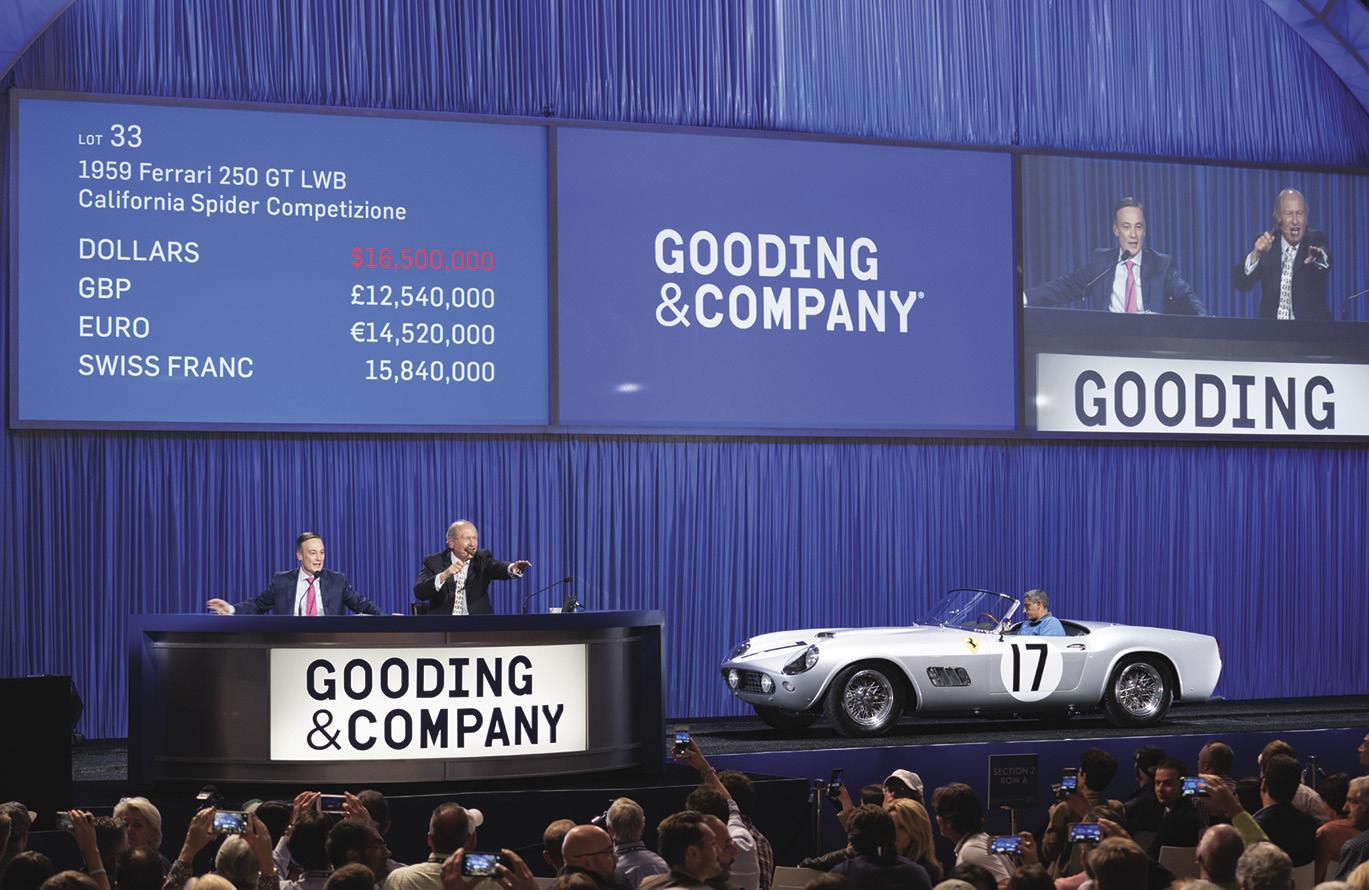

In recent years, the company has maintained its renown for hosting the season’s premier collector car event. In 2021, after a pandemic-induced hiatus, Gooding & Company reinvigorated the collector car market with its unforgettable return to the live auction stage at Pebble Beach, where it sold the top two most valuable cars of the year. The time capsule 1995 McLaren F1, which achieved $20,465,000, became the most valuable McLaren to ever sell at auction, and the 1959 Ferrari 250 GT LWB California Spider Competizione, which sold for $10,840,000, was the second leading automotive auction sale of the year. Gooding also set a record that year for a Bugatti Type 35B, with the sale of a 1929 Grand Prix for $5,615,000. The historic occasion garnered enough buzz that its new owner
exhibited the car at the Pebble Beach Concours the very next day, wherein it was awarded the Chairman’s Trophy, presented by Sandra Button.
From its debut as an established auction house in 2004, to its most recent Pebble Beach Auctions in 2022—when the company set new records for multiple supercars, including the Ferrari F40 and the Bugatti EB110 Super Sport—Gooding & Company has remained committed to bringing only the finest collector cars to auction. It has proudly upheld its status as the official auction house of the Pebble Beach Concours d’Elegance, where David Gooding presents the Elegance in Motion Award each year. The entire industry looks to Gooding & Company’s Pebble Beach Auctions for an updated report on the state of the market, and as the trajectory of recent history shows, we can expect it to reach many new pinnacles in the world of classic car collecting in the years to come.
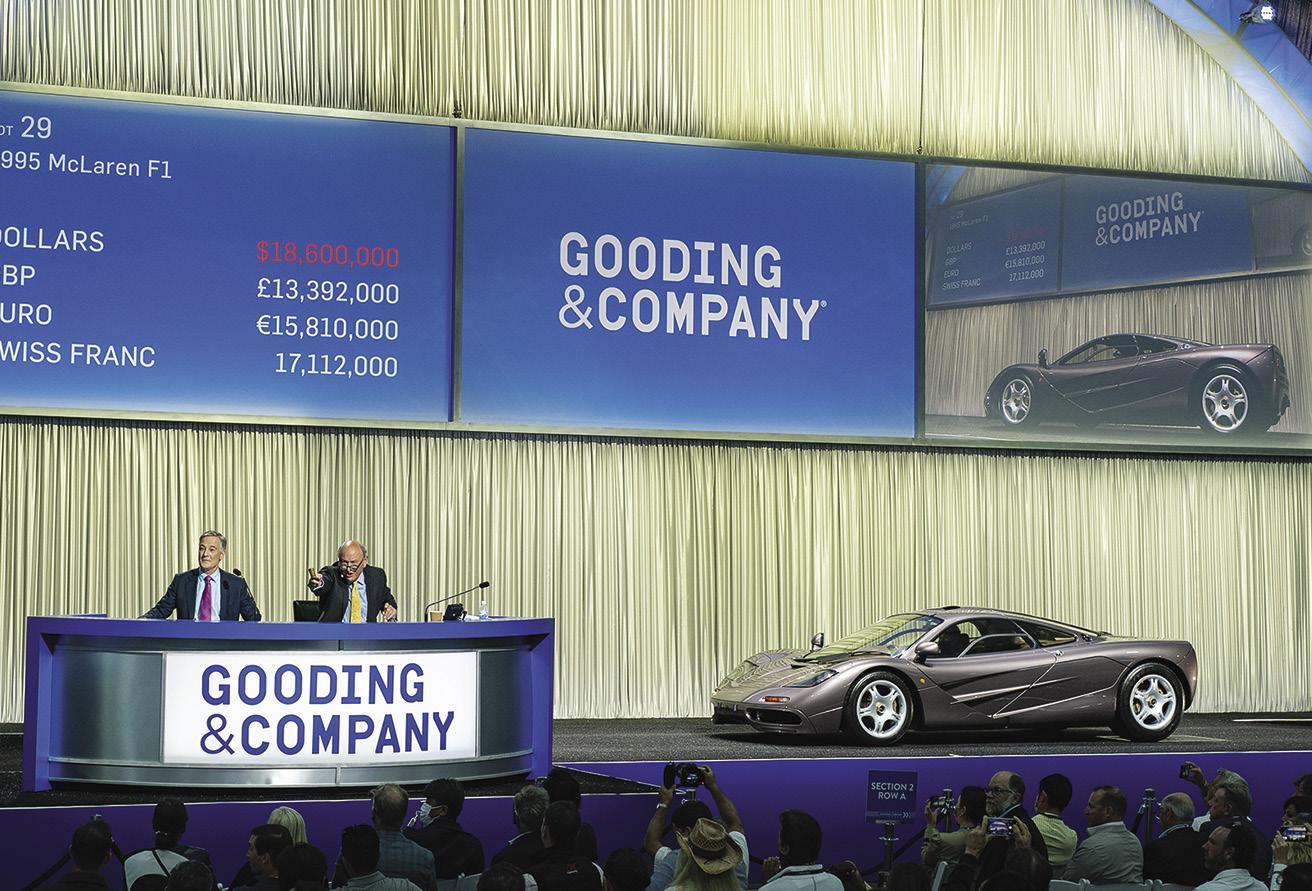
PEBBLE BEACH AUCTIONS
86 Pebble Beach Concours d’Elegance INSIDER
Top: The Richard Solove Collection of 15 Rolls-Royce motor cars achieved a cumulative total of $14,300,000 in 2007. Above Left: Gooding & Company sold this 1959 Ferrari 250 GT LWB California Spider Competizione for $18,150,000 at its highest grossing sale to date in 2016. Above Right: The 1995 McLaren F1, which achieved $20,465,000 and set a new world record for McLaren, was the most valuable car sold in 2021.
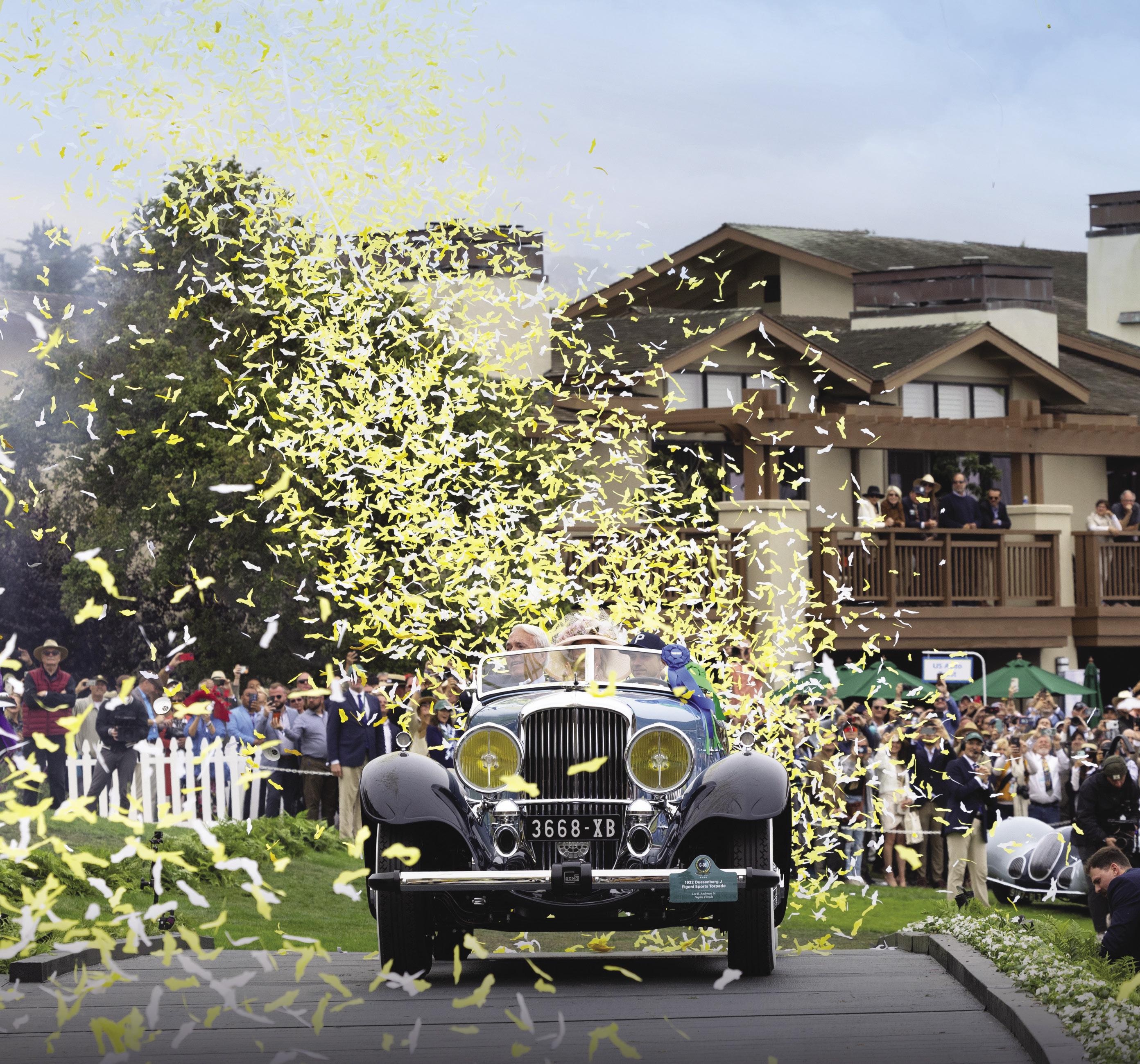
“The World’s Most Prestigious Car Show.” — FINANCIAL TIMES ©2023 Pebble Beach Company. Pebble Beach®, Pebble Beach Concours d’Elegance®, and their underlying images are trademarks, trade dress and service marks of Pebble Beach Company. AUGUST ADVANCE TICKETS AVAILABLE AT pebblebeachconcours.net PEBBLE BEACH
Cars in the Lives of Four Pebble Beach Insiders
COLIN FEICHTMEIR
Colin Feichtmeir has been on the Pebble Beach Concours Car Selection Committee since 2010 and has served as a Judge since 2012. Perhaps a little contrary to his age, his primary concentration is on pre-1920 cars, especially the large, brass American marques, but he is well versed in anything prewar and in European 1950s and ’60s sports cars.
Why Cars?
I was exposed to cars from a very young age; my earliest memories are of car tours with my grandfather, uncle, and cousins. I am not sure why, but my connection to early cars has always been very strong, and driving those cars is what I enjoy the most. There is nothing like driving a great T-head Mercer Raceabout or a five-horsepower Simplex on an open road; you are fully immersed in operating the car.
For me, the Pebble Beach Concours has always been about the assemblage of great cars that I would never be able to experience otherwise. Even though I am a part of the Selection Committee and know what cars are coming, every year I am surprised and delighted when I see the cars in person. The Concours is also about seeing close friends who share my enthusiasm and interests.
What Pebble Beach Concours moment comes foremost to mind and why?
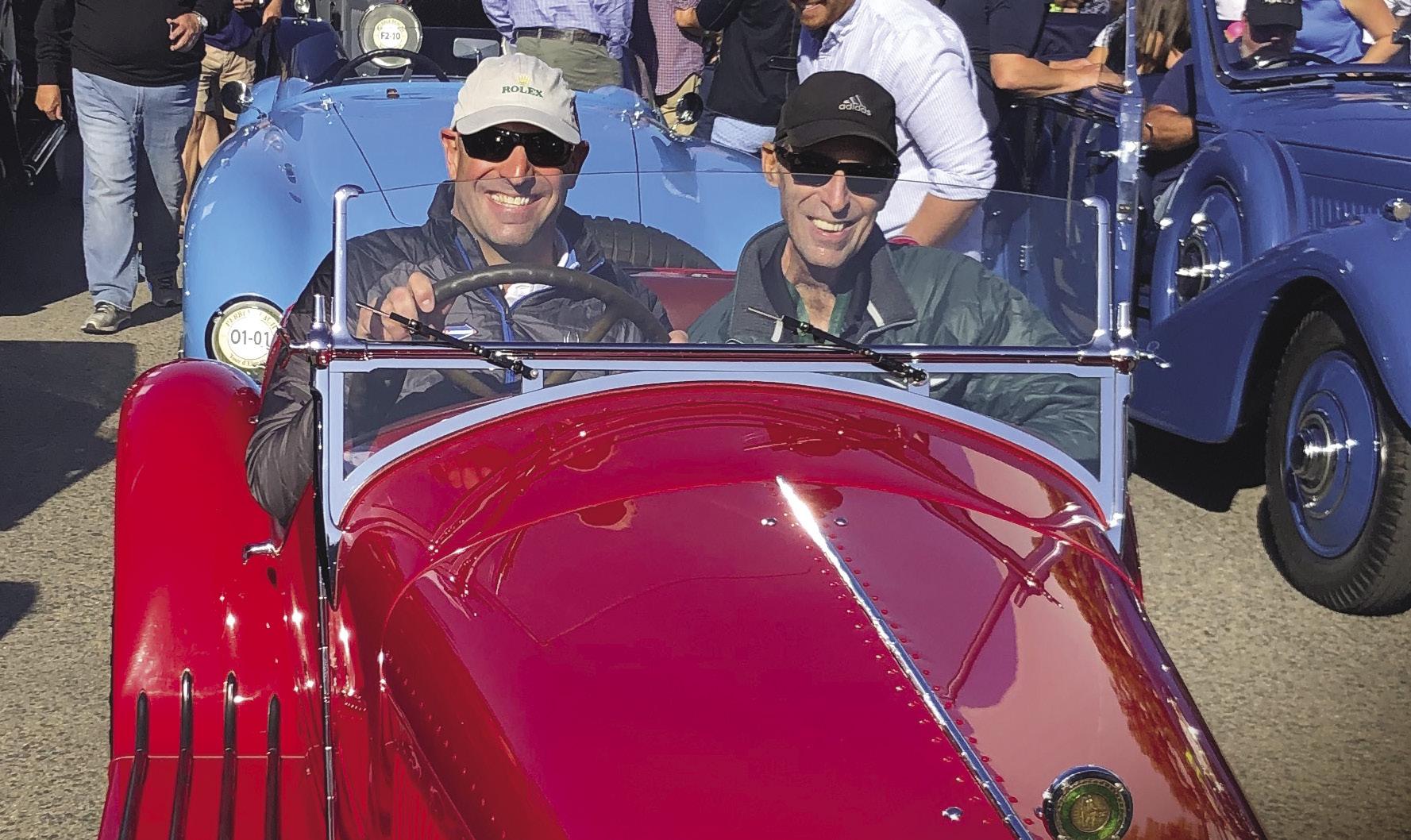
I have many great memories of being at the Concours— but those that really stand out are often memories of seeing unbelievable cars being driven through the Del Monte Forest. I remember helping to push-start the Bothwell Collection’s 1914 Peugeot L45 Grand Prix car at about 6 am, before the show, in a neighborhood near The Lodge at Pebble Beach. I am sure the neighbors were not thrilled with the loud straight exhaust roaring to life so early in the morning!
My favorite event surrounding the Concours is the Pebble Beach Tour d’Elegance because you can experience driving these great cars. My first, and probably most memorable, Tour experience was driving a friend’s 1960 Ferrari 250 TR59/60. A car like that makes you feel like a celebrity being chased by the paparazzi. In 2019 I was able to drive the Tour with my dad in another friend’s 1931 Alfa Romeo 8C 2300 Zagato. My dad passed away in 2020, so it was very special to do the Tour with him in one of my favorite cars to drive.
4 FOR THE ROAD
88 Pebble Beach Concours d’Elegance INSIDER
Colin Feichtmeir and his father piloted a friend’s 1931 Alfa Romeo 8C 2300 Zagato on the 2019 Pebble Beach Tour d’Elegance.
If you could walk our Concours competition field with one person, who would that be and why?
Without a doubt, the person I would love to walk the field with would be Bill Harrah. Harrah is known for having assembled one of the largest car collections, but it is his knowledge, especially with regard to early American cars, that I would have loved to discuss. He had a passion for the great marques, but he also saw the merit and value in more common brands. He didn’t collect cars as trophies but was a true enthusiast focused on authenticity, and he loved using his cars as they were intended—often to the limit of their capabilities. Since Harrah died the year I was born, I never had the chance to meet him, but in this mythical meeting we would definitely spend time on every car in the Antique Class. And I would love to see him try to acquire cars that he did not yet own.
MEG MCCARTHY
Meg McCarthy, former Aetna/CVS executive and current public company director, has been attending and supporting the Pebble Beach Concours for more than 25 years. She loves everything about Concours cars—the elegance, the provenance and the artistic beauty of the coachwork!

Why cars?
I fell for cars when I met my husband more than 30 years ago. He was a car guy, as was his father. I am from New England; I grew up in Connecticut and home is Chatham, Massachusetts. It is a charming New England town founded in the 1600s, and the town works hard to preserve the beauty of our antiquity. I have always loved antiques and the process of restoration/renovation—bringing something old back to life. I have restored old homes and furnishings; our home for the last 15 years was built in the late 1700s, and I am working on restoring another home right now that was built in the early 1800s. So old cars, their history, bringing their beauty back with fine craftsmen, was a natural interest for me and something I gravitated to as I got to know my husband and his father.
If you could go back in time, what historic auto event or person would you want to see and why?
In addition to old homes and old cars, I also love art. I met Barry Rowe, the wonderful car artist, many years ago, and he did many custom pieces for us. I love his work because he included the “glamour” or fashion of the time— beautifully dressed women and men with their spectacular automobiles. So I have always imagined going to the Paris Auto Show “in the day.”
The other event that I would have loved to see is the Auburn Speedster being tested by Ab Jenkins on the Bonneville Salt Flats. We are fans of the Speedster and boattails in general, and I have never been to the salt flats and would love to see the geography.
What Pebble Beach Concours moment do you remember most? And if you could walk the field with one person, who would it be and what cars from our history would you stop to admire?
We have had the privilege of being invited to three Concours events at Pebble Beach. My special moment was riding over the ramp on Sunday in 2018 in my 1949 Delahaye. I was with Fran Roxas, our restoration craftsman, our mechanic, and my husband. We won First in Class with a car that both Fran and my husband weren’t too crazy about when I bought it. We were all so surprised! Fran did a phenomenal restoration and it is an elegant beauty! A great Art Deco example in aubergine and lavender. The other special moment of that day was meeting and laughing with Jay Leno. The gift of charity is what makes the Pebble Beach Concours so special—and Jay knows how to raise money!
I would love to have walked the field with Ralph Lauren, particularly the year when his Bugatti Type 57 SC Atlantic
Pebble Beach Concours d’Elegance INSIDER 89
Meg McCarthy, with husband Craig Kappel by her side, proudly shows off the First in Class award earned by her 1949 Delahaye 135 M at the 2018 Pebble Beach Concours.
Cars in the Lives of Four Pebble Beach Insiders
won Best of Show. He has such exquisite taste in fashion and cars; he’s an artist in his own way. I would love to hear him describe the history of each of his cars and how he thinks about the cars in their day.
JOHN WILLARD MARRIOTT JR.
John Willard Marriott Jr., the former president, CEO and Chairman of the Board of Marriott International, first attended the Pebble Beach Road Races in 1952, and he first participated in the Pebble Beach Concours in 1983. He continues to be active in the hobby.
Why cars?
I have always loved cars, especially 2-seater sports cars with a racing background. The sleek lines and wonderful sounds have always attracted me. I also love fast boats, especially vintage wooden boats.
I had a few interesting cars in my youth. I purchased a Miura (0706 Prototype) new in Rome, and it remains in the family in excellent unrestored condition. It was in the early 1980s that I started collecting. My first serious
car was a 1934 Mercedes 500K Cabriolet A. The car was restored in Virginia and shown on the East Coast. Its first true Concours d’Elegance was at Meadow Brook Hall, where the car did very well. Then I received an invitation from Lorin Tryon for the 1983 Pebble Beach Concours. Even then, Pebble Beach was the Biggest and Best Concours in the World. So we brought the car out, and we scored a Second in Class. One of my Judges was a hero of mine, Mr. Phil Hill. After that we brought a car about every other year for a long time.
What Pebble Beach Concours moment do you remember most?

I have a special memory from Pebble Beach that is not from the Concours: I attended the 1952 Pebble Beach Road Races and witnessed Bill Pollack win with a black Allard. I now own that car and have shown it at the Pebble Beach Concours.
In 2006 I enjoyed riding in my Talbot roadster on the Tour. David Carte, who was driving, scared me only once, and the PCH was a bit cold in an open car.
4 FOR THE ROAD
90 Pebble Beach Concours d’Elegance INSIDER
J. W. Marriott Jr.’s 1959 Ferrari 250 GT LWB placed First in Class in 1993.
In 1983 I enjoyed speaking with Clint Eastwood and watching him trying to sit in my 500K.
If you could walk the Concours field with just one person, who would it be and why?
My favorite time at Pebble Beach was in 2002 with my dear friend Howard Baker Jr., the former White House Chief of Staff, Senate Minority Leader, Senate Majority Leader, and Senator from Tennessee. He was a great man and a true Gentleman.
JULIE SUMMERVILLE
Julie Summerville was first invited to serve as a Judge at the Pebble Beach Concours back in 2002. Although she is often assigned to a postwar category, her range of knowledge is broad, and she has served on several prewar judging panels, too.

Why Cars?
I was fortunate enough to have been born in Indianapolis, Indiana, in an era where it seemed everyone had grandparents or relatives with something interesting in the garage. Tucked away behind my grandparents’ home on North Meridian Street was a 1932 Packard Light Eight Sedan. The Packard had been put up on blocks to keep my grandfather, born in 1879, from driving. I first remember seeing the Packard when I was only five—and I was instantly bitten by the car bug. From that moment on, I became fascinated with all things automotive and transportation-related. It was not only the mechanical aspects and styling of cars that drew my attention, but also the history behind them, the individuals who had driven them and how our culture had been changed. I even studied the history of roadway construction.
At the age of fourteen, I began to work on the Packard with my dear childhood friend and former Pebble Beach Judge, the late Mark Lambert. We were both fortunate to have real cars to play with as teenagers! I still have that Packard today. Driving the beautiful back roads of Indiana with my other grandparents gave me the love of Sunday drives and road trips. It was my Uncle Fred, however, who gave me a passion for speed. Unbeknownst to my parents, he would take me out in his DeSoto and do endless smokey burnouts while “babysitting.” Thankfully I was able to put my automotive passion to good use as a professional auto appraiser.
If you could go back in time, what historic automotive event would you attend?
If I could travel in time, it would be to my first Indianapolis 500 in 1966. It was the event’s 50th anniversary and Graham Hill won. I was sitting in the Southwest Vista with my mother’s parents, my parents, and my aunts and uncles. Back then, on the days leading up to the race, the mechanics and drivers working in Gasoline Alley would take the time to talk to you, especially if you were a child or teenager. For our hobby to thrive in the future, we need to encourage and take time with young people who show an interest in cars. It has been great to have the young people from McPherson College on the Concours competition field with us, learning how to judge cars.
If you could walk the field of the Concours with just one person, who would it be?
If I could walk the field with just one person, it would be my dear friend Winston Goodfellow. We would walk straight to a car that neither of us had seen before.
Pebble Beach Concours d’Elegance INSIDER 91
Julie Summerville, one of our longtime Class Judges, often serves with Chief Class Judge Winston Goodfellow.
FRIENDS & FACES
2022 PEBBLE BEACH CONCOURS d ’ELEGANCE
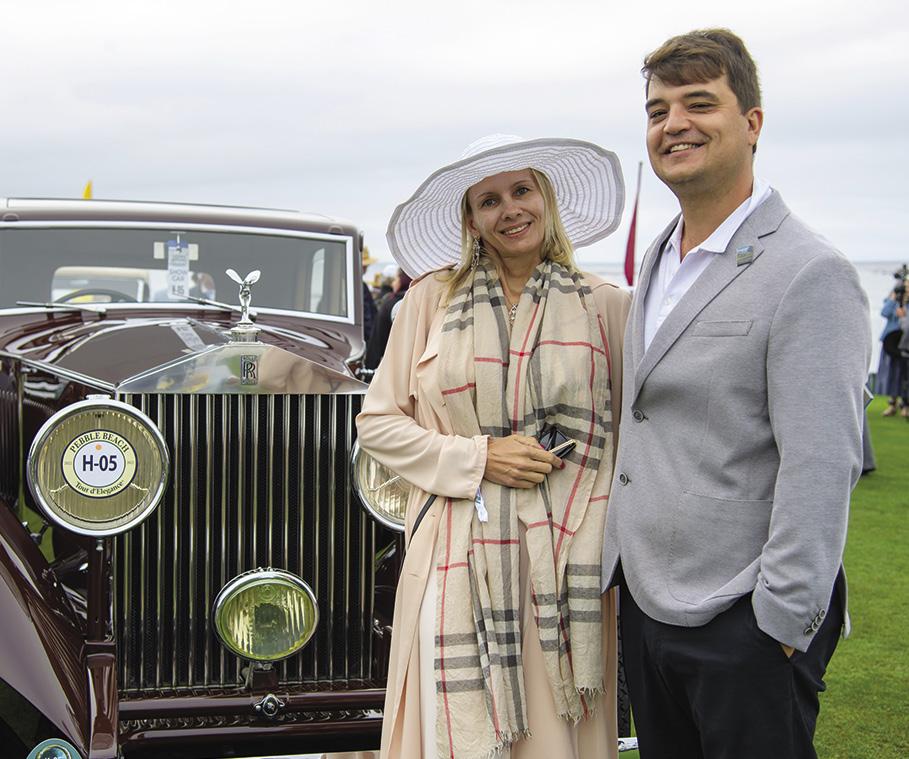

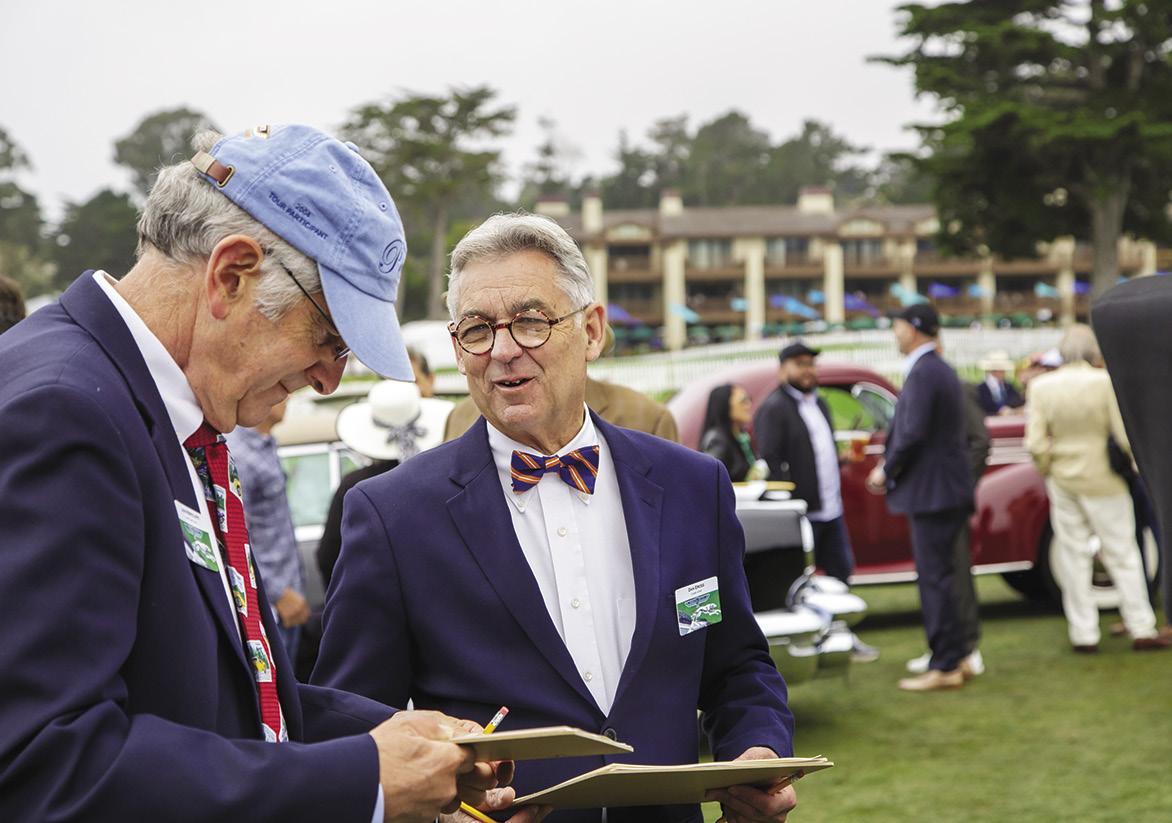
 Mitch McCullough proudly shares his 1964 Alpine M64 Coupé.
Mitch McCullough proudly shares his 1964 Alpine M64 Coupé.
SOCIAL SEEN See & Be Seen on the Concours Show Field
A festive flock: Savannah Afsahi, Jack Burns, Chris and Laura Maloney, Tony DePaula, and Debra and Rick Smith pose beside the Maloney’s 1937 Railton Hudson Deluxe 8 Limousine.
Jason and Anna Courtney pause beside Dr. Carl Soderstrom’s 1933 Rolls-Royce Phantom II.
92 Pebble Beach Concours d’Elegance INSIDER
Class Judges John Bertolotti and Dan Erceg hard at work.
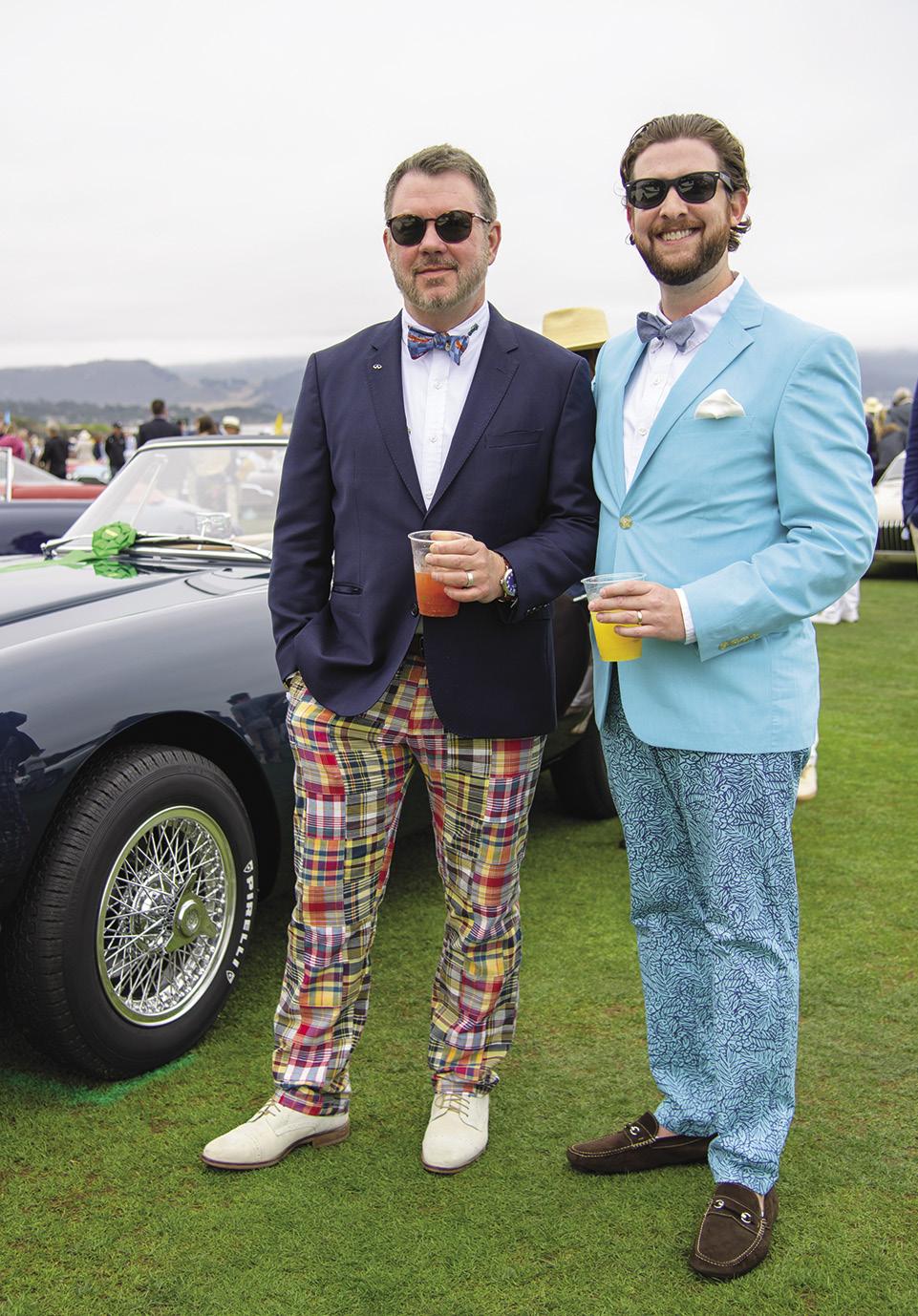
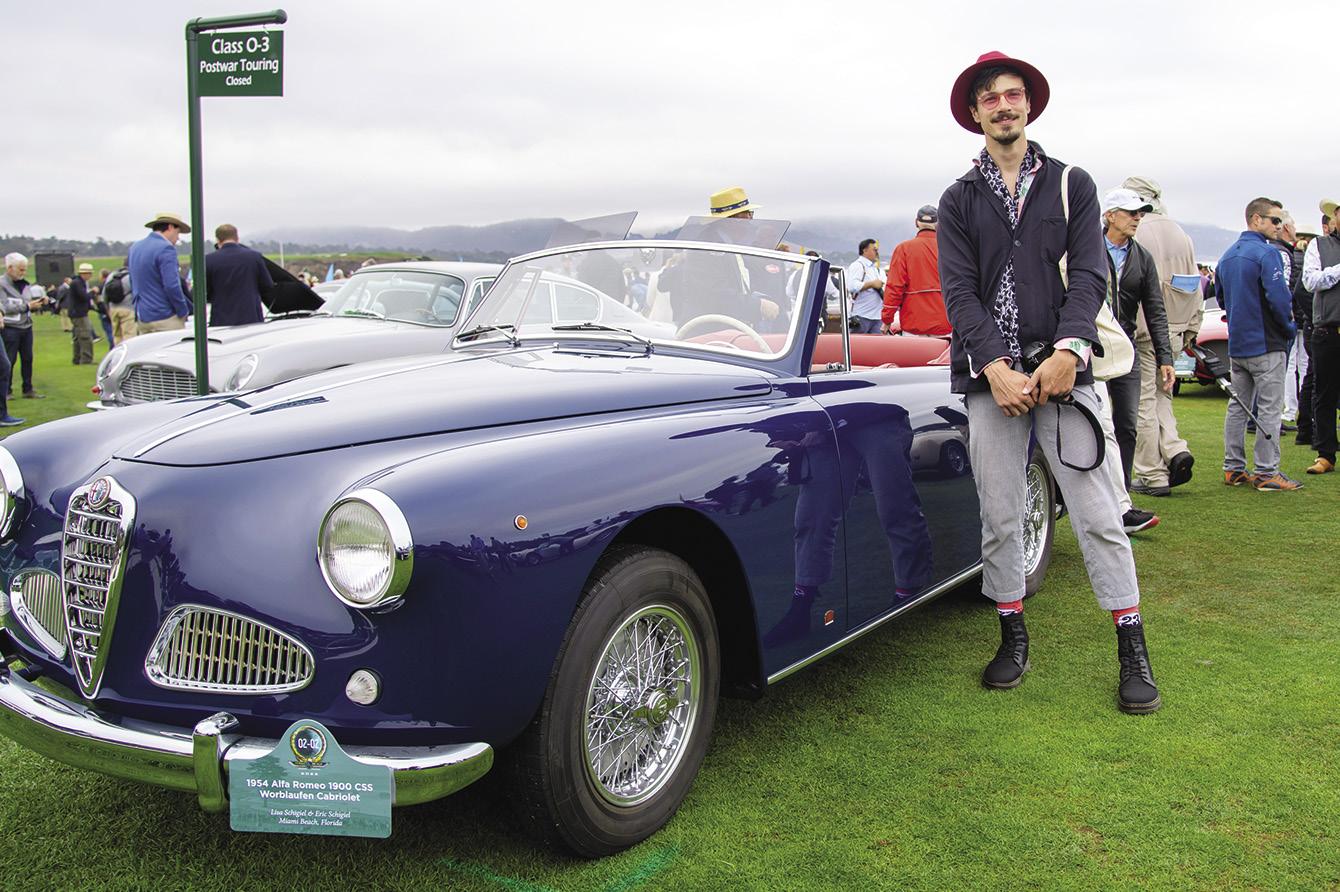


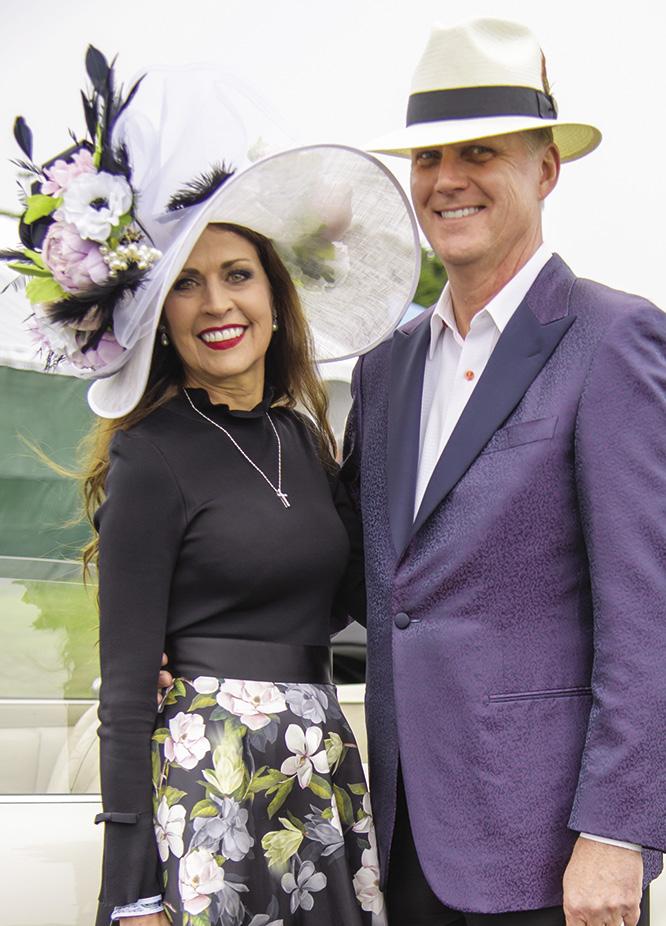
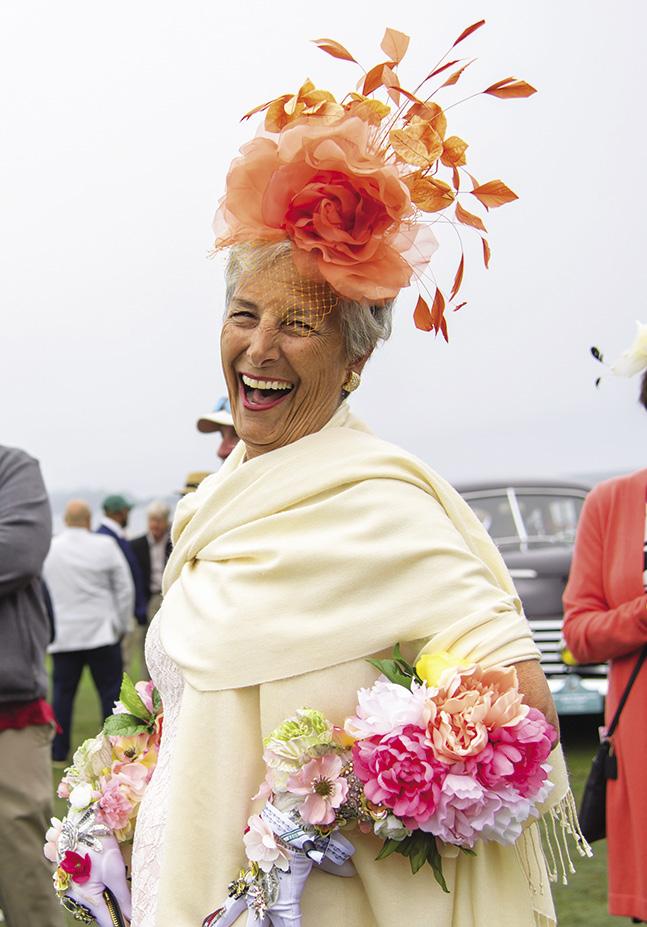 A young enthusiast eyes the 1936 Bugatti Type 57 Gangloff Stelvio of Olav Glasius.
Tastemakers Kyle Bazemore and Brandon Blair.
Michael Leventhal is a match to his 1956 Ferrari 250 GT LWB Scaglietti Berlinetta.
Eric Schigiel shows off the 1954 Alfa Romeo he shares with Lisa.
Below Left: It’s easy to spot the ever-captivating Margie Danz, known for her fascinators. Below Right: These two charmers are always among the most elegant people on our field.
A young enthusiast eyes the 1936 Bugatti Type 57 Gangloff Stelvio of Olav Glasius.
Tastemakers Kyle Bazemore and Brandon Blair.
Michael Leventhal is a match to his 1956 Ferrari 250 GT LWB Scaglietti Berlinetta.
Eric Schigiel shows off the 1954 Alfa Romeo he shares with Lisa.
Below Left: It’s easy to spot the ever-captivating Margie Danz, known for her fascinators. Below Right: These two charmers are always among the most elegant people on our field.
Concours d’Elegance INSIDER 93
Pebble Beach
FRIENDS & FACES
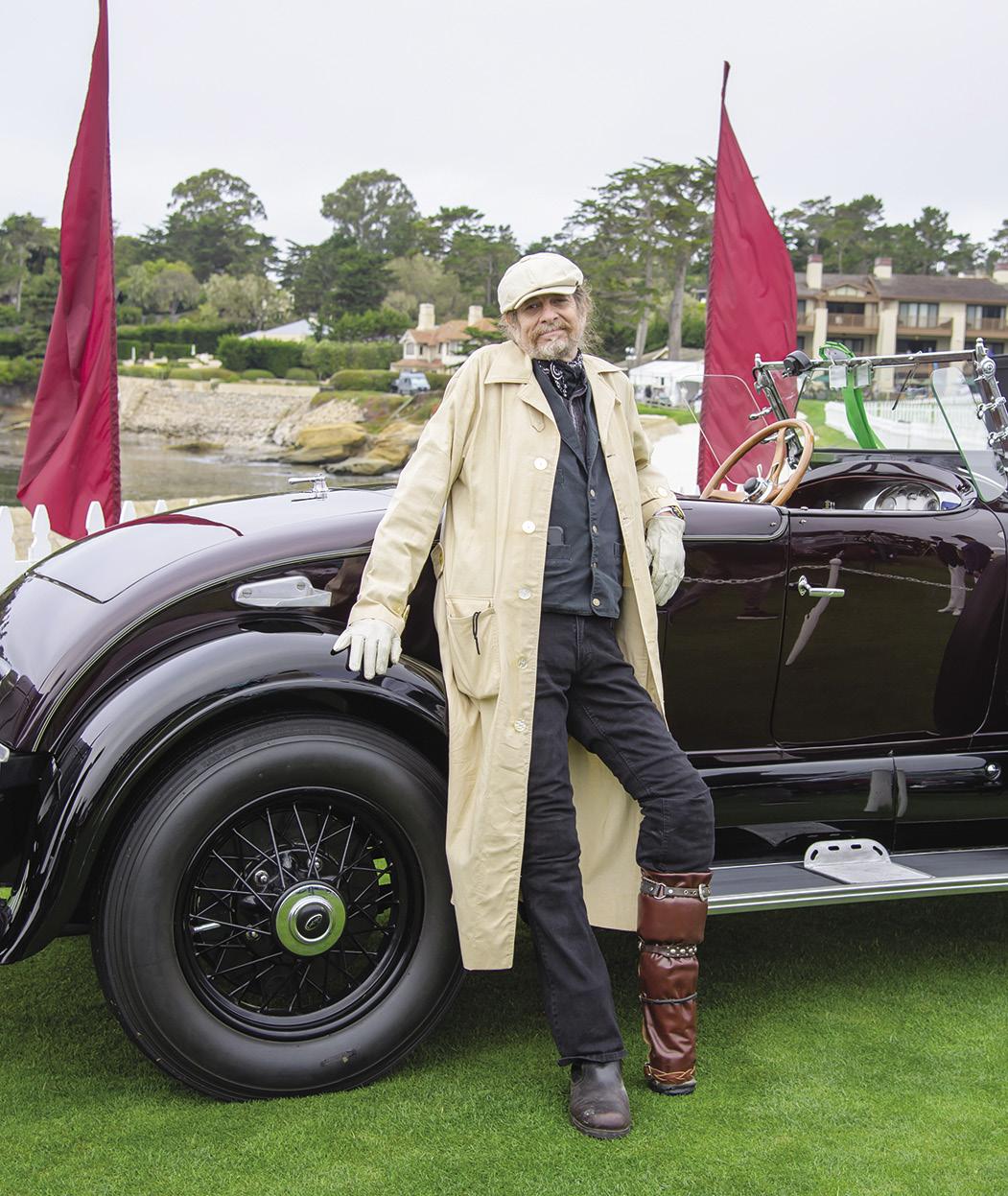


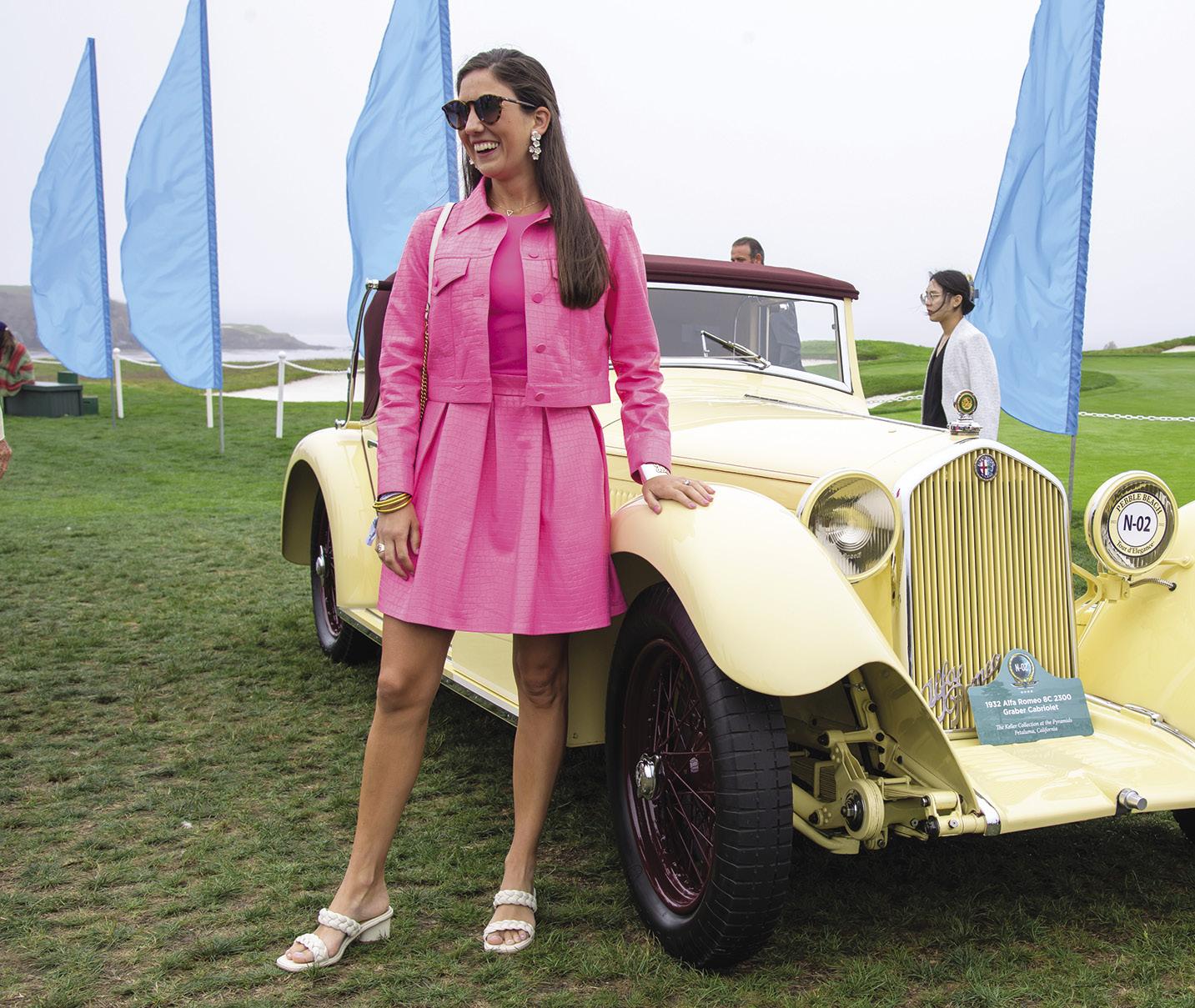 Above: The Keller Collection’s demure Graber-bodied 1932 Alfa Romeo 8C 2300 Cabriolet drew many a passerby.
Above: The Keller Collection’s demure Graber-bodied 1932 Alfa Romeo 8C 2300 Cabriolet drew many a passerby.
SOCIAL SEEN
Below: Eva and Alan Schultz were attired to match their 1912 Pierce-Arrow 48-SS 7 Passenger Touring.
Top: Maria Briggs and Doris Gilles stroll the Concours show field.
94 Pebble Beach Concours d’Elegance INSIDER
Above: Leland Powels strikes a pose with his 1930 Lincoln L Locke Roadster.
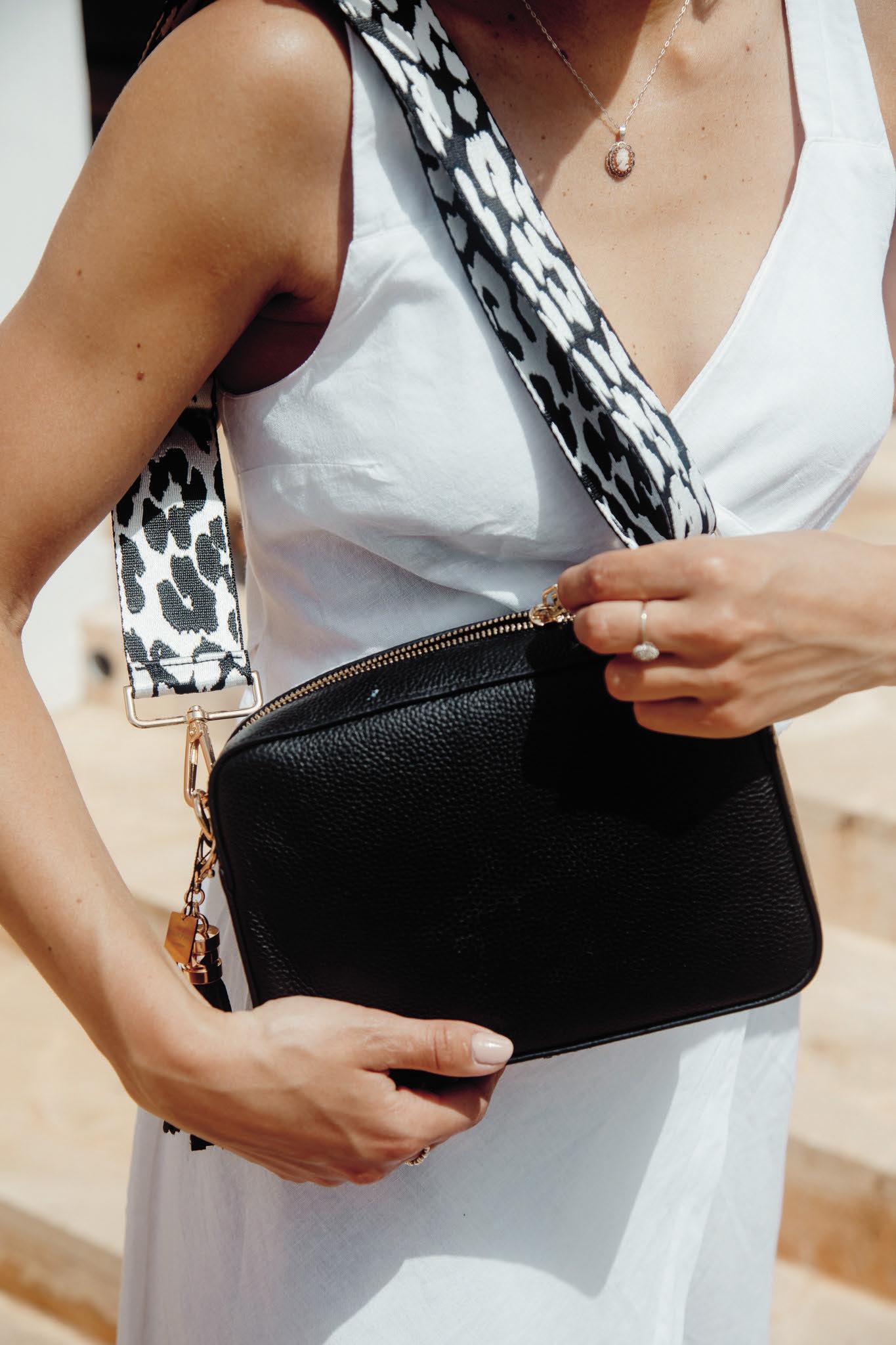

pompomlondon.com pompomlondon.com Use code: PEBBLEBUNDLE for 2 free straps!
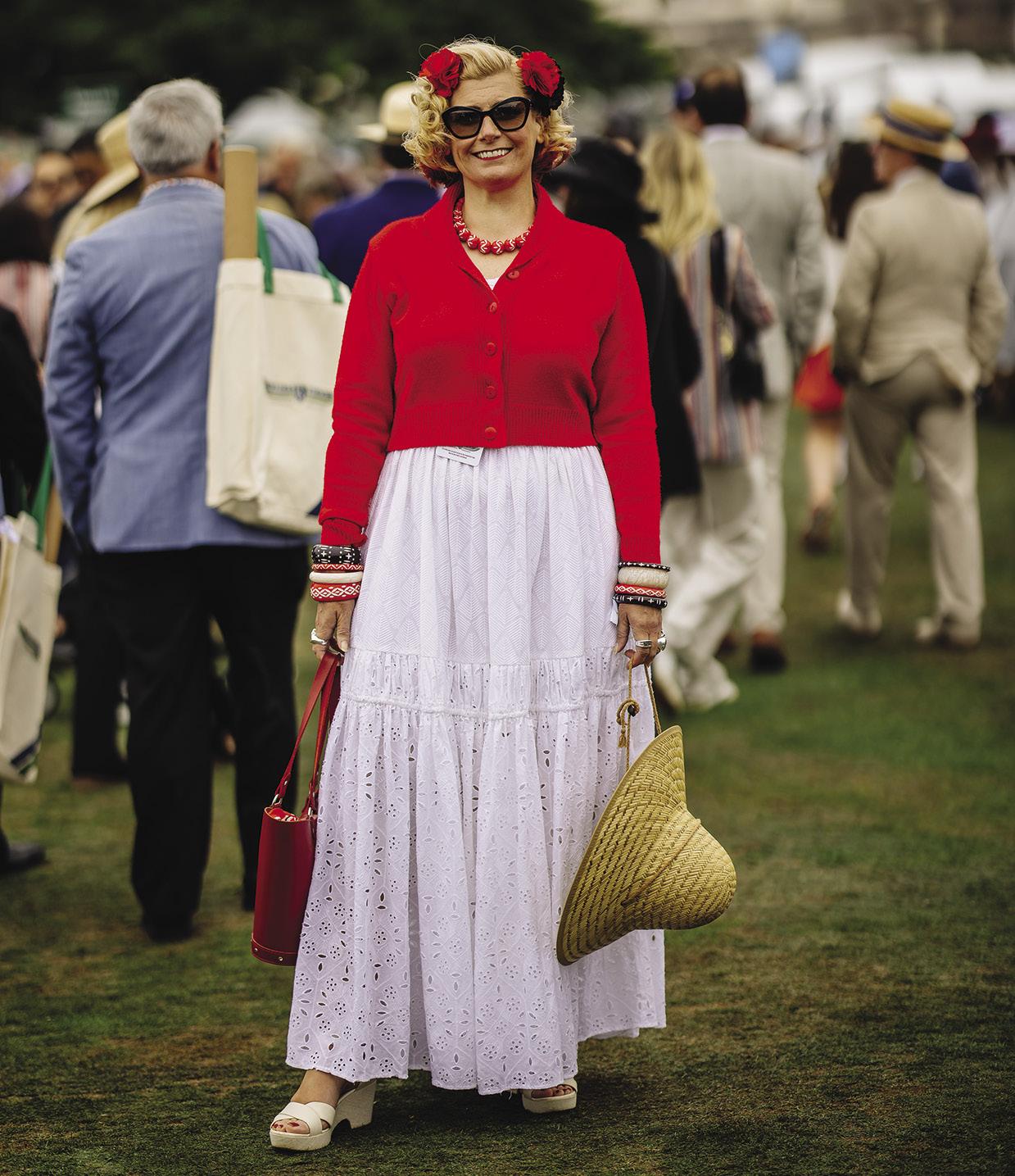

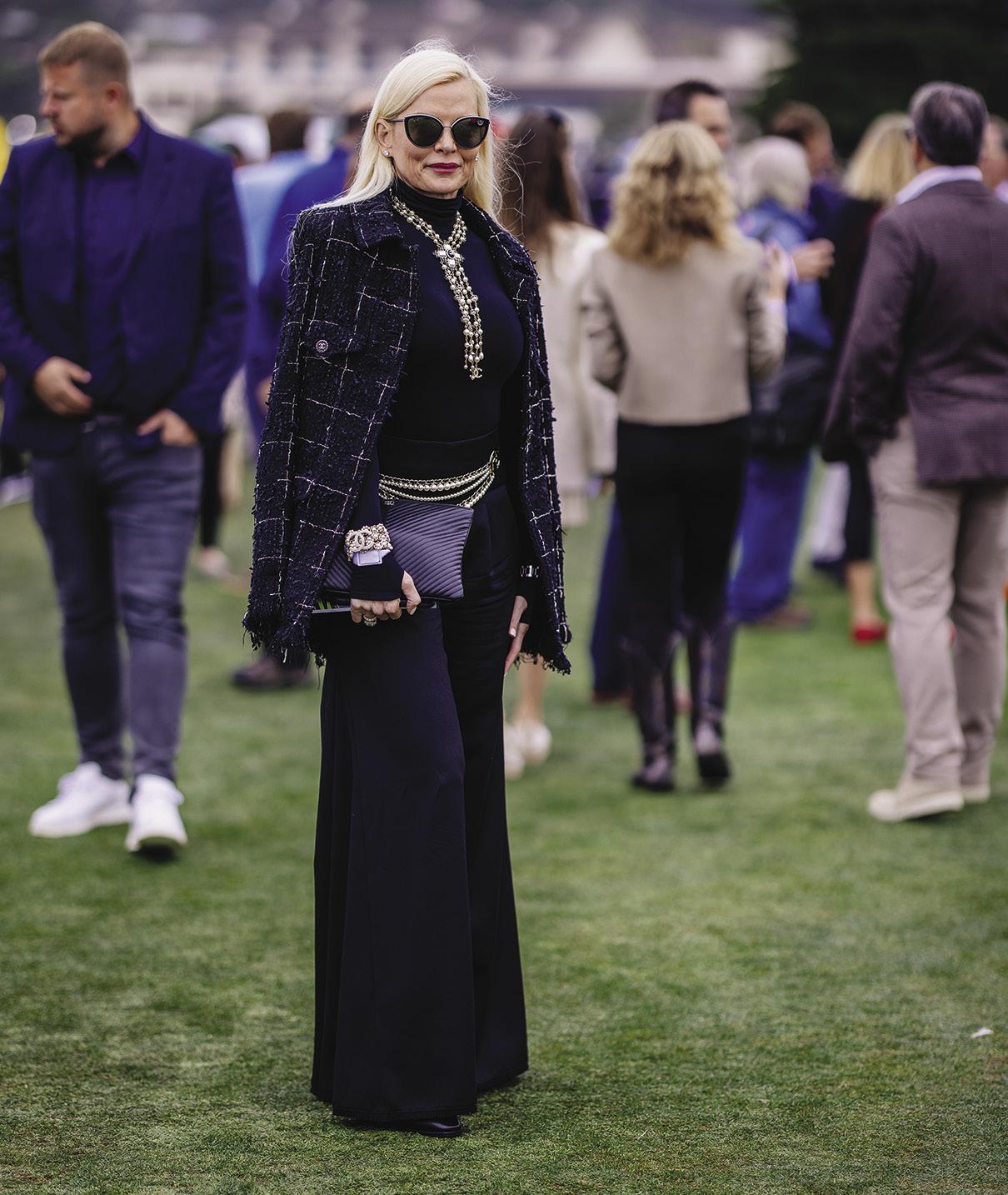
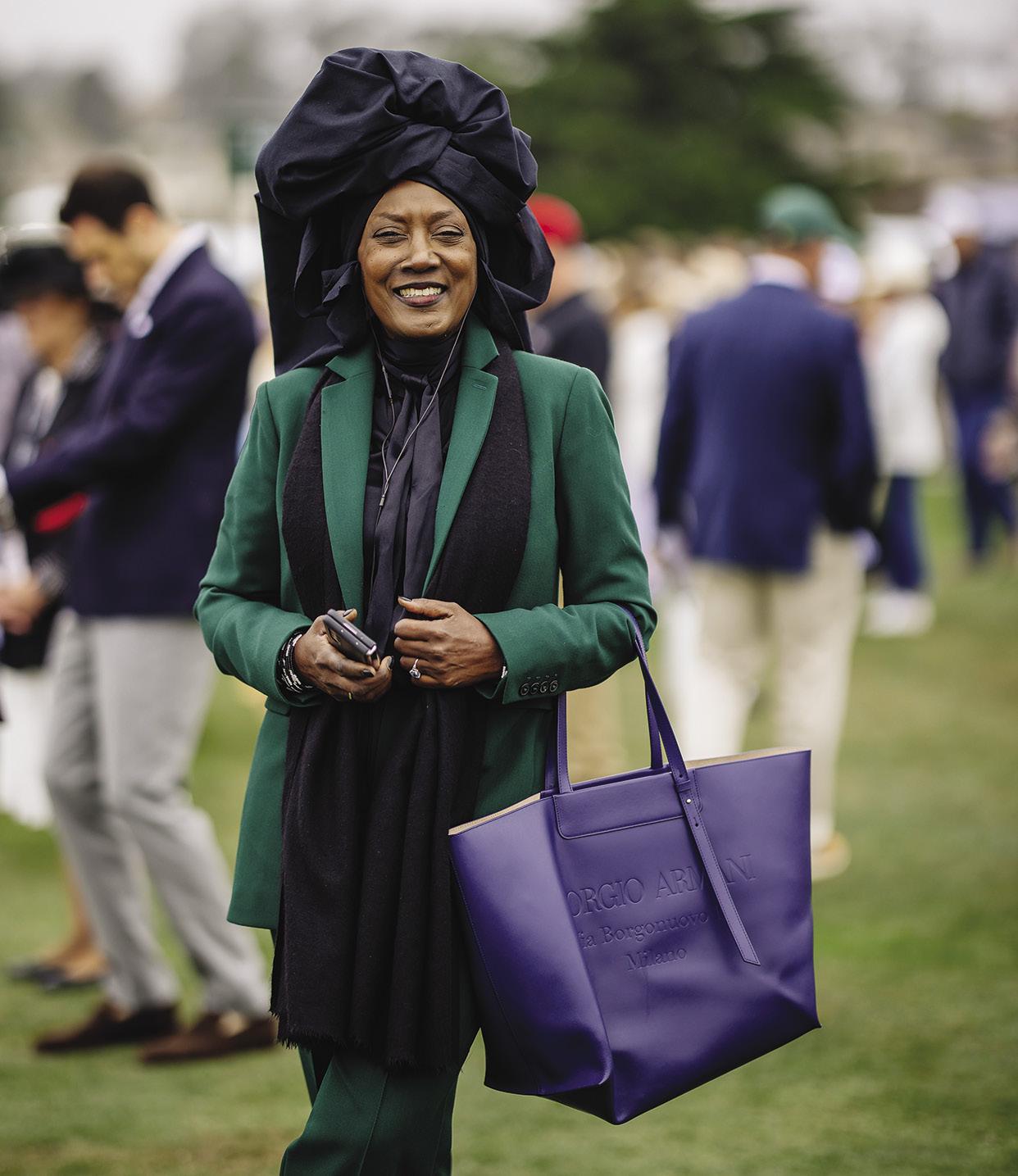
SOCIAL SEEN Our Stunning Guests Dressed in their Concours Best 96 Pebble Beach Concours d’Elegance INSIDER
Chic Classy Dapper
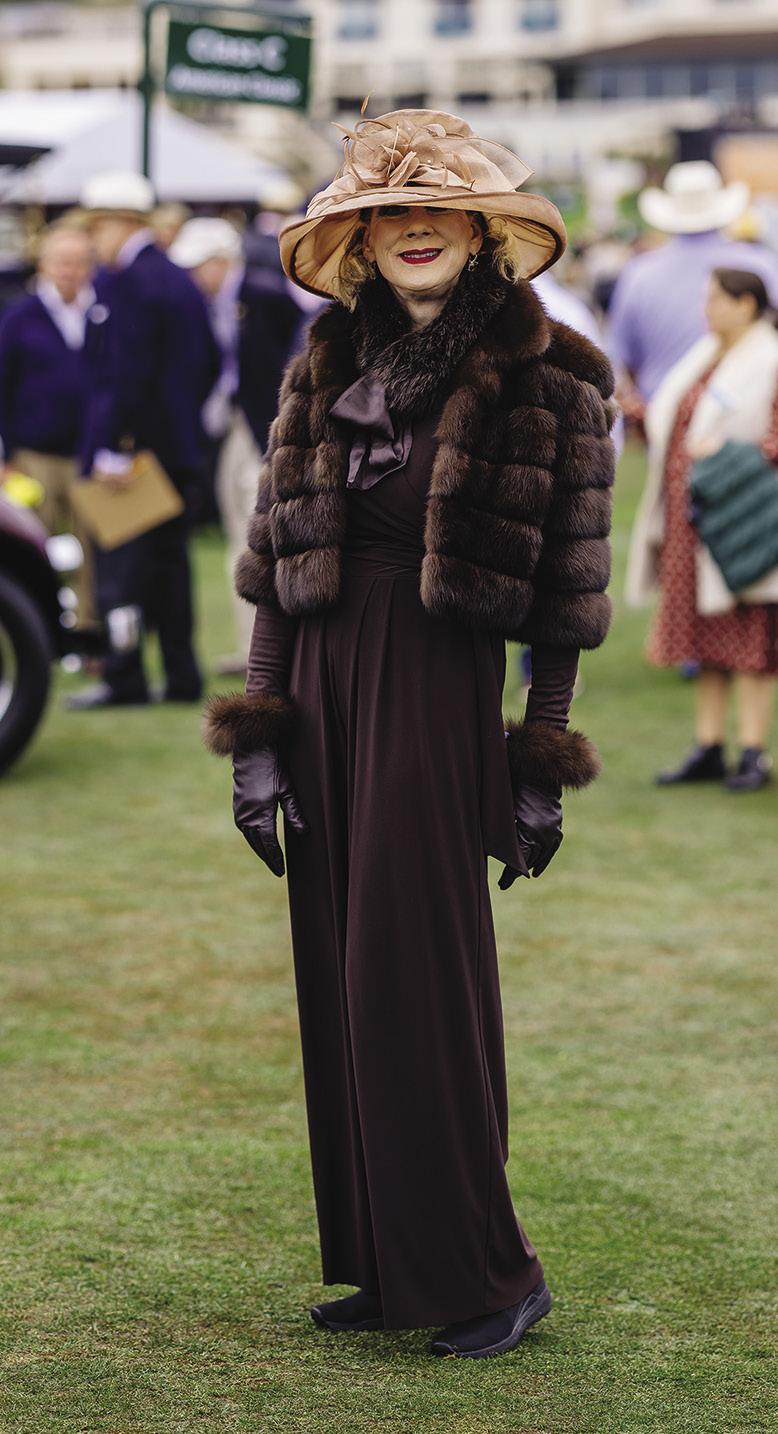


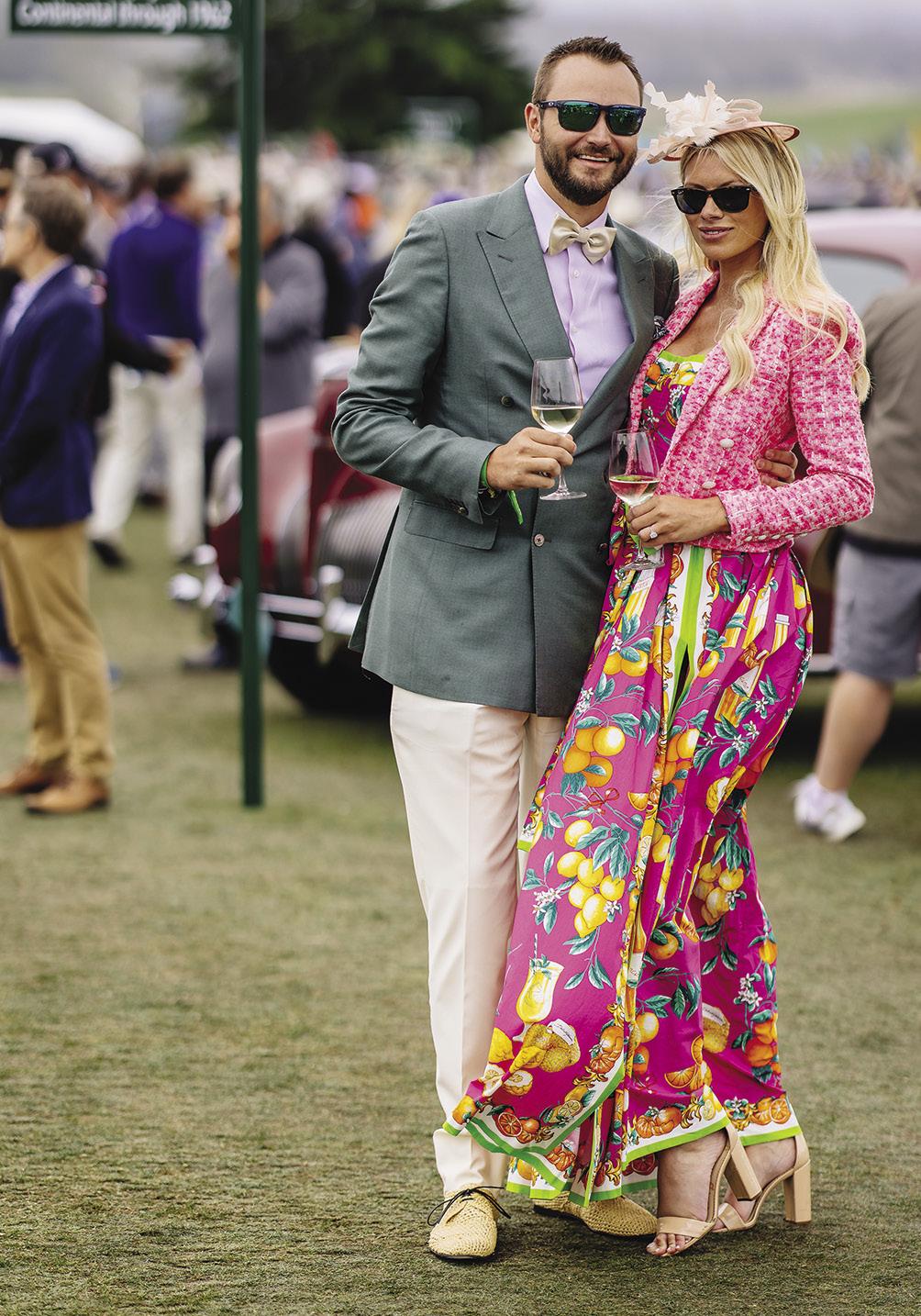

Bold
Festive
Fun Creative Beautiful
STYLE Pebble Beach Concours d’Elegance INSIDER 97
Timeless #CONCOURS
FRIENDS & FACES

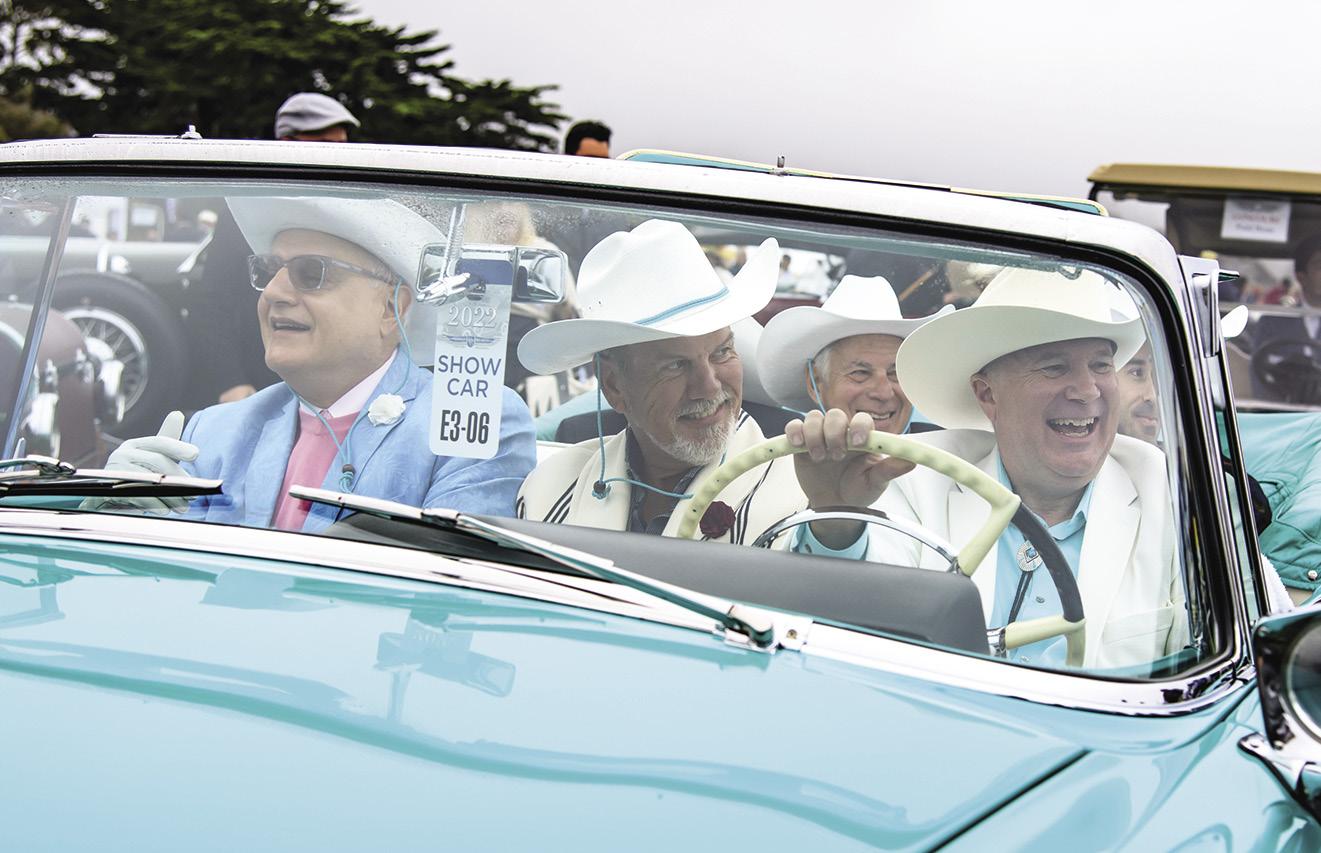
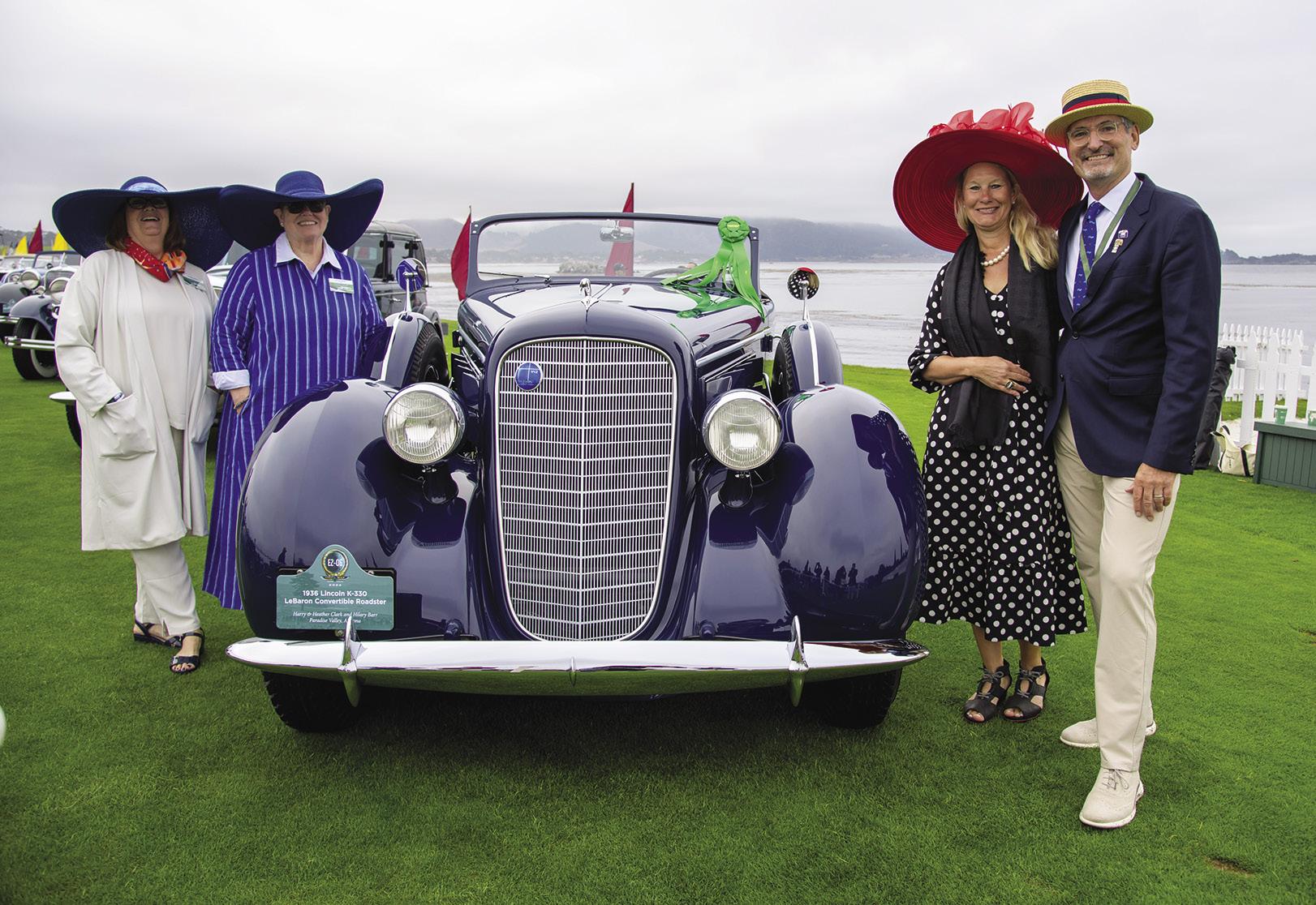
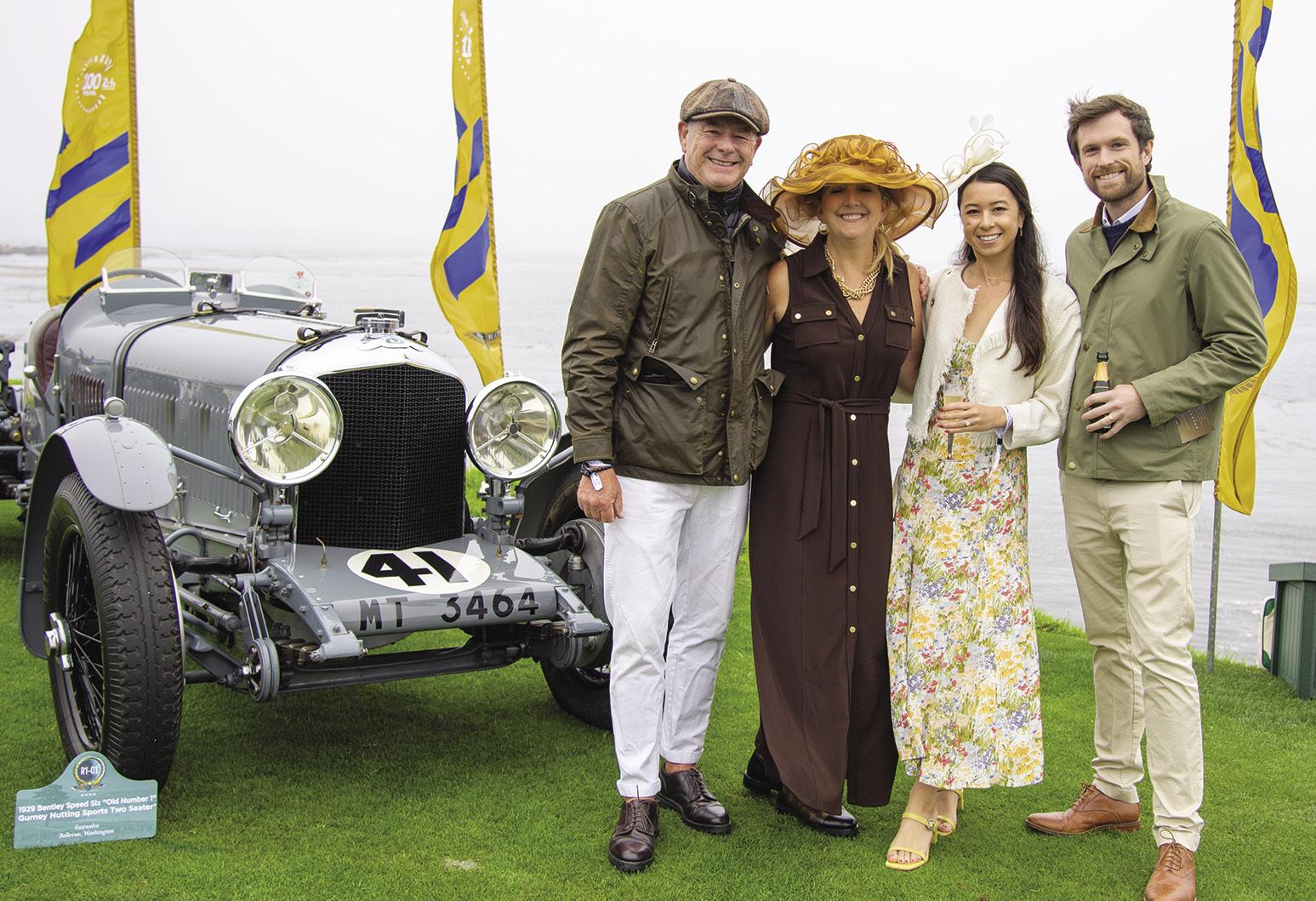
SOCIAL
SEEN
Left: As ever, Bentley Old Number 1 draws a crowd.
Above: The 1956 Lincoln Premier Convertible of Ray Kinney and Jeff Wildin was continually packed to the brim with big smiles and big hats.
Right: Lindsey Green, Hilary Barr, and Heather and Harry Clark presented a sumptuous 1936 Lincoln K-339 LeBaron Convertible Roadster.
98 Pebble Beach Concours d’Elegance INSIDER
Stan Lucas greets Liliane Quon McCain, who shared her 1936 Bugatti Type 57 Graber Cabriolet.
RESTORING THE WORLD’S FINEST
Over more than 40 years, RM Auto Restoration has built an incomparable reputation for delivering perfection. Judges at the world’s most prestigious events have awarded RM-restored cars countless honors. Whether it’s a complete restoration, a mechanical refresh, or a cosmetic upgrade, our dedicated team of experts provides an unwavering commitment to delivering flawless work no matter the project.

7
BEACH® BEST OF
WINS +1 519 352 4575
PEBBLE
SHOW
Pebble Beach® and Pebble Beach Concours d’Elegance® are trademarks and service marks of Pebble Beach Company. Used by permission.
1932 Duesenberg Model J Figoni Sports Torpedo Pebble Beach Concours d’Elegance® BEST OF SHOW, 2022
72 nd PEBBLE BEACH CONCOURS d ’ELEGANCE

On Sunday, August 20, over 200 of the most prized collector cars in the world roll onto the 18th fairway of Pebble Beach Golf Links—where they strive to be recognized as the best. The automobiles are judged for their historical accuracy, their technical merit and their style, and the best garner reward and recognition.


Time/Date: 7 am to 5 pm, Sunday, August 20
Location: The Lodge at Pebble Beach and the 18th fairway of Pebble Beach Golf Links
Schedule: 5:30 am: Dawn Patrol viewers are allowed access
Dawn: Field opens to entrants
8 am: Judging commences
10:30 am: Field opens to spectators
1:30 to 5 pm: Awards presentations
General Admission Tickets are $475 through July 31 and $575 thereafter.VIP tickets range from $1,000 to $4,100. All tickets can be purchased online at pebblebeachconcours.net/tickets.
25 th PEBBLE BEACH TOUR d ’ELEGANCE
presented by Rolex
On the Tour, Concours participants trace portions of scenic 17-Mile Drive and Highway One from Pebble Beach to Big Sur and back, showcasing elegance in motion for all to enjoy.
Time/Date: 9 am to 2 pm, Thursday, August 17
Schedule: 7 am: Cars line up on Portola Road near Pebble Beach Equestrian Center
9 am: Cars depart, tracing portions of 17-Mile Drive and Highway One
Noon: Cars return to Pebble Beach
Noon to 2 pm: Participants enjoy a luncheon at Mercedes-Benz
Spectators welcome; for a map of the Tour d’Elegance route, go to pebblebeachconcours.net/tour
PEBBLE BEACH MOTORING CLASSIC
The Motoring Classic is the ultimate road trip for enthusiasts, winding down the West Coast from Seattle to Pebble Beach, arriving just in time for Pebble Beach Automotive Week. The scenic 1,500-mile route for the fourteenth annual trip climbs the Cascade Mountains, takes in Crater Lake and crosses the Golden Gate Bridge.
Dates: Monday, August 7 to Wednesday, August 16
Location: Woodmark Hotel in Kirkland, Washington to The Lodge at Pebble Beach
Schedule: August 7: Participants gather in Kirkland, Washington
August 8: 8:30 am Departure from the Woodmark Hotel
August 16: 3:00 pm: Arrival at The Lodge at Pebble Beach Spectators welcome for departure and arrival.
CALENDAR OF EVENTS 2023 Pebble Beach Automotive Week
100 Pebble Beach Concours d’Elegance INSIDER
DISPLAYS, DEBUTS AND RIDE & DRIVES
Many automotive and luxury goods manufacturers will be hosting displays and unveiling new cars and concepts throughout Concours week. Ride & Drives will also be offered. Watch our website for the latest information regarding new car debuts and other exciting events.
Dates: Thursday, August 17 to Sunday, August 20, subject to individual manufacturer
Location: Concours Village near the Pebble Beach Golf Academy, as well as the first and third fairways of Pebble Beach Golf Links and nearby locales beginning on Thursday, August 17.
The Concept Lawn, featuring the latest concepts and new cars, is held on the practice putting green in tandem with the Concours on Sunday, August 20. Cars load onto the Concept Lawn beginning in the afternoon on Saturday, August 19.
Most exhibits are open to the public without a fee.

PEBBLE BEACH AUCTIONS
presented by Gooding & Company
The Pebble Beach Auctions presented by Gooding & Company offer car collectors the opportunity to not only see but acquire automobiles of the highest quality, provenance and design.
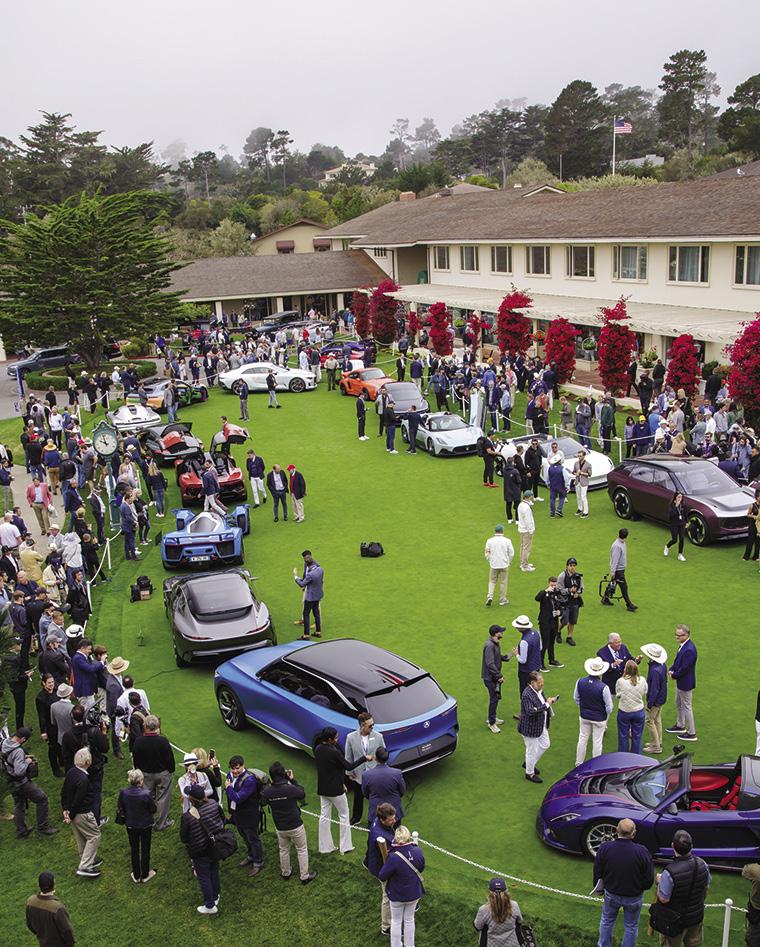

Viewings:
10 am to 6 pm, Wednesday, August 16
9 am to 6 pm, Thursday, August 17
9 am to 9 pm, Friday, August 18
9 am to 5 pm, Saturday, August 19
Auctions:
5 pm, Friday, August 18
11 am, Saturday, August 19
Location: Parc du Concours near the Pebble Beach Golf Academy
Fee of $40 admits one person to all auction events; purchase of catalog for $100 admits two to all auction events; bidder registration fee of $200 includes catalog, admission and reserved seating for two.
PEBBLE BEACH RETROAUTO
RetroAuto has established itself as a wellcurated marketplace for the true automotive enthusiast, showcasing rare collectibles, historic automobilia, art and literature as well as luxury items, technological tools and Pebble Beach Concours d’Elegance official merchandise.
Times/Dates: 9 am to 6 pm, Thursday, August 17 through Saturday, August 19 and 8 am to 6 pm, Concours Sunday, August 20
Location: Concours Village near the Pebble Beach Golf Academy
Open to the public without fee.
PEBBLE BEACH CLASSIC CAR FORUM
presented by AIG and Alliant Private Client
The Forum offers a series of must-see panels and interviews featuring luminaries of the automotive world. It also provides car enthusiasts with the opportunity to see, hear and even meet their heroes. Forum sessions and panelists will be announced at pebblebeachconcours.net/forum.
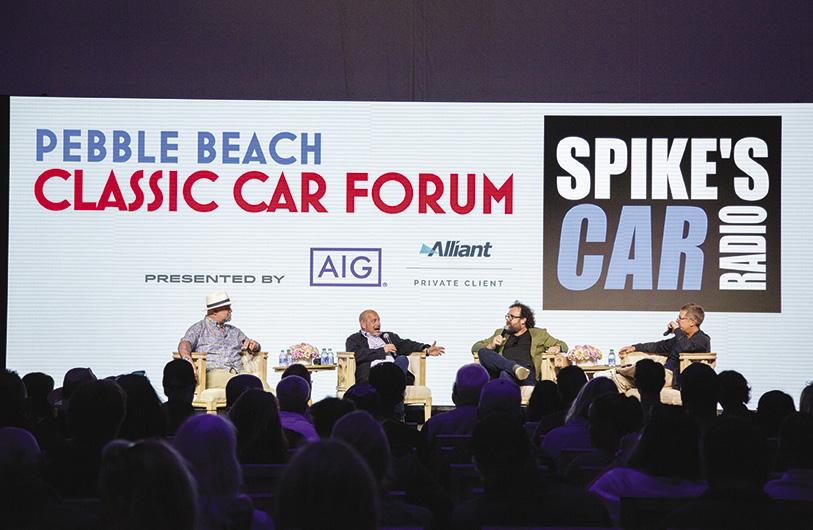
Dates: Thursday, August 17 through Saturday, August 19
Location: Concours Village near the Pebble Beach Golf Academy
Reservations highly recommended; most Forum sessions do sell out. Most of our Forum sessions are open to the public; all require reservations and most include a small fee. For further information and to reserve your seats, please visit pebblebeachconcours.net/forum.
d’Elegance INSIDER 101
Pebble Beach Concours
THE MAKING of A JUDGE
It was J. B. Nethercutt who introduced me to the judging process. He was a born teacher and I was most fortunate to be taken under his wing—and I still recall the moment when I first became cognizant of what it means to be a judge.
I was following J. B. around The Inn at Buck Hill Falls, where the Classic Car Club of America held its winter meetings for many, many years. The Inn was this enormous hotel in the Pocono Mountains of Pennsylvania, and it had a steam-heated garage where everyone would park their cars. (Yes, it was a little dim and dark—but the month was January and the garage was warm!)
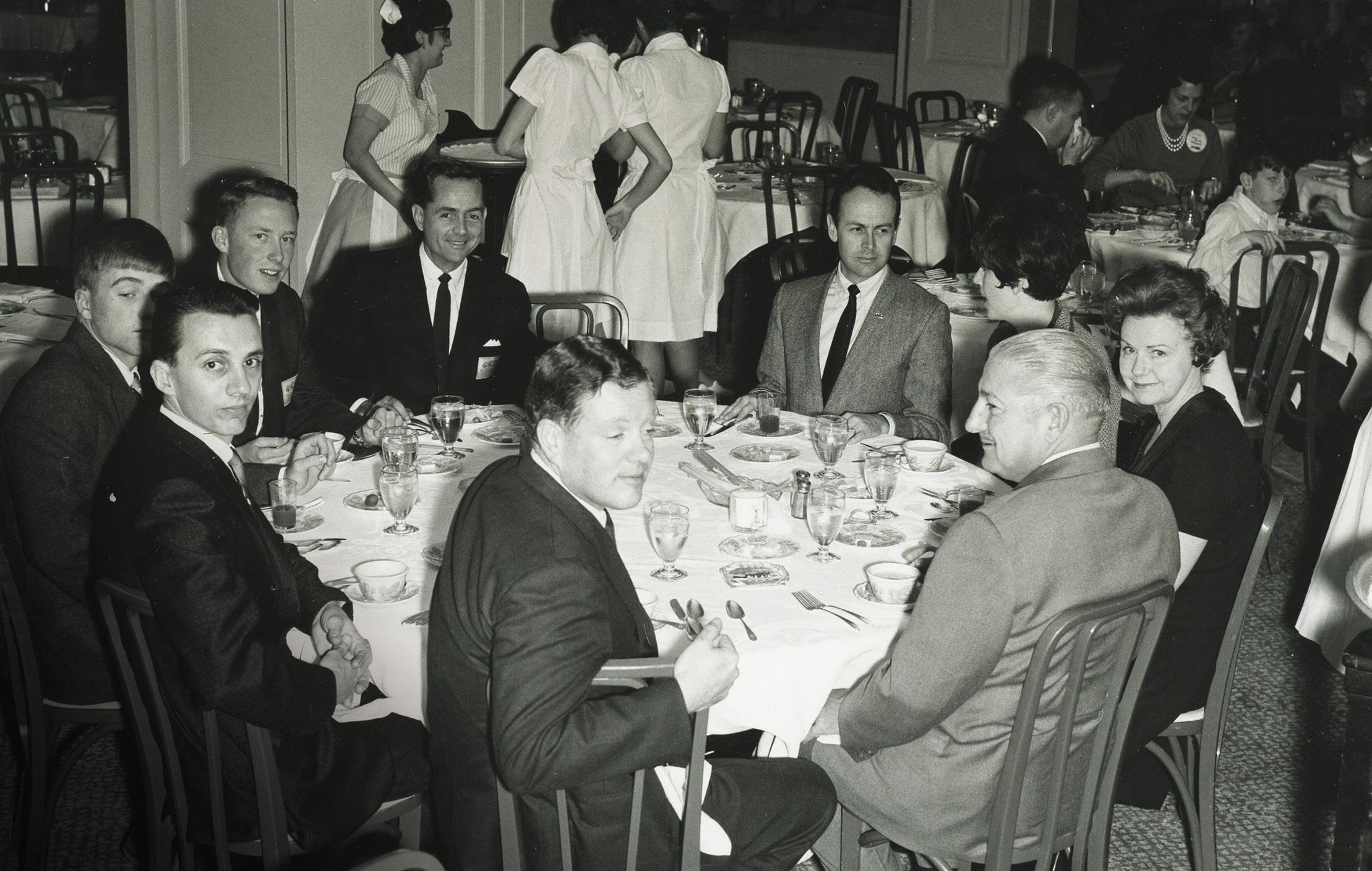
A bunch of us from California would go to this meeting— Phil Hill, Roger Morrison, Gordon Maynard and myself, along with J. B. and Dorothy, who always made it a point to drive their cars cross-country to the event no matter the weather.
Once there, J. B. would wind his way through the garage, looking at the cars, pointing things out and asking questions, and many of us would follow along. For some
reason, I specifically remember him pointing to the beltline trim on the hood of two Duesenbergs parked side-by-side and asking why they were different: Why was one hood beltline straight, while the other did a little kick scallop as it made its way back from the radiator?
I hadn’t even noticed the difference! But in that moment, I recognized that was exactly the type of thing a judge had to notice—and know. (The beltlines differed because the cars had different coachbuilders.)
J. B. served for years as the CCCA’s Chief Judge on the West Coast, and he devised this wonderful training tool where he would provide his judges with a statistical analysis of their judging scores after each event—so they could see where they were being perhaps too harsh or too easy compared to other judges. When he brought me on as a CCCA judge, I benefited from this.
Young judges can sometimes be a bit too harsh in trying to prove their expertise, and that was certainly true of me. On one occasion early on, I was assigned to judge a Phantom
Musings from Our Chief Judge
CHRIS BOCK
Amidst a CCCA meet at Buck Hill Falls, J. B. and Dorothy Nethercutt (lower right) host a dinner with then-young enthusiasts (clockwise from J. B.): Gordon Maynard, Roger Morrison, Craig Steele, Chris Bock, Phil Hill, and Tony and Dawn Heinsbergen.
102 Pebble Beach Concours d’Elegance INSIDER
III Limousine that seemed to me to be a rather tired car. (This was before the push for preservation where we have learned the value in letting some things be.) The judging form allowed us to award up to five points for plating, but the plating was all worn out and pitted, so I gave it zero points. J. B. later came to find me, saying he was “curious” to know the thinking behind that zero. And in response to my explanation, he gently asked, “Well, was the plating all there? Was it doing its job?” He let the zero stand, but I knew he disagreed with it.
Over time I became more kind.
I also learned to listen carefully—to both the owner and the car itself.
A long while back I was judging at the now-defunct Silverado Concours when Ken Vaughn presented a 1934 Packard with a Derham body that was perfectly pure. The car had been a basket case, but Ken had restored it, and the restoration wasn’t overdone, it was exactly right—the
color, the trim, the technical details. It was no muss, no fuss. I stood there looking at it for a bit, and then I drew a line through all of the categories on my judging sheet and simply wrote “100 points.” The car “spoke to me”—and I don’t think I was alone in that. That’s probably why I use that phrase when speaking to our judges. I say, “Some cars speak to you, and you have to allow your gut to react to them. Don’t be so focused on the technical details that you fail to hear what a car is saying.”
We want judges who are guided by their expertise. We want them to know standards and tools and processes, and we want them to question whatever doesn’t match what they know. Much of the time they will need to hold firm in their expertise. But they must also be open to the possibility that some prototypes and show cars and one-offs won’t match what they know, and then they must be willing to learn more about that car.
I first attended the Pebble Beach Concours in 1963, was tapped to be a Class Judge in 1973, first served as a Chief
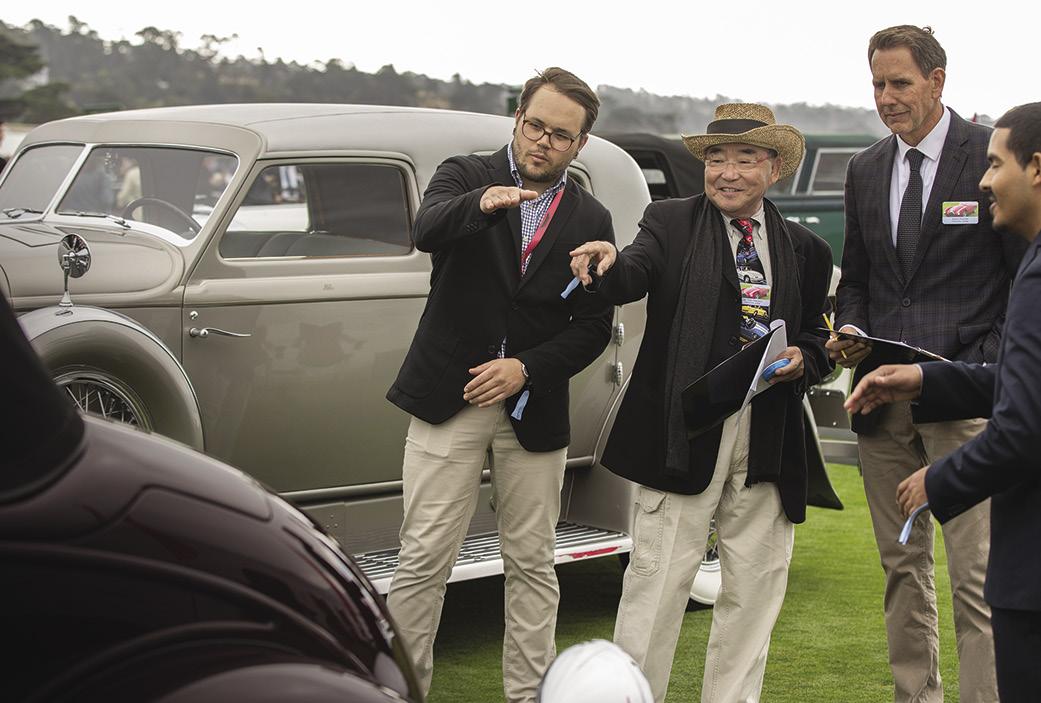


“Some cars speak to you, and you have to allow your gut to react to them. Don’t be so focused on the technical details that you fail to hear what a car is saying.” – CHRIS BOCK
Phil Hill Scholarship recipient and Academy of Art University student Mitchell Galik shadows Honorary Judge Tom Matano and team in 2018.
Below: Chris Bock provides instruction to his charges.
Pebble Beach Concours d’Elegance INSIDER 103
Class Judges Larry Eisner, Joshua Scherling, and Ben Erickson examine a Jaguar XK120 in 2022.
Musings from Our Chief Judge
Class Judge in 1983 and regularly beginning in 1995, and I was honored to be invited by Chairman Sandra Button to serve in the role of Chief Judge beginning in 2013.
Much has changed in my time.
The Pebble Beach Concours is a dynamic event, mirroring automotive tastes and passions as they evolve—and our judging process seeks to mirror these shifts.
Our judging process is still based on the two-tiered system first established by Jules “J.” Heumann and Lorin Tryon back in 1972, but we value originality and authenticity much more now. The preservation movement has played a role in this, providing us with benchmarks: cars that serve as true snapshots in time.
We’ve also made room for competition cars, allowing them to be restored to important moments in time. And we’ve found ways to recognize the historic importance of specific cars.
Perhaps most importantly, postwar cars now account for over half of the cars on our show field, and our pool of judges is changing to reflect this in terms of its expertise.
The Pebble Beach Concours now employs the talents of approximately 100 technical or Class Judges each August to evaluate the nearly 220 automobiles that take to the competition field. The method by which those 100 men and women are selected is a fascinating and complex process, somewhat akin to piecing together a jigsaw puzzle.

We draw from both a cadre of judges who have shared their expertise with the Concours for years, sometimes decades, as well as a vast pool of new talent which exists in the greater reaches of the collector car world. A perfect balance of senior experience and new knowledge is what we seek for each of our three-person judging teams.

In recent years we’ve also established a formal system whereby enthusiasts with strong expertise and the potential to become great judges can shadow a class judging team as observers to watch and learn how our Judges work—just as I did with J. B. Nethercutt so many years ago. Several past observers now serve among our Judges.
Often included as observers are some of our scholarship students from McPherson College and Academy of Art University—two institutions dedicated to educating the next generation of passionate automobile enthusiasts and craftspeople. It is our hope that this experience will help these students better understand where their own efforts to design, restore or document great cars might lead—and to implant the possible goal of serving as a Judge in the future.
So, the annual jigsaw puzzle of judges has been completed for 2023. Several fresh faces bring new expertise to our teams, while being guided by more senior Judges who share their experience. A more inclusive mix of folks, young and old, male and female, will assemble in our Judges Room on Concours Sunday to tackle the big job of bringing the right cars over the Awards Ramp on Sunday afternoon.
CHRIS BOCK
Above Left: Dolores Tryon presents Chris Bock with the 2003 Lorin Tryon Trophy for service to the Pebble Beach Concours and the collector car community.
104 Pebble Beach Concours d’Elegance INSIDER
Above Right: Class Judges Knox Kershaw and Diane Brandon, two of our longest serving judges, at work in 2018.
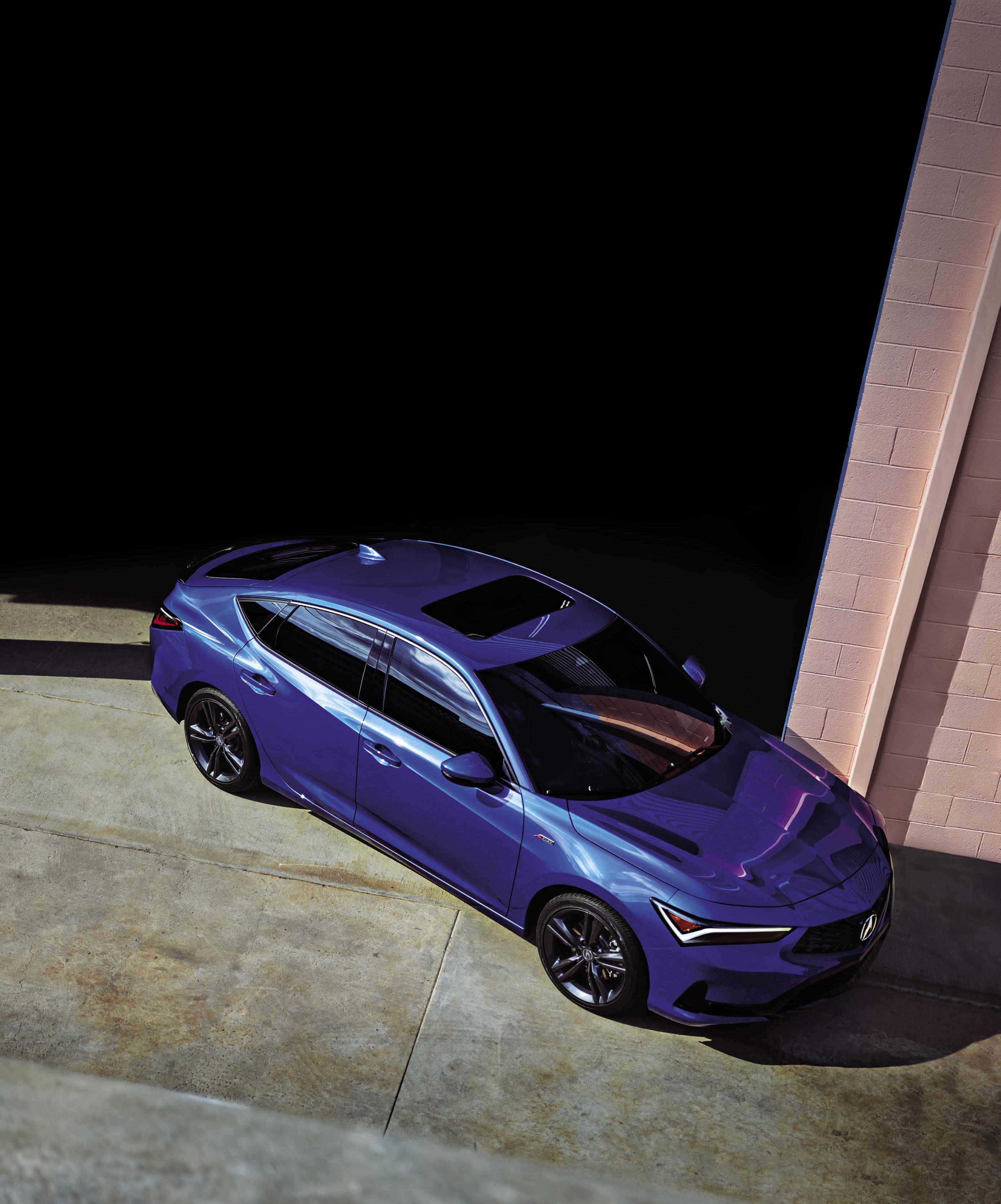


Integra A-Spec® with Technology Package shown. ©2023 Acura. Acura,
A-Spec,
Performance,
the
Integra,
Precision Crafted
and
stylized “A” logo are registered trademarks of Honda Motor Co., Ltd.
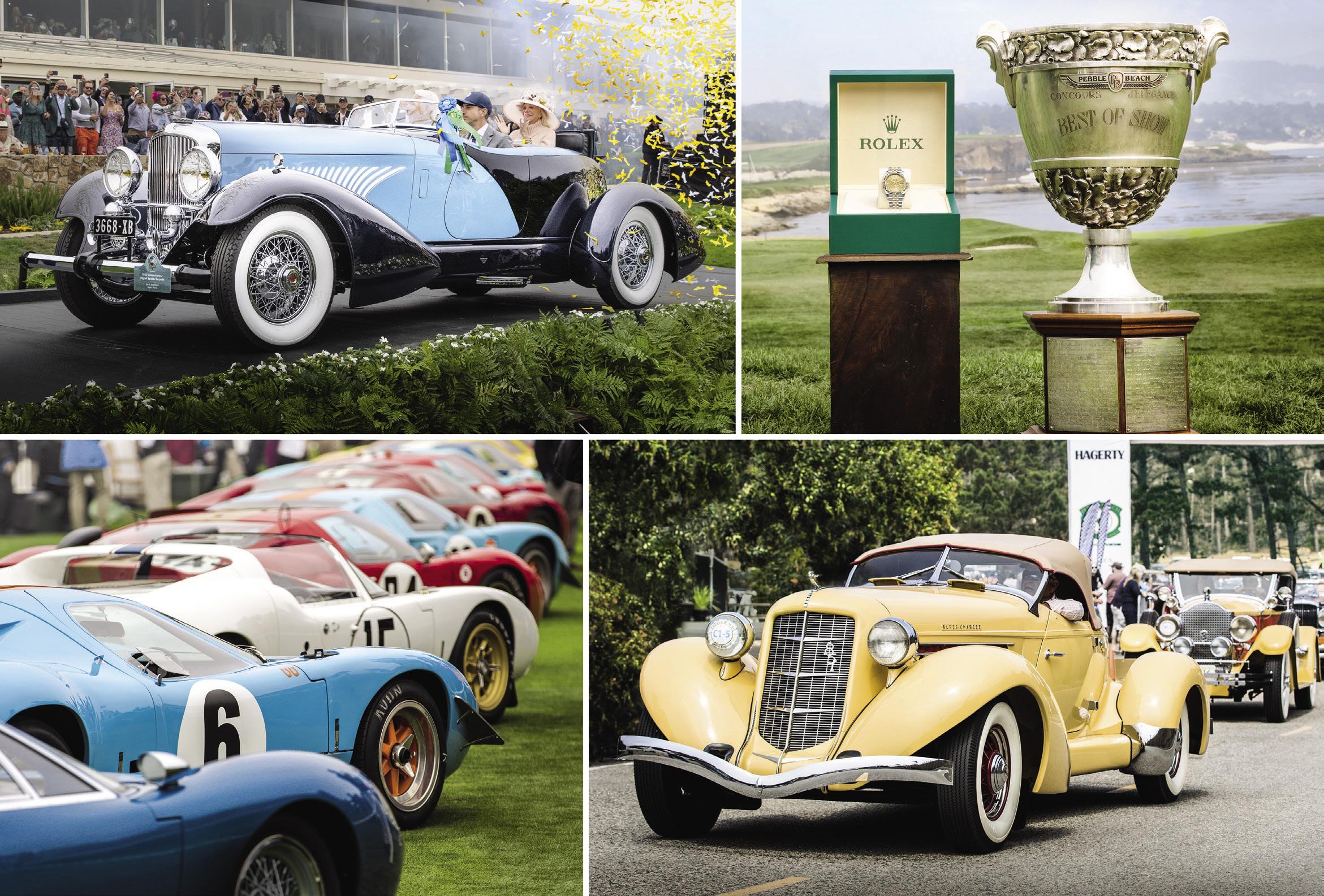
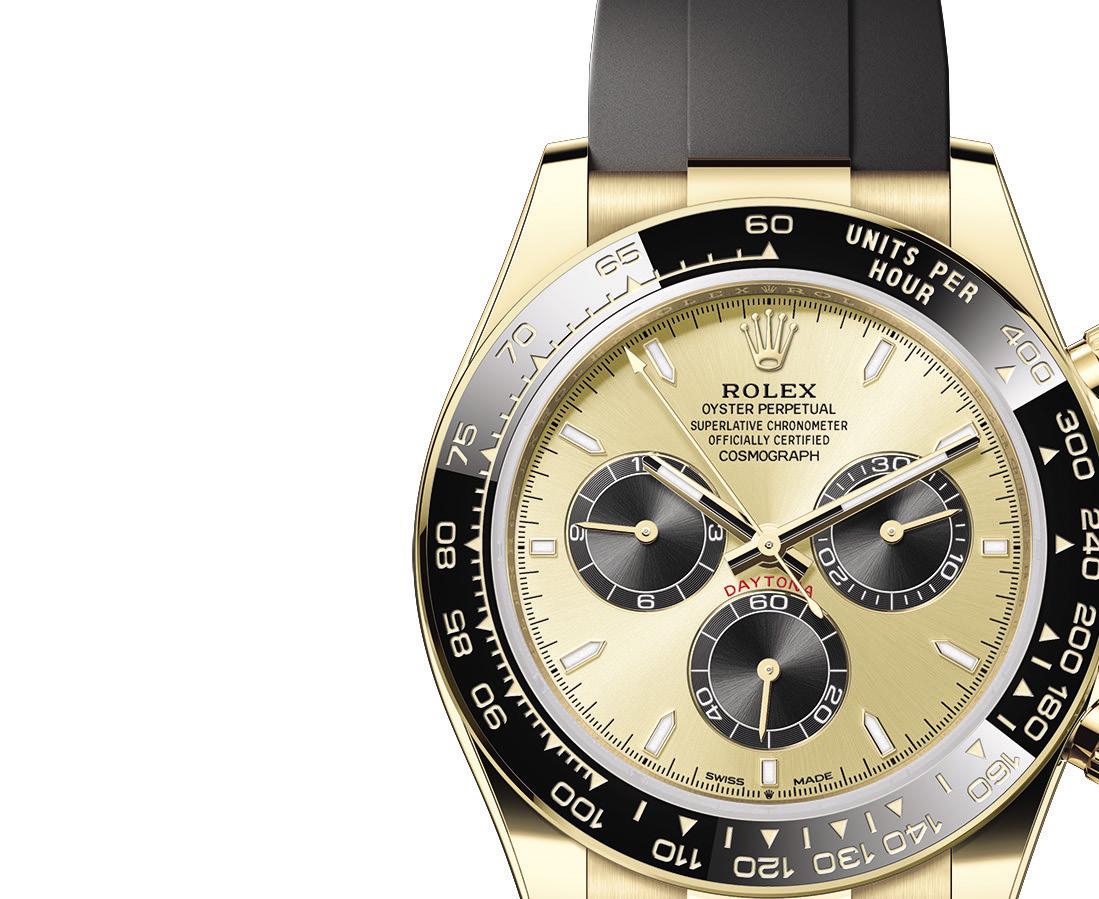

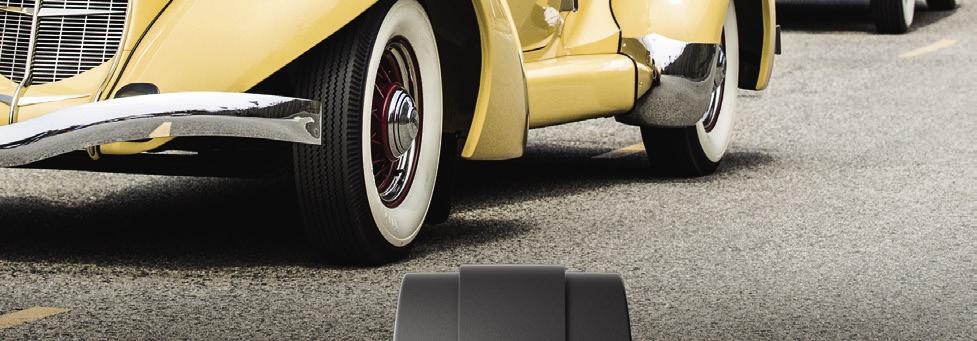


































 Pebble Beach,® Pebble Beach Concours d’Elegance,® Pebble Beach Concours d’Elegance® logo are trademarks and service marks of Pebble Beach Company. Used by permission. ©2023 Meguiar’s Inc.
Pebble Beach,® Pebble Beach Concours d’Elegance,® Pebble Beach Concours d’Elegance® logo are trademarks and service marks of Pebble Beach Company. Used by permission. ©2023 Meguiar’s Inc.














 GORDON MURRAY AS DESIGNER, ENGINEER, RACER . . . AND ALMOST ROCK STAR!
Professor Gordon Murray CBE (Commander of the Order of the British Empire) stands amidst some of his creations.
GORDON MURRAY AS DESIGNER, ENGINEER, RACER . . . AND ALMOST ROCK STAR!
Professor Gordon Murray CBE (Commander of the Order of the British Empire) stands amidst some of his creations.
 By Kate Constantin
By Kate Constantin

 Gordon Murray Automotive introduced the new T.50 in 2021.
Gordon Murray Automotive introduced the new T.50 in 2021.



 Gordon (right) poses with his 1980s rock band.
Gordon talks with Carlos Reutemann in the Brabham BT45 at the Grand Prix of Spain in 1976.
Gordon (right) poses with his 1980s rock band.
Gordon talks with Carlos Reutemann in the Brabham BT45 at the Grand Prix of Spain in 1976.

 GORDON MURRAY
GORDON MURRAY







 The Del Monte Cup
The Del Monte Cup


 Above Right: An overview of Del Monte’s mile-long oval, said to be the best track in California when built in 1895.
Right: A Stevens Duryea traverses the scenic grounds at Hotel Del Monte, built on 126 acres of forest land—with 5,000 acres in reserve nearby for parks and drives. Note the precaution of carrying multiple spare tires.
Above Right: An overview of Del Monte’s mile-long oval, said to be the best track in California when built in 1895.
Right: A Stevens Duryea traverses the scenic grounds at Hotel Del Monte, built on 126 acres of forest land—with 5,000 acres in reserve nearby for parks and drives. Note the precaution of carrying multiple spare tires.



 Many spectators parked trackside to watch the early Del Monte Cup races. Grandstands also lined a portion of the track.
Many spectators parked trackside to watch the early Del Monte Cup races. Grandstands also lined a portion of the track.


 Left: A colorized postcard features three carloads of visitors–in a Rambler, a Buick, and another car–at the Pacific Grove gate of 17-Mile Drive, which became a toll road in 1901.
Below: A Touring car traverses a scenic road overlooking Monterey Bay.
Left: A colorized postcard features three carloads of visitors–in a Rambler, a Buick, and another car–at the Pacific Grove gate of 17-Mile Drive, which became a toll road in 1901.
Below: A Touring car traverses a scenic road overlooking Monterey Bay.






 1967 Ferrari 275 GTB/4 by Scaglietti
Formerly Owned by Steve McQueen
1967 Ferrari 275 GTB/4 by Scaglietti
Formerly Owned by Steve McQueen


 Ovidio Falaschi and Joseph Figoni with his 8-year-old son Claude holding an event banner at the 1936 Concours d’Elegance de l’Auto in the Bois de Boulogne in Paris. They stand beside the magnificent Delage D6-70 Coupé chassis 50688 that raced at Le Mans the following year. The men behind the car are not identified.
Ovidio Falaschi and Joseph Figoni with his 8-year-old son Claude holding an event banner at the 1936 Concours d’Elegance de l’Auto in the Bois de Boulogne in Paris. They stand beside the magnificent Delage D6-70 Coupé chassis 50688 that raced at Le Mans the following year. The men behind the car are not identified.



 Above: Joseph Figoni (middle) celebrates the 1933 Le Mans win of the Alfa Romeo 8C 2300 (chassis 2211109), which he bodied, with drivers Tazio Nuvolari (left) and Raymond Sommer (right).
Left: This Figoni-bodied 8-cylinder Ballot was displayed at the 1927 Paris Salon de l’Automobile.
Right: Figoni et Falaschi showcased this striking 1936 Delahaye Roadster, built on a Compétition Court chassis (47247), at the 1936 Paris Salon. Its sensuous lines and enclosed fenders were the talk of not only Paris but the world.
Above: Joseph Figoni (middle) celebrates the 1933 Le Mans win of the Alfa Romeo 8C 2300 (chassis 2211109), which he bodied, with drivers Tazio Nuvolari (left) and Raymond Sommer (right).
Left: This Figoni-bodied 8-cylinder Ballot was displayed at the 1927 Paris Salon de l’Automobile.
Right: Figoni et Falaschi showcased this striking 1936 Delahaye Roadster, built on a Compétition Court chassis (47247), at the 1936 Paris Salon. Its sensuous lines and enclosed fenders were the talk of not only Paris but the world.






 Famed entertainer La Môme Moineau poses on the door of her 1939 Delahaye 135 Cabriolet (chassis 60173), competing at a June 1939 concours in the Bois de Boulogne.
A 1938 Talbot-Lago T150-CSS Roadster (chassis 90111), one of two and the only existing complete car, takes to the road in Nice soon after its initial delivery.
Famed entertainer La Môme Moineau poses on the door of her 1939 Delahaye 135 Cabriolet (chassis 60173), competing at a June 1939 concours in the Bois de Boulogne.
A 1938 Talbot-Lago T150-CSS Roadster (chassis 90111), one of two and the only existing complete car, takes to the road in Nice soon after its initial delivery.



 A 1923 Rolls-Royce Silver Ghost destined for Pebble Beach is initially disassembled and documented before restoration work begins.
A 1923 Rolls-Royce Silver Ghost destined for Pebble Beach is initially disassembled and documented before restoration work begins.


 Travis LaVine and Jason Stoller are leading the path to the future, utilizing computers, CNC machines and 3D printers.
Vivian and Eric LaVine founded their restoration business 48 years ago, after salvaging their own tattered Triumph.
Travis LaVine and Jason Stoller are leading the path to the future, utilizing computers, CNC machines and 3D printers.
Vivian and Eric LaVine founded their restoration business 48 years ago, after salvaging their own tattered Triumph.













 Sandra and Martin Button enjoyed the luxury of driving an air-conditioned Mercedes-Benz 280 SE 3.5 convertible as they navigated the route of the 1000 Miglia Experience UAE.
Sandra and Martin Button enjoyed the luxury of driving an air-conditioned Mercedes-Benz 280 SE 3.5 convertible as they navigated the route of the 1000 Miglia Experience UAE.









 Right: Sandra and Martin take in the sights.
Right: Sandra and Martin take in the sights.




 Much of the Emirates is a desert, but it is far from flat!
The Emirate of Fujairah borders the Gulf of Oman, which is rich in coral and rock formations.
Much of the Emirates is a desert, but it is far from flat!
The Emirate of Fujairah borders the Gulf of Oman, which is rich in coral and rock formations.








 Christian Malorny and Oliver Herbolzheimer received accolades as heroes for completing the whole of the rally sitting bobsled-style in their 1958 Messerschmitt.
Christian Malorny and Oliver Herbolzheimer received accolades as heroes for completing the whole of the rally sitting bobsled-style in their 1958 Messerschmitt.

 BY KANDACE HAWKINSON WITH WINSTON GOODFELLOW
BY KANDACE HAWKINSON WITH WINSTON GOODFELLOW

 Steven Read’s 1964 Ferrari 512 M takes to the road.
Steven Read’s 1964 Ferrari 512 M takes to the road.





































 Mitch McCullough proudly shares his 1964 Alpine M64 Coupé.
Mitch McCullough proudly shares his 1964 Alpine M64 Coupé.





 A young enthusiast eyes the 1936 Bugatti Type 57 Gangloff Stelvio of Olav Glasius.
Tastemakers Kyle Bazemore and Brandon Blair.
Michael Leventhal is a match to his 1956 Ferrari 250 GT LWB Scaglietti Berlinetta.
Eric Schigiel shows off the 1954 Alfa Romeo he shares with Lisa.
Below Left: It’s easy to spot the ever-captivating Margie Danz, known for her fascinators. Below Right: These two charmers are always among the most elegant people on our field.
A young enthusiast eyes the 1936 Bugatti Type 57 Gangloff Stelvio of Olav Glasius.
Tastemakers Kyle Bazemore and Brandon Blair.
Michael Leventhal is a match to his 1956 Ferrari 250 GT LWB Scaglietti Berlinetta.
Eric Schigiel shows off the 1954 Alfa Romeo he shares with Lisa.
Below Left: It’s easy to spot the ever-captivating Margie Danz, known for her fascinators. Below Right: These two charmers are always among the most elegant people on our field.



 Above: The Keller Collection’s demure Graber-bodied 1932 Alfa Romeo 8C 2300 Cabriolet drew many a passerby.
Above: The Keller Collection’s demure Graber-bodied 1932 Alfa Romeo 8C 2300 Cabriolet drew many a passerby.

































